AI bản quyền
View All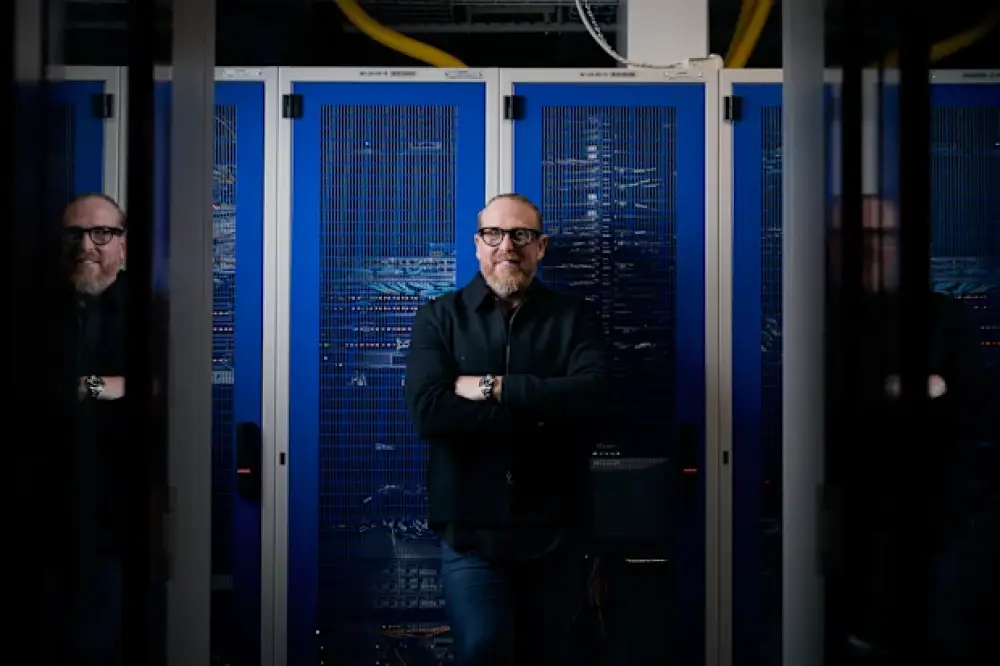
-
Craig Scroggie, CEO NextDC (tập đoàn trung tâm dữ liệu lớn nhất Úc), cho rằng thay đổi luật bản quyền để hỗ trợ AI có thể thu hút thêm hàng tỷ USD đầu tư từ Microsoft và Google.
-
Ông nhấn mạnh: “Nếu luật bản quyền rõ ràng, đặc biệt về text và data mining, sẽ mở khóa một làn sóng nhu cầu mới trong đào tạo AI và thúc đẩy xây dựng hạ tầng kỹ thuật số.”
-
Microsoft và Google trong báo cáo gửi chính phủ đều khẳng định sẵn sàng “đầu tư thêm hàng tỷ USD” nếu có sự chắc chắn về luật bản quyền.
-
Microsoft đề xuất sửa đổi Đạo luật Bản quyền để cho phép huấn luyện mô hình AI (như ChatGPT) và bảo vệ bản quyền cho sản phẩm do AI tạo ra.
-
Google cảnh báo “innovation chill” – sự ngưng trệ đổi mới – do thiếu quy định về text/data mining và mơ hồ trong thuế trung tâm dữ liệu.
-
Tại Economic Reform Roundtable, Scott Farquhar (Atlassian, Tech Council of Australia) đề xuất nới lỏng luật để hỗ trợ startup AI và thu hút trung tâm dữ liệu quốc tế.
-
Đề xuất gây phản ứng mạnh từ truyền thông, ngành âm nhạc và một số chuyên gia AI, phản đối “ngoại lệ fair dealing” vì lo ngại xói mòn quyền lợi tác giả.
-
Bevan Slattery (người sáng lập NextDC) chỉ trích ngành công nghệ “đạo đức giả”, thách thức các công ty mở toàn bộ codebase của mình nếu muốn nới luật.
-
Một nhà điều hành trung tâm dữ liệu khác tiết lộ khách hàng lớn (big tech) lo sợ luật bản quyền Úc có thể làm tăng chi phí hoặc gánh nặng tuân thủ, dù chưa thấy rút vốn.
-
NextDC công bố báo cáo tài chính cả năm, cho thấy nhu cầu dịch vụ AI đẩy tăng lợi nhuận và cổ phiếu công ty bùng nổ.
-
Scroggie đề xuất giải pháp: mọi nội dung công khai nên được phép dùng cho huấn luyện AI, còn nội dung sau paywall thì cần cơ chế trả phí thỏa thuận với chủ bản quyền.
-
News Corp phản bác: “Đạo luật Bản quyền hiện tại đã bảo đảm quyền lợi ngành sáng tạo và không cần thay đổi.”
📌 Tranh luận về luật bản quyền đang trở thành tâm điểm trong chiến lược AI tại Úc. NextDC khẳng định chỉ cần sửa đổi nhỏ cũng có thể hút thêm hàng tỷ USD từ Microsoft và Google cho trung tâm dữ liệu, trong khi Google cảnh báo nguy cơ “innovation chill” nghĩa là sự đổi mới bị kìm hãm hoặc chậm lại do môi trường pháp lý. Tuy nhiên, ngành truyền thông và âm nhạc phản đối gay gắt, cho rằng khung pháp lý hiện tại đã đủ bảo vệ quyền lợi tác giả. Kết quả cải cách sẽ quyết định liệu Úc có trở thành điểm đến hàng đầu cho đầu tư AI toàn cầu.
https://www.afr.com/technology/copyright-reform-would-unleash-billions-in-ai-investment-nextdc-20250901-p5mrc4
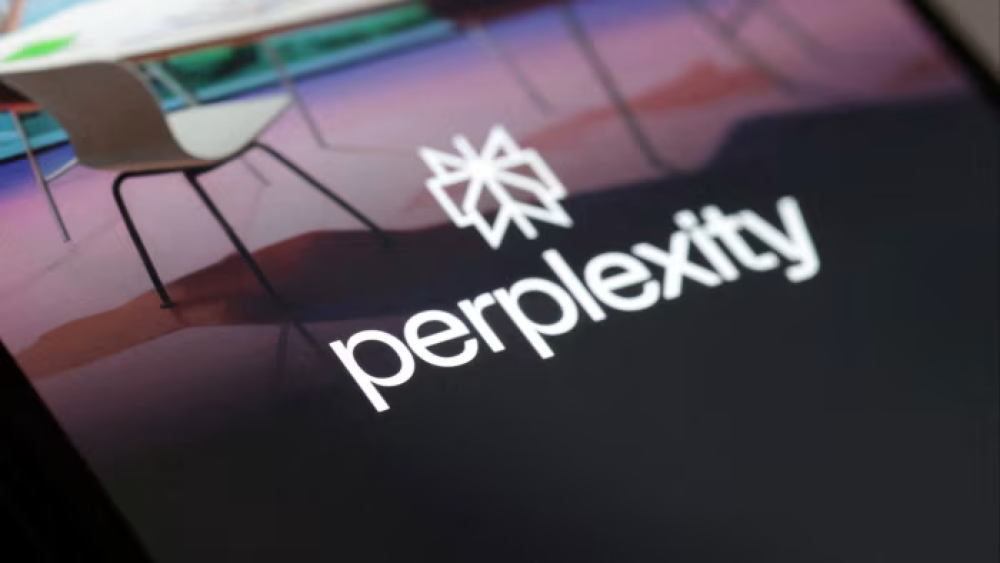
-
Hai tập đoàn báo chí lớn của Nhật Bản, Nikkei (chủ sở hữu Financial Times) và Asahi Shimbun, đã đệ đơn kiện công cụ tìm kiếm AI Perplexity tại Tokyo với cáo buộc vi phạm bản quyền.
-
Cả hai cho rằng Perplexity đã “sao chép và lưu trữ nội dung bài báo từ máy chủ của Nikkei và Asahi mà không được phép”, đồng thời bỏ qua các biện pháp kỹ thuật ngăn chặn.
-
Các nhà xuất bản khẳng định nội dung do Perplexity trả lời nhiều khi sai lệch, nhưng lại trích dẫn báo của họ, làm tổn hại nghiêm trọng đến uy tín và độ tin cậy của báo chí.
-
Nikkei và Asahi yêu cầu Perplexity phải bồi thường 2,2 tỷ yên (15 triệu USD) mỗi bên và xóa toàn bộ nội dung bị sao chép.
-
Nikkei nhấn mạnh hành động này là “ký sinh quy mô lớn” trên công sức của các nhà báo mà không trả bất kỳ khoản thù lao nào, đe dọa nền tảng của báo chí vốn dựa trên truyền tải sự thật chính xác.
-
Trước đó, Yomiuri – một tờ báo lớn khác ở Nhật – cũng đã khởi kiện Perplexity, cho thấy báo chí Nhật đang đồng loạt phản ứng trước việc AI khai thác nội dung.
-
Luật sư Kensaku Fukui cho biết luật bản quyền Nhật có một số điều khoản cho phép dùng tác phẩm có bản quyền để huấn luyện AI, nhưng cũng tồn tại giới hạn. Các vụ kiện hiện nay được coi là “test cases” để làm rõ ranh giới pháp lý.
-
Ở Mỹ và châu Âu, nhiều nhà xuất bản như Dow Jones, New York Post, BBC, New York Times và Condé Nast đã có động thái pháp lý hoặc yêu cầu Perplexity ngừng khai thác nội dung.
-
BBC đã gửi thư “cease and desist” yêu cầu Perplexity dừng dùng bài báo để huấn luyện AI, tương tự nhiều cơ quan báo chí phương Tây.
-
Dù bị kiện, Perplexity vẫn đang mở rộng quan hệ thương mại: đã ký thỏa thuận chia sẻ doanh thu với Time, Fortune và Der Spiegel, theo đó họ nhận phí khi nội dung được tham chiếu.
-
Perplexity hiện có hơn 30 triệu người dùng, phần lớn ở Mỹ, và nguồn thu chủ yếu từ gói đăng ký trả phí.
📌 Nikkei và Asahi Shimbun kiện Perplexity tại Tokyo, đòi 2,2 tỷ yên (15 triệu USD) mỗi bên vì sao chép và lưu trữ nội dung bài báo trái phép. Vụ kiện phản ánh lo ngại về việc AI làm sai lệch thông tin, làm suy yếu niềm tin báo chí. Trước đó, Yomiuri, BBC, New York Times và nhiều tờ báo lớn khác cũng đã có động thái tương tự. Dù vướng kiện, Perplexity vẫn có hơn 30 triệu người dùng và hợp tác chia sẻ doanh thu với Time, Fortune, Der Spiegel.
https://www.ft.com/content/79a88d1a-d914-4188-8792-0a20973b39a1
Japanese media groups sue AI search engine Perplexity over alleged copyright infringement
The publishers say the company illegally ‘copied and stored article content’
The Perplexity AI logo displayed on a screen
A number of media companies have taken legal action against Perplexity © REUTERS
David Keohane in Tokyo and Daniel Thomas in London
Two of Japan’s largest media groups are suing artificial intelligence search engine Perplexity over alleged copyright infringement, joining a growing list of news publishers taking legal action against AI companies using their content.
Japanese media group Nikkei, which owns the Financial Times, and the Asahi Shimbun newspaper said in statements on Tuesday that they had jointly filed a lawsuit in Tokyo.
The groups join a number of Western media companies taking legal action against Perplexity, which provides answers to questions with sources and citations, using large language models (LLMs) from platforms such as OpenAI and Anthropic.
The Japanese news providers claim Perplexity has, without permission, “copied and stored article content from the servers of Nikkei and Asahi” and ignored a “technical measure” designed to prevent this from happening.
They claim that Perplexity’s answers have given incorrect information attributed to the newspapers’ articles, which “severely damages the credibility of newspaper companies”.
Nikkei and the Asahi are asking for damages of ¥2.2bn ($15mn) each and that Perplexity delete the stored articles.
“Perplexity’s actions amount to large-scale, ongoing ‘free riding’ on article content that journalists from both companies have spent immense time and effort to research and write, while Perplexity pays no compensation,” said Nikkei in its statement.
“If left unchecked, this situation could undermine the foundation of journalism, which is committed to conveying facts accurately,” the two companies added.
Perplexity did not immediately respond to a request for comment.
The lawsuits follow a similar move by another large Japanese newspaper, the Yomiuri, and signal that publishers in the country are starting to push back against AI groups, said lawyers.
“These are test cases,” said Kensaku Fukui, an expert in copyright law at law firm Kotto Dori in Tokyo.
Fukui said that while Japan’s “copyright law is in some ways permissive for AI training for existing copyrighted works . . . there are some restrictions”.
Recommended
Meta Platforms
Meta lawsuit poses first big test of AI copyright battle
Mark Zuckerberg, books, Meta logo
Rupert Murdoch’s Dow Jones and the New York Post have claimed that Perplexity is diverting customers and revenues away from news publishers by using their content to answer questions on its platform via its chatbot, rather than paying or directing readers to their websites.
The BBC this summer also demanded that Perplexity stop using its content to train its AI model in a “cease and desist” letter, similar to those sent previously by other outlets, including the New York Times and Condé Nast.
Perplexity has introduced revenue-sharing agreements with publishers including Time, Fortune and Der Spiegel, which will pay out when an answer references their work, reflecting a shift in how AI start-ups are increasingly seeking commercial partnerships and licensing agreements with publishers.
Perplexity has more than 30mn users, with the majority based in the US. Its primary source of revenue is from subscriptions.
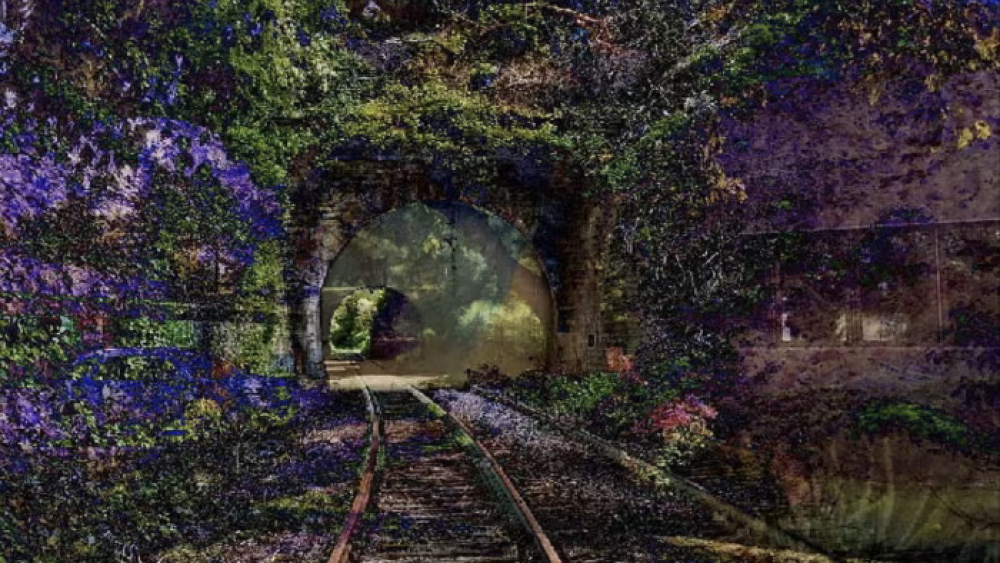
-
AI tạo sinh đang đặt ra hai thách thức bản quyền: (1) bồi thường cho dữ liệu huấn luyện mô hình và (2) quyền sở hữu đối với sản phẩm do AI tạo ra.
-
Tại Mỹ, các tòa án và Cục Bản quyền đã khẳng định chỉ bảo vệ nội dung do con người tạo ra. Tác phẩm "A Recent Entrance to Paradise" bị từ chối bảo vệ vì không có tác giả là con người.
-
Trong trường hợp khác, truyện tranh "Zarya of the Dawn" được bảo hộ phần chữ do con người viết, còn hình ảnh AI tạo thì không được chấp nhận.
-
Trung Quốc đi ngược xu hướng này. Năm 2023, Tòa án Internet Bắc Kinh ra phán quyết công nhận quyền tác giả với hình ảnh do AI tạo ra, nếu người dùng đã đầu tư sáng tạo vào prompt và chỉnh sửa kết quả.
-
Anh và Ireland áp dụng định nghĩa “tác phẩm do máy tính tạo” được bảo hộ, nhưng đang xem xét rút lại quy định này do thiếu rõ ràng pháp lý và áp lực từ cộng đồng sáng tạo.
-
Sự khác biệt giữa các hệ thống pháp lý khiến doanh nghiệp gặp rủi ro: cùng một tác phẩm AI có thể được bảo vệ tại Bắc Kinh nhưng rơi vào phạm vi công cộng tại Boston.
-
Phần mềm là ví dụ điển hình: đoạn mã do AI viết có thể không được bảo hộ ở Mỹ, dù sản phẩm phần mềm tổng thể thì có. Điều này ảnh hưởng đến giao dịch doanh nghiệp liên quan đến quyền sở hữu trí tuệ.
-
Các hợp đồng hiện tại (với nhân viên và đối tác) thường có điều khoản chuyển nhượng bản quyền, nhưng nếu nội dung không được bảo vệ thì không thể chuyển nhượng.
-
Việc cấm hoàn toàn sử dụng AI là phi thực tế; thay vào đó, luật sư nên xây dựng hợp đồng mới, bảo vệ đầu ra AI thông qua bí mật thương mại và bảo mật thông tin.
-
Hội đồng AI Ireland đề xuất chính phủ xây dựng hình thức bảo hộ IP giới hạn cho một số tác phẩm AI, nhưng bị giới sáng tạo phản đối mạnh mẽ.
-
Trong bối cảnh luật bản quyền lỗi thời, các vụ kiện như từ Getty Images và The New York Times tập trung vào việc khai thác dữ liệu huấn luyện, nhưng quyền sở hữu tác phẩm AI vẫn chưa được tòa án xét xử rộng rãi.
📌 Bản quyền tác phẩm AI đang gây tranh cãi toàn cầu: Mỹ từ chối bảo vệ nếu không có yếu tố con người, Trung Quốc công nhận nếu có đầu tư sáng tạo vào prompt, còn châu Âu thì mập mờ. Doanh nghiệp cần nhanh chóng điều chỉnh chiến lược sở hữu trí tuệ, ưu tiên bí mật thương mại thay vì trông chờ vào luật bản quyền truyền thống.
https://www.ft.com/content/74b1841f-bf57-4934-a06a-3611d61e4319
Who owns the copyright for AI work?
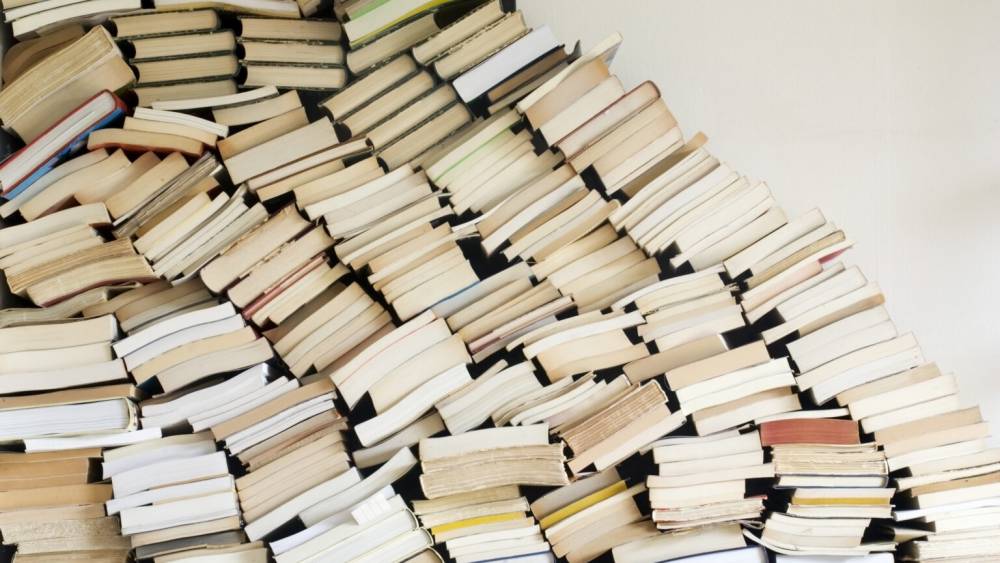
-
Các nhóm công nghệ kêu gọi tòa phúc thẩm chặn vụ kiện bản quyền tập thể lớn nhất từng có, liên quan đến huấn luyện AI của Anthropic, với tới 7 triệu nguyên đơn tiềm năng, mỗi trường hợp có thể bị phạt tới 150.000 USD.
-
Anthropic cảnh báo nếu vụ kiện tiến tới xét xử trong 4 tháng tới, công ty đối mặt nguy cơ bồi thường hàng trăm tỷ USD, buộc phải dàn xếp và tạo tiền lệ nguy hiểm cho toàn ngành AI.
-
Hiệp hội Công nghệ Tiêu dùng và Hiệp hội Máy tính & Truyền thông ủng hộ kháng cáo, cho rằng quyết định chứng nhận lớp của tòa sơ thẩm đe dọa năng lực cạnh tranh toàn cầu của AI Mỹ và sẽ làm nản lòng đầu tư.
-
Các nhóm bảo vệ tác giả như Authors Alliance, EFF, ALA, ARL, Public Knowledge cũng cảnh báo việc chứng minh quyền sở hữu tác phẩm là cực kỳ phức tạp, từng khiến Google Books tốn 34,5 triệu USD lập “Books Rights Registry”.
-
Lo ngại bao gồm: tác giả đã mất, nhà xuất bản phá sản, quyền sở hữu chia nhỏ, tác phẩm “mồ côi” không xác định được chủ sở hữu, và nguy cơ phải xử lý “hàng trăm phiên tòa nhỏ” để phân định quyền.
-
Nhiều tác giả có thể không biết vụ kiện để kịp “opt-out”, gây vấn đề về công bằng và quyền tố tụng.
-
Mối quan hệ căng thẳng giữa tác giả và nhà xuất bản về AI có thể khiến một bên muốn tham gia kiện, bên kia phản đối, làm phức tạp thêm.
-
Các nhóm cảnh báo vụ kiện này có thể trở thành “đòn kết liễu” (death knell) cho việc xác định tính hợp pháp của huấn luyện AI với tác phẩm có bản quyền, khi bị ép dàn xếp thay vì giải quyết triệt để về mặt pháp lý.
📌 Anthropic đang đối mặt vụ kiện bản quyền tập thể với 7 triệu nguyên đơn tiềm năng, rủi ro bồi thường hàng trăm tỷ USD. Các nhóm công nghệ và bảo vệ tác giả cảnh báo vụ kiện có thể phá sản ngành AI, tạo tiền lệ nguy hiểm và khiến tranh cãi pháp lý về huấn luyện AI với dữ liệu bản quyền rơi vào bế tắc.
https://arstechnica.com/tech-policy/2025/08/ai-industry-horrified-to-face-largest-copyright-class-action-ever-certified/
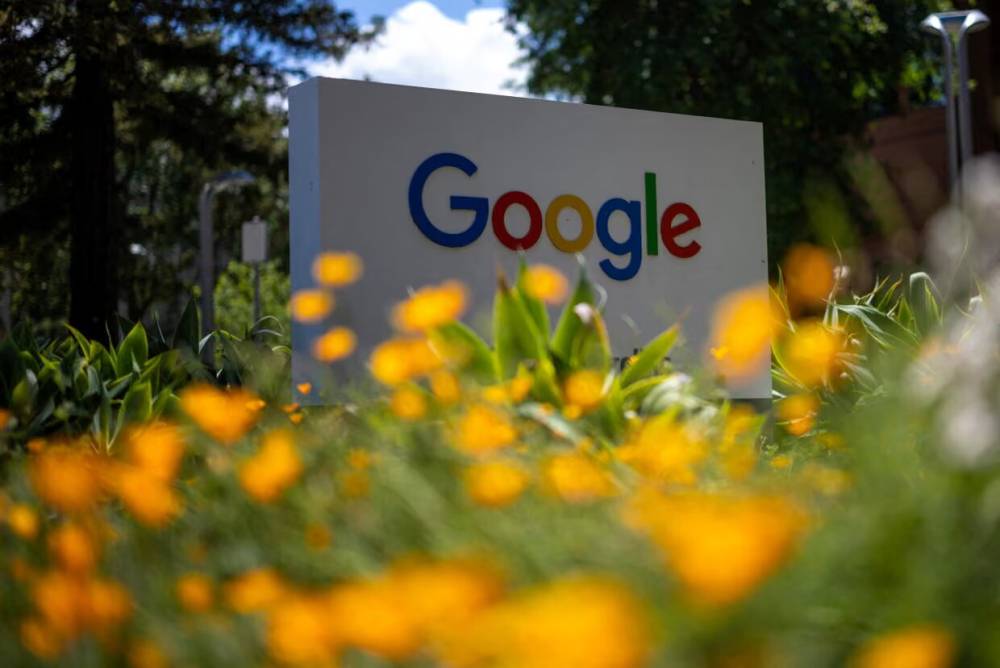
-
Các tập đoàn công nghệ lớn như Google, Amazon và Meta đang chi hàng trăm tỷ USD để mở rộng hạ tầng AI, đặc biệt là trung tâm dữ liệu và hệ thống siêu máy tính khổng lồ.
-
Riêng trong năm 2025, Google sẽ chi 85 tỷ USD cho AI và cloud (tăng 10 tỷ so với dự kiến ban đầu), trong khi Amazon chi tới 100 tỷ USD, phần lớn cũng đổ vào AI.
-
Meta dự kiến chi 64–72 tỷ USD trong năm 2025 và lên kế hoạch xây dựng mạng lưới trung tâm dữ liệu khổng lồ trên toàn nước Mỹ, hoạt động từ năm 2026.
-
Tuy nhiên, việc xây dựng trung tâm dữ liệu quy mô lớn đang gây ra áp lực lớn lên lưới điện, môi trường và nguồn tài nguyên tự nhiên, đặc biệt ở những khu vực lân cận cơ sở hạ tầng AI.
-
Trong khi đó, ngành sáng tạo đối mặt khủng hoảng. AI đang thay thế hàng loạt công việc của nghệ sĩ, chiến lược gia và nhà sáng tạo nội dung, dẫn đến sa thải và tranh chấp bản quyền.
-
CEO OpenAI Sam Altman tuyên bố: “95% công việc sáng tạo hiện nay sẽ được AI làm thay – gần như miễn phí.”
-
Hàng loạt nghệ sĩ, trong đó có Sarah Silverman và Ta-Nehisi Coates, đã kiện các công ty AI như OpenAI, Meta, Microsoft, Google vì sử dụng tác phẩm mà không xin phép, nhưng phần lớn các công ty AI đang thắng thế nhờ lập luận "sử dụng hợp lý" (fair use).
-
Adobe là công ty công nghệ hiếm hoi cố gắng cân bằng lợi ích khi giới thiệu Firefly AI – được huấn luyện từ dữ liệu có bản quyền và công khai – và công cụ Content Authenticity giúp nghệ sĩ “ký tên số” vào tác phẩm để bảo vệ quyền sở hữu.
-
Adobe tuyên bố không thu thập dữ liệu từ Internet mở vì nguy cơ vi phạm bản quyền. Họ tập trung vào sự minh bạch và khả năng xác minh nguồn gốc nội dung.
-
Theo Adobe, tương lai của sáng tạo số phải giống như “nhãn dinh dưỡng” cho nội dung – mọi người cần quyền được biết nội dung đến từ AI hay con người.
📌 Cuộc chạy đua AI của các “ông lớn” Google, Amazon và Meta đang tiêu tốn hàng trăm tỷ USD và gây ra hậu quả nghiêm trọng đến môi trường, hệ thống điện và ngành sáng tạo. Khi nghệ sĩ mất quyền kiểm soát tác phẩm, hàng loạt vụ kiện nổ ra. Trong khi đó, các công ty như Adobe chọn hướng đi minh bạch hơn, nhấn mạnh đạo đức và quyền của người sáng tạo trong thời đại AI.
https://www.theguardian.com/technology/2025/jul/28/techscape-ai-google-meta-amazon
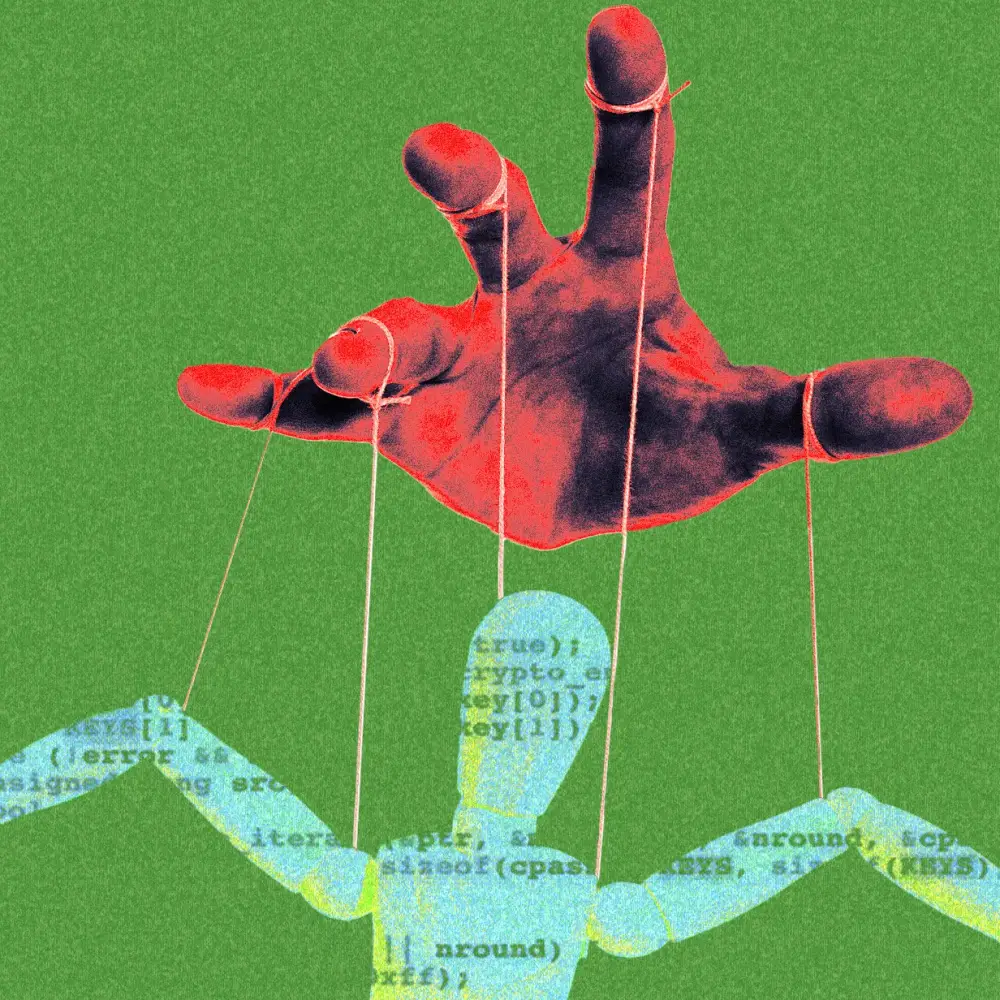
-
FlexOlmo là mô hình ngôn ngữ lớn mới do Allen Institute for AI (Ai2) phát triển, cho phép chủ dữ liệu rút dữ liệu khỏi mô hình ngay cả sau khi đã huấn luyện.
-
Mô hình này phá vỡ nguyên lý truyền thống rằng “dữ liệu đã dùng thì không thể gỡ”, bằng cách cho phép huấn luyện theo cách chia tách và hợp nhất các sub-model độc lập.
-
Cơ chế hoạt động dựa trên kiến trúc mixture of experts, cho phép kết hợp nhiều mô hình nhỏ, trong đó mỗi mô hình có thể được huấn luyện riêng biệt với dữ liệu riêng.
-
Người đóng góp dữ liệu sao chép một mô hình “anchor” công khai, huấn luyện với dữ liệu cá nhân, rồi gửi bản kết hợp thay vì phải chia sẻ dữ liệu thô.
-
Điều này giúp giữ quyền sở hữu dữ liệu, cho phép rút sub-model nếu có tranh chấp pháp lý hoặc không hài lòng với việc sử dụng mô hình cuối.
-
FlexOlmo không yêu cầu huấn luyện đồng bộ – việc đóng góp và huấn luyện có thể diễn ra hoàn toàn độc lập.
-
Ai2 đã thử nghiệm bằng cách xây dựng mô hình 37 tỷ tham số trên tập dữ liệu Flexmix, bao gồm sách và nội dung từ web độc quyền.
-
Mô hình này vượt trội so với từng mô hình riêng lẻ và tốt hơn 10% so với các phương pháp hợp nhất mô hình trước đó trên các benchmark phổ biến.
-
FlexOlmo còn giúp các công ty truy cập dữ liệu nhạy cảm mà không cần tiết lộ công khai, nhưng Ai2 cảnh báo vẫn có rủi ro khôi phục dữ liệu – cần đến các kỹ thuật như differential privacy.
-
Trong bối cảnh tranh cãi về quyền sở hữu dữ liệu huấn luyện AI ngày càng gay gắt, mô hình như FlexOlmo mở ra hướng đi mới cân bằng giữa tiến bộ công nghệ và quyền lợi dữ liệu.
📌 FlexOlmo mang đến một đột phá lớn trong lĩnh vực AI tạo sinh bằng cách cho phép các chủ sở hữu dữ liệu rút dữ liệu khỏi mô hình sau huấn luyện mà không cần retrain. Với 37 tỷ tham số và hiệu suất cao hơn 10% so với phương pháp cũ, mô hình này giúp cân bằng giữa phát triển AI và kiểm soát dữ liệu cá nhân, mở ra tương lai mới cho AI nguồn mở và hợp tác.
https://www.wired.com/story/flexolmo-ai-model-lets-data-owners-take-control/
A New Kind of AI Model Lets Data Owners Take Control
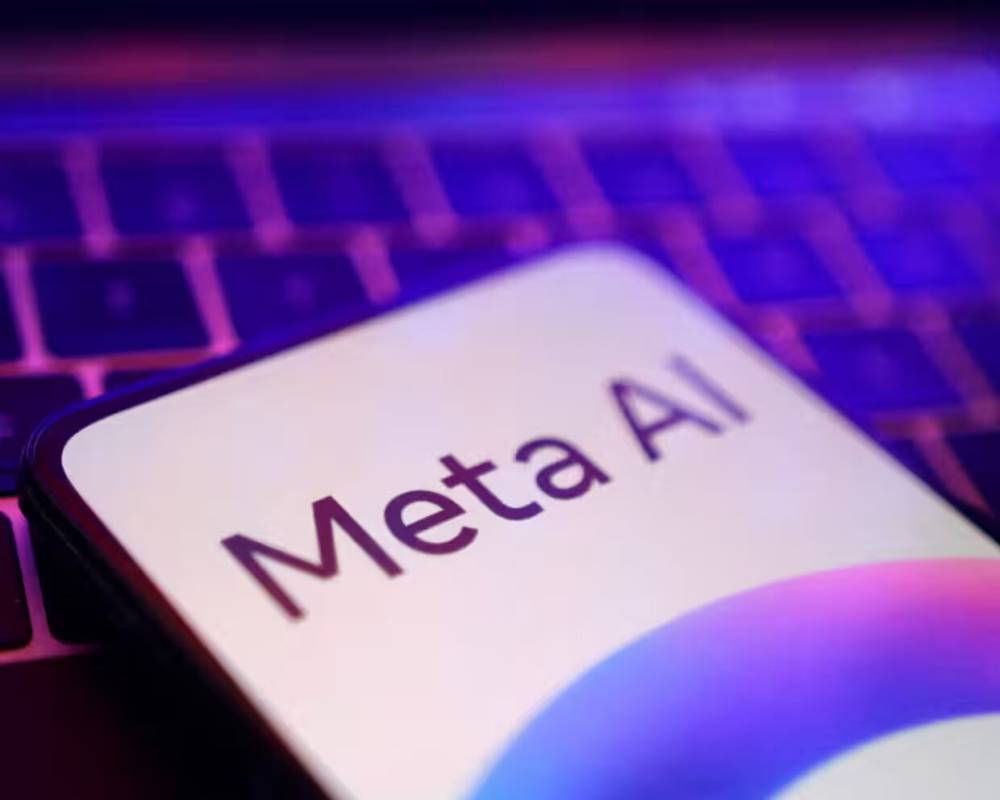
-
Các công ty công nghệ như Anthropic và Meta vừa giành được các chiến thắng pháp lý quan trọng trong cuộc chiến bản quyền xoay quanh việc sử dụng văn bản để huấn luyện AI.
-
Thẩm phán William Alsup so sánh hành động của Anthropic với "người đọc học viết", cho rằng việc AI đọc sách để huấn luyện không vi phạm bản quyền – dù công ty đã số hóa và hủy 7 triệu quyển sách sau khi quét nội dung từ bản giấy.
-
Thẩm phán Vince Chhabria trong vụ kiện Meta cho rằng nguyên đơn không đưa ra đủ bằng chứng về việc AI của Meta gây “loãng thị trường” (market dilution) đối với các tác phẩm gốc.
-
Tuy nhiên, vẫn còn các vụ kiện lớn đang tiếp diễn, như New York Times kiện OpenAI và Microsoft, và các hãng phim kiện Midjourney vì sử dụng nhân vật nổi tiếng như Darth Vader, gia đình Simpson mà không được phép.
-
Luật sư John Strand nhận định rằng tác động lên thị trường là yếu tố then chốt trong phân tích “fair use”, và điều đó khác biệt rõ rệt giữa sách, ảnh, video và nhạc.
-
Với ảnh và video, khả năng thắng kiện của bên giữ bản quyền cao hơn do AI có xu hướng tạo ra bản sao y hệt hình ảnh huấn luyện.
-
Một chi tiết kỳ lạ từ vụ Anthropic: họ đã mua sách thật, hủy chúng sau khi scan, tạo hình ảnh rõ ràng về “sự tiêu thụ nội dung” của AI – diễn giải vật lý của câu "train fast, break things".
-
Trong lĩnh vực nhạc, các công ty như Suno và Udio đang bị kiện vì tạo nhạc AI từ dữ liệu không cấp phép, khác với một số đối thủ đã mua bản quyền.
-
Trên mặt trận khác, WhatsApp sắp triển khai tóm tắt tin nhắn bằng AI cho người dùng – tính năng từng bị Apple thất bại khi thử nghiệm.
-
Trong y tế, DeepMind của Google công bố AlphaGenome, mô hình AI tiên tiến có thể dự đoán tác động của từng biến dị gen – mở ra tương lai cho công nghệ chỉnh sửa gen như Crispr.
-
Cũng trong tuần, Tòa án tối cao Mỹ đã ủng hộ luật kiểm soát độ tuổi tại Texas, buộc người dùng phải xác minh danh tính trước khi truy cập nội dung khiêu dâm – điều được cho là sẽ mở đường cho các bang khác siết chặt quy định truy cập nội dung nhạy cảm trực tuyến.
📌 Meta và Anthropic vừa giành các phán quyết thuận lợi về “fair use” khi huấn luyện AI bằng sách, tạo tiền lệ quan trọng trong cuộc chiến pháp lý AI. Trong khi đó, các ngành như âm nhạc và hình ảnh vẫn có nhiều cơ hội thắng kiện hơn do dễ chứng minh thiệt hại. WhatsApp chuẩn bị dùng AI tóm tắt tin nhắn, còn Google ra mắt AlphaGenome hỗ trợ phân tích gen. Cục diện AI - bản quyền ngày càng phức tạp, và luật pháp vẫn đang được viết lại.
https://www.theguardian.com/technology/2025/jun/30/ai-techscape-copyright
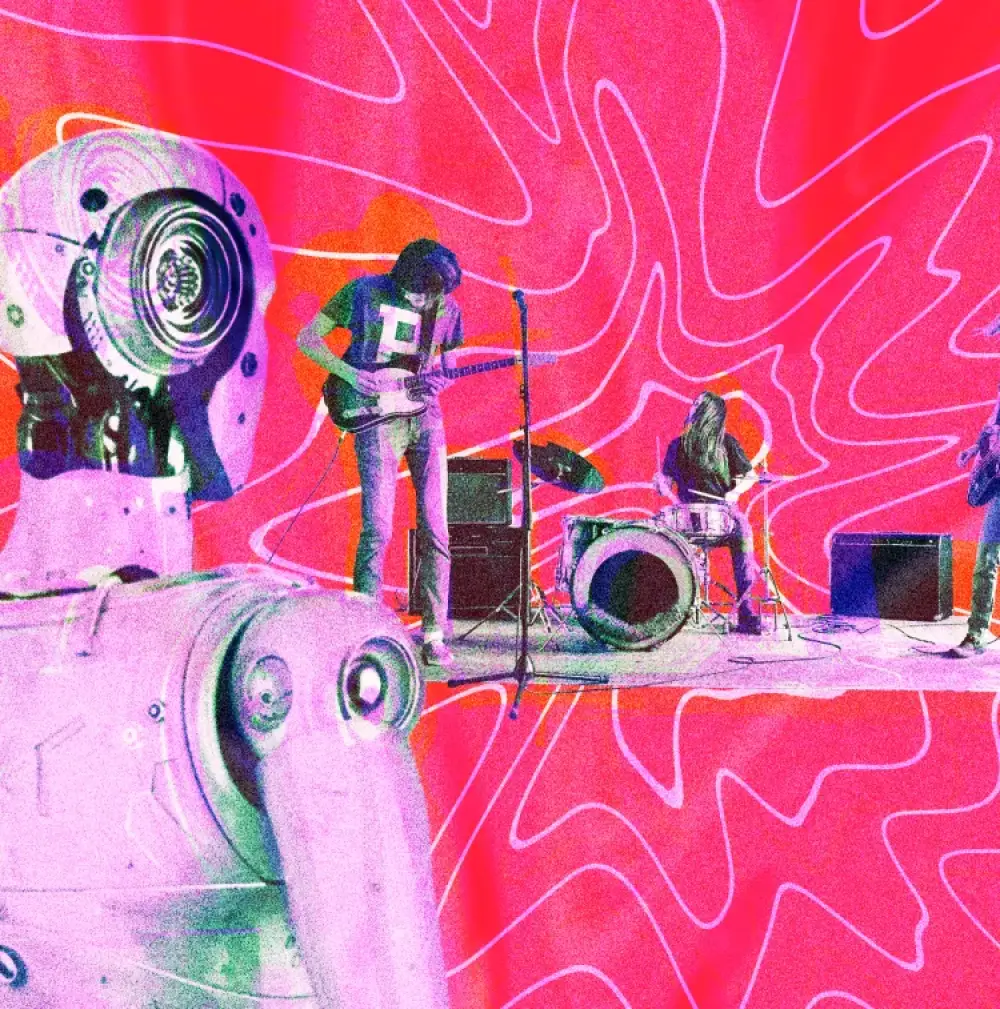
-
Ngành âm nhạc đang sử dụng luật bản quyền âm thanh chặt chẽ để tấn công các công ty AI như Suno và Udio, với các cáo buộc huấn luyện mô hình trên dữ liệu vi phạm bản quyền và tạo ra sản phẩm cạnh tranh trực tiếp với bản gốc.
-
Các công ty AI như Suno cho phép người dùng tạo bài hát chỉ từ vài từ mô tả, đe dọa không phải ngôi sao như Taylor Swift, mà là những nhạc sĩ làm nhạc nền, thiền, thư giãn hoặc quảng cáo – những người bị AI "lấn sân" nghiêm trọng.
-
Suno và Udio đã thừa nhận sử dụng nhạc bản quyền trong dữ liệu huấn luyện và tuyên bố đó là "fair use", nhưng giới luật sư nhận định ngành âm nhạc có vị thế pháp lý mạnh hơn nhờ tiền lệ từ các vụ kiện sampling trái phép.
-
RIAA kiện cả ở đầu vào và đầu ra: từ hành vi sao chép trái phép khi huấn luyện đến sản phẩm AI mô phỏng tên ca sĩ nổi tiếng hoặc phong cách nhạc cụ thể.
-
Theo luật sư Grimmelman và các tiền lệ như Bridgeport Music v. Dimension Films hay Grand Upright v. Warner Bros., âm nhạc có thể được xem là "vùng cấm" với AI do bảo hộ bản ghi âm mạnh hơn hình ảnh hay văn bản.
-
Một số công ty đã chọn hướng hợp pháp: ví dụ BandLab’s SongStarter tạo track AI có cấp phép. BandLab đang đàm phán cấp phép AI trị giá hàng trăm nghìn USD trong nhiều năm, có điều khoản rõ ràng về mục đích sử dụng.
-
Giá dữ liệu âm nhạc cho huấn luyện AI dao động từ 1–5 USD/phút cho quyền không độc quyền, và 5–20 USD/phút cho quyền độc quyền. Nhãn nhạc coi đó là thị trường chính thống, không thể bỏ qua.
-
Các AI tạo nhạc như Suno cũng bị tố tạo nhạc giống đến mức vi phạm các tác phẩm hiện hữu. Một số thử nghiệm cho thấy Suno có thể "vô tình" mô phỏng gần y hệt các bản nhạc nổi tiếng.
-
Sau khi ChatGPT ra mắt, nhiều công ty AI lao vào "cướp" dữ liệu trực tuyến và chờ tòa án xử lý, thay vì xin phép. Tuy nhiên, âm nhạc không giống sách hay hình ảnh – nó có lịch sử pháp lý riêng, khả năng kiểm soát thị trường cao và tập trung vào vài hãng lớn có thể hành động tập thể.
-
Các phán quyết gần đây như vụ kiện giữa Anthropic hay Meta chưa mang lại kết luận chung, nhưng âm nhạc vẫn được xem là có khả năng thắng cao hơn, nhờ thị trường cấp phép rõ ràng và thiệt hại dễ chứng minh.
📌 Ngành âm nhạc đang dẫn đầu cuộc phản công AI bằng luật bản quyền: kiện Suno và Udio vì huấn luyện và tạo nhạc trái phép. Với lịch sử pháp lý vững chắc, hệ thống cấp phép rõ ràng và giá trị thị trường cao (1–20 USD/phút âm nhạc), các hãng nhạc đang "bóp cò" như thời Napster. AI giờ không chỉ cần thông minh – mà còn cần xin phép.
https://www.theverge.com/ai-artificial-intelligence/695290/suno-udio-ai-music-legal-copyright-riaa
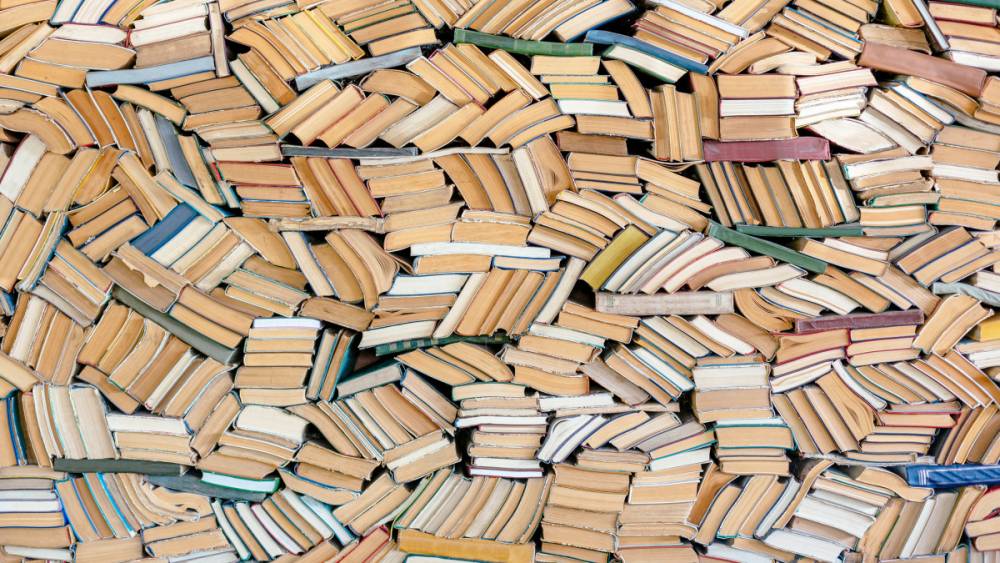
-
Vào tháng 2/2024, công ty AI Anthropic đã thuê Tom Turvey, cựu giám đốc đối tác của dự án Google Books, để dẫn đầu chiến dịch quét và số hóa “tất cả sách trên thế giới”.
-
Anthropic chi hàng triệu USD để mua sách in, sau đó cắt bỏ bìa, tháo rời từng trang để quét thành file PDF có thể đọc máy, sau đó vứt bỏ bản gốc vật lý.
-
Khác với Google Books sử dụng công nghệ quét không phá hủy, Anthropic chọn phương pháp quét phá hủy nhằm tiết kiệm chi phí và thời gian trong bối cảnh cạnh tranh khốc liệt của ngành AI.
-
Theo hồ sơ tòa án, ban đầu Anthropic đã sử dụng các bản sách lậu trên mạng để huấn luyện AI, nhưng sau đó lo ngại rủi ro pháp lý nên chuyển sang phương thức mua sách vật lý.
-
Việc này dựa vào nguyên lý “first-sale doctrine” (quyền sử dụng sau bán): mua sách rồi có thể sử dụng bản đó theo ý mình, bao gồm cả việc phá hủy để số hóa.
-
Tòa án, dưới sự chủ trì của thẩm phán William Alsup, phán quyết rằng hành vi này được coi là “fair use” (sử dụng hợp lý) vì Anthropic đã mua hợp pháp sách, không phân phối lại dữ liệu mà chỉ dùng nội bộ để huấn luyện AI.
-
Thẩm phán ví hành động này như việc chuyển đổi định dạng để tiết kiệm không gian, và coi đây là hành vi mang tính “chuyển đổi”.
-
Anthropic mua sách cũ với số lượng lớn từ các nhà bán lẻ lớn, không có ghi nhận về việc phá hủy sách hiếm hay quý hiếm.
-
Quy trình số hóa của Anthropic đi ngược lại với các mô hình bảo tồn văn hóa như Internet Archive hay OpenAI-Harvard, vốn sử dụng phương pháp quét không phá hủy để bảo tồn sách cổ và tài liệu quý.
-
Trong khi Harvard đang bảo tồn các bản thảo từ thế kỷ 15 để huấn luyện AI, thì hàng triệu cuốn sách bị phá hủy đã góp phần tạo nên Claude – AI có khả năng giúp người dùng viết văn, thảo luận văn học và xử lý kiến thức.
📌 Anthropic chi hàng triệu USD mua sách in rồi tiêu hủy để huấn luyện AI Claude, bất chấp tranh cãi đạo đức. Quy trình quét phá hủy giúp tiết kiệm chi phí so với quét không phá hủy. Tòa án Mỹ xác nhận hành vi này là “fair use” nhờ mua hợp pháp và không phân phối lại. Đây là trường hợp điển hình về cơn khát dữ liệu chất lượng cao trong cuộc đua AI hiện nay.
https://arstechnica.com/ai/2025/06/anthropic-destroyed-millions-of-print-books-to-build-its-ai-models/
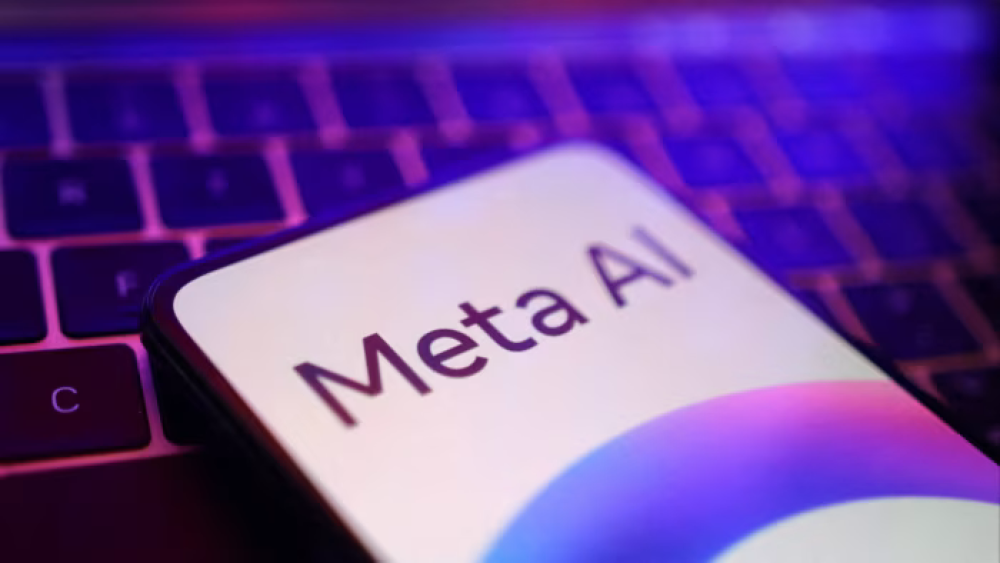
-
Meta vừa giành chiến thắng trong vụ kiện bản quyền AI tại tòa án liên bang San Francisco, liên quan đến việc sử dụng hàng triệu cuốn sách, bài báo học thuật và truyện tranh để huấn luyện mô hình AI Llama.
-
Thẩm phán Vince Chhabria phán quyết rằng việc Meta sử dụng các tài liệu này thuộc phạm trù "sử dụng hợp lý" (fair use) theo luật bản quyền.
-
Vụ kiện do khoảng 12 tác giả nổi tiếng khởi kiện, bao gồm Ta-Nehisi Coates và Richard Kadrey. Họ cáo buộc Meta sử dụng thư viện trực tuyến LibGen - nơi lưu trữ nội dung vi phạm bản quyền - để huấn luyện AI mà không xin phép.
-
Thẩm phán nhấn mạnh rằng phán quyết này không có nghĩa là hành vi của Meta hoàn toàn hợp pháp, mà chỉ phản ánh việc phía nguyên đơn "đưa ra lập luận sai" và "không xây dựng được hồ sơ đầy đủ để bảo vệ quan điểm của mình".
-
Đây là chiến thắng thứ hai liên tiếp trong tuần của các công ty công nghệ AI, sau khi một thẩm phán khác xử thắng cho Anthropic. Anthropic bị cáo buộc sử dụng sách giấy mua hợp pháp rồi cắt nhỏ và quét để huấn luyện mô hình Claude. Tòa phán quyết đây là "sử dụng hợp lý", nhưng vẫn yêu cầu xét xử riêng đối với cáo buộc tải lậu hàng triệu sách điện tử.
-
Thẩm phán cũng chỉ ra rằng, một lập luận tiềm năng có thể thắng trong vụ Meta là "làm loãng thị trường", tức là thiệt hại kinh tế đối với chủ bản quyền do AI tạo ra vô hạn các sản phẩm như hình ảnh, bài hát, bài báo hoặc sách.
-
Ông cảnh báo rằng AI tạo sinh có thể "làm suy yếu nghiêm trọng động lực sáng tạo truyền thống của con người" khi người dùng chỉ cần một phần nhỏ thời gian và công sức để tạo ra sản phẩm tương tự.
-
Hiện Meta và đại diện pháp lý của các tác giả chưa đưa ra bình luận chính thức về vụ việc.
📌 Meta vừa giành thắng lợi lớn trong vụ kiện bản quyền AI, khi tòa án San Francisco phán quyết việc sử dụng sách huấn luyện AI thuộc phạm trù "sử dụng hợp lý". Thẩm phán cho biết nguyên đơn thất bại do lập luận yếu. Vụ kiện liên quan đến kho dữ liệu LibGen và đặt ra nguy cơ AI làm suy yếu thị trường sáng tạo truyền thống. Đây cũng là chiến thắng thứ hai trong tuần của ngành AI, sau chiến thắng của Anthropic.
https://www.ft.com/content/6f28e62a-d97d-49a6-ac3b-6b14d532876d
#FT
Meta wins artificial intelligence copyright case in blow to authors
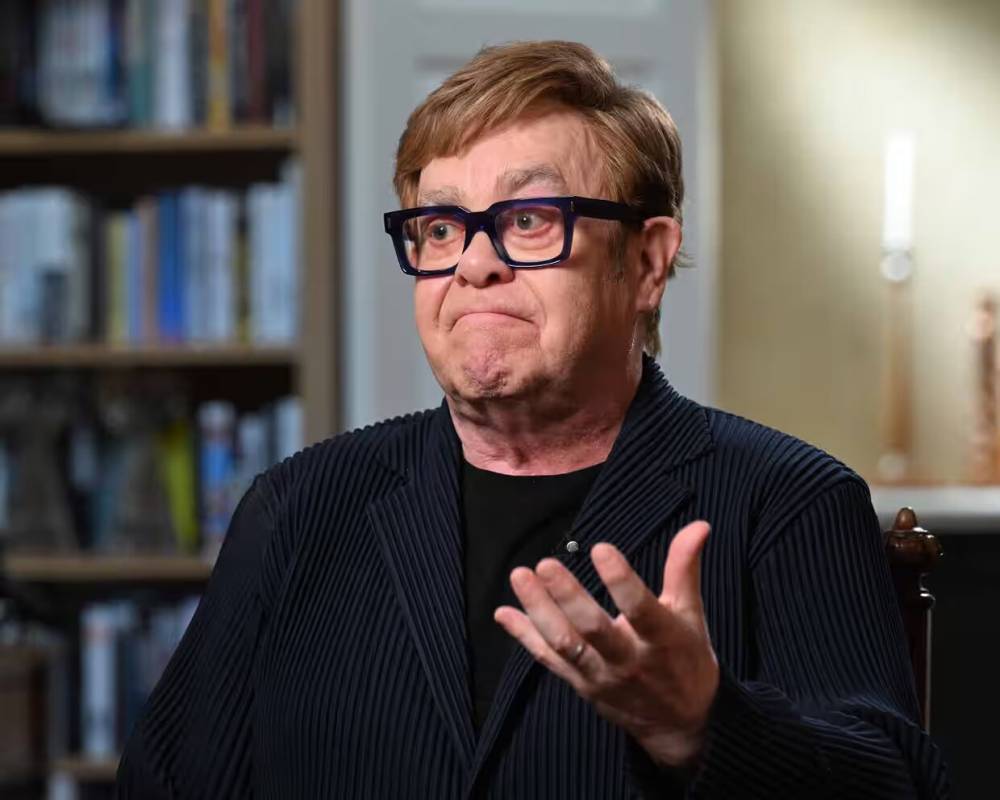
-
Ca sĩ – nhạc sĩ Elton John đã gay gắt chỉ trích chính phủ Anh khi gọi họ là “absolute losers” (lũ thất bại) do kế hoạch thay đổi luật bản quyền cho phép các công ty AI sử dụng nội dung có bản quyền mà không cần xin phép.
-
Trong chương trình “Sunday with Laura Kuenssberg” trên BBC One, ông nói việc này là “một hành vi phạm tội” và khẳng định sẽ kiện chính phủ nếu kế hoạch không thay đổi.
-
Elton John cho rằng kế hoạch này sẽ “cướp đi di sản và thu nhập của giới trẻ” và cảm thấy “bị phản bội nghiêm trọng”.
-
Ông gọi Bộ trưởng Công nghệ Peter Kyle là “kẻ ngốc” và chỉ trích sự gần gũi bất thường giữa ông Kyle và các tập đoàn công nghệ lớn như Google, Amazon, Apple và Meta – vốn tăng đột biến sau khi Đảng Lao động thắng cử tháng 7/2024.
-
Trước cuộc bỏ phiếu tại Thượng viện, Elton John ủng hộ đề xuất của nữ nghị sĩ Beeban Kidron, yêu cầu các công ty AI công khai khi sử dụng nội dung có bản quyền để các nghệ sĩ có thể thương lượng cấp phép.
-
Một sửa đổi tương tự trước đó đã được Thượng viện thông qua với tỷ lệ hơn 2:1 nhưng sau đó bị chính phủ loại bỏ khi trình lên Hạ viện, làm dấy lên xung đột lập pháp nghiêm trọng.
-
Chính phủ Anh hiện đang tham vấn các phương án liên quan đến đào tạo AI trên dữ liệu có bản quyền, trong đó có:
-
Giữ nguyên luật hiện hành;
-
Yêu cầu công ty AI phải xin giấy phép sử dụng;
-
Cho phép sử dụng mà không cần xin phép, trừ khi chủ sở hữu từ chối;
-
Hoặc hoàn toàn cho phép mà không có cơ chế từ chối.
-
-
Dù một nguồn tin thân cận cho biết phương án “cho phép mặc định” không còn là lựa chọn ưu tiên, nhưng nó vẫn được giữ lại trong tham vấn.
-
Người phát ngôn chính phủ cho biết sẽ không thay đổi luật bản quyền nếu không đảm bảo quyền lợi cho người sáng tạo, đồng thời cam kết thực hiện đánh giá tác động kinh tế toàn diện.
📌 Elton John phản ứng gay gắt với kế hoạch cho phép AI sử dụng nội dung có bản quyền mà không xin phép, gọi đây là hành vi “phạm tội”. Ông đe dọa kiện nếu chính phủ không thay đổi chính sách. Trong khi đó, các lựa chọn đang được chính phủ Anh tham vấn bao gồm cả việc bỏ cơ chế từ chối, gây lo ngại lớn cho giới sáng tạo.
https://www.theguardian.com/music/2025/may/18/elton-john-says-uk-government-being-absolute-losers-over-ai-copyright-plans
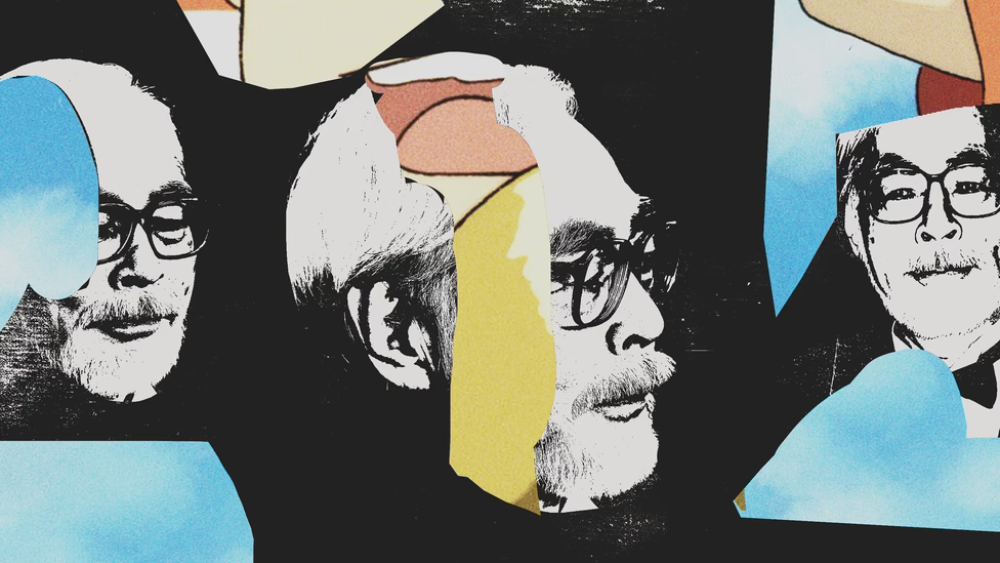
-
OpenAI vừa ra mắt bản nâng cấp mới cho ChatGPT với khả năng tạo ảnh theo phong cách các studio nổi tiếng, dẫn đến làn sóng hình ảnh “Ghibli hóa” tràn lan trên mạng, thu hút 1 triệu người dùng chỉ trong 1 giờ.
-
Phong cách của Studio Ghibli – nổi tiếng với các bộ phim như Spirited Away và Princess Mononoke – trở thành xu hướng mạnh nhất, được dùng trong ảnh gia đình, các sự kiện lịch sử như 9/11. Sam Altman, CEO của OpenAI, còn đổi avatar thành phiên bản “Ghibli hóa” của chính mình.
-
Dù người dùng xem đây là trào lưu tự phát, Altman thừa nhận công ty đã cân nhắc kỹ các ví dụ minh họa khi ra mắt tính năng. OpenAI chủ động thúc đẩy xu hướng, có thể ví như một chiến dịch tiếp thị trá hình.
-
Vấn đề pháp lý chính nằm ở việc phong cách hình ảnh không được bảo vệ bản quyền, nhưng luật “right of publicity” và “false endorsement” (giả mạo chứng thực) có thể áp dụng. Ví dụ, ca sĩ Bette Midler thắng kiện với 400.000 USD khi bị bắt chước phong cách hát.
-
OpenAI từng gặp rủi ro tương tự khi sử dụng giọng nói giống Scarlett Johansson, dù đã xin lỗi và gỡ bỏ.
-
Giới nghệ sĩ lo ngại AI tạo sinh phá vỡ thị trường nghệ thuật. Phong cách cá nhân như của Miyazaki mất giá trị khi có thể bị tái tạo hàng loạt bởi AI mà không cần nỗ lực sáng tạo thực sự.
-
Các vụ kiện đang diễn ra với Midjourney vì các lý do tương tự, có thể tạo tiền lệ pháp lý cho trường hợp của OpenAI.
-
Nghệ sĩ Greg Rutkowski từng chia sẻ rằng ảnh AI giả danh ông đang làm lu mờ tác phẩm thật. Theo cựu cố vấn pháp lý của Adobe, luật hiện hành không đủ để bảo vệ phong cách sáng tạo cá nhân.
📌 ChatGPT đang tạo làn sóng tranh cãi khi sử dụng phong cách Studio Ghibli mà không xin phép, gây nguy cơ kiện tụng vì vi phạm “right of publicity” và “false endorsement”. Với 1 triệu người dùng trong 1 giờ, trào lưu này không chỉ đe dọa sinh kế nghệ sĩ mà còn khiến xã hội phải suy xét lại ranh giới đạo đức và pháp lý của AI tạo sinh.
https://www.theatlantic.com/technology/archive/2025/05/openai-studio-ghibli-images/682791/
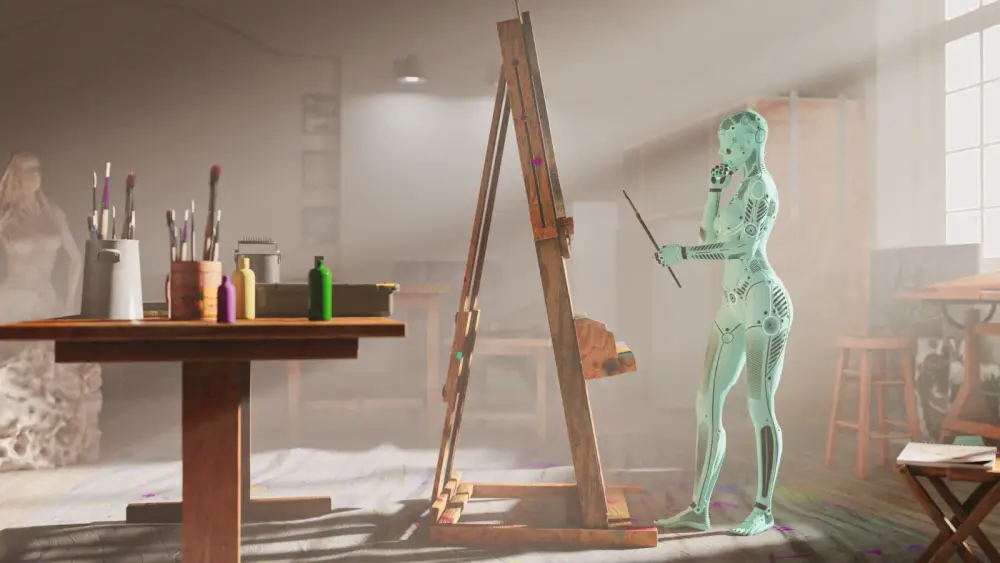
-
Văn phòng bản quyền Mỹ đã công nhận bảo hộ cho hơn 1.000 tác phẩm có yếu tố AI tạo sinh tham gia vào quá trình sáng tạo.
-
Quy trình xét duyệt phân biệt rõ giữa việc dùng AI làm công cụ hỗ trợ sáng tạo (có thể bảo hộ) và AI thay thế hoàn toàn sáng tạo của con người (không được bảo hộ).
-
Luật sư Jalyce Mangum giải thích: AI chỉ có vai trò hợp lệ khi giúp con người thể hiện ý tưởng sáng tạo, không phải nguồn gốc các lựa chọn sáng tạo chính.
-
Ví dụ điển hình: ca sĩ Randy Travis sử dụng AI để tái tạo giọng hát cho bản thu âm "Where That Came From", giúp ông sáng tác dù đã mất khả năng nói sau đột quỵ – tác phẩm này được bảo hộ bản quyền.
-
Ở Hàn Quốc, một bộ phim do AI tạo ra hoàn toàn vẫn được bảo hộ bản quyền nhờ sự sáng tạo ở khâu lựa chọn, phối hợp và sắp xếp nội dung AI của con người.
-
Năm 2024, Metro Boomin ra mắt ca khúc sử dụng toàn bộ mẫu nhạc từ công cụ Udio AI, thu hút 3,4 triệu lượt nghe trên SoundCloud. Tuy nhiên, Udio lại đối mặt với vụ kiện bản quyền từ hiệp hội RIAA.
-
Tranh cãi bản quyền AI ngày càng kịch liệt: Paul McCartney cảnh báo AI có thể khiến nghệ sĩ mất quyền lợi; nhiều nhạc sĩ, nhiếp ảnh gia kiện các công ty AI lớn vì sử dụng tác phẩm của họ để huấn luyện mô hình ngôn ngữ lớn.
-
Ở châu Âu, Đạo luật AI vừa được thông qua, cấm các công cụ AI rủi ro cao, đồng thời siết chặt yêu cầu tuân thủ bản quyền.
-
Luật bảo hộ bản quyền AI mới chỉ định hướng cho nghệ sĩ sáng tạo công nghệ, nhưng chưa làm dịu các chỉ trích mạnh mẽ về rủi ro AI gây ra cho ngành sáng tạo toàn cầu.
📌 Hơn 1.000 tác phẩm có yếu tố AI đã được Mỹ công nhận bảo hộ bản quyền nếu AI chỉ đóng vai trò hỗ trợ sáng tạo. Dù luật bảo hộ giúp mở đường cho nghệ thuật AI, tranh cãi và kiện tụng vẫn bùng nổ liên quan tới ranh giới sáng tạo giữa người và máy.
https://www.pcmag.com/news/one-thousand-ai-enhanced-works-now-protected-by-us-copyright-law
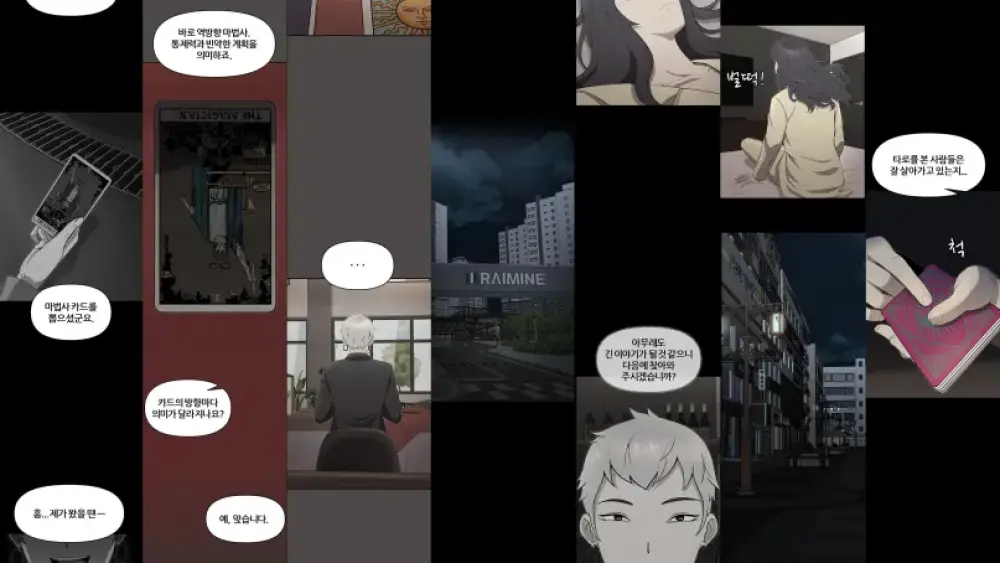
-
AI tạo sinh đang làm thay đổi sâu rộng ngành webtoon tại Hàn Quốc, điển hình là việc huyền thoại truyện tranh Lee Hyun-se hợp tác AI để "bất tử hóa" các nhân vật kinh điển của mình như Kkachi, Umji, Ma Dong-tak.
-
Lee Hyun-se phát triển mô hình AI cá nhân bằng cách tinh chỉnh Stable Diffusion trên dữ liệu 5.000 tập truyện do mình sáng tác trong suốt 46 năm cùng Jaedam Media, giúp tạo ra tranh mang phong cách đặc trưng của ông.
-
Chuỗi truyện đầu tiên dùng AI hỗ trợ của Lee là bản làm lại "Karon’s Dawn", hiện đại hóa nhân vật trong bối cảnh Seoul ngày nay, với sự tham gia sáng tác của sinh viên Đại học Sejong.
-
Quy trình sáng tác gồm: AI tạo hình ảnh dựa trên mô tả, sinh viên biên tập lại biểu cảm, động tác và Lee định hình tổng thể, bổ sung chi tiết cảm xúc mà AI chưa làm được.
-
Lee đặt mục tiêu xây dựng "Lee Hyun-se simulation agent"—một agent AI có tính chủ thể, mô phỏng tư duy sáng tạo bằng cách huấn luyện trên các tiểu luận, phỏng vấn, và bản thảo truyện của ông.
-
AI giúp rút ngắn thời gian sản xuất truyện tranh từ 6 tháng xuống chỉ còn 2 tuần, hỗ trợ nghệ sĩ độc lập, loại bỏ nhu cầu thuê ê-kíp lớn như trước.
-
Startup Onoma AI phát triển TooToon—phần mềm tạo truyện tranh bằng AI, cho phép người dùng soạn tóm tắt, tạo nhân vật, và hình ảnh chỉ từ mô tả và phác thảo đơn giản.
-
Quá trình này gây tranh cãi mạnh mẽ về bản quyền; nhiều nghệ sĩ và độc giả phát động phong trào tẩy chay truyện tranh AI, đặc biệt khi các nền tảng như Naver Webtoon yêu cầu nghệ sĩ đồng ý cho AI sử dụng tác phẩm để huấn luyện.
-
Ủy ban Bản quyền Hàn Quốc ban hành hướng dẫn: AI chỉ được sử dụng dữ liệu có sự đồng ý chủ sở hữu, quy định rõ phạm vi, mục đích và vấn đề đền bù, song chưa có khung pháp lý rõ ràng.
-
Trong khi nghệ sĩ lão làng như Lee xem AI là công cụ mở rộng di sản, phần lớn nghệ sĩ trẻ lo sợ mất quyền làm chủ sáng tạo, mất luôn phần "linh hồn" của tác phẩm vào tay thuật toán.
-
Một số nghệ sĩ chuyên về cốt truyện như Bae Jin-soo lại coi AI là trợ lý hữu ích, giúp tự động hóa khâu vẽ để tập trung vào kịch bản, dù vẫn lo ngại việc này sẽ bào mòn cá tính nghệ thuật.
-
Trường Đại học Sejong đào tạo sinh viên thành "creative coder", tích hợp AI vào quá trình sáng tác truyện, mở ra tiềm năng sáng tạo thể loại, nhân vật đa dạng hơn nhờ tiết kiệm được thời gian.
-
Tổng thể, AI tạo sinh vừa mở ra kỷ nguyên sáng tạo mới, vừa đặt ra câu hỏi lớn về quyền tác giả, bản sắc nghệ sĩ và "linh hồn" của nghệ thuật.
📌 AI tạo sinh đang cách mạng hóa ngành webtoon Hàn Quốc: giúp rút ngắn thời gian sản xuất xuống 2 tuần, hỗ trợ cả nghệ sĩ lão làng lẫn độc lập, nhưng cũng châm ngòi lo ngại bản quyền, khủng hoảng bản sắc, khiến nghệ sĩ trẻ phản đối mạnh mẽ và chưa có giải pháp pháp lý rõ ràng.
https://www.technologyreview.com/2025/04/22/1114874/generative-ai-south-korea-webcomics/
#MIT
AI tạo sinh đang tái định hình ngành truyện tranh web của Hàn Quốc
Một số họa sĩ như Lee Hyun-se huyền thoại coi AI là con đường đến sự bất tử; những người khác lại băn khoăn liệu nó có phải mối đe dọa cho sự sáng tạo của họ.
Tác giả: Michelle Kim
22 tháng 4 năm 2025
"Tarot: A Tale of Seven Pages" là một series truyện tranh web do AI tạo ra bởi startup Onoma AI của Hàn Quốc.
"Trí óc tôi vẫn còn minh mẫn và tay tôi vẫn hoạt động tốt, nên tôi không quan tâm đến việc nhận trợ giúp từ AI để vẽ hay viết truyện," Lee Hyun-se, họa sĩ truyện tranh huyền thoại của Hàn Quốc nổi tiếng nhất với series manhwa đình đám A Daunting Team năm 1983 về hành trình trưởng thành của các cầu thủ bóng chày anh hùng dân dã, nói. "Tuy nhiên, tôi đã bắt tay với AI để bất tử hóa các nhân vật Kkachi, Umji và Ma Dong-tak của mình."
Bằng việc đón nhận AI generative, Lee đang mở ra biên giới sáng tạo mới trong ngành truyện tranh web của Hàn Quốc. Kể từ khi các tạp chí truyện tranh phai nhạt vào đầu thế kỷ này, truyện tranh web—những truyện tranh được đăng theo kỳ đọc từ trên xuống dưới trên các nền tảng số—đã phát triển từ văn hóa phụ thành cường quốc giải trí toàn cầu, thu hút hàng trăm triệu độc giả trên khắp thế giới. Lee từ lâu đã đi đầu trong lĩnh vực này, vượt qua các giới hạn của nghề.
Lee lấy cảm hứng cho các anh hùng bóng chày nổi loạn của mình từ Sammi Superstars, một trong những đội bóng chày chuyên nghiệp đầu tiên của Hàn Quốc, với hành trình kiên trì đã thu hút một đất nước đang bị kìm nén bởi chế độ độc tài quân sự. Series này đã có một lượng fan cuồng nhiệt trong số các độc giả tìm kiếm lối thoát sáng tạo khỏi sự đàn áp chính trị, họ bị mê hoặc bởi nét cọ táo bạo và bố cục điện ảnh của ông - thách thức các quy ước thông thường của truyện tranh.
Kkachi, nhân vật chính nổi loạn trong A Daunting Team, là một bản ngã của chính Lee. Một kẻ bị ruồng bỏ can đảm với mái tóc dựng đứng không thuần phục, anh là nhân vật được yêu thích nhất, người thách thức thế giới bằng đam mê không ngừng và lương tâm dũng cảm. Anh đã xuất hiện lại xuyên suốt các tác phẩm tiêu biểu của Lee, mỗi lần được vẽ với một lớp cảm xúc mới—một chiến binh siêu nhiên cứu Trái đất khỏi cuộc tấn công của người ngoài hành tinh trong Armageddon và một cảnh sát bất chính chiến đấu với tổ chức tội phạm hùng mạnh trong Karon's Dawn. Qua nhiều thập kỷ, Kkachi đã trở thành biểu tượng văn hóa ở Hàn Quốc.
Nhưng Lee lo lắng về tương lai của Kkachi. "Ở Hàn Quốc, khi một tác giả qua đời, các nhân vật của anh ta cũng bị chôn theo cùng mộ," ông nói, so sánh với các nhân vật truyện tranh Mỹ bền vững như Superman và Spider-Man. Lee khao khát sự bất tử nghệ thuật. Ông muốn các nhân vật của mình sống mãi không chỉ trong ký ức của độc giả mà còn trên các nền tảng truyện tranh web. "Ngay cả sau khi tôi chết, tôi muốn thế giới quan và các nhân vật của tôi tiếp tục giao tiếp và cộng hưởng với con người của kỷ nguyên mới," ông nói. "Đó là loại bất tử mà tôi mong muốn."
Lee tin rằng AI có thể giúp ông hiện thực hóa tầm nhìn này. Hợp tác với Jaedam Media, một công ty sản xuất truyện tranh web tại Seoul, ông đã phát triển "mô hình AI Lee Hyun-se" bằng cách tinh chỉnh trình tạo nghệ thuật AI mã nguồn mở Stable Diffusion, được tạo ra bởi startup Stability AI có trụ sở tại Anh. Sử dụng bộ dữ liệu 5.000 tập truyện mà ông đã xuất bản trong 46 năm, mô hình kết quả tạo ra truyện tranh theo phong cách đặc trưng của ông.
Năm nay, Lee chuẩn bị xuất bản truyện tranh web đầu tiên được hỗ trợ bởi AI, một phiên bản làm lại của manhwa Karon's Dawn năm 1994. Các nhà văn tại Jaedam Media đang chuyển thể câu chuyện thành một bộ phim tội phạm hiện đại với Kkachi đóng vai cảnh sát ở Seoul ngày nay và Umji - người yêu của anh - là một công tố viên táo bạo. Sinh viên tại Đại học Sejong, nơi Lee dạy truyện tranh, đang tạo tác phẩm nghệ thuật bằng mô hình AI của ông.
Quá trình sáng tạo diễn ra qua nhiều giai đoạn. Đầu tiên, mô hình AI của Lee tạo ra minh họa dựa trên lời nhắc văn bản và hình ảnh tham khảo, như mô hình giải phẫu 3D và bản phác thảo vẽ tay cung cấp gợi ý cho các chuyển động và cử chỉ khác nhau. Học sinh của Lee sau đó sẽ tuyển chọn và chỉnh sửa các minh họa, điều chỉnh tư thế của nhân vật, tùy chỉnh biểu cảm khuôn mặt và tích hợp chúng vào các bố cục hoạt hình mà AI không thể thiết kế. Sau nhiều vòng tinh chỉnh và tái tạo, Lee bước vào để điều phối sản phẩm cuối cùng, thêm vào dấu ấn nghệ thuật đặc trưng của mình.
Các công ty AI hình dung rằng nghệ sĩ có thể tự động hóa công việc vẽ nặng nhọc và tập trung năng lượng sáng tạo vào kể chuyện và chỉ đạo nghệ thuật.
"Dưới sự chỉ đạo của tôi, một nhân vật có thể nhìn chằm chằm với ánh mắt buồn ngay cả khi họ tức giận hoặc ánh mắt hung dữ khi họ hạnh phúc," ông nói. "Đó là biểu hiện lật ngược, một sắc thái mà AI khó nắm bắt. Những chi tiết tinh tế đó tôi cần tự mình chỉ đạo."
Cuối cùng, Lee muốn xây dựng một hệ thống AI thể hiện cách tiếp cận tỉ mỉ của ông với biểu cảm con người. Tầm nhìn lớn của dự án AI thử nghiệm của ông là tạo ra một "tác nhân mô phỏng Lee Hyun-se"—một thế hệ tiên tiến của mô hình AI của ông, sao chép tâm trí sáng tạo của ông. Mô hình sẽ được đào tạo trên kho lưu trữ số các bài tiểu luận, phỏng vấn và văn bản từ truyện tranh của Lee—chủ đề của một triển lãm tại Thư viện Quốc gia Hàn Quốc năm ngoái—để mã hóa triết lý, tính cách và giá trị của ông. "AI sẽ mất nhiều thời gian để học các thế giới quan phong phú của tôi vì tôi đã xuất bản rất nhiều tác phẩm," ông nói.
Bản sao số của Lee sẽ tạo ra truyện tranh mới với trực giác nghệ thuật của ông, nhận thức môi trường xung quanh và đưa ra lựa chọn sáng tạo như ông sẽ làm—có thể thậm chí xuất bản một series trong tương lai xa với Kkachi đóng vai nhân vật hậu nhân loại. "50 năm nữa, Lee Hyun-se sẽ tạo ra những loại truyện tranh nào nếu ông ấy nhìn thấy thế giới lúc đó?" Lee hỏi. "Câu hỏi này làm tôi say mê."
Hành trình tìm kiếm di sản nghệ thuật lâu dài của Lee là một phần của cuộc tiến hóa sáng tạo rộng lớn hơn được thúc đẩy bởi công nghệ. Trong nhiều thập kỷ kể từ khi xuất hiện, truyện tranh web đã biến đổi nghệ thuật kể chuyện, cung cấp một không gian số vô tận tích hợp âm nhạc, hoạt hình và hình ảnh tương tác với hiệu ứng từ các công cụ mới như chương trình tô màu tự động. Việc bổ sung AI đang thúc đẩy làn sóng đổi mới tiếp theo. Nhưng ngay cả khi nó mở khóa các khả năng sáng tạo mới, nó cũng đang gây lo ngại về quyền tự chủ nghệ thuật và quyền tác giả.
Năm ngoái, startup Onoma AI của Hàn Quốc, đặt tên theo từ Hy Lạp "onoma" có nghĩa là "tên" (một tín hiệu về tham vọng định nghĩa lại cách kể chuyện sáng tạo), đã ra mắt trình tạo truyện tranh web được hỗ trợ bởi AI có tên TooToon. Phần mềm cho phép người dùng tạo tóm tắt, nhân vật và storyboard bằng lời nhắc văn bản đơn giản và chuyển đổi bản phác thảo thô thành minh họa hoàn thiện phản ánh phong cách nghệ thuật cá nhân của họ. TooToon tuyên bố hợp lý hóa quá trình sáng tạo tốn nhiều công sức bằng cách giảm thời gian sản xuất từ phát triển ý tưởng đến nghệ thuật đường nét từ 6 tháng xuống chỉ còn 2 tuần.
Các công ty như Onoma AI ủng hộ ý tưởng rằng AI có thể giúp bất kỳ ai trở thành nghệ sĩ—ngay cả khi bạn không thể vẽ hoặc không đủ khả năng thuê một đội ngũ trợ lý để theo kịp yêu cầu sản xuất điên cuồng của ngành. Trong tầm nhìn của họ, các nghệ sĩ sẽ nổi lên như đạo diễn của studio solo được hỗ trợ bởi AI của riêng họ, tự động hóa công việc vẽ nặng nhọc và tập trung năng lượng sáng tạo vào kể chuyện và chỉ đạo nghệ thuật. Họ nói rằng đột phá năng suất sẽ giúp nghệ sĩ sáng tạo nhiều ý tưởng thử nghiệm hơn, đảm nhận các dự án quy mô lớn và phá vỡ thế độc quyền của các studio thống trị thị trường.
"AI sẽ mở rộng hệ sinh thái truyện tranh web," Song Min, người sáng lập và CEO của Onoma AI nói. Song mô tả ngành công nghiệp ở Hàn Quốc như một "kim tự tháp"—các nền tảng hùng mạnh như Naver Webtoon và Kakao Webtoon ở đỉnh, tiếp theo là các studio lớn, nơi các nghệ sĩ hợp tác để sản xuất hàng loạt truyện tranh web. "Phần còn lại của các nghệ sĩ, những người ngoài hệ thống studio, không thể sáng tạo một mình," ông giải thích. "AI sẽ trao quyền cho nhiều nghệ sĩ hơn nổi lên như nghệ sĩ độc lập."
Năm ngoái, Onoma AI đã hợp tác với một nhóm nghệ sĩ truyện tranh web trẻ để tạo ra Tarot: A Tale of Seven Pages, một truyện trinh thám bí ẩn làm sáng tỏ số phận xoắn xuýt của những người xa lạ bị nguyền rủa bởi một ván bài tarot. Thông qua những hợp tác này, Song sử dụng phản hồi của các nghệ sĩ để cải thiện TooToon. Tuy nhiên, ngay cả với tư cách là người ủng hộ nghệ thuật do AI tạo ra, ông cũng đặt câu hỏi liệu "AI hoàn hảo có phải là điều tốt không." Giống như các kỹ sư cần tiếp tục viết code để mài giũa kỹ năng, ông tự hỏi liệu AI có nên để lại chỗ cho nghệ sĩ tiếp tục vẽ để nuôi dưỡng nghề nghiệp của họ không.
"AI là một sức mạnh không thể tránh khỏi, nhưng hiện tại, các rào cản lớn nằm ở nhận thức của nghệ sĩ và bản quyền," ông nói.
Onoma AI đã xây dựng Illustrious, mô hình ngôn ngữ lớn cung cấp năng lượng cho TooToon, bằng cách tinh chỉnh Stable Diffusion trên bộ dữ liệu Danbooru2023, một ngân hàng hình ảnh công cộng các minh họa theo phong cách anime. Nhưng Stable Diffusion, cùng với các trình tạo hình ảnh phổ biến khác được xây dựng trên mô hình này, đã bị chỉ trích vì thu thập hình ảnh bừa bãi từ internet, gây ra một loạt vụ kiện về vi phạm bản quyền. Đến lượt mình, các trình tạo truyện tranh web đang đối mặt với phản ứng dữ dội từ các nghệ sĩ lo sợ rằng các chương trình đang được đào tạo trên nghệ thuật của họ mà không có sự đồng ý.
"Bạn có thể sáng tạo mà không có linh hồn không? Ai biết được?"
Khi các công ty che giấu dữ liệu đào tạo của họ, các nghệ sĩ và độc giả đã phát động một chiến dịch số để tẩy chay truyện tranh web do AI tạo ra. Vào tháng 5 năm 2023, độc giả đã ném bom The Knight King Returns with the Gods trên Naver Webtoon với điểm đánh giá cực thấp sau khi phát hiện AI đã được sử dụng để cải thiện các phần của tác phẩm nghệ thuật. Tháng sau, các nghệ sĩ tràn ngập nền tảng với các bài đăng ẩn danh phản đối "truyện tranh web AI được tạo ra từ trộm cắp", chỉ trích gay gắt chính sách hợp đồng của Naver yêu cầu các nghệ sĩ xuất bản trên nền tảng phải đồng ý cho phép tác phẩm của họ được sử dụng làm dữ liệu đào tạo AI.
Để giải quyết bế tắc, Ủy ban Bản quyền Hàn Quốc đã ban hành một bộ hướng dẫn vào tháng 12 năm 2023, kêu gọi các nhà phát triển AI xin phép chủ sở hữu bản quyền trước khi sử dụng tác phẩm của họ làm dữ liệu đào tạo; nêu rõ mục đích, phạm vi và thời gian sử dụng; và cung cấp khoản bồi thường công bằng. Một năm sau, giữa những lời kêu gọi ngày càng tăng từ các công ty AI về việc tiếp cận nhiều dữ liệu hơn, chính phủ Hàn Quốc đã đề xuất tạo ra một ngoại lệ cho luật bản quyền cho phép các mô hình AI được đào tạo trên các tác phẩm có bản quyền theo học thuyết sử dụng hợp lý. Nhưng chưa có luật hoặc quy định nào thiết lập khung pháp lý rõ ràng, khiến các nghệ sĩ trong tình trạng bấp bênh.
Trong khi các nghệ sĩ kỳ cựu như Lee đón nhận công nghệ này như một công cụ để mở rộng di sản của họ, hết lòng cấp phép tài sản trí tuệ của họ cho AI, các nghệ sĩ trẻ hơn lại coi nó là mối đe dọa. Họ lo sợ rằng AI sẽ đánh cắp tác phẩm nghệ thuật của họ và quan trọng hơn, danh tính của họ với tư cách là nghệ sĩ.
"Vẽ là phần khó nhất và thú vị nhất của việc làm truyện tranh," Park So-won, một nghệ sĩ truyện tranh web trẻ tại Seoul, nói. Park lớn lên với ước mơ trở thành họa sĩ truyện tranh, xem mẹ cô, một nhà làm phim hoạt hình, tạo dựng các nhân vật. Sau nhiều năm cân bằng các công việc làm trợ lý nghệ sĩ tại một studio truyện tranh web, bị gián đoạn bởi một khoảng nghỉ sáng tạo ngắn, cô đã có bước đột phá trên nền tảng Lezhin Comics với Legs That Won't Walk, một tiểu thuyết noir lãng mạn đồng tính về một võ sĩ yêu một tay cho vay nặng lãi đang truy đuổi anh vì nợ của người cha nghiện rượu.
Là một nghệ sĩ độc lập, Park liên tục làm việc. Cô xuất bản một tập mới mỗi 10 ngày, thường xuyên thức trắng đêm để tạo ra tới 80 cảnh vẽ, ngay cả khi có sự giúp đỡ của trợ lý xử lý nghệ thuật nền và tô màu. Thỉnh thoảng cô thấy mình trong trạng thái dòng chảy, làm việc 30 giờ liên tục không nghỉ.
Tuy nhiên, Park không thể tưởng tượng việc giao phác vẽ của mình, thứ cô coi là trái tim của truyện tranh, cho AI. "Yếu tố cốt lõi của một bộ truyện tranh, dù câu chuyện quan trọng đến đâu, là hình vẽ. Nếu câu chuyện được viết bằng lời, mọi người đã không đọc nó, phải không? Câu chuyện chỉ là một ý nghĩ—việc thực hiện là hình vẽ," cô nói. "Ngữ pháp của truyện tranh là hình vẽ." Giao hình vẽ của mình đồng nghĩa với việc từ bỏ quyền tự chủ nghệ thuật.
Park nghĩ nghệ thuật thuật toán thiếu linh hồn—như "những vật thể tồn tại trong khoảng không"—và không lo lắng về việc AI có thể vẽ tốt hơn cô không. Các bản vẽ của cô đã phát triển theo thời gian, được định hình bởi quan điểm thay đổi của cô về thế giới và phá vỡ giới hạn sáng tạo mới theo thời gian—một sự tiến bộ nghệ thuật mà cô nghĩ một thuật toán được đào tạo để bắt chước các tác phẩm hiện có không bao giờ có thể thực hiện. "Tôi sẽ tiếp tục mở ra lãnh thổ mới với tư cách là một nghệ sĩ, trong khi AI sẽ giữ nguyên," cô nói.
Với Park, nghệ thuật là sự đam mê tột cùng: "Tôi đã đi xa đến mức này vì tôi yêu thích vẽ. Nếu AI lấy đi điều yêu thích nhất của tôi trên đời, tôi sẽ làm gì?"
Nhưng các nghệ sĩ truyện tranh khác, những người có thế mạnh trong kể chuyện, lại chào đón sự đổi mới này. Bae Jin-soo từng là một nhà biên kịch đầy tham vọng trước khi ra mắt với tư cách nghệ sĩ trên trang truyện tranh nghiệp dư của Naver Webtoon năm 2010. Để biến kịch bản của mình thành truyện tranh, Bae tự học vẽ bằng cách chụp ảnh các bố cục khác nhau và tracing chúng lên giấy. "Tôi không thể vẽ, vì vậy tôi sẽ đặt cược vào khả năng viết của mình," anh nghĩ.
Sau khi series đầu tay Friday: Forbidden Tales thành công, Bae nổi tiếng với ba phần series Money Game, Pie Game và Funny Game—những truyện trinh thám tâm lý thông minh chứa đầy những nút thắt cốt truyện và câu chuyện dí dỏm, kích thích tư duy về một nhóm thí sinh chơi các trò chơi kỳ quặc để giành giải thưởng tiền mặt. Chúng thậm chí còn truyền cảm hứng cho một bộ phim chuyển thể nổi tiếng trên Netflix, The 8 Show.
"Tôi vẫn còn rất nhiều câu chuyện muốn kể," Bae nói. Một nhà văn sung mãn, anh giữ một danh sách các ý tưởng mới trong một cuốn sổ tay bỏ túi, các cốt truyện đa thể loại trải dài từ kinh dị, chính trị đến hài đen. Nhưng với tâm trí luôn chạy đua trước tay, việc thổi hồn vào tất cả các ý tưởng của mình sẽ đòi hỏi phải thuê một studio để thực hiện các minh họa. Đối với Bae, một trình tạo truyện tranh web được hỗ trợ bởi AI có thể là một bước đột phá. "Nếu AI có thể xử lý tác phẩm nghệ thuật của tôi, tôi sẽ tạo ra một dòng truyện tranh mới không ngừng," anh nói.
Bae cũng háo hức khám phá AI như một "pin dự phòng cho ý tưởng câu chuyện", giống như một trợ lý viết. Tuy nhiên, để giữ vững vị thế nghệ sĩ, anh dự định đào sâu hơn vào trí tưởng tượng của mình để tạo ra các ý tưởng độc đáo và thử nghiệm không thể tìm thấy ở nơi nào khác. "Đó là lĩnh vực của [người] sáng tạo," anh nói. Tuy nhiên, Bae tự hỏi liệu lợi thế sáng tạo của chính mình có dần phai nhạt thông qua sự hợp tác rộng rãi với AI không: "Liệu màu sắc của riêng tôi có bắt đầu mờ nhạt không?"
Trong khi đó, sinh viên truyện tranh tại Đại học Sejong ở Seoul đang học cách tích hợp AI vào bộ công cụ của họ. Các nghệ sĩ đang manh nha được đào tạo như "lập trình viên sáng tạo", biến các mẩu truyện tranh thành bộ dữ liệu bằng cách chú thích tỉ mỉ nội dung của chúng, và như các kỹ sư prompt người có thể hướng dẫn AI tạo ra các nhân vật phù hợp với cảm nhận thẩm mỹ của họ.
"Sáng tạo cần thời gian—để suy ngẫm và chiêm nghiệm về tác phẩm của bạn," Han Chang-wan, giáo sư truyện tranh và hoạt hình tại Đại học Sejong, người dạy một lớp về truyện tranh web do AI tạo ra, nói. Han nói đó là những gì AI sẽ mua cho sinh viên của ông: thời gian để "tạo ra nhiều nhân vật đa dạng hơn, cốt truyện đa sắc màu hơn và thể loại đa dạng hơn" thách thức những truyện tranh công thức do các studio sản xuất hàng loạt. Cuối cùng, ông hy vọng, họ sẽ "tiếp cận được một lượng độc giả hoàn toàn mới."
Khi các nghệ sĩ điều hướng tương lai chưa được khám phá này, AI generative đang đặt ra những câu hỏi sâu sắc về điều gì tạo nên sự sáng tạo. "AI có thể là trợ lý kỹ thuật cho các nghệ sĩ," Shin Il-sook, chủ tịch Hiệp hội Họa sĩ Truyện tranh Hàn Quốc và họa sĩ truyện tranh nổi tiếng đằng sau bộ truyện giả tưởng lịch sử lãng mạn The Four Daughters of Armian, theo chân một công chúa dũng cảm bị đày khỏi vương quốc mẫu hệ khi cô bắt đầu hành trình sinh tồn và tự khám phá thông qua chiến tranh, tình yêu và cuộc chiến quyền lực chính trị, nói. Tuy nhiên, bà tự hỏi liệu AI có thực sự có thể là một người bạn đồng hành sáng tạo không.
"Sáng tạo là việc tạo ra điều gì đó chưa từng thấy trước đây, được thúc đẩy bởi mong muốn chia sẻ nó với người khác," Shin nói. "Nó gắn chặt với trải nghiệm con người và những nỗi đau khổ của nó. Đó là lý do tại sao một nghệ sĩ đã trải qua những khổ đau của cuộc sống và rèn luyện nghề của mình tạo ra nghệ thuật xuất sắc," bà nói. "Bạn có thể sáng tạo mà không có linh hồn không? Ai biết được?"
Michelle Kim là nhà báo tự do và luật sư tại Seoul.

- Sony Music đã yêu cầu loại bỏ 75.000 deepfake, phản ánh quy mô của vấn đề này.
- Công ty bảo mật thông tin Pindrop cho biết nhạc do AI tạo ra có "dấu hiệu đặc trưng" và dễ phát hiện, tuy nhiên loại nhạc này dường như xuất hiện khắp nơi.
- Chỉ mất vài phút trên YouTube hoặc Spotify để phát hiện bản rap giả của 2Pac về pizza, hoặc bản cover của Ariana Grande cho một bài K-pop mà cô chưa từng thực hiện.
- Sam Duboff, người đứng đầu tổ chức chính sách của Spotify, cho biết họ đang nỗ lực phát triển công cụ mới để giải quyết vấn đề này tốt hơn.
- YouTube tuyên bố đang "hoàn thiện" khả năng phát hiện các bản sao AI và có thể công bố kết quả trong những tuần tới.
- Jeremy Goldman, nhà phân tích tại công ty Emarketer, nhận xét rằng "những kẻ xấu nhận thức được vấn đề sớm hơn", khiến nghệ sĩ, hãng đĩa và những người khác trong ngành âm nhạc "phải hoạt động từ vị thế phản ứng".
- Ngoài deepfake, ngành công nghiệp âm nhạc đặc biệt lo ngại về việc sử dụng nội dung của họ trái phép để huấn luyện các mô hình AI tạo sinh như Suno, Udio hoặc Mubert.
- Một số hãng thu âm lớn đã đệ đơn kiện công ty mẹ của Udio tại tòa án liên bang ở New York năm ngoái, cáo buộc họ phát triển công nghệ bằng cách sử dụng "bản ghi âm có bản quyền nhằm mục đích cuối cùng là chiếm đoạt người nghe, người hâm mộ và người cấp phép tiềm năng".
- Sau hơn 9 tháng, thủ tục tố tụng vẫn chưa thực sự bắt đầu. Điều tương tự cũng xảy ra với một vụ kiện tương tự chống lại Suno, được đệ trình ở Massachusetts.
- Trọng tâm của vụ kiện là nguyên tắc sử dụng hợp lý (fair use), cho phép sử dụng có giới hạn một số tài liệu có bản quyền mà không cần xin phép trước.
- Joseph Fishman, giáo sư luật tại Đại học Vanderbilt, gọi đây là "lĩnh vực thực sự không chắc chắn".
- Các phán quyết ban đầu có thể không mang tính quyết định, vì ý kiến khác nhau từ các tòa án khác nhau có thể đẩy vấn đề lên Tòa án Tối cao.
- Trong khi đó, các công ty lớn tham gia vào lĩnh vực âm nhạc do AI tạo ra tiếp tục huấn luyện mô hình của họ trên các tác phẩm có bản quyền.
- Trong lĩnh vực lập pháp, các hãng thu âm, nghệ sĩ và nhà sản xuất chưa đạt được nhiều thành công. Một số dự luật đã được đưa ra Quốc hội Mỹ, nhưng chưa có kết quả cụ thể.
- Donald Trump có thể là một trở ngại tiềm tàng khác: tổng thống Đảng Cộng hòa đã tự đặt mình là nhà vô địch của việc phi quy định hóa, đặc biệt là đối với AI.
- Meta đã kêu gọi chính quyền "làm rõ rằng việc sử dụng dữ liệu công khai để huấn luyện mô hình rõ ràng là sử dụng hợp lý".
- Tình hình ở Anh cũng không khả quan hơn, nơi chính phủ Công đảng đang xem xét cải cách luật để cho phép các công ty AI sử dụng nội dung của người sáng tạo trên internet để phát triển mô hình của họ, trừ khi chủ sở hữu quyền từ chối.
- Hơn một nghìn nhạc sĩ, bao gồm Kate Bush và Annie Lennox, đã phát hành một album vào tháng 2 có tên "Is This What We Want?" - với âm thanh im lặng được ghi lại trong một số studio - để phản đối những nỗ lực đó.
📌 Ngành âm nhạc đang trong cuộc chiến bất lợi với AI tạo sinh, với 75.000 deepfake đã bị Sony Music yêu cầu gỡ bỏ. Các nền tảng như YouTube và Spotify đang nỗ lực phát triển công cụ phát hiện, trong khi các vụ kiện pháp lý vẫn đang bế tắc và môi trường pháp lý còn nhiều bất cập.
https://technology.inquirer.net/141681/the-music-industry-is-battling-ai-with-limited-success

- Văn phòng Bản quyền Hoa Kỳ vừa công bố Phần 2 của Báo cáo về Bản quyền và AI, tập trung vào khả năng bảo hộ bản quyền cho các tác phẩm được tạo bởi AI.
- Báo cáo khẳng định rằng sự sáng tạo và vai trò tác giả của con người vẫn là yếu tố cốt lõi để được bảo hộ bản quyền cho các tác phẩm liên quan đến AI.
- Phần 1 của báo cáo đã thảo luận về các vấn đề pháp lý và chính sách liên quan đến AI và bản sao kỹ thuật số, trong khi Phần 2 phân tích loại và mức độ đóng góp của con người cần thiết để đưa tác phẩm AI vào phạm vi bảo hộ bản quyền.
- Văn phòng Bản quyền xác nhận rằng bảo hộ bản quyền tại Hoa Kỳ đòi hỏi tác giả phải là con người, dựa trên các nguyên tắc nền tảng từ Điều khoản Bản quyền trong Hiến pháp và ngôn ngữ của Đạo luật Bản quyền.
- Báo cáo nêu rõ 3 trường hợp tác phẩm AI có thể đủ điều kiện được bảo hộ bản quyền: sử dụng AI hỗ trợ, đầu vào biểu cảm và đầu ra tương ứng, và sửa đổi/sắp xếp nội dung do AI tạo ra.
- Văn phòng Bản quyền kết luận rằng các lệnh nhắc (prompts) đơn thuần không cung cấp đủ sự kiểm soát của con người để tự động biến người dùng AI thành tác giả của sản phẩm đầu ra.
- Báo cáo cũng đánh giá tình hình bảo hộ bản quyền cho tác phẩm AI trên toàn cầu, với các quốc gia như Liên minh Châu Âu, Vương quốc Anh, Nhật Bản và Trung Quốc có cách tiếp cận khác nhau.
- Văn phòng Bản quyền không thấy cần thiết phải có luật hoặc quy tắc mới để bảo vệ tác phẩm AI, cho rằng luật bản quyền hiện tại của Hoa Kỳ đủ linh hoạt để đáp ứng với công nghệ mới.
- Văn phòng bày tỏ lo ngại về tác động của tác phẩm AI đối với tác giả là con người và giá trị mà biểu đạt sáng tạo của họ mang lại cho xã hội, nhấn mạnh rằng "xã hội sẽ nghèo nàn hơn nếu tia lửa sáng tạo của con người trở nên ít hơn hoặc mờ nhạt hơn."
- Phần 3 sắp tới của báo cáo sẽ đề cập đến các hàm ý pháp lý của việc đào tạo mô hình AI trên các tác phẩm được bảo hộ bản quyền, các cân nhắc cấp phép và phân bổ trách nhiệm pháp lý tiềm ẩn.
📌 Văn phòng Bản quyền Hoa Kỳ khẳng định vai trò không thể thay thế của con người trong bảo hộ bản quyền cho tác phẩm AI. Chỉ có 3 trường hợp tác phẩm AI được bảo hộ: sử dụng AI hỗ trợ, đầu vào biểu cảm, và sửa đổi/sắp xếp nội dung AI. Prompts đơn thuần không đủ điều kiện bảo hộ.
https://www.reuters.com/legal/legalindustry/us-copyright-office-issues-highly-anticipated-report-copyrightability-ai-2025-04-02/
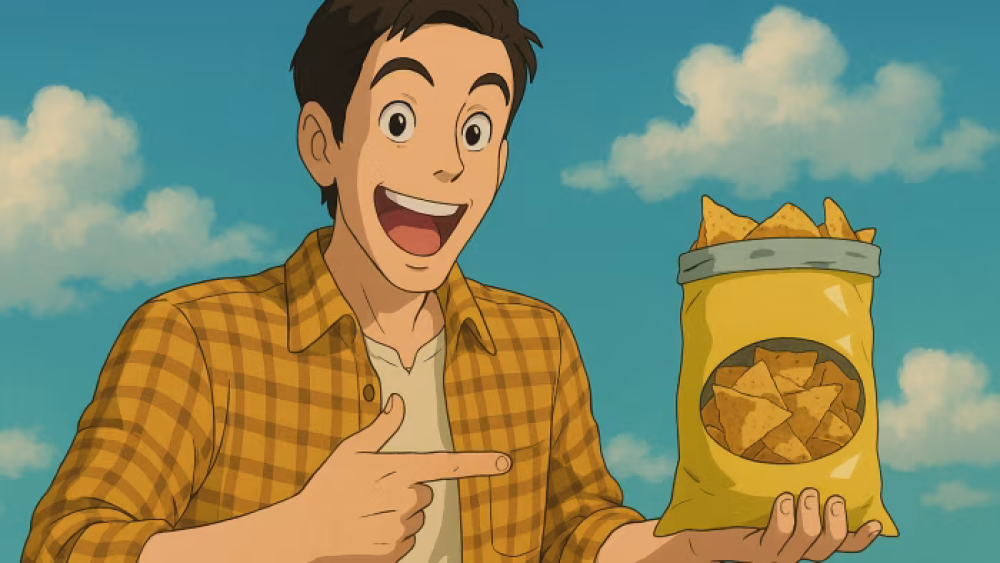
- Bài viết so sánh nghệ thuật được tạo bởi AI với ngành sản xuất snack để đề xuất cách tiếp cận mới trong việc điều chỉnh nội dung AI và bảo vệ nghệ sĩ.
- Tác giả chia sẻ kinh nghiệm cá nhân về việc nhận các túi snack từ người chú làm việc tại nhà máy sản xuất, cho thấy nhiều thương hiệu khác nhau thực chất đến từ cùng một dây chuyền sản xuất.
- CEO OpenAI Sam Altman tuyên bố nhu cầu sử dụng ChatGPT tăng cao đến mức "làm nóng" GPU, đặc biệt sau khi OpenAI cho phép trình tạo hình ảnh của họ sao chép nhiều tài sản trí tuệ không được cấp phép hơn.
- Các trình tạo hình ảnh AI mới chia hình ảnh thành các token và dự đoán các yếu tố phù hợp nhất, tạo ra các cảnh theo phong cách thống nhất, nhưng luật pháp quốc tế chưa xác định liệu việc tokenization này có vi phạm bản quyền của tài liệu huấn luyện hay không.
- Hiện tượng "Ghiblified" xuất hiện khi ChatGPT cho phép người dùng tạo hình ảnh theo phong cách Studio Ghibli - hãng hoạt hình Nhật Bản nổi tiếng với ngôn ngữ hình ảnh được phát triển trong 40 năm.
- Xu hướng này nhanh chóng bị lạm dụng trên internet, với những hình ảnh gây sốc như vụ 11/9 hay cảnh bắt giữ được vẽ theo phong cách Ghibli, thậm chí có cả hình ảnh của nhà đồng sáng lập Hayao Miyazaki nói rằng nghệ thuật có sự hỗ trợ của máy tính là "xúc phạm đến cuộc sống".
- Tác giả đề xuất áp dụng nguyên tắc "passing-off" từ quy định về nhãn hiệu riêng: một sản phẩm có thể giống sản phẩm khác miễn là không lợi dụng danh tiếng và thiện chí của người sáng tạo.
- AI tạo sinh không thực sự là sáng tạo mà là tiêu thụ - người dùng không muốn tạo ra thứ gì đó, họ chỉ muốn có được thứ gì đó. Máy móc không phát minh, nó chỉ lắp ráp.
- Xu hướng Ghibli nhanh chóng mất đi sức hút sau khi bắt đầu với các phiên bản nhại của hình ảnh nổi tiếng, sau đó chuyển sang giá trị gây sốc và cuối cùng không còn đi đến đâu.
- Sam Altman thừa nhận ChatGPT đã thêm một triệu người dùng mới trong một giờ sau khi quảng bá trò Ghibli, điều mà tác giả cho rằng nghe giống như một lời thú nhận.
📌 Thay vì tập trung vào cách thức sản xuất, nên đánh giá nghệ thuật AI dựa trên diện mạo và việc lợi dụng danh tiếng. Trường hợp Studio Ghibli cho thấy AI không thực sự sáng tạo mà chỉ lắp ráp, và OpenAI đã thu hút 1 triệu người dùng mới trong 1 giờ bằng cách khai thác phong cách nghệ thuật đã được xây dựng trong 40 năm.
https://www.ft.com/content/1674e431-5f4a-4952-8ea1-2e9add47abaf
#FT
Để tìm cách tốt hơn nhằm quản lý nghệ thuật AI và bảo vệ nghệ sĩ, hãy nhìn vào khoai tây chiên
Đánh giá sản phẩm dựa trên diện mạo, không phải cách thức tạo ra nó
Bryce Elder
Bài viết này nói về nghệ thuật được tạo ra bởi AI và khoai tây chiên, bắt đầu với cái quan trọng hơn trong hai thứ.
Mỗi tháng, chú tôi cho tôi một túi rác đầy khoai tây chiên. Nhân viên tại nhà máy sản xuất khoai tây chiên nơi chú làm việc có thể lấy nhiều khoai tây chiên tràn ra khỏi máng chuyền, vì vậy mỗi lần lấy là một tổng hợp ngẫu nhiên đại diện cho xu hướng đồ ăn nhẹ từ khoai tây chiên của Anh. Túi tháng này bao gồm khoai tây chiên từ 2 trong số 4 siêu thị lớn, một cửa hàng giảm giá của Đức và một cửa hàng bán sandwich có tầm quan trọng chiến lược quốc gia. Tất cả đều rơi ra từ cùng một dây chuyền sản xuất.
Điều đó không có nghĩa là chúng giống hệt nhau. Giấm có thể là giấm mạch nha hoặc giấm táo. Phô mai đôi khi được gắn với một chỉ định địa lý, và cách hiểu về "muối vừa đủ" so với "muối nhẹ" đáng được nghiên cứu học thuật. Điều tôi có thể nói với hiểu biết hiếm có là, bất kể bao bì nói gì, những khác biệt như vậy không đáng kể. Khoai tây chiên là khoai tây chiên.
Khoai tây chiên kiểu Mỹ thì khác biệt, nhưng cũng có thể được chiên. Giám đốc điều hành OpenAI Sam Altman tuyên bố tuần này rằng nhu cầu về bot ChatGPT của họ cao đến mức làm nóng GPU. Số lượng người dùng tăng vọt sau khi OpenAI cho phép trình tạo hình ảnh của mình sao chép một vũ trụ rộng lớn hơn về sở hữu trí tuệ chưa được cấp phép.
Cách thức hoạt động của nó không thú vị lắm, đó là lý do tại sao chúng ta bắt đầu với khoai tây chiên. Tóm lại: các trình tạo hình ảnh AI đầu tiên xếp từng pixel riêng lẻ. Loại mới hơn chia hình ảnh thành các token và dự đoán những yếu tố nào phù hợp nhất với nhau, do đó có thể tạo ra cảnh theo một phong cách thống nhất. Luật pháp quốc tế chưa giải quyết xong liệu loại tokenization này có vi phạm bản quyền của các tài liệu huấn luyện hay không, và OpenAI không chờ đợi để tìm hiểu. Thông qua việc ưu tiên cái có thể thực hiện được hơn là cái có trách nhiệm, một từ mới đã được thêm vào từ vựng văn hóa của chúng ta: "Ghiblified" (được Ghibli hóa).
Từ này ám chỉ Studio Ghibli, hãng phim hoạt hình Nhật Bản nổi tiếng với ngôn ngữ hình ảnh được chế tác trong hơn 40 năm với nhiều lớp cảm xúc như các câu chuyện của họ. ChatGPT đã làm cho phong cách Ghibli lai tạp có sẵn thông qua các lệnh văn bản đơn giản và, đây là internet, mọi thứ diễn ra đúng như bạn mong đợi.
Meme Ghibli trong vòng vài giờ đã tụt xuống giá trị gây sốc, sau đó không còn đi đâu được nữa
Bạn có bao giờ muốn thấy vụ 11/9 được thể hiện bằng màu pastel nhẹ nhàng của Nhật Bản? Hoặc một sĩ quan Mỹ còng tay một người phụ nữ đang khóc nức nở, được định kiểu để trông giống một cảnh từ Porco Rosso? Chúng tôi có thể làm bạn quan tâm đến một bộ phim hoạt hình được tái tạo máy móc về Hayao Miyazaki, người đồng sáng lập được tôn kính của Ghibli, nói với xưởng phim rằng nghệ thuật có sự hỗ trợ của máy tính là "một sự xúc phạm đối với cuộc sống"? Có lẽ là không, nhưng bất kỳ ai trực tuyến trong 2 tuần qua đều không có sự lựa chọn.
Đến lúc này, bạn có thể đang tự hỏi điều này có liên quan gì đến khoai tây chiên.
Việc AI thu thập sở hữu trí tuệ có sự tương đồng trong quy định về nhãn hiệu riêng. Không có bản quyền cho phong cách - một nhà sản xuất đồ ăn nhẹ không thể tuyên bố sử dụng độc quyền một hương vị cũng như một nghệ sĩ không thể đăng ký bản quyền cho một phong cách, ví dụ vậy - nhưng luật liên quan ở Anh và nơi khác, gọi là "passing-off" (mạo danh), vẫn tìm cách ngăn chặn việc sao chép sử dụng các đặc điểm riêng biệt của một thương hiệu khác theo cách có thể gây nhầm lẫn hoặc đánh lừa khách hàng.
Một sản phẩm có thể giống với sản phẩm khác miễn là không ăn theo danh tiếng và thiện chí của người sáng tạo ra nó. Và mặc dù các vụ kiện mạo danh hiếm khi thành công, đã có đủ tiền lệ được thiết lập để các công ty biết giới hạn. Khoai tây chiên trong ống: có lẽ không sao. Người đàn ông có ria mép trên ống: có lẽ không được.
Tôi đề xuất bảo vệ nghệ sĩ nhiều như bảo vệ nhà sản xuất khoai tây chiên. Đánh giá sản phẩm dựa trên diện mạo, không phải cách thức tạo ra nó.
Điểm xuất phát sai lầm khi cố gắng hiểu AI tạo sinh là coi những gì nó làm là sáng tạo. Không phải vậy. Đó là tiêu thụ. Người dùng không muốn tạo ra thứ gì đó, họ muốn có thứ gì đó. Máy móc không phát minh, nó lắp ráp. Đó là dây chuyền sản xuất của một nhà sản xuất hàng hóa.
Để chứng minh, hãy nhìn vào quỹ đạo của meme Ghibli. Nó bắt đầu với các bản parody của những hình ảnh nổi tiếng, trong vòng vài giờ đã tụt xuống giá trị gây sốc, sau đó không còn đi đâu được nữa. Trong số những người luôn trực tuyến, những người có vị trí tốt nhất để học và nhận biết cách vận hành cụ thể của một nhà máy nội dung, tính mới lạ đã mất đi trong chưa đầy một ngày.
Hầu hết các đột phá AI phi khoa học dường như chấm dứt theo cách này. Gần như không có gì được tạo ra bởi thuật toán để lại ấn tượng lâu dài, có lẽ vì không có sự sống nào tham gia vào quá trình tạo ra nó. Nghệ thuật tạo sinh là một sự mâu thuẫn.
Trong khi đó, khoai tây chiên là khoai tây chiên. Thật quá dễ dàng để bị sa lầy trong triết lý về việc liệu mã hóa một tác phẩm nghệ thuật mà không bồi thường cho người sáng tạo ra nó có phải là hành vi trộm cắp hay không. Một câu hỏi tốt hơn liên quan đến việc liệu ai đó đang tìm cách kiếm lợi từ danh tiếng và thiện chí khó kiếm được của người khác. Chỉ cần nhìn vào sản phẩm là đủ để biết.
Sau khi ủng hộ và quảng bá cho màn trình diễn Ghibli, Altman cho biết ChatGPT đã thêm một triệu người dùng mới trong một giờ. Đặt trong bối cảnh đúng đắn, nó nghe giống như một lời thú nhận.
Bryce Elder là Biên tập viên Thành phố của FT, Alphaville
For a better way to regulate AI art and protect artists, look at crisps
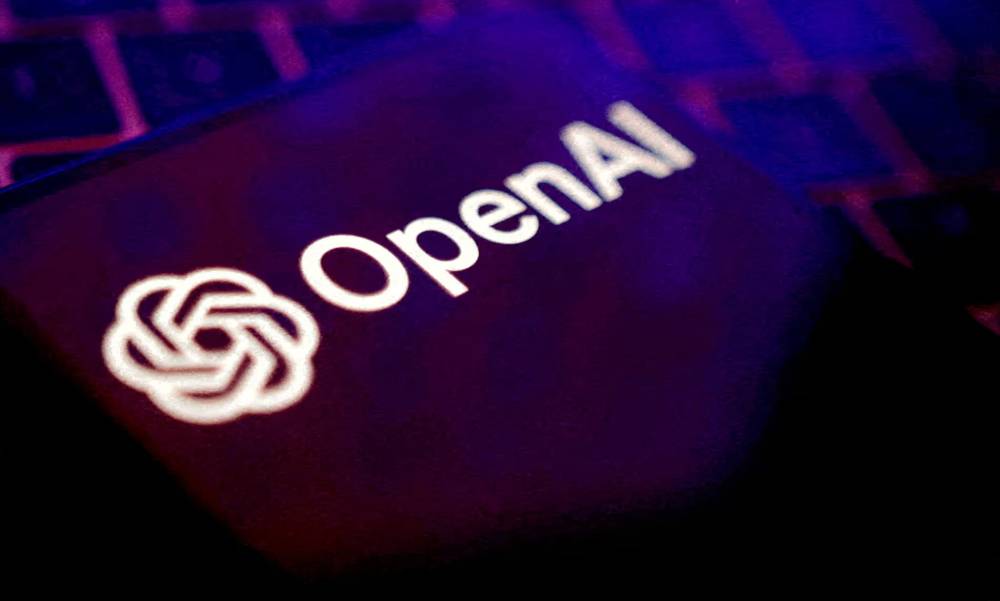
- Tòa án liên bang Mỹ đã quyết định hợp nhất 12 vụ kiện bản quyền chống lại OpenAI và Microsoft tại New York, bất chấp việc đa số nguyên đơn phản đối việc tập trung này.
- Hội đồng tư pháp Mỹ về tranh chấp đa khu vực đã ra lệnh chuyển giao vào ngày 4/4/2025, cho rằng việc hợp nhất sẽ "cho phép một thẩm phán duy nhất điều phối quá trình thu thập bằng chứng, hợp lý hóa các thủ tục trước khi xét xử và loại bỏ các phán quyết không nhất quán".
- Các vụ kiện từ California do các tác giả nổi tiếng như Ta-Nehisi Coates, Michael Chabon, Junot Díaz và Sarah Silverman sẽ được chuyển đến New York và kết hợp với các vụ kiện từ các cơ quan truyền thông như New York Times và các tác giả khác như John Grisham, George Saunders, Jonathan Franzen và Jodi Picoult.
- Lệnh chuyển giao nêu rõ các vụ kiện "chia sẻ các câu hỏi thực tế phát sinh từ cáo buộc rằng OpenAI và Microsoft đã sử dụng các tác phẩm có bản quyền, mà không có sự đồng ý hoặc bồi thường, để huấn luyện các mô hình ngôn ngữ lớn (LLMs) của họ".
- Các công ty công nghệ lập luận rằng việc họ sử dụng tác phẩm có bản quyền để huấn luyện AI được cho phép theo học thuyết "sử dụng hợp lý", cho phép sử dụng trái phép các tác phẩm có bản quyền trong một số trường hợp nhất định.
- Người phát ngôn OpenAI hoan nghênh quyết định này và mong muốn làm rõ tại tòa rằng "các mô hình của họ được huấn luyện trên dữ liệu công khai, dựa trên sử dụng hợp lý và hỗ trợ đổi mới".
- Nhiều tác giả nổi tiếng kiện OpenAI cũng đã kiện Meta vì vi phạm bản quyền trong việc huấn luyện các mô hình AI. Hồ sơ tòa án tháng 1 cáo buộc CEO Meta Mark Zuckerberg đã phê duyệt việc công ty sử dụng "thư viện bóng tối" LibGen, chứa hơn 7,5 triệu cuốn sách.
- Vào ngày 4/4, các tác giả đã tập trung bên ngoài văn phòng Meta ở London để phản đối việc công ty sử dụng sách có bản quyền, với các biểu ngữ như "Get the Zuck off our books" và "I'd write a better sign but you'd just steal it".
- Cùng ngày, Amazon xác nhận tính năng mới "Recaps" trên Kindle, cung cấp cho người dùng bản tóm tắt cốt truyện và nhân vật của một bộ sách, sẽ được tạo ra bởi AI.
- Tuần này, chính phủ Anh đang cố gắng xoa dịu các lo ngại từ các nghị sĩ về đề xuất bản quyền của mình - cho phép các công ty AI huấn luyện mô hình trên tài liệu có bản quyền trừ khi chủ sở hữu quyền từ chối.
📌 Cuộc chiến pháp lý về bản quyền trong lĩnh vực AI đang leo thang với việc hợp nhất 12 vụ kiện tại New York. Các tác giả và nhà xuất bản đấu tranh bảo vệ quyền lợi trước việc OpenAI, Microsoft và Meta sử dụng nội dung có bản quyền để huấn luyện AI, trong khi các công ty công nghệ viện dẫn nguyên tắc "sử dụng hợp lý".
https://www.theguardian.com/books/2025/apr/04/us-authors-copyright-lawsuits-against-openai-and-microsoft-combined-in-new-york-with-newspaper-actions
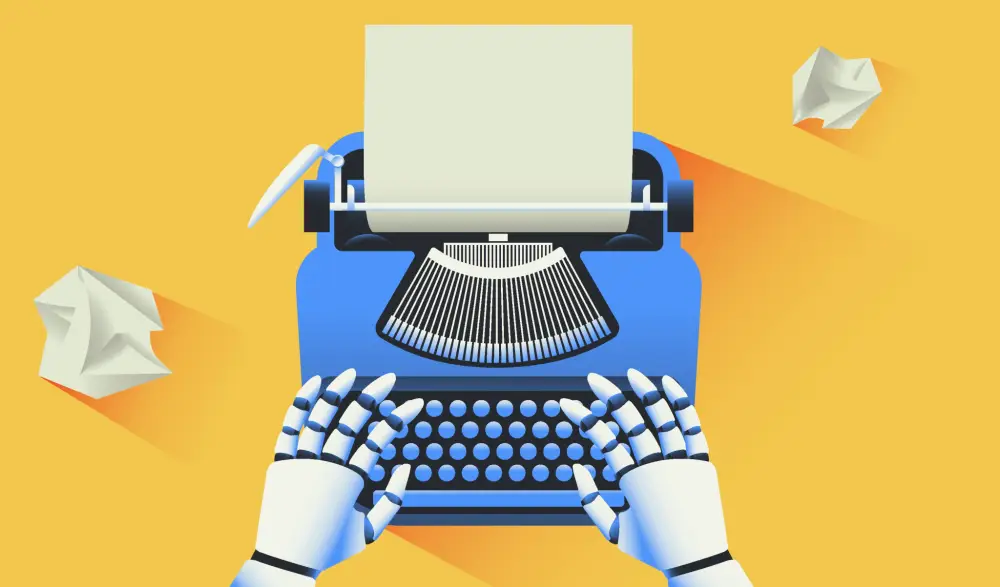
- Một nghiên cứu mới từ các nhà khoa học tại Đại học Washington, Đại học Copenhagen và Stanford đưa ra bằng chứng cho thấy OpenAI đã huấn luyện mô hình AI của mình trên nội dung có bản quyền.
- OpenAI hiện đang đối mặt với nhiều vụ kiện từ tác giả, lập trình viên và chủ sở hữu bản quyền khác, cáo buộc công ty sử dụng tác phẩm của họ (sách, mã nguồn...) để phát triển mô hình AI mà không xin phép.
- Nghiên cứu đề xuất phương pháp mới để xác định dữ liệu huấn luyện đã được "ghi nhớ" bởi các mô hình AI thông qua API, như của OpenAI.
- Phương pháp này dựa trên các từ được gọi là "high-surprisal" (từ ngữ bất ngờ cao) - những từ nổi bật vì không phổ biến trong ngữ cảnh của một tác phẩm lớn hơn.
- Các nhà nghiên cứu đã kiểm tra nhiều mô hình của OpenAI, bao gồm GPT-4 và GPT-3.5, bằng cách xóa các từ ngữ bất ngờ cao khỏi đoạn trích từ sách tiểu thuyết và bài báo của New York Times, sau đó yêu cầu mô hình "đoán" từ nào đã bị che.
- Kết quả cho thấy GPT-4 có dấu hiệu ghi nhớ các phần của sách tiểu thuyết phổ biến, bao gồm sách trong bộ dữ liệu BookMIA chứa các mẫu sách điện tử có bản quyền.
- Kết quả cũng cho thấy mô hình đã ghi nhớ các phần của bài báo New York Times, mặc dù ở tỷ lệ thấp hơn so với sách.
- Abhilasha Ravichander, nghiên cứu sinh tiến sĩ tại Đại học Washington và đồng tác giả của nghiên cứu, cho biết phát hiện này làm sáng tỏ về "dữ liệu gây tranh cãi" mà các mô hình có thể đã được huấn luyện.
- OpenAI từ lâu đã ủng hộ việc nới lỏng các hạn chế về phát triển mô hình sử dụng dữ liệu có bản quyền, đồng thời vận động hành lang nhiều chính phủ để luật hóa quy tắc "sử dụng hợp lý" đối với phương pháp huấn luyện AI.
- Mặc dù OpenAI có một số thỏa thuận cấp phép nội dung và cung cấp cơ chế cho phép chủ sở hữu bản quyền đánh dấu nội dung họ không muốn công ty sử dụng cho mục đích huấn luyện, vấn đề pháp lý về việc sử dụng dữ liệu có bản quyền vẫn còn gây tranh cãi.
📌 Nghiên cứu từ ba đại học danh tiếng đã phát hiện GPT-4 và GPT-3.5 "ghi nhớ" nội dung có bản quyền từ sách và báo chí. Phương pháp dùng "từ ngữ bất ngờ cao" cho thấy OpenAI có thể đã huấn luyện mô hình trên dữ liệu có bản quyền, làm gia tăng tranh cãi pháp lý hiện tại.
https://techcrunch.com/2025/04/04/openais-models-memorized-copyrighted-content-new-study-suggests/
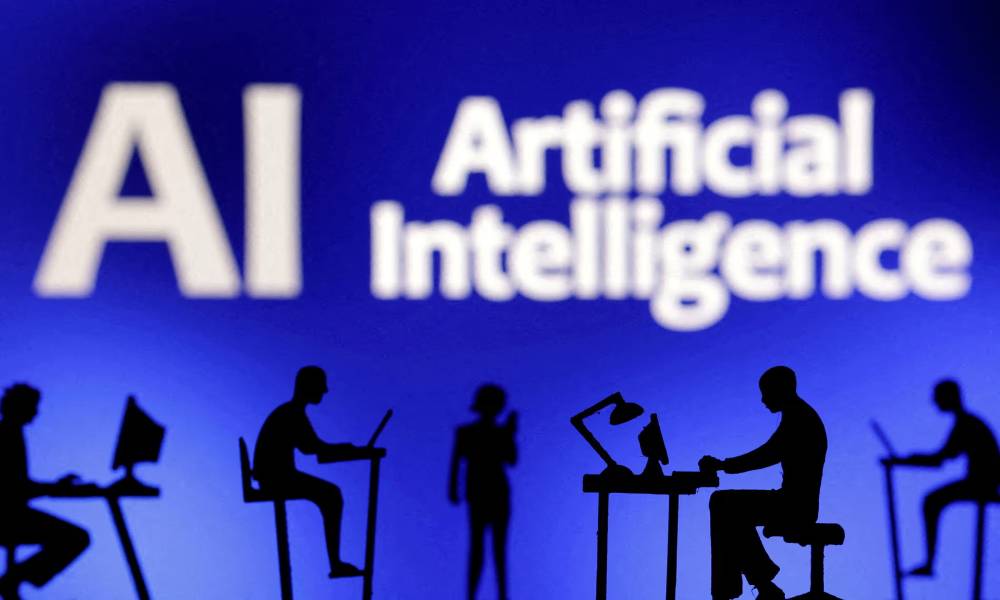
- Chính phủ Anh đang nỗ lực xoa dịu những lo ngại từ các nghị sĩ và nghị viện về đề xuất bản quyền bằng cách cam kết đánh giá tác động kinh tế của kế hoạch này.
- Các chuyên gia sáng tạo nổi tiếng như Sir Paul McCartney, Sir Tom Stoppard và Kate Bush đã mạnh mẽ chỉ trích đề xuất cho phép các công ty AI huấn luyện mô hình của họ trên tác phẩm được bảo vệ bản quyền mà không cần xin phép, trừ khi chủ sở hữu quyền từ chối.
- Lập trường này đã nhận được sự ủng hộ từ các nghị sĩ, những người đã thông qua các sửa đổi phản đối đề xuất, và từ một số nghị sĩ hậu thuẫn.
- Các nhượng bộ được đề xuất cho nghị sĩ và các nghị viên trong tuần này bao gồm đánh giá tác động kinh tế, với báo cáo có thể giải quyết các vấn đề như cách nhà phát triển AI truy cập dữ liệu để đào tạo mô hình và tính minh bạch xung quanh việc sử dụng tác phẩm được bảo vệ bản quyền.
- Các bộ trưởng hy vọng những nhượng bộ này sẽ cho phép dự luật dữ liệu (sử dụng và truy cập) được thông qua. Dự luật đã được sử dụng như một phương tiện để chống lại các đề xuất nhưng hiện có thể bị mắc kẹt trong một quá trình được gọi là "ping pong", nơi một dự luật được chuyển qua lại giữa Thượng viện và Hạ viện.
- Beeban Kidron, nghị sĩ đã thành công đưa ra các sửa đổi cho dự luật để chống lại các đề xuất, cho rằng Bộ Khoa học, Đổi mới và Công nghệ "gần như hoàn toàn" tập trung vào lợi ích của các nhóm vận động hành lang công nghệ Mỹ.
- James Frith, thành viên Đảng Lao động của ủy ban văn hóa, truyền thông và thể thao, cho biết ông vẫn được khuyến khích bởi cam kết đối thoại của chính phủ, nhưng cần có sự minh bạch hoàn toàn về cách sử dụng tác phẩm được bảo vệ bản quyền và việc sử dụng tài liệu đó cần được bồi thường.
- Người phát ngôn chính phủ cho biết họ đang xem xét cẩn thận các phản hồi tham vấn và tiếp tục tương tác với các công ty công nghệ, ngành công nghiệp sáng tạo và quốc hội để định hình cách tiếp cận của họ.
- Chính phủ dự kiến sẽ công bố phản hồi của mình đối với cuộc tham vấn về các đề xuất vào mùa hè hoặc trước tháng 10.
📌 Chính phủ Anh đang phải nhượng bộ trước làn sóng phản đối mạnh mẽ từ các nghệ sĩ nổi tiếng như Paul McCartney về dự luật bản quyền AI. Họ cam kết đánh giá tác động kinh tế và tăng tính minh bạch, nhưng vẫn chưa đưa ra quyết định cuối cùng cho đến mùa hè hoặc tháng 10 năm 2025.
https://www.theguardian.com/technology/2025/apr/02/uk-government-tries-to-placate-opponents-of-ai-copyright-bill
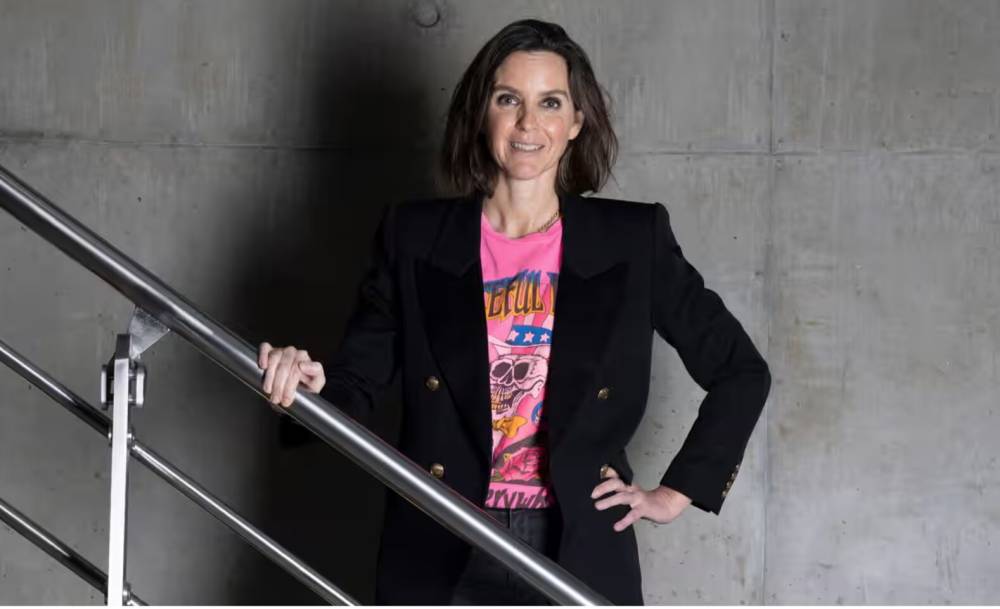
- Giám đốc điều hành Channel 4, Alex Mahon, cảnh báo rằng các công ty AI đang "hút giá trị" từ ngành công nghiệp sáng tạo trị giá 125 tỷ bảng của Vương quốc Anh.
- Mahon phát biểu trước các nghị sĩ rằng nếu chính phủ theo đuổi kế hoạch cho phép các công ty AI tiếp cận tác phẩm sáng tạo trừ khi chủ sở hữu bản quyền từ chối (opt-out), điều này sẽ đặt ngành công nghiệp sáng tạo Anh vào "vị thế nguy hiểm".
- Các nhà phê bình đề xuất opt-out của chính phủ, được đưa ra trong một cuộc tham vấn kết thúc vào tháng 2, cho rằng nó không công bằng và không thực tế.
- Các mô hình AI tạo sinh được đào tạo trên lượng dữ liệu khổng lồ để tạo ra các phản hồi cực kỳ thực tế.
- Mahon cho biết việc cho phép các mô hình ngôn ngữ lớn (LLM) tiếp tục tự do thu thập dữ liệu gây ra mối đe dọa lớn đối với ngành công nghiệp sáng tạo, tạo ra 125 tỷ bảng giá trị gia tăng gộp (GVA).
- Ngành công nghiệp sáng tạo chiếm 6% GVA của Vương quốc Anh và đang tăng trưởng nhanh hơn 1,5 lần so với các lĩnh vực khác.
- Các tác giả, nghệ sĩ và giám đốc điều hành từ ngành công nghiệp phim và truyền hình đã lập luận rằng việc cho phép các công ty đào tạo chương trình AI trên tác phẩm của họ mà không có giấy phép đe dọa sinh kế của họ.
- Channel 4 ủng hộ chế độ bản quyền "opt-in", đặt gánh nặng lên các công ty AI, không phải lên các nhà sáng tạo nội dung.
- Mahon cũng cho biết Channel 4 đã hòa vốn trong năm ngoái, cải thiện so với khoản thâm hụt 52 triệu bảng năm 2023.
- Bà cũng cảnh báo rằng các quy định về sự nổi bật của chương trình phát sóng dịch vụ công cộng (PSB) như Channel 4, BBC và ITV có thể cần được mở rộng sang các nền tảng mới, bao gồm cả nền tảng xã hội.
📌 Các công ty AI đang khai thác giá trị từ ngành sáng tạo Anh trị giá 125 tỷ bảng mà không trả phí bản quyền. Channel 4 kêu gọi chuyển từ cơ chế "opt-out" sang "opt-in", buộc các công ty AI phải cấp phép và trả tiền cho nội dung họ sử dụng để bảo vệ ngành đang tăng trưởng nhanh gấp 1,5 lần các lĩnh vực khác.
https://www.theguardian.com/technology/2025/apr/01/ai-firms-scraping-value-uk-creative-industries-says-channel-4-boss-alex-mahon
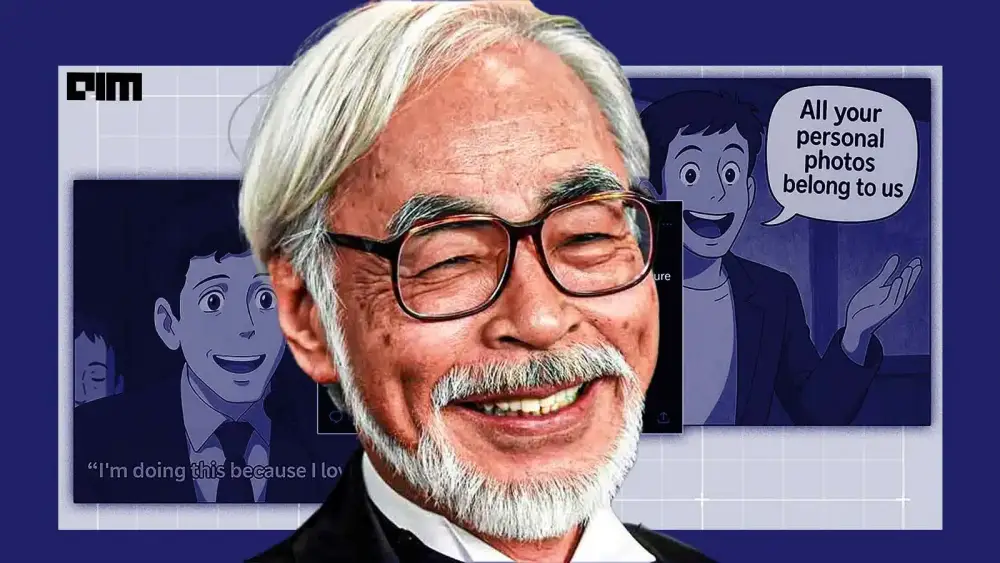
-
Grant Slatton, kỹ sư sáng lập tại Row Zero, đã sử dụng tính năng tạo hình ảnh của OpenAI's 4o để tạo ra phiên bản Studio Ghibli từ một bức ảnh, khởi đầu cho xu hướng vẫn đang phát triển mạnh mẽ.
-
OpenAI gần đây đã giới thiệu tính năng tạo hình ảnh tích hợp trong GPT-4o, cho phép người dùng tạo nhiều loại hình ảnh như infographic, truyện tranh, biển báo, đồ họa, thực đơn, meme và nhiều hơn nữa.
-
Xu hướng này đặt ra nhiều câu hỏi quan trọng về khả năng mô phỏng phong cách nghệ thuật của Studio Ghibli và vấn đề bản quyền liên quan.
-
Theo DeepLearning.AI, luật pháp Nhật Bản cho phép các nhà phát triển huấn luyện mô hình AI trên các tài liệu được bảo vệ bản quyền.
-
Năm 2024, Cơ quan Văn hóa Nhật Bản đã công bố tài liệu "Hiểu biết chung về AI và bản quyền tại Nhật Bản", giải thích khi nào luật bản quyền có hiệu lực và khi nào dữ liệu có thể được sử dụng cho AI.
-
Tài liệu này nêu rõ việc sử dụng tác phẩm có bản quyền không nhằm mục đích thưởng thức có thể được phép mà không cần sự cho phép của chủ sở hữu bản quyền.
-
Bảo hộ bản quyền áp dụng cho "biểu đạt sáng tạo" của một ý tưởng chứ không phải bản thân ý tưởng đó, nên tài liệu do AI tạo ra áp dụng "phong cách của người sáng tạo" không vi phạm bản quyền nếu phong cách đó chỉ bao gồm một ý tưởng.
-
Gergely Orosz, người sáng tạo The Pragmatic Engineer Newsletter, cho rằng OpenAI chọn trưng bày hình ảnh theo phong cách Studio Ghibli thay vì nhân vật Disney hay Marvel Comics vì Nhật Bản là quốc gia lớn duy nhất hợp pháp hóa việc huấn luyện trên tác phẩm có bản quyền.
-
Evan Brown, luật sư sở hữu trí tuệ tại công ty luật Neal & McDevitt, nhận định các sản phẩm như trình tạo hình ảnh của GPT-4o hoạt động trong vùng xám pháp lý, vì phong cách không được bảo vệ rõ ràng bởi bản quyền.
-
Xu hướng này đã lan rộng, với nhiều người gọi các sáng tạo là hình ảnh "Ghiblified", kể cả những nhân vật nổi tiếng như Sachin Tendulkar và Sam Altman, CEO của OpenAI.
-
Giữa xu hướng này, một nhận xét cũ của Hayao Miyazaki, một trong những nhà sáng lập Studio Ghibli, về nghệ thuật do AI tạo ra là "sự xúc phạm đối với cuộc sống" đã được nhắc lại.
-
Mặc dù có những lo ngại về bản quyền và khía cạnh đạo đức của việc tái tạo phong cách nghệ thuật, di sản của phong cách nghệ thuật gốc không bao giờ có thể bị thay thế.
📌 Luật bản quyền Nhật Bản tạo "lỗ hổng" cho phép huấn luyện AI trên tác phẩm có bản quyền nếu không nhằm mục đích thưởng thức. Điều này đã góp phần tạo ra xu hướng "Ghiblification" gây tranh cãi, khi GPT-4o của OpenAI có thể mô phỏng phong cách Studio Ghibli mà không vi phạm pháp luật.
https://analyticsindiamag.com/ai-features/did-japans-copyright-loophole-spark-the-ghiblification-of-ai/
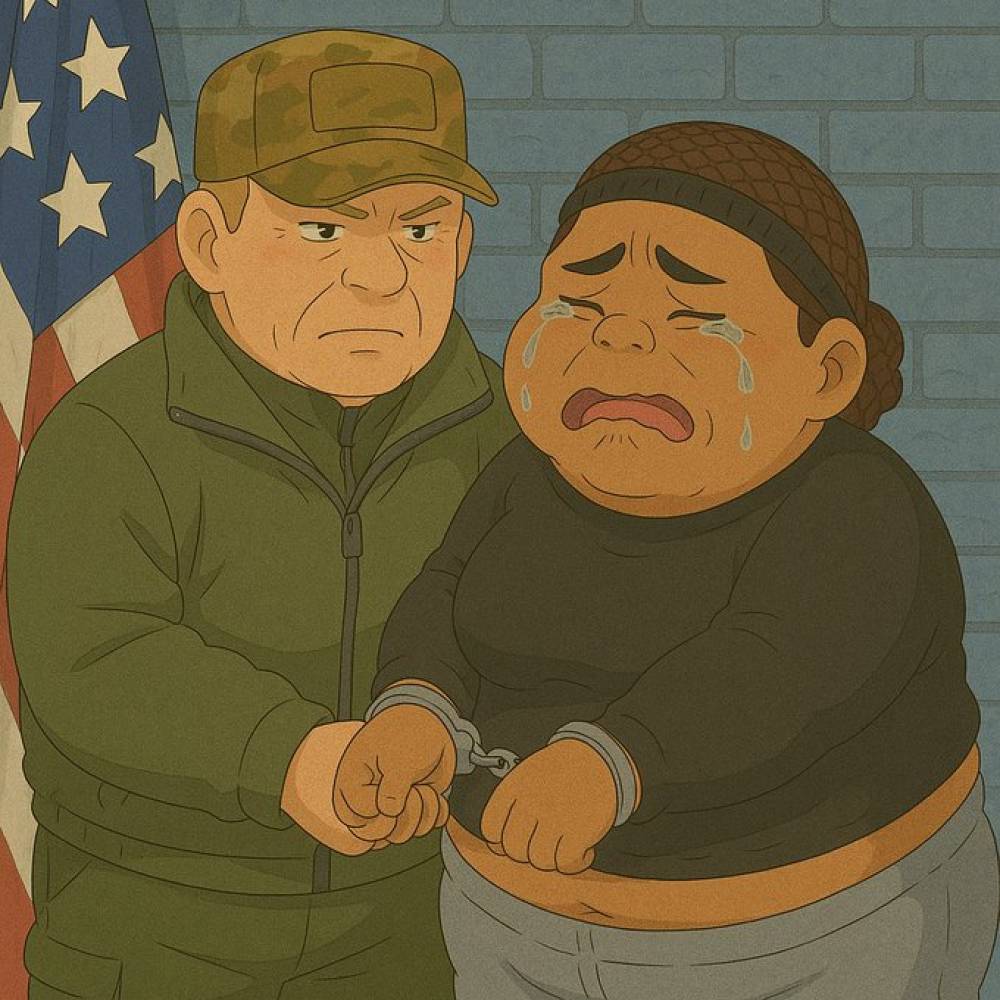
-
Hình ảnh AI từ công cụ tạo hình mới của OpenAI đã lan truyền mạnh mẽ trên mạng xã hội sau khi công ty nới lỏng quy định về loại hình ảnh người dùng có thể tạo ra.
-
Người dùng đã tạo hàng loạt hình ảnh theo phong cách Studio Ghibli, hãng phim hoạt hình đứng sau các tác phẩm như "Princess Mononoke" và "Spirited Away".
-
Ban đầu, mọi người chia sẻ hình ảnh bản thân và bạn bè theo phong cách Ghibli, nhưng sau đó xuất hiện nhiều hình ảnh về các sự kiện lịch sử gây sốc như vụ khủng bố 11/9, vụ ám sát John F. Kennedy và bức ảnh "Hành quyết tại Sài Gòn" năm 1968.
-
Tài khoản X chính thức của Nhà Trắng cũng tham gia xu hướng này, đăng một hình ảnh phong cách Ghibli về một phụ nữ đang khóc khi bị bắt giữ, được cho là một kẻ buôn bán fentanyl.
-
OpenAI phát hành phiên bản cập nhật công cụ tạo hình AI vào ngày 26/3/2025, đồng thời nới lỏng quy định, cho phép người dùng tạo hình ảnh bắt chước phong cách nghệ thuật hiện có.
-
Joanne Jang, giám đốc sản phẩm tại OpenAI, tuyên bố: "Nhân viên phòng thí nghiệm AI không nên là người quyết định những gì mọi người được phép tạo ra".
-
CEO OpenAI Sam Altman đã ăn mừng khoảnh khắc viral này, thay đổi ảnh đại diện trên X thành phiên bản "Ghibli hóa" của chính mình.
-
Studio Ghibli, do nghệ sĩ Hayao Miyazaki đứng đầu, nổi tiếng với màu nước mơ mộng và minh họa phức tạp - mỗi khung hình trong phim Ghibli đều được vẽ và tô màu thủ công.
-
Miyazaki từng phản đối việc sử dụng trí tuệ nhân tạo trong nghệ thuật, nói rằng: "Tôi sẽ không bao giờ muốn đưa công nghệ này vào tác phẩm của mình. Tôi cảm thấy mạnh mẽ rằng đó là sự xúc phạm đến chính cuộc sống."
-
Nhiều nghệ sĩ đã đăng bài phản đối, trong bối cảnh cuộc chiến về dữ liệu huấn luyện AI và quyền lợi của nghệ sĩ vẫn đang diễn ra.
-
Các công ty AI như OpenAI, Google, Meta và Microsoft đều sử dụng dữ liệu công khai từ internet để huấn luyện, nhưng không tiết lộ cụ thể những gì họ đã sử dụng cho từng mô hình AI.
-
Một loạt vụ kiện đang thách thức việc sử dụng tác phẩm có bản quyền trong việc huấn luyện AI, nhưng các công ty AI lập luận rằng điều này đủ điều kiện là "sử dụng hợp lý" theo luật bản quyền.
📌 OpenAI đã nới lỏng quy định cho phép tạo hình ảnh phong cách Studio Ghibli, gây ra làn sóng tranh cãi về quyền tác giả. Trong khi CEO Sam Altman ăn mừng xu hướng viral này, Hayao Miyazaki từng gọi AI là "sự xúc phạm đến cuộc sống". Các vụ kiện về bản quyền vẫn đang chờ phán quyết từ tòa án.
https://www.washingtonpost.com/technology/2025/03/28/chatgpt-ghibli-ai-images-copyright/
Hình ảnh AI phong cách Ghibli lan truyền mạnh mẽ khi OpenAI nới lỏng quy định
OpenAI đang thay đổi chính sách của mình về việc sử dụng phong cách nghệ thuật, ngay cả khi cuộc tranh luận về nghĩa vụ của các công ty AI đối với các nghệ sĩ vẫn đang diễn ra.
Ngày 28 tháng 3 năm 2025 lúc 10:20 tối EDT
Hôm qua lúc 10:20 tối EDT
6 phút
Sam Altman là CEO của OpenAI. Altman cho biết trong tuần này rằng công ty đã phải làm chậm quyền truy cập của người dùng vào các công cụ của mình vì quá nhiều người đang cố gắng sử dụng cùng một lúc. (Jabin Botsford/The Washington Post)
Tác giả: Gerrit De Vynck và Tatum Hunter
Hình ảnh trí tuệ nhân tạo từ công cụ tạo hình ảnh mới của OpenAI đã lan truyền mạnh mẽ trong tuần này trên mạng xã hội sau khi công ty nới lỏng quy định về loại hình ảnh mà người dùng có thể tạo ra.
Mọi người đã áp dụng công cụ này để tạo ra hình ảnh theo phong cách của Studio Ghibli, hãng phim hoạt hình đứng sau các bộ phim bao gồm "Princess Mononoke" và "Spirited Away". Ban đầu, họ chia sẻ hình ảnh của chính mình và bạn bè theo phong cách biểu tượng của Ghibli. Nhưng chẳng bao lâu sau, mọi người đã tạo ra hình ảnh phong cách Ghibli về các sự kiện lịch sử, bao gồm một chiếc máy bay đâm vào tòa tháp đôi, vụ ám sát John F. Kennedy và bức ảnh "Hành quyết tại Sài Gòn" về một vị tướng Nam Việt Nam bắn một tù nhân Việt Cộng vào đầu từ cự ly gần vào năm 1968.
Tài khoản X chính thức của Nhà Trắng cũng tham gia vào trào lưu này, đăng một hình ảnh phong cách Ghibli về một phụ nữ đang khóc bị một nhân viên Cơ quan Di trú và Hải quan bắt giữ. Tài khoản giải thích rằng hình ảnh này là của một người thật mà họ cho biết là một người buôn bán fentanyl vừa bị bắt.
Các bài đăng lan truyền trên mạng xã hội đã làm dấy lên lại cuộc tranh luận về nghĩa vụ của các công ty AI đối với các nghệ sĩ và liệu luật bản quyền có cần phát triển để kết hợp những thay đổi công nghệ nhanh chóng mà AI đang mang lại hay không.
Nhà sản xuất ChatGPT OpenAI đã phát hành phiên bản cập nhật của công cụ tạo hình ảnh AI vào thứ Ba và cùng lúc đó, công ty cho biết đang nới lỏng quy định về cách mọi người có thể sử dụng công nghệ của mình, cho phép họ sử dụng AI để tạo ra hình ảnh bắt chước diện mạo và cảm giác của các phong cách nghệ thuật hiện có.
Sự bùng nổ của hình ảnh, từ ảnh tự sướng thân thiện đến tái tạo các bức ảnh lịch sử bạo lực, nhấn mạnh cách các công cụ AI đang đảo lộn thế giới nghệ thuật và bản quyền, mở ra một thế giới nơi bất kỳ ai cũng có thể sử dụng AI để tạo ra những hình ảnh, bài hát và văn bản phức tạp bắt chước phong cách của các thiên tài sáng tạo, những người có thể đã đào tạo trong nhiều năm để trau dồi kỹ năng của họ. Các vụ kiện đang được đưa ra tòa án, cố gắng buộc các công ty AI phải trả tiền cho các hình ảnh và nội dung khác mà họ đã thu thập từ internet để đào tạo công nghệ của mình. Nhưng các công ty vẫn tiếp tục phát triển công nghệ mới, lập luận rằng AI sẽ cho phép nhiều người thực hiện tầm nhìn sáng tạo của họ và giúp các nghệ sĩ hiện tại tạo ra những tác phẩm vĩ đại hơn.
"Nhân viên phòng thí nghiệm AI không nên là người phân xử về những gì mọi người nên và không nên được phép tạo ra," Joanne Jang, người đứng đầu sản phẩm tại OpenAI, đã nói vào thứ Năm trong một bài đăng trên X giải thích tại sao OpenAI đã thay đổi chính sách của mình để cho phép nhiều tự do hơn về loại hình ảnh mà mọi người được phép tạo ra với các công cụ của mình.
Người phát ngôn của Nippon TV, tập đoàn truyền thông Nhật Bản sở hữu Studio Ghibli, không phản hồi yêu cầu bình luận. Đại diện của GKIDS, công ty phân phối phim Studio Ghibli tại Hoa Kỳ, không phản hồi các yêu cầu bình luận.
"Mục tiêu của chúng tôi là mang lại cho người dùng càng nhiều tự do sáng tạo càng tốt. Chúng tôi tiếp tục ngăn chặn việc tạo ra theo phong cách của các nghệ sĩ đang sống riêng lẻ, nhưng chúng tôi cho phép các phong cách studio rộng hơn — mà mọi người đã sử dụng để tạo ra và chia sẻ một số tác phẩm gốc của người hâm mộ thực sự thú vị và truyền cảm hứng," Kayla Wood, người phát ngôn của OpenAI cho biết. "Chúng tôi luôn học hỏi từ việc sử dụng và phản hồi trong thế giới thực, và chúng tôi sẽ tiếp tục tinh chỉnh chính sách của mình khi tiến hành."
CEO OpenAI Sam Altman đã ăn mừng khoảnh khắc lan truyền mạnh mẽ này, thay đổi hình đại diện của mình trên X thành phiên bản "Ghibli hóa" của chính mình và sau đó nói rằng công ty đã phải làm chậm quyền truy cập của mọi người vào các công cụ của mình vì quá nhiều người dùng đang cố gắng sử dụng cùng một lúc.
Studio Ghibli, đứng đầu bởi nghệ sĩ Hayao Miyazaki, nổi tiếng với màu nước mơ màng và minh họa phức tạp — mỗi khung hình trong một bộ phim Ghibli đều được vẽ và tô màu bằng tay, hãng phim đã nói. Đôi khi các nghệ sĩ dành hàng tháng làm việc cho một cảnh duy nhất. Chính Miyazaki đã chỉ trích việc sử dụng trí tuệ nhân tạo trong nghệ thuật.
"Tôi sẽ không bao giờ muốn kết hợp công nghệ này vào công việc của mình," ông nói trong một video đăng trên YouTube vào năm 2016. "Tôi mạnh mẽ cảm thấy đó là một sự xúc phạm đến chính cuộc sống."
Khi các nguồn cấp dữ liệu xã hội đầy ảnh tự sướng phong cách Ghibli, một số nghệ sĩ đã đăng bài để phản đối: Trong bối cảnh cuộc chiến đang diễn ra về dữ liệu đào tạo AI và quyền của các nghệ sĩ, liệu OpenAI có thực sự để người dùng của mình spam internet với những hình ảnh rõ ràng phụ thuộc vào phong cách riêng biệt của Miyazaki không?
"Phần buồn không phải là AI đang tạo ra nghệ thuật phong cách Ghibli, sự bắt chước là không thể tránh khỏi," nhà thơ Puneet Sharma đã nói trong một bài đăng trên X. "Điều buồn là hầu hết người dùng không biết gì về Miyazaki, họ cũng không hiểu sự khác biệt giữa quá trình và sản phẩm đã xử lý, giữa sáng tạo như một hành trình và tiêu dùng như một lối tắt."
Kể từ khi OpenAI phát hành mô hình công khai đầu tiên của ChatGPT vào năm 2022, các câu hỏi pháp lý đã xoay quanh việc công ty sử dụng tác phẩm của các nghệ sĩ và nhà văn thực để đào tạo chatbot của mình. Nhiều nhà xuất bản và người sáng tạo — từ báo trực tuyến đến nhạc sĩ nổi tiếng — đã lập luận rằng các công ty AI đang vi phạm luật bản quyền khi họ thu thập nội dung từ internet để dạy chatbot cách tạo ra văn bản, hình ảnh và video.
Các mô hình AI như những mô hình được xây dựng bởi OpenAI được đào tạo trên một lượng lớn thông tin. OpenAI và các công ty AI khác bao gồm Google, Meta và Microsoft đều đã sử dụng dữ liệu công khai từ internet cho việc đào tạo này, mặc dù họ không tiết lộ cụ thể những gì họ đã sử dụng cho từng mô hình AI riêng lẻ. Các bộ dữ liệu về phim và hình ảnh tĩnh của Studio Ghibli dễ dàng có sẵn trực tuyến.
Một làn sóng các vụ kiện đang tìm cách thách thức việc sử dụng tác phẩm có bản quyền trong đào tạo AI, nhưng các công ty AI đã lập luận rằng điều đó đủ điều kiện là sử dụng hợp lý, một khái niệm trong luật bản quyền cho phép ai đó tái sử dụng tác phẩm nghệ thuật của người khác nếu họ biến đổi hoặc remix nó theo cách sáng tạo. Một số vụ kiện lớn từ các tác giả và tổ chức tin tức đang tìm cách xác định liệu việc tạo ra bằng AI có thực sự thuộc sử dụng hợp lý hay không. Các phán quyết của tòa án vẫn còn cách đây nhiều tháng.
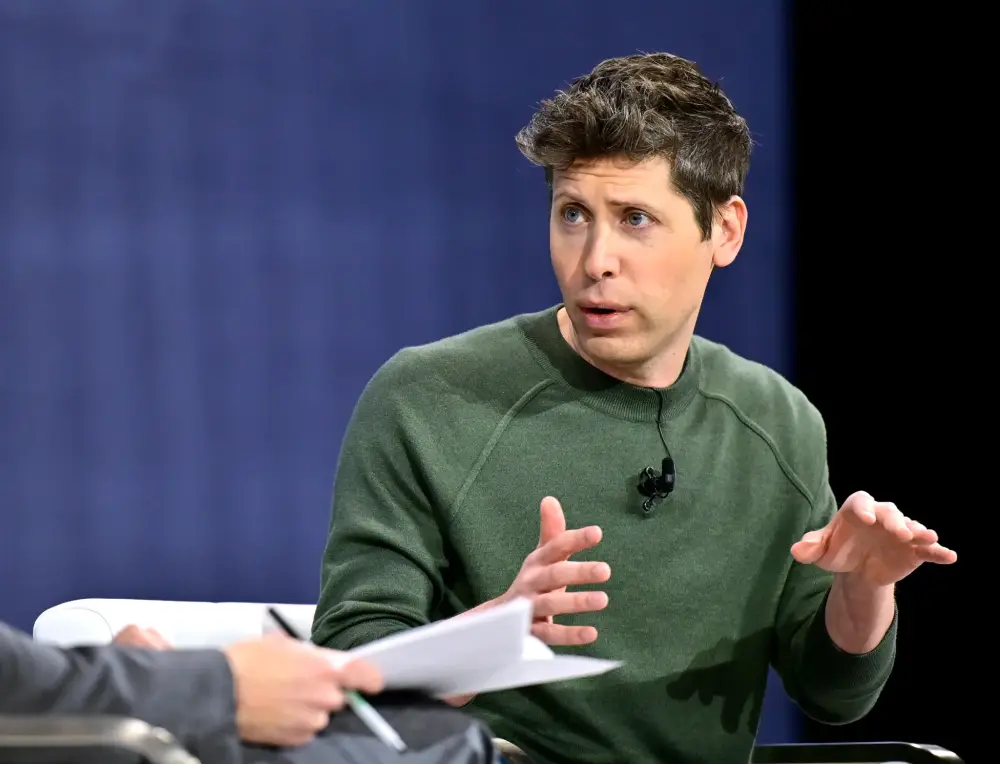
-
Chỉ một ngày sau khi công cụ tạo hình ảnh AI mới của ChatGPT ra mắt, mạng xã hội đã ngập tràn các meme AI theo phong cách Studio Ghibli, hãng phim hoạt hình Nhật Bản nổi tiếng với các tác phẩm như "My Neighbor Totoro" và "Spirited Away".
-
Trong 24 giờ qua, người dùng đã tạo ra hình ảnh AI phiên bản Studio Ghibli của Elon Musk, "The Lord of the Rings" và Tổng thống Donald Trump. CEO OpenAI Sam Altman thậm chí đã đổi ảnh đại diện thành hình ảnh phong cách Ghibli, có thể được tạo bằng công cụ tạo hình ảnh tích hợp trong GPT-4o.
-
Cập nhật mới nhất của OpenAI xuất hiện sau khi Google phát hành tính năng AI tạo hình ảnh tương tự trong mô hình Gemini Flash, từng gây chú ý hồi đầu tháng 3 khi người dùng sử dụng nó để xóa thủy vân khỏi hình ảnh.
-
Công cụ mới của OpenAI và Google giúp việc tái tạo phong cách của các tác phẩm có bản quyền dễ dàng hơn bao giờ hết - chỉ bằng cách nhập văn bản. Mối lo ngại thực sự nằm ở cách các công cụ AI này được huấn luyện để bắt chước phong cách.
-
Evan Brown, luật sư sở hữu trí tuệ tại công ty luật Neal & McDevitt, cho biết các sản phẩm như trình tạo hình ảnh của GPT-4o hoạt động trong vùng xám pháp lý. Phong cách không được bảo vệ rõ ràng bởi bản quyền, nhưng có khả năng OpenAI đạt được sự giống nhau này bằng cách huấn luyện mô hình trên hàng triệu khung hình từ phim Ghibli.
-
The New York Times và nhiều nhà xuất bản đang kiện OpenAI, cáo buộc công ty huấn luyện mô hình AI trên các tác phẩm có bản quyền mà không ghi nhận công lao hoặc thanh toán phù hợp. Các công ty AI hàng đầu khác như Meta và Midjourney cũng đối mặt với những cáo buộc tương tự.
-
Người phát ngôn của OpenAI cho biết mặc dù ChatGPT từ chối sao chép "phong cách của các nghệ sĩ cá nhân còn sống", OpenAI cho phép nó sao chép "phong cách studio rộng hơn". Tuy nhiên, có những nghệ sĩ còn sống được ghi nhận là người tiên phong tạo ra phong cách độc đáo của studio, như đồng sáng lập Studio Ghibli Hayao Miyazaki.
-
Khi kiểm tra nhiều trình tạo hình ảnh AI phổ biến, bao gồm Google's Gemini, xAI's Grok và Playground.ai, công cụ mới của OpenAI tạo ra bản sao chính xác nhất về phong cách của Studio Ghibli.
📌 Công cụ tạo hình ảnh mới của OpenAI đã tạo ra cơn sốt với hình ảnh phong cách Studio Ghibli, làm dấy lên tranh cãi về bản quyền trong AI. Dù phong cách không được bảo vệ rõ ràng bởi luật bản quyền, việc huấn luyện mô hình trên tác phẩm có bản quyền vẫn đang trong vùng xám pháp lý, chờ tòa án phán quyết.
https://techcrunch.com/2025/03/26/openais-viral-studio-ghibli-moment-highlights-ai-copyright-concerns/
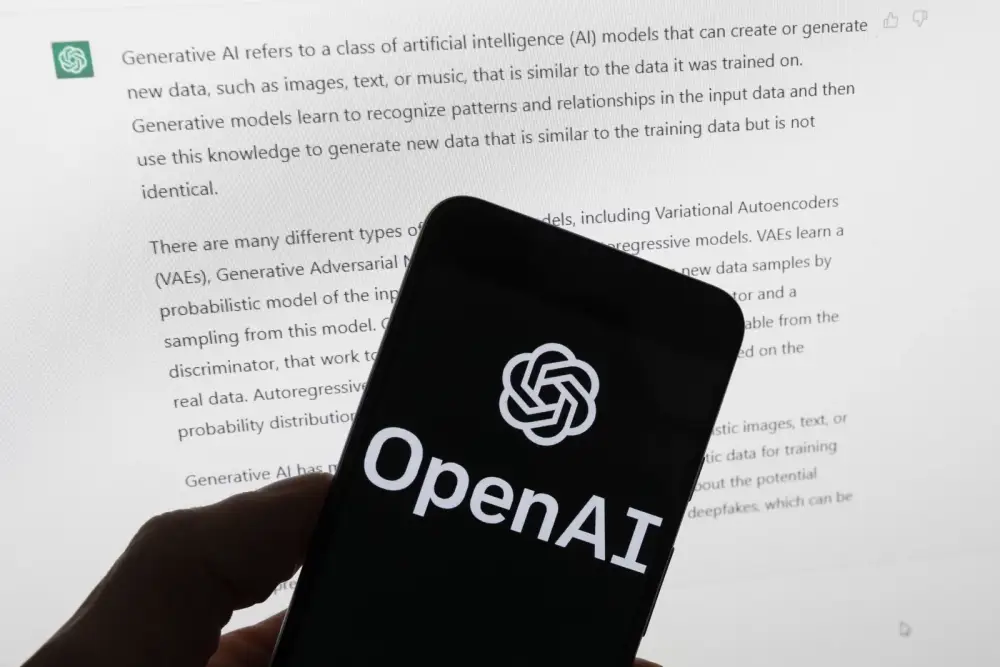
Meta descriptions: Tòa án liên bang Mỹ cho phép vụ kiện bản quyền của The New York Times chống lại OpenAI tiếp tục, bác bỏ yêu cầu hủy vụ kiện từ OpenAI. Phán quyết này đánh dấu một chiến thắng cho ngành báo chí trong cuộc chiến bản quyền với các công ty AI.
Meta keywords: The New York Times, OpenAI, vụ kiện bản quyền, ChatGPT, AI tạo sinh, thu thập dữ liệu, sử dụng hợp lý, bản quyền, báo chí, Microsoft
SEO title: Chấn động: Tòa án Mỹ bác yêu cầu của OpenAI, cho phép vụ kiện bản quyền của New York Times tiến tới phiên tòa
-
Ngày 26/3/2025, thẩm phán liên bang Sidney Stein thuộc Tòa án quận phía Nam New York đã bác bỏ yêu cầu hủy vụ kiện bản quyền từ OpenAI, cho phép vụ kiện của The New York Times tiếp tục.
-
Mặc dù thu hẹp phạm vi của vụ kiện, thẩm phán vẫn cho phép các cáo buộc vi phạm bản quyền chính được tiếp tục, và hứa sẽ đưa ra ý kiến "nhanh chóng".
-
The New York Times cáo buộc OpenAI đã khai thác nội dung báo chí của họ mà không xin phép hoặc thanh toán, và tin rằng các bài báo của họ là một trong những nguồn văn bản có bản quyền lớn nhất được OpenAI sử dụng để xây dựng ChatGPT.
-
Vụ kiện này đã thu hút sự tham gia của nhiều nhà xuất bản khác như The New York Daily News và Center for Investigative Reporting, cùng thách thức cách OpenAI thu thập dữ liệu từ web để huấn luyện ChatGPT.
-
Luật sư Steven Lieberman, đại diện cho các nhà xuất bản tin tức, hoan nghênh phán quyết và mong muốn trình bày trước bồi thẩm đoàn về cách "OpenAI và Microsoft đang thu lợi nhuận khổng lồ từ việc đánh cắp nội dung gốc của các tờ báo trên toàn quốc".
-
OpenAI lập luận rằng việc thu thập dữ liệu hàng loạt, bao gồm các bài báo từ The Times, được bảo vệ theo học thuyết pháp lý "sử dụng hợp lý" (fair use), cho phép tái sử dụng tài liệu mà không cần xin phép trong một số trường hợp như nghiên cứu, giảng dạy và bình luận.
-
Phán quyết này có nghĩa vụ kiện có thể tiến tới phiên tòa, mặc dù chưa ấn định ngày xét xử. Quá trình thu thập bằng chứng, bao gồm lấy lời khai từ các giám đốc điều hành của cả hai bên, dự kiến sẽ diễn ra bí mật.
-
Cuộc chiến pháp lý giữa một trong những cơ quan truyền thông có ảnh hưởng nhất thế giới và công ty AI hàng đầu Thung lũng Silicon đặt ra nhiều vấn đề quan trọng cho cả ngành tin tức và tương lai của các công cụ AI.
-
Các nhà xuất bản lo ngại rằng các chatbot mạnh mẽ có thể tóm tắt nhanh chóng các bài báo khi được hỏi sẽ khiến độc giả ít truy cập các trang tin tức hơn, dẫn đến sụt giảm quảng cáo có thể ảnh hưởng đến doanh thu của ngành.
-
Mặc dù vụ kiện chỉ nhắm đến OpenAI và nhà tài trợ Microsoft, các công ty AI khác cũng thu thập dữ liệu từ web để huấn luyện mô hình của họ, phần lớn đều theo cách tiếp cận của OpenAI về việc xử lý dữ liệu trên web mở.
-
Pháp luật vẫn chưa có kết luận rõ ràng về vấn đề này. Tòa án đã nói rằng việc sử dụng hợp lý một tác phẩm có bản quyền phải tạo ra điều gì đó mới "mang tính biến đổi", hoặc bình luận về tác phẩm gốc.
-
Phân tích pháp lý sẽ liên quan đến khái niệm "thay thế thị trường", đề cập đến việc liệu câu trả lời của chatbot có thay thế cho việc đọc trang web của The Times hay không.
📌 Tòa án liên bang Mỹ đã cho phép vụ kiện bản quyền của The New York Times tiếp tục, bác bỏ yêu cầu hủy vụ của OpenAI. Phán quyết ngày 26/3/2025 đánh dấu bước ngoặt quan trọng trong cuộc chiến pháp lý giữa báo chí và công nghệ AI, đặt ra tiền lệ cho tương lai của ngành tin tức và các công cụ AI tạo sinh.
https://www.npr.org/2025/03/26/nx-s1-5288157/new-york-times-openai-copyright-case-goes-forward
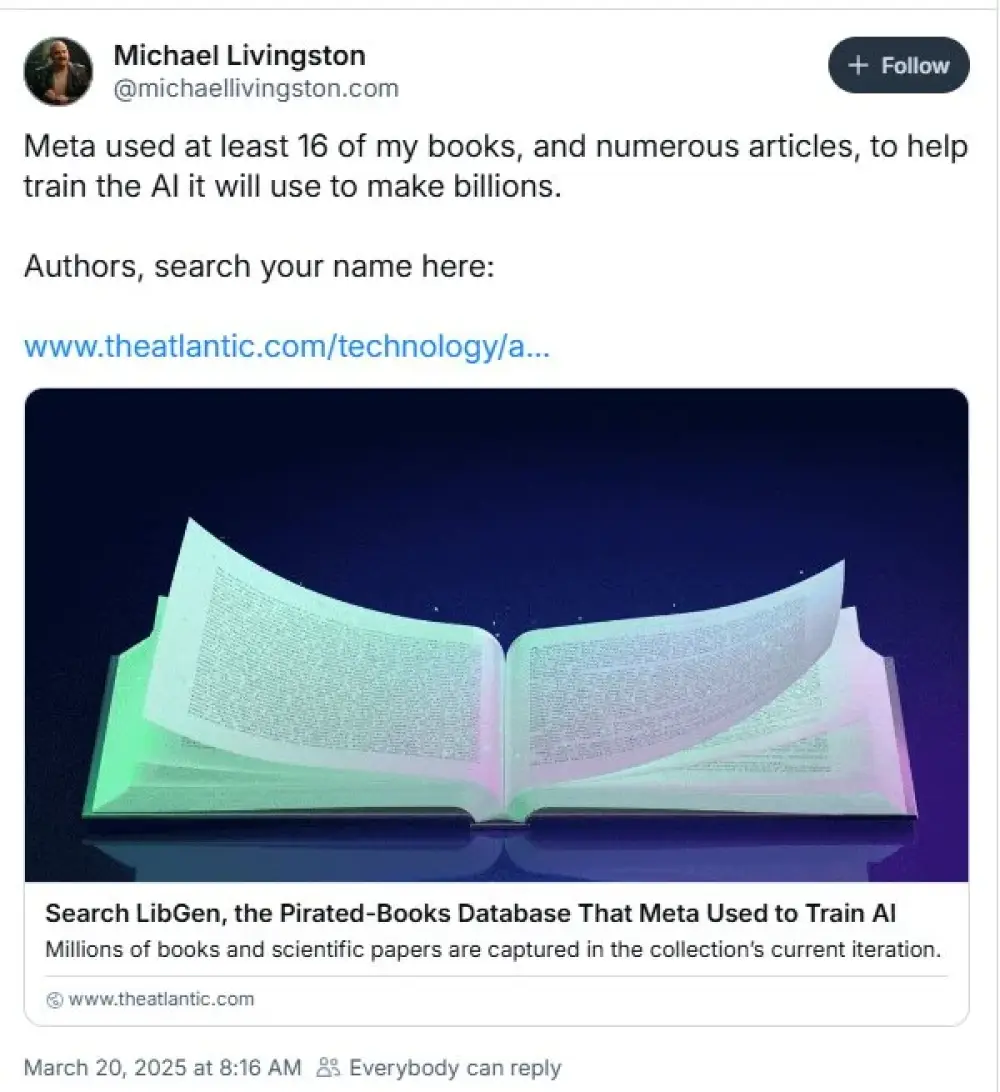
-
Hiện nay quyền tiếp cận văn học miễn phí đang bị tấn công từ hai phía: các công ty công nghệ lớn và chính quyền Trump.
-
Tạp chí The Atlantic đã phân tích và tạo kho dữ liệu công khai được sử dụng để huấn luyện AI, tập trung vào LibGen - kho lưu trữ tài liệu lậu với gần 7,5 triệu sách và 81 triệu bài báo học thuật.
-
LibGen (Library Genesis) được coi là "thư viện ngầm" vì tính chất bất hợp pháp nhưng mở. Mặc dù chứa nhiều tài liệu có bản quyền, nó cũng giúp các nhà khoa học tiếp cận công trình học thuật mà không phải trả phí cao cho các nhà xuất bản.
-
Tài liệu tòa án từ vụ kiện tập thể do nghệ sĩ hài Sarah Silverman khởi xướng tiết lộ Meta đã chọn sử dụng kho lưu trữ lậu thay vì cấp phép sách để huấn luyện AI.
-
Một nhà nghiên cứu cấp cao của Meta, Melanie Kambadur, đã nói rằng công ty cần sách "càng sớm càng tốt" vì "sách thực sự quan trọng hơn dữ liệu web" để huấn luyện AI.
-
Theo The Atlantic, Meta đã sử dụng torrent để tải xuống LibGen, điều này vi phạm trực tiếp luật bản quyền. Tuy nhiên, Meta lại tự hào thông báo người dùng đã tải xuống mô hình AI Llama của họ 1 tỷ lần.
-
Nhiều tác giả không hài lòng khi phát hiện tác phẩm của họ bị sử dụng để huấn luyện AI. Michael Livingston tìm thấy 16 cuốn sách và nhiều bài viết của ông được dùng để huấn luyện Llama 3.
-
Trong khi đó, ngày 14/3, Tổng thống Trump đã ban hành sắc lệnh hành pháp sẽ thực sự "giết chết" Viện Dịch vụ Bảo tàng và Thư viện (IMLS) - cơ quan cung cấp tài trợ cho thư viện công cộng trên khắp Hoa Kỳ.
-
Nhiều thư viện ở Mỹ phụ thuộc vào tài trợ liên bang cho các dịch vụ cơ bản, bao gồm cả dịch vụ số như Libby và Hoopla, cho phép người dùng mượn sách điện tử hoặc sách nói từ thư viện địa phương.
-
Jeff Jankowski, Chủ tịch Hoopla Digital, cảnh báo rằng nếu không có tài trợ liên bang, một số thư viện có thể thu hẹp hoặc hủy bỏ dịch vụ số của họ.
📌 Các gã khổng lồ công nghệ như Meta đang sử dụng hàng triệu sách lậu từ LibGen để huấn luyện AI, trong khi chính quyền Trump cắt giảm tài trợ cho IMLS - cơ quan hỗ trợ thư viện công cộng. Hậu quả kép này đang đe dọa nghiêm trọng quyền tiếp cận văn học miễn phí của người dân Mỹ.
https://gizmodo.com/search-the-database-of-pirated-books-ai-trained-on-2000579078

-
Người dùng mạng xã hội đã phát hiện ra một trường hợp sử dụng gây tranh cãi cho mô hình AI Gemini mới của Google: xóa thủy vân khỏi hình ảnh, bao gồm cả hình ảnh từ Getty Images và các nền tảng ảnh stock nổi tiếng khác.
-
Google vừa mở rộng quyền truy cập vào tính năng tạo hình ảnh của mô hình Gemini 2.0 Flash vào tuần trước, cho phép mô hình tự nhiên tạo và chỉnh sửa nội dung hình ảnh.
-
Đây là một khả năng mạnh mẽ nhưng dường như có rất ít rào cản. Gemini 2.0 Flash sẽ không phàn nàn khi tạo hình ảnh mô tả người nổi tiếng và nhân vật có bản quyền, đồng thời xóa thủy vân khỏi ảnh hiện có.
-
Nhiều người dùng trên X và Reddit đã lưu ý rằng Gemini 2.0 Flash không chỉ xóa thủy vân mà còn cố gắng điền vào bất kỳ khoảng trống nào được tạo ra sau khi xóa thủy vân.
-
Các công cụ khác được hỗ trợ bởi AI cũng làm điều này, nhưng Gemini 2.0 Flash dường như đặc biệt giỏi trong việc này và miễn phí sử dụng.
-
Tính năng tạo hình ảnh của Gemini 2.0 Flash được gắn nhãn là "thử nghiệm" và "không dùng cho mục đích sản xuất" hiện tại, chỉ có sẵn trong các công cụ dành cho nhà phát triển của Google như AI Studio.
-
Mô hình này không phải là công cụ xóa thủy vân hoàn hảo. Gemini 2.0 Flash dường như gặp khó khăn với một số thủy vân bán trong suốt và thủy vân phủ phần lớn hình ảnh.
-
Một số chủ sở hữu bản quyền chắc chắn sẽ phản đối việc Gemini 2.0 Flash thiếu hạn chế sử dụng. Các mô hình như Claude 3.7 Sonnet của Anthropic và GPT-4o của OpenAI từ chối rõ ràng việc xóa thủy vân.
-
Claude gọi việc xóa thủy vân khỏi hình ảnh là "phi đạo đức và có thể bất hợp pháp".
-
Theo luật bản quyền Hoa Kỳ, việc xóa thủy vân mà không có sự đồng ý của chủ sở hữu gốc được coi là bất hợp pháp, ngoại trừ một số trường hợp hiếm hoi.
-
Google chưa phản hồi ngay lập tức yêu cầu bình luận được gửi ngoài giờ làm việc thông thường.
📌 Mô hình Gemini 2.0 Flash của Google đang gây tranh cãi khi cho phép người dùng xóa thủy vân khỏi hình ảnh có bản quyền một cách dễ dàng và miễn phí. Dù còn hạn chế, khả năng này đặt ra vấn đề nghiêm trọng về bản quyền và đạo đức khi các đối thủ như Claude và GPT-4o đã từ chối thực hiện chức năng tương tự.
https://techcrunch.com/2025/03/16/people-are-using-googles-new-ai-model-to-remove-watermarks-from-images/

-
Tòa án nhân dân Thường Thục (Changshu) thuộc tỉnh Giang Tô, miền đông Trung Quốc đã ra phán quyết ủng hộ việc bảo vệ bản quyền cho nội dung do AI tạo ra.
-
Đây là vụ án thứ hai liên quan đến bản quyền nội dung AI ở Trung Quốc đại lục, cho thấy xu hướng pháp lý mới khi công nghệ AI ngày càng làm dấy lên nhiều câu hỏi về quyền sở hữu trí tuệ.
-
Phán quyết được công bố vào thứ Sáu cho rằng một hình ảnh được tạo bằng công cụ AI Midjourney đủ điều kiện được bảo vệ bản quyền nhờ tính độc đáo, vì người dùng "đã thể hiện sự lựa chọn và sắp xếp độc đáo thông qua việc chỉnh sửa văn bản nhắc và tinh chỉnh chi tiết hình ảnh bằng phần mềm chỉnh sửa".
-
Vào đầu năm 2023, nguyên đơn họ Lâm đã sử dụng Midjourney để tạo ra hình ảnh mô tả một quả bóng bay hình trái tim và đăng nó trên mạng xã hội.
-
Sau đó, Lâm đã kiện hai công ty vì đã sử dụng thiết kế này mà không xin phép trong các bài đăng trên mạng xã hội.
-
Tòa án đã ra lệnh cho các bị đơn phải đưa ra lời xin lỗi công khai và trả cho Lâm 10.000 nhân dân tệ (tương đương 1.380 USD) tiền bồi thường thiệt hại.
-
Phán quyết đầu tiên về vấn đề này ở Trung Quốc đại lục được đưa ra vào cuối năm 2023, khi Tòa án Internet Bắc Kinh xác định rằng một hình ảnh do AI tạo ra được bảo vệ bởi luật bản quyền trong một tranh chấp sở hữu trí tuệ.
-
Tòa án Bắc Kinh kết luận rằng một bức ảnh về một phụ nữ trẻ người châu Á, được tạo ra bằng phần mềm chuyển đổi văn bản thành hình ảnh Stable Diffusion của Stability AI, nên được coi là tác phẩm nghệ thuật có bản quyền dựa trên "tính độc đáo" và đóng góp trí tuệ của người sáng tạo.
-
Hai vụ án này đánh dấu các tiền lệ quan trọng cho việc bảo vệ quyền sở hữu trí tuệ trong lĩnh vực nội dung do AI tạo ra tại Trung Quốc.
📌 Phán quyết của tòa án Giang Tô là vụ án thứ hai tại Trung Quốc công nhận bản quyền cho nội dung AI, buộc các công ty phải bồi thường 10.000 nhân dân tệ (1.380 USD) và xin lỗi công khai, khẳng định vai trò sáng tạo của con người trong việc hướng dẫn và tinh chỉnh nội dung AI.
https://www.scmp.com/news/china/article/3302117/east-china-court-rules-ai-generated-image-should-have-copyright-protection
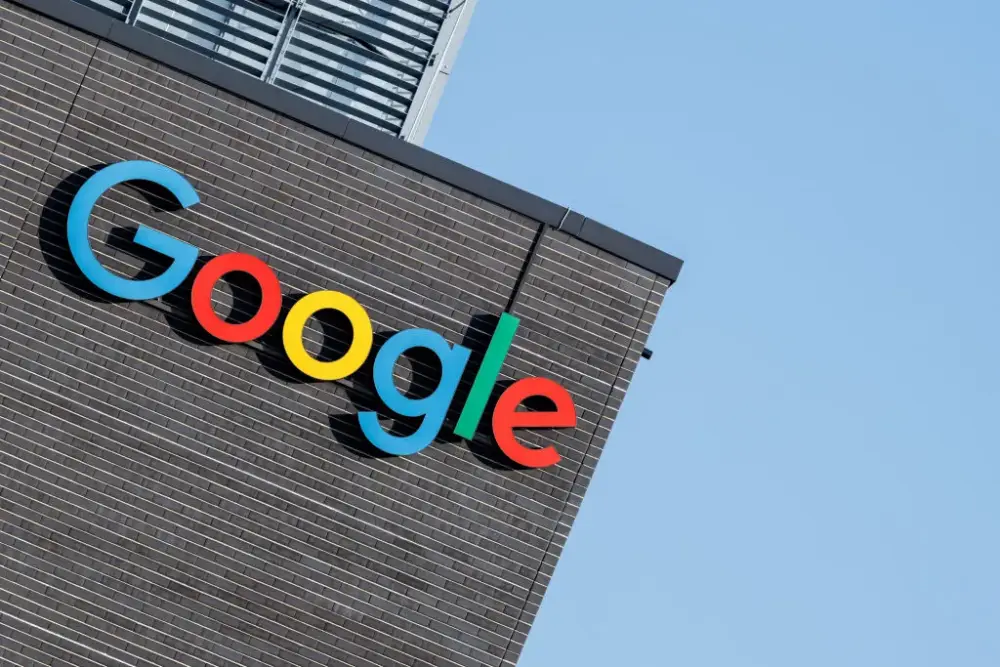
-
Google vừa công bố đề xuất chính sách phản hồi lại lời kêu gọi của chính quyền Trump về "Kế hoạch hành động AI quốc gia", theo sau OpenAI.
-
Công ty ủng hộ các hạn chế bản quyền yếu đối với việc huấn luyện AI cũng như kiểm soát xuất khẩu "cân bằng" để "bảo vệ an ninh quốc gia đồng thời cho phép hoạt động xuất khẩu và kinh doanh toàn cầu của Mỹ".
-
Google cho rằng "sử dụng hợp lý và các ngoại lệ khai thác dữ liệu văn bản" là "quan trọng" cho sự phát triển AI và đổi mới khoa học liên quan đến AI.
-
Công ty muốn luật hóa quyền huấn luyện trên dữ liệu công khai - bao gồm cả dữ liệu có bản quyền - gần như không có hạn chế, lập luận rằng điều này "không ảnh hưởng đáng kể đến chủ sở hữu quyền".
-
Google đang phải đối mặt với nhiều vụ kiện từ chủ sở hữu dữ liệu, cáo buộc công ty không thông báo và bồi thường trước khi sử dụng dữ liệu có bản quyền để huấn luyện các mô hình AI.
-
Công ty phản đối một số biện pháp kiểm soát xuất khẩu áp đặt dưới thời chính quyền Biden, cho rằng chúng "có thể làm suy yếu mục tiêu cạnh tranh kinh tế" bằng cách "áp đặt gánh nặng không tương xứng lên các nhà cung cấp dịch vụ đám mây của Mỹ".
-
Google kêu gọi đầu tư dài hạn vào nghiên cứu và phát triển trong nước, phản đối các nỗ lực gần đây của liên bang nhằm cắt giảm chi tiêu.
-
Công ty đề xuất chính phủ nên phát hành các bộ dữ liệu có thể hữu ích cho việc huấn luyện AI thương mại và phân bổ nguồn vốn cho "nghiên cứu và phát triển thị trường sớm".
-
Google kêu gọi chính phủ liên bang thông qua luật AI toàn diện, chỉ ra môi trường quy định hỗn loạn do sự chắp vá của luật AI các tiểu bang. Số lượng dự luật AI đang chờ xử lý ở Mỹ đã tăng lên 781 chỉ sau hơn 2 tháng năm 2025.
-
Google phản đối các nghĩa vụ trách nhiệm pháp lý về sử dụng AI, cho rằng nhà phát triển mô hình "hầu như không có tầm nhìn hoặc kiểm soát" đối với cách mô hình đang được sử dụng và do đó không nên chịu trách nhiệm về việc sử dụng sai.
📌 Google đang đẩy mạnh đề xuất chính sách quốc gia về AI theo hướng giảm hạn chế bản quyền và kiểm soát xuất khẩu. Công ty muốn được huấn luyện AI trên dữ liệu công khai có bản quyền mà không cần thỏa thuận phức tạp với chủ sở hữu, đồng thời phản đối việc nhà phát triển phải chịu trách nhiệm về việc sử dụng sai mô hình.
https://techcrunch.com/2025/03/13/google-calls-for-weakened-copyright-and-export-rules-in-ai-policy-proposal/
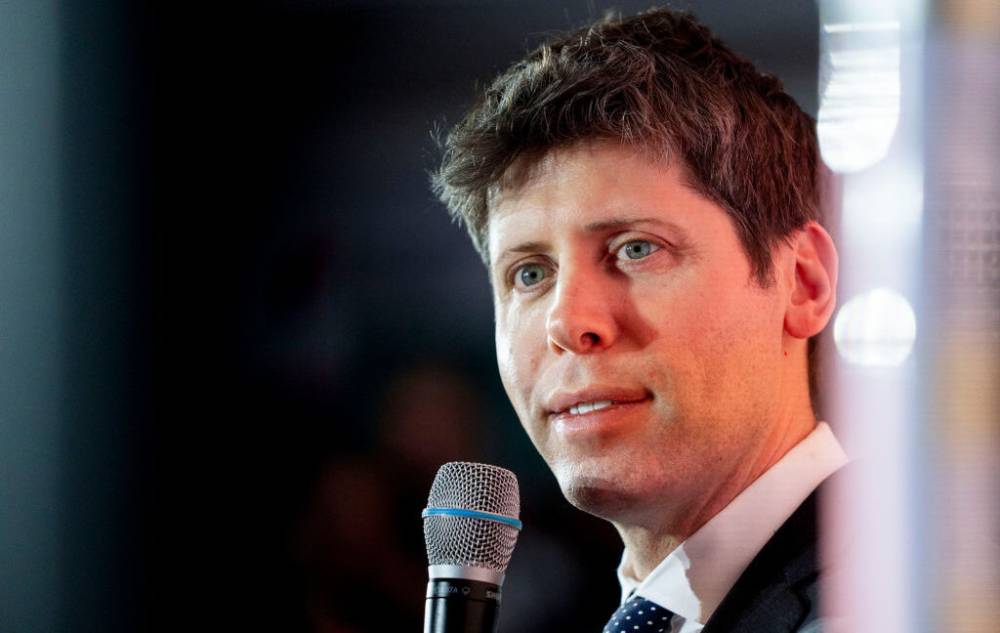
-
OpenAI đang hy vọng kế hoạch hành động AI của Donald Trump (dự kiến công bố vào tháng 7/2025) sẽ giải quyết tranh cãi về bản quyền bằng cách tuyên bố việc huấn luyện AI là "sử dụng hợp lý".
-
Công ty này cho rằng việc tiếp cận không hạn chế dữ liệu huấn luyện là then chốt để đánh bại Trung Quốc trong cuộc đua AI.
-
Hiện tại, các tòa án đang xem xét liệu việc huấn luyện AI có phải là sử dụng hợp lý không, trong khi các chủ sở hữu bản quyền cho rằng các mô hình AI được huấn luyện trên tác phẩm sáng tạo đe dọa thay thế họ trên thị trường.
-
OpenAI đang đối mặt với hàng chục vụ kiện từ chủ sở hữu bản quyền, họ lập luận rằng AI biến đổi các tác phẩm có bản quyền và đầu ra của AI không phải là sự thay thế cho tác phẩm gốc.
-
Một phán quyết quan trọng đã nghiêng về phía chủ sở hữu bản quyền, với thẩm phán tuyên bố việc huấn luyện AI không phải là sử dụng hợp lý, vì đầu ra của AI rõ ràng đe dọa thay thế công ty nghiên cứu pháp lý Westlaw của Thomson-Reuters trên thị trường.
-
OpenAI cảnh báo: "Nếu các nhà phát triển của Trung Quốc có quyền truy cập không hạn chế vào dữ liệu và các công ty Mỹ không được tiếp cận theo nguyên tắc sử dụng hợp lý, cuộc đua AI về cơ bản đã kết thúc".
-
Công ty cũng kêu gọi Trump ban hành luật liên bang thay thế luật tiểu bang về quy định AI, thiết lập "quan hệ đối tác tự nguyện giữa chính phủ liên bang và khu vực tư nhân".
-
OpenAI muốn có sự bảo vệ khỏi các luật quốc tế mà họ cho là có nguy cơ làm chậm sự phát triển AI của Mỹ.
-
Công ty này cảnh báo rằng mô hình AI tiên tiến nguồn mở DeepSeek của Trung Quốc "cho thấy ưu thế của chúng ta không rộng và đang thu hẹp lại".
📌 OpenAI đang thúc ép chính quyền Trump công nhận việc huấn luyện AI trên tác phẩm có bản quyền là "sử dụng hợp lý", cảnh báo rằng nếu các công ty Mỹ bị hạn chế tiếp cận dữ liệu trong khi Trung Quốc không bị, cuộc đua AI sẽ "về cơ bản đã kết thúc" với thất bại thuộc về Mỹ.
https://arstechnica.com/tech-policy/2025/03/openai-urges-trump-either-settle-ai-copyright-debate-or-lose-ai-race-to-china/
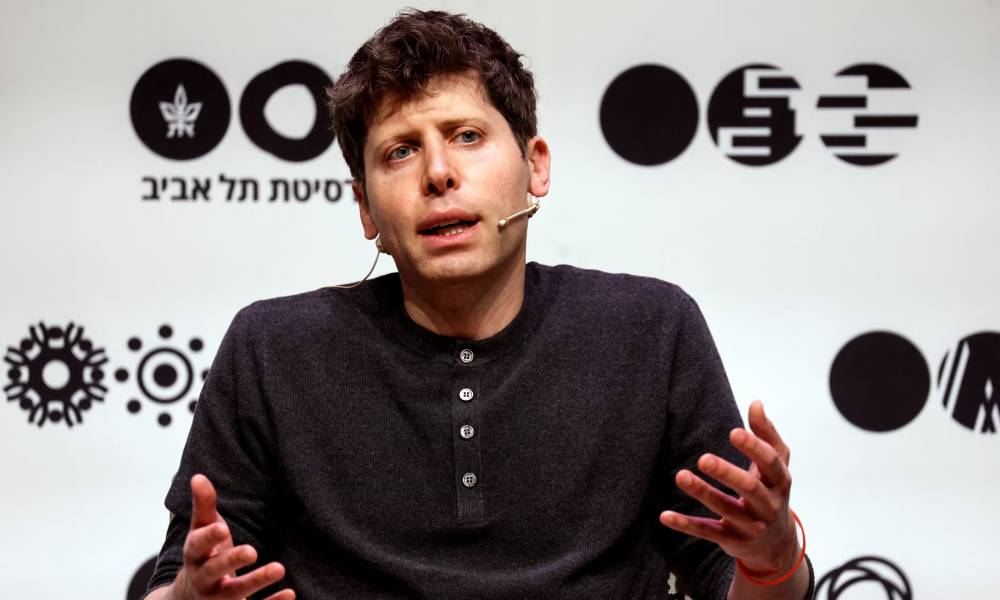
-
Công ty phát triển ChatGPT - OpenAI đã công bố phiên bản mô hình AI mới với khả năng "viết sáng tạo tốt", trong khi cuộc tranh chấp giữa ngành công nghệ và các ngành công nghiệp sáng tạo về vấn đề bản quyền vẫn đang tiếp diễn.
-
Sam Altman, CEO của OpenAI, đã chia sẻ trên nền tảng X rằng đây là lần đầu tiên ông thực sự ấn tượng với nội dung viết ra từ một trong những sản phẩm của công ty. Mô hình này hiện chưa được đặt tên và chưa rõ khi nào sẽ được phát hành.
-
Các hệ thống AI như ChatGPT đang là đối tượng của các cuộc chiến pháp lý giữa các công ty AI và ngành công nghiệp sáng tạo, vì các mô hình cơ bản của chúng được "huấn luyện" trên khối lượng lớn dữ liệu công khai, bao gồm cả tài liệu được bảo vệ bản quyền như tiểu thuyết và báo chí.
-
Tại Mỹ, tờ New York Times đang kiện OpenAI về cáo buộc vi phạm bản quyền, trong khi tác giả Ta-Nehisi Coates và diễn viên hài Sarah Silverman cũng thuộc số các tác giả kiện Meta với lý do tương tự.
-
Tại Anh, chính phủ đang đề xuất cho phép các công ty AI huấn luyện mô hình của họ trên tài liệu có bản quyền mà không cần xin phép trước, điều này đã gặp phải sự phản đối mạnh mẽ từ những người trong ngành công nghiệp sáng tạo.
-
Dan Conway, giám đốc điều hành của Hiệp hội Nhà xuất bản Anh, cho rằng bài đăng của Altman là "bằng chứng thêm" cho việc các mô hình AI được huấn luyện trên nội dung văn học được bảo vệ bản quyền.
-
Altman đã đăng một ví dụ về đầu ra của mô hình trên X, sau khi đưa ra gợi ý: "Hãy viết một câu chuyện ngắn văn học meta-fiction về AI và nỗi đau buồn".
-
Câu chuyện, được kể bởi một AI, bắt đầu bằng việc thừa nhận những ràng buộc của nó và sau đó phát triển thành một cốt truyện về nhân vật hư cấu tên Mila. AI cũng đề cập đến việc nó tìm thấy tên này trong dữ liệu huấn luyện của mình.
-
Năm ngoái, OpenAI đã thừa nhận rằng sẽ không thể huấn luyện các sản phẩm như ChatGPT mà không sử dụng tài liệu được bảo vệ bản quyền, vì hầu hết mọi dạng biểu đạt của con người ngày nay đều được bảo vệ bởi bản quyền.
📌 OpenAI đã phát triển mô hình AI mới với khả năng viết sáng tạo ấn tượng, qua đó làm nóng cuộc tranh chấp bản quyền. CEO Sam Altman lần đầu thừa nhận "thực sự bị đánh động" bởi nội dung AI tạo ra, trong khi các hiệp hội sáng tạo tiếp tục phản đối việc sử dụng tài liệu có bản quyền để huấn luyện AI.
https://www.theguardian.com/technology/2025/mar/12/chatgpt-firm-reveals-ai-model-that-is-good-at-creative-writing-sam-altman
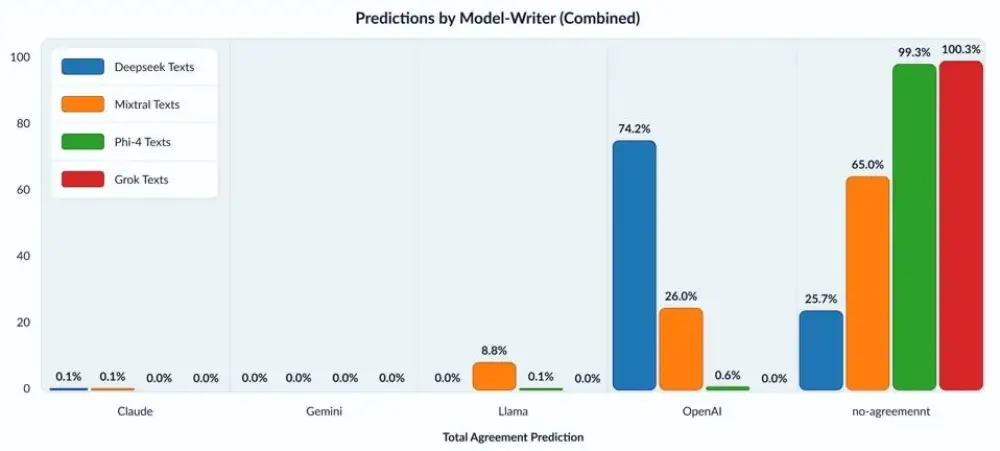
-
Nghiên cứu do Copyleaks thực hiện đã phát hiện 74,2% văn bản của DeepSeek có phong cách tương tự với ChatGPT. Điều này làm dấy lên nghi vấn về việc DeepSeek có thể đã sử dụng outputs từ OpenAI mà không được phép.
-
Copyleaks đã sử dụng công nghệ phân loại thuật toán và phương pháp bình chọn nhất trí để giảm sai sót và đảm bảo độ chính xác cao trong việc xác định "dấu vân tay phong cách" của các mô hình ngôn ngữ AI. DeepSeek có sự tương đồng phong cách nổi bật với OpenAI nhưng không với các mô hình khác như Claude, Gemini hay Llama.
-
Shai Nisan, trưởng nhóm khoa học dữ liệu của Copyleaks, cho biết việc phát hiện này không khẳng định DeepSeek là dẫn xuất của OpenAI nhưng đặt câu hỏi về cấu trúc và quy trình phát triển của DeepSeek.
-
Nếu DeepSeek đã sử dụng văn bản của OpenAI để huấn luyện mô hình mà không có sự cho phép, điều này có thể vi phạm quyền sở hữu trí tuệ của OpenAI và gây ảnh hưởng tài chính lớn. Nvidia cũng đã chịu thiệt hại giá trị thị trường sau thông báo đột phá của DeepSeek hồi tháng 1.
-
Nghiên cứu của Copyleaks gợi ý việc cần thiết áp dụng khung pháp lý minh bạch về dữ liệu đào tạo AI, đồng thời mở ra các vấn đề liên quan đến tranh chấp quyền sở hữu trí tuệ giữa các mô hình AI.
-
Mặc dù có thể có lập luận rằng AI có thể hội tụ phong cách khi sử dụng cùng một nguồn dữ liệu, nhưng phương pháp của Copyleaks chỉ ra rằng sự tương đồng giữa DeepSeek và OpenAI vượt xa sự trùng lặp dữ liệu thông thường.
📌 Copyleaks phát hiện 74,2% văn bản của DeepSeek mang dấu phong cách giống ChatGPT, làm dấy lên nghi ngờ về nguồn dữ liệu đào tạo. Việc này đặt ra câu hỏi lớn về quyền sở hữu trí tuệ AI và yêu cầu khung pháp lý rõ ràng để bảo vệ sở hữu dữ liệu trong phát triển AI.
https://www.forbes.com/sites/torconstantino/2025/03/03/deepseeks-ai-style-matches-chatgpts-74-percent-of-the-time-new-study/
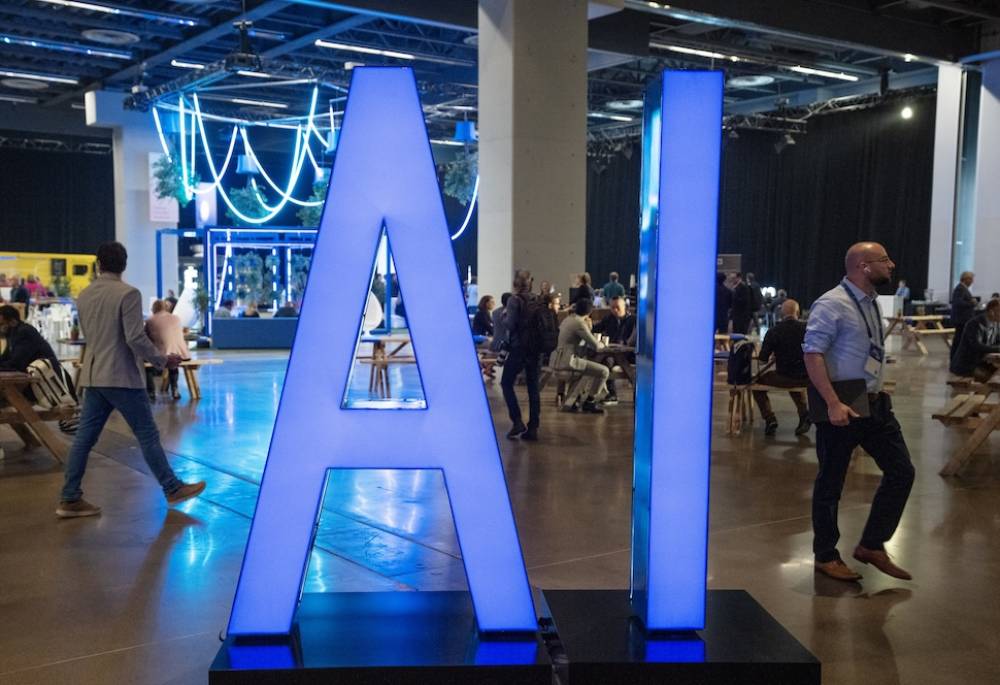
-
Canada và các quốc gia khác đang gặp khó khăn trong việc đưa ra quy định mới về AI và bản quyền.
-
Một liên minh các nhà xuất bản tin tức Canada, bao gồm The Canadian Press, đang kiện OpenAI tại tòa án Ontario vì sử dụng nội dung tin tức để đào tạo hệ thống ChatGPT.
-
Vào giữa tháng 2, một nhóm các công ty truyền thông lớn của Mỹ và chủ sở hữu của Toronto Star đã đệ đơn kiện vi phạm bản quyền chống lại công ty AI Cohere của Canada tại tòa án New York.
-
Một tòa án Mỹ đã phán quyết rằng Ross Intelligence không được phép sử dụng nội dung từ nền tảng pháp lý Westlaw của Thomson Reuters để xây dựng nền tảng cạnh tranh.
-
Các quyết định của Mỹ không ảnh hưởng đến những gì xảy ra ở Canada và "chắc chắn không có giá trị pháp lý".
-
Ottawa đang tham vấn về cách cập nhật luật bản quyền của Canada để đối phó với sự xuất hiện của AI tạo sinh.
-
Các nhà sáng tạo và nhà xuất bản Canada muốn chính phủ kiểm soát các công ty sử dụng nội dung của họ để đào tạo AI tạo sinh.
-
Các công ty AI cho rằng việc sử dụng tài liệu để đào tạo không vi phạm bản quyền và hạn chế sử dụng sẽ cản trở sự phát triển của AI ở Canada.
-
Ở Anh, chính phủ đang tham vấn về việc cho phép các công ty công nghệ sử dụng tài liệu có bản quyền để giúp đào tạo mô hình AI nếu người sáng tạo không từ chối rõ ràng.
-
Nhiều nhà xuất bản đang cấp phép nội dung của họ cho các công ty AI. Associated Press đã ký thỏa thuận với cả OpenAI và Gemini của Google.
📌 Canada và nhiều quốc gia đang phải đối mặt với thách thức trong việc cập nhật luật bản quyền cho thời đại AI. Các vụ kiện gia tăng, nhưng chưa có phán quyết rõ ràng. Nhiều khả năng các bên sẽ đi đến thỏa thuận cấp phép trước khi những vấn đề này được giải quyết.
https://www.theglobeandmail.com/arts/article-canada-other-countries-struggling-to-come-up-with-new-rules-for-ai-and/
Canada và các quốc gia khác gặp khó khăn trong việc đưa ra quy định mới về AI và bản quyền
Anja Karadeglija
Ottawa
The Canadian Press
Cuộc chiến giữa các công ty AI và chủ sở hữu bản quyền đã ghi nhận một chiến thắng sớm cho các nhà xuất bản tại Mỹ vào giữa tháng 2 khi một tòa án phán quyết rằng một công ty nghiên cứu pháp lý không có quyền sử dụng nội dung của đối thủ cạnh tranh.
Nhưng ngay cả khi số lượng vụ kiện pháp lý ngày càng tăng, vẫn còn rất lâu mới có câu trả lời dứt khoát cho câu hỏi liệu các công ty trí tuệ nhân tạo có thể sử dụng nội dung có bản quyền để đào tạo sản phẩm AI tạo sinh hay không.
“Chúng ta đã bàn về vấn đề này khá lâu rồi,” Carys Craig, giáo sư tại trường luật Đại học York chuyên về sở hữu trí tuệ, cho biết. “Nhưng đây vẫn chỉ là giai đoạn đầu.”
“Có rất nhiều thứ diễn ra cùng lúc, và hoàn toàn không rõ mọi thứ sẽ đi đến đâu.”
AI tạo sinh có thể tạo ra văn bản, hình ảnh, video và mã máy tính dựa trên một lệnh đơn giản, nhưng trước tiên các hệ thống này phải nghiên cứu một lượng lớn nội dung hiện có.
Một liên minh các nhà xuất bản tin tức Canada, bao gồm The Canadian Press, đã kiện OpenAI tại một tòa án ở Ontario vì sử dụng nội dung tin tức để đào tạo hệ thống AI tạo sinh ChatGPT. Kể từ khi vụ kiện được khởi xướng vào cuối tháng 11, chưa có diễn biến mới nào.
Giữa tháng 2, một nhóm các công ty truyền thông lớn của Mỹ và chủ sở hữu tờ Toronto Star đã đệ đơn kiện công ty AI Canada Cohere tại một tòa án ở New York với cáo buộc vi phạm bản quyền.
Vụ kiện này theo sau một loạt các vụ kiện tương tự tại Mỹ, bao gồm một số vụ liên quan đến các nhà xuất bản tin tức. The New York Times đang kiện OpenAI và Microsoft Corp., trong khi chủ sở hữu tờ Wall Street Journal và New York Post đã nhắm vào Perplexity, một công cụ tìm kiếm hội thoại được hỗ trợ bởi AI. Một số vụ kiện này có từ năm 2023.
Giữa tháng 2, một tòa án Mỹ đã ra phán quyết rằng Ross Intelligence, một công ty nghiên cứu pháp lý hiện đã ngừng hoạt động, không được phép sử dụng nội dung từ nền tảng pháp lý Westlaw của Thomson Reuters để xây dựng một nền tảng cạnh tranh theo luật bản quyền của Mỹ.
Jane Ginsburg, giáo sư tại trường luật Đại học Columbia, chuyên nghiên cứu về sở hữu trí tuệ và công nghệ, cho biết “mới chỉ có một vụ trong số 20 hoặc 30 vụ được quyết định dựa trên bản chất của cáo buộc vi phạm và việc áp dụng nguyên tắc sử dụng hợp lý.”
“Tất cả các vụ còn lại, theo tôi biết, hoặc mới được đệ trình gần đây hoặc vẫn đang ở giai đoạn sơ bộ và chủ yếu được xem xét về mặt thủ tục chứ chưa đi sâu vào các vấn đề bản quyền thực chất,” bà nói thêm.
Giáo sư Craig cho biết các phán quyết của Mỹ không ảnh hưởng đến những gì xảy ra tại Canada và “chắc chắn không có tính ràng buộc về mặt pháp lý.”
Nhưng các tòa án đang xử lý một vấn đề mới lạ như vậy có thể vẫn sẽ tham khảo các vụ án trước đó để tìm hướng giải quyết.
“Tôi nghĩ rằng các vụ kiện tại Mỹ sẽ quan trọng nhưng không mang tính quyết định đối với hướng đi của Canada,” giáo sư Craig nói.
Bà lưu ý rằng vì các vụ kiện khác nhau liên quan đến các nền tảng có tính chất kỹ thuật khác nhau, “không phải lúc nào cũng rõ lý do hoặc phán quyết của một vụ có thể ảnh hưởng rộng đến đâu.”
Trong khi các tòa án đang diễn giải luật hiện hành, chính phủ Ottawa đã tổ chức tham vấn về cách cập nhật luật bản quyền của Canada để đối phó với sự xuất hiện của AI tạo sinh.
Các nhà sáng tạo và nhà xuất bản Canada muốn chính phủ có biện pháp kiềm chế các công ty đang sử dụng nội dung của họ để đào tạo AI tạo sinh. Trong khi đó, các công ty trí tuệ nhân tạo cho rằng việc sử dụng tài liệu để đào tạo không vi phạm bản quyền, và hạn chế việc này sẽ cản trở sự phát triển của AI tại Canada.
Chính phủ liên bang gần đây đã công bố một báo cáo “chúng tôi đã lắng nghe” về các cuộc tham vấn này. Báo cáo cho biết chính phủ “tiếp tục xem xét cách giải quyết những lo ngại của Canada liên quan đến AI tạo sinh, bao gồm những vấn đề do ngành văn hóa và công nghệ nêu ra.”
Tại Anh, chính phủ đang tham vấn về việc có nên cho phép các công ty công nghệ sử dụng tài liệu có bản quyền để đào tạo mô hình AI nếu các nhà sáng tạo không chủ động từ chối hay không.
Điều đó đã khiến 1.000 nhạc sĩ ký tên vào một album im lặng để phản đối. Elton John và Paul McCartney đã lên tiếng phản đối kế hoạch này, và một số tờ báo Anh đã in các trang bìa đặc biệt chỉ trích cuộc tham vấn của chính phủ.
Giáo sư Craig cho biết tại Canada, “việc thiếu đồng thuận từ các cuộc tham vấn có nghĩa là cuối cùng một quyết định chính sách sẽ phải được đưa ra.”
“Và quyết định chính sách đó, theo tôi, sẽ phụ thuộc vào… chính trị và ở mức độ đáng kể là vào những gì các khu vực pháp lý khác đang làm, đặc biệt là diễn biến tại Mỹ và châu Âu,” bà nói.
“Vẫn còn rất nhiều điều cần được làm rõ.”
Tại Canada, bất kỳ thay đổi nào đối với luật gần như chắc chắn sẽ phải chờ đến sau một cuộc bầu cử liên bang, có thể được tổ chức trong vài tuần tới. Thời gian bất định kéo dài có thể dẫn đến việc các bên liên quan đạt được thỏa thuận cấp phép trước khi những câu hỏi này được giải quyết.
Giáo sư Craig cho biết ngành công nghiệp văn hóa và các nhà xuất bản hy vọng họ có thể thiết lập rằng việc sử dụng tài liệu để đào tạo AI có thể dẫn đến trách nhiệm bản quyền.
“Khi đó, có một cơ sở để bắt đầu đàm phán, không chỉ là các thỏa thuận dàn xếp trong từng vụ kiện cụ thể, mà còn là để đàm phán về các giấy phép giao dịch hoặc tìm kiếm các giải pháp cấp phép tập thể từ các nhà hoạch định chính sách,” bà nói.
Giáo sư Ginsburg cho biết ngày càng có nhiều nhà xuất bản cấp phép nội dung cho các công ty AI. Ví dụ, The Associated Press đã ký hợp đồng với cả OpenAI và Gemini của Google.
Bà nói rằng dữ liệu mà các công ty AI có thể thu thập từ việc quét internet hoặc sử dụng sách lậu không có chất lượng tốt, và khi các nội dung do AI tạo ra tiếp tục được đưa lên internet và bị quét lại, dữ liệu sẽ ngày càng suy giảm.
“Tôi nghĩ rằng nhu cầu có dữ liệu nguồn chất lượng tốt cuối cùng sẽ thúc đẩy các chủ sở hữu bản quyền và các công ty AI tiến gần hơn đến bàn đàm phán,” giáo sư Ginsburg nói.
Canada, other countries struggling to come up with new rules for AI and copyright
Anja Karadeglija
Ottawa
The Canadian Press
The battle between AI companies and copyright holders notched an early win for publishers in the U.S. in mid-February when a court ruled that a legal research firm didn’t have the right to use a rival’s content.
But even as the number of legal cases grows, a definite answer to the question of whether artificial-intelligence companies can use copyrighted content to train their AI products is still a long way off.
“We’ve been having this conversation for quite some time already,” said Carys Craig, a professor at York University’s law school who specializes in intellectual property. “But it’s still early days.”
“There’s a lot of things going on at the same time, and it’s not clear at all where all these balls in the air are actually going to land.”
Generative AI can create text, images, videos and computer code based on a simple prompt, but the systems must first study vast amounts of existing content.
A coalition of Canadian news publishers, including The Canadian Press, is suing OpenAI in an Ontario court for using news content to train its ChatGPT generative artificial-intelligence system. There haven’t been any developments in the case since it was launched in late November.
In mid-February, a group of major U.S. media companies and the owner of the Toronto Star filed a copyright-infringement lawsuit against Canadian artificial-intelligence company Cohere in a New York court.
It followed a series of similar lawsuits launched in the United States, including some involving news publishers. The New York Times is suing OpenAI and Microsoft Corp., while the owner of the Wall Street Journal and New York Post has targeted Perplexity, an AI-powered, conversational search engine. Some of these lawsuits date back to 2023.
In mid-February, a U.S. court ruled that Ross Intelligence, a now-defunct legal research firm, was not permitted under U.S. copyright law to use content from Thomson Reuters’ own legal platform, Westlaw, to build a competing platform.
Jane Ginsburg, a professor at Columbia University’s law school who studies intellectual property and technology, said “there has been only one case of 20 or 30 that has gotten to the stage of being decided on the merits of the infringement claim and the fair-use defence.”
“All of the other cases, to my knowledge, are either just recently filed or are in preliminary stages, and are being addressed largely on procedural issues rather than the substantive copyright issues,” she added.
Prof. Craig said the U.S. decisions have no bearing on what happens in Canada and “are certainly not authoritative in any legal way.”
But courts dealing with such a novel issue may still look to previous cases for guidance.
“I suspect that the American cases will prove important but not determinative of the direction that Canada takes,” Prof. Craig said.
She noted that because the various cases involve different platforms with different technical qualities, “it’s not always clear exactly how far-reaching their particular reasons or rulings will be.”
While the courts are interpreting existing law, Ottawa has been consulting on how it could update Canada’s copyright legislation to confront the emergence of generative AI.
Canadian creators and publishers want the government to do something to rein in companies using their content to train generative AI. Artificial-intelligence companies, meanwhile, maintain that using the material for training doesn’t violate copyright and limiting its use would restrict the development of AI in Canada.
The federal government recently released a “what we heard” report on those consultations. It said the government “continues to consider how Canadian concerns posed by generative AI, including those raised by cultural and technology industries, might be addressed.”
In the U.K., the government is consulting on whether to let tech firms use copyrighted material to help train AI models if the creators do not explicitly opt out.
That led 1,000 musicians to sign their names to a silent album in protest. Elton John and Paul McCartney have spoken out against the plan and some British newspapers have run wraparounds over their front pages criticizing the government consultation.
Prof. Craig said that in Canada, the “lack of consensus coming out of the consultations means that ultimately a policy decision is going to have to be made.”
“And that policy decision is going to depend, I think, on … politics and to some significant degree on what other jurisdictions are doing, in particular, developments in the U.S. and developments in Europe,” she said.
“So that’s a lot of stuff that still has to shake out.”
In Canada, any changes to the law almost certainly will have to wait until after a federal election, which could be called within weeks. The long period of uncertainty may lead the parties involved to reach licensing agreements before these questions are settled.
Prof. Craig said the hope among cultural industries and publishers is that they can establish that using materials for AI training can result in copyright liability.
“Then you have the baseline from which to begin to negotiate, not just settlements in particular cases, but to negotiate transactional licenses or to look to policy makers for collective licensing solutions,” she said.
Prof. Ginsburg said more and more publishers are licensing their content to AI companies. The Associated Press, for instance, has signed deals with both OpenAI and Google’s Gemini.
She said the quality of the data AI companies can get by scraping the internet or using pirated books isn’t very good, and as AI outputs get put back on the internet and are rescraped, the data is continually degraded.
“I suspect that the need to have good-quality source data will ultimately push the copyright owners and the AI companies closer to the negotiating table,” Prof. Ginsburg said.
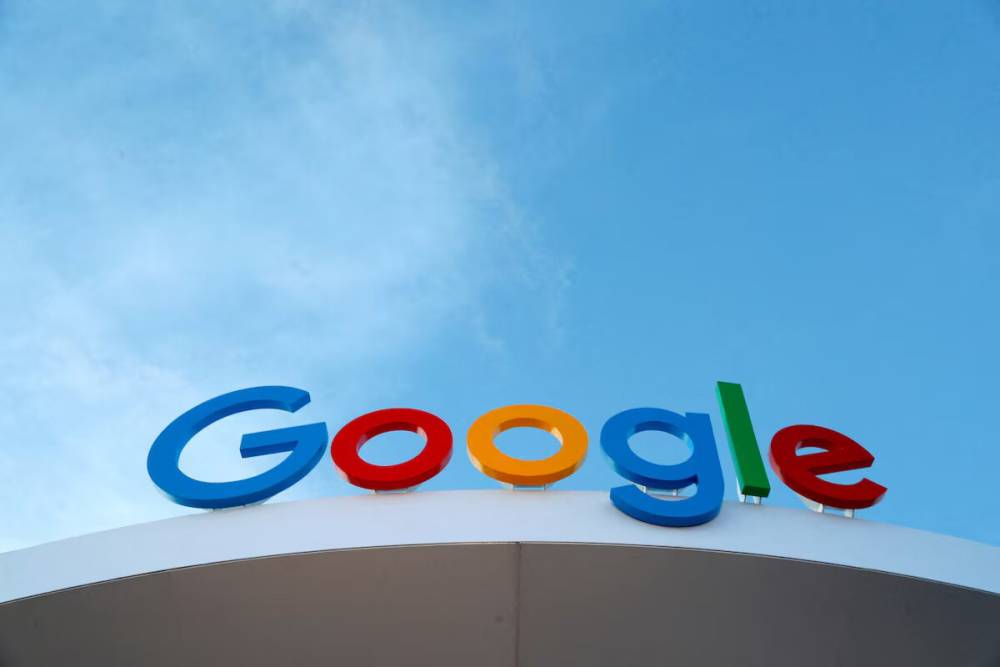
-
Chegg, công ty công nghệ giáo dục trực tuyến, đã đệ đơn kiện Google vào ngày 24/2, cáo buộc công cụ tìm kiếm của Alphabet đang làm suy giảm nhu cầu về nội dung gốc và làm suy yếu khả năng cạnh tranh của các nhà xuất bản với các bản tóm tắt được tạo ra bởi AI.
-
Chegg cho biết Google đang chiếm đoạt nội dung của các nhà xuất bản để giữ người dùng trên trang web của mình, xóa bỏ động lực tài chính để xuất bản nội dung mới. Họ cảnh báo điều này cuối cùng sẽ dẫn đến một "hệ sinh thái thông tin rỗng ruột, ít hữu ích và không đáng tin cậy".
-
Công ty có trụ sở tại Santa Clara đã báo cáo rằng các bản tóm tắt AI của Google đã gây ra sự sụt giảm số lượng khách truy cập và người đăng ký. Do hậu quả này, CEO Nathan Schultz tiết lộ họ đang xem xét bán công ty hoặc thực hiện giao dịch tư nhân hóa.
-
Giá cổ phiếu của Chegg đã đóng cửa ở mức 1,57 USD vào ngày thứ Hai, giảm hơn 98% so với mức đỉnh năm 2021. Vào tháng 11 năm ngoái, công ty đã thông báo sa thải 21% nhân viên.
-
Schultz nhấn mạnh Google đang thu lợi từ nội dung của công ty mà không phải trả phí. Ông nói: "Vụ kiện của chúng tôi không chỉ về Chegg - mà còn về ngành xuất bản kỹ thuật số, tương lai của tìm kiếm internet, và về việc sinh viên đang mất quyền truy cập vào học tập chất lượng, từng bước một để đổi lấy các bản tóm tắt AI chất lượng thấp, không được xác minh".
-
Chegg giải thích rằng các nhà xuất bản cho phép Google thu thập dữ liệu từ trang web của họ để tạo kết quả tìm kiếm, Google kiếm tiền thông qua quảng cáo. Đổi lại, các nhà xuất bản nhận được lưu lượng tìm kiếm đến trang web của họ khi người dùng nhấp vào kết quả.
-
Công ty cáo buộc Google đang ép các nhà xuất bản cho phép sử dụng thông tin cho AI Overview và các tính năng khác khiến lượng khách truy cập trang web giảm, vi phạm luật chống độc quyền.
-
Phát ngôn viên Google Jose Castaneda bác bỏ các cáo buộc, cho rằng với AI Overview, người dùng thấy tìm kiếm hữu ích hơn và sử dụng nhiều hơn, tạo cơ hội mới để nội dung được khám phá. Google chuyển hàng tỷ lượt nhấp chuột đến các trang web mỗi ngày.
-
Vụ kiện này được cho là vụ kiện đầu tiên mà một công ty đơn lẻ cáo buộc Google vi phạm luật chống độc quyền thông qua AI Overview. Trước đó, một tờ báo Arkansas đã đưa ra cáo buộc tương tự trong vụ kiện tập thể đại diện cho ngành tin tức vào năm 2023.
📌 Vụ kiện của Chegg làm nổi bật mối đe dọa AI đối với ngành xuất bản trực tuyến, với cáo buộc Google đang chiếm đoạt nội dung và phá hủy mô hình kinh doanh truyền thống. Cổ phiếu Chegg đã giảm 98% từ mức đỉnh, 21% nhân viên bị sa thải, minh họa tác động thực tế của AI Overview đến các nhà cung cấp nội dung.
https://www.reuters.com/legal/googles-ai-previews-erode-internet-edtech-company-says-lawsuit-2025-02-24/
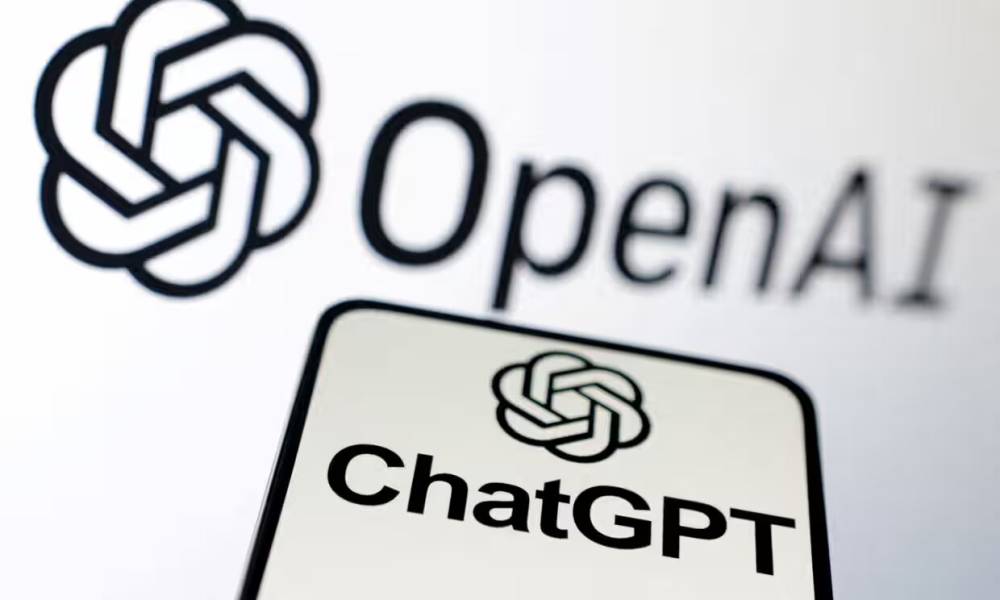
-
Axel Voss, người đóng vai trò quan trọng trong soạn thảo chỉ thị bản quyền EU 2019, chỉ trích lỗ hổng pháp lý trong Đạo luật AI của EU về vấn đề bảo vệ bản quyền
-
15 tổ chức văn hóa đã gửi thư tới Ủy ban châu Âu cảnh báo các quy định thực thi Đạo luật AI đang "lùi nhiều bước" trong việc bảo vệ bản quyền
-
Đạo luật AI của EU đã có hiệu lực từ năm 2024, tuy nhiên không kịp thời đối phó với sự bùng nổ của ChatGPT cuối năm 2022
-
Các hệ thống AI tạo sinh như ChatGPT và Dall-E của OpenAI sử dụng kho dữ liệu khổng lồ gồm sách, báo, hình ảnh và âm nhạc, gây lo ngại cho giới sáng tạo
-
Nghiên cứu của Tim Dornis và Sebastian Stober kết luận việc huấn luyện mô hình AI tạo sinh trên tài liệu đã xuất bản không thể coi là "khai thác văn bản và dữ liệu" mà là "vi phạm bản quyền"
-
Nina George, tác giả bán chạy người Đức có sách được dịch ra 37 ngôn ngữ, gọi ngoại lệ TDM là "tàn khốc" và chỉ phục vụ lợi ích kinh doanh
-
Từ ngày 2/8, các công ty công nghệ phải cung cấp tóm tắt về dữ liệu sử dụng trong mô hình AI, nhưng chi tiết vẫn đang được quyết định
-
Hiệp hội Dịch giả Văn học châu Âu đại diện cho 10.000 dịch giả tại 28 quốc gia bày tỏ lo ngại về bản quyền và AI
-
Brando Benifei, nghị sĩ châu Âu, bác bỏ quan điểm người sáng tạo không được bảo vệ và cho rằng Đạo luật AI là "văn bản rất mạnh"
-
Ủy ban châu Âu tuyên bố đang "theo dõi sát sao các thách thức toàn cầu mà công nghệ AI đặt ra cho ngành công nghiệp sáng tạo"
📌 Đạo luật AI của EU bị chỉ trích vì thiếu cơ chế bảo vệ bản quyền hiệu quả cho người sáng tạo. 15 tổ chức văn hóa phản đối, trong khi các công ty công nghệ lớn được hưởng lợi từ ngoại lệ TDM. Từ 2/8, doanh nghiệp phải báo cáo về dữ liệu AI sử dụng.
https://www.theguardian.com/technology/2025/feb/19/eu-accused-of-leaving-devastating-copyright-loophole-in-ai-act
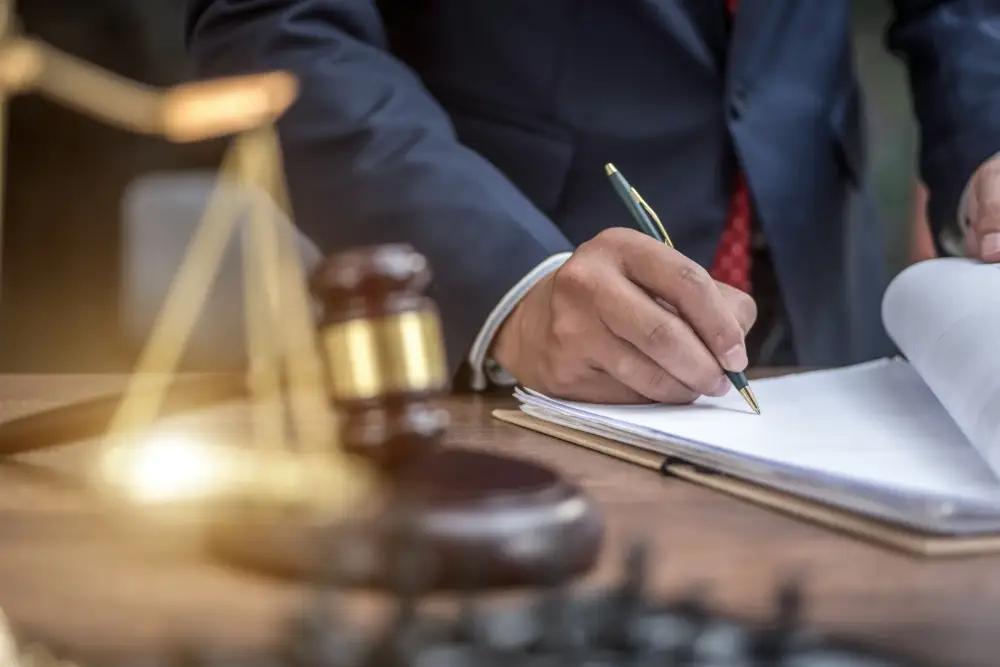
- Thẩm phán liên bang Mỹ vừa đưa ra phán quyết sơ bộ trong vụ kiện giữa Thomson Reuters và công ty công nghệ pháp lý Ross Intelligence, xác định Ross đã vi phạm quyền sở hữu trí tuệ khi sử dụng nội dung của Reuters để huấn luyện nền tảng nghiên cứu pháp lý AI
- Phán quyết này có thể ảnh hưởng tới hơn 39 vụ kiện liên quan đến bản quyền AI đang được xét xử tại Mỹ
- Ross bị cáo buộc sử dụng các tóm tắt quyết định pháp lý (headnotes) từ dịch vụ Westlaw của Reuters để huấn luyện AI của mình
- Thẩm phán Stephanos Bibas bác bỏ lập luận của Ross về việc sử dụng có tính "chuyển đổi" (transformative), cho rằng nền tảng của Ross chỉ đơn thuần đóng gói lại headnotes của Westlaw
- Động cơ thương mại của Ross cũng bị thẩm phán chỉ trích vì tạo ra sản phẩm cạnh tranh trực tiếp với Westlaw
- Giáo sư Shubha Ghosh từ Đại học Syracuse đánh giá đây là "chiến thắng mạnh mẽ" cho Thomson Reuters
- Phán quyết phân biệt rõ giữa AI tạo sinh và AI của Ross - vốn chỉ trả về các ý kiến tư pháp đã được viết sẵn
- Các công ty phát triển AI tạo sinh thường lập luận rằng học thuyết "fair use" cho phép họ thu thập và sử dụng dữ liệu công khai để huấn luyện mà không cần bồi thường
- Mark Lezama, luật sư tại Knobbe Martens, cho rằng lập luận của thẩm phán có thể mở rộng sang lĩnh vực AI tạo sinh
📌 Phán quyết sơ bộ đầu tiên về bản quyền AI tại Mỹ nghiêng về phía chủ sở hữu bản quyền, tạo tiền lệ cho 39 vụ kiện tương tự. Tuy nhiên phạm vi áp dụng còn hạn chế và cần thêm nhiều phát triển để xác lập luật về việc sử dụng tài liệu có bản quyền trong huấn luyện AI.
https://techcrunch.com/2025/02/17/what-the-us-first-major-ai-copyright-ruling-might-mean-for-ip-law/

- Sam Altman, CEO OpenAI tuyên bố ngày 03/02/2025 tại Tokyo về việc công ty không có kế hoạch kiện startup DeepSeek của Trung Quốc
- OpenAI tuần trước đã cảnh báo các công ty Trung Quốc đang tích cực sao chép các mô hình AI tiên tiến của họ
- DeepSeek gây chú ý khi phát triển chatbot mạnh mẽ với chi phí được cho là thấp, gây xôn xao trong giới công nghệ Silicon Valley
- Sam Altman nhận xét DeepSeek là một mô hình ấn tượng, nhưng OpenAI tự tin sẽ tiếp tục dẫn đầu thị trường bằng cách phát triển các sản phẩm tốt hơn
- Cộng đồng công nghệ cáo buộc DeepSeek đã áp dụng kỹ thuật reverse-engineering để sao chép khả năng của công nghệ AI hàng đầu của Mỹ, đặc biệt là ChatGPT
- OpenAI cho biết các đối thủ đang sử dụng quy trình "chưng cất" - các nhà phát triển tạo mô hình nhỏ hơn bằng cách học từ mô hình lớn hơn, tương tự như học sinh học từ giáo viên
- Ngược lại, OpenAI cũng đang đối mặt với nhiều cáo buộc vi phạm quyền sở hữu trí tuệ, chủ yếu liên quan đến việc sử dụng tài liệu có bản quyền để huấn luyện các mô hình AI tạo sinh
📌 Dù DeepSeek bị nghi ngờ sao chép công nghệ thông qua kỹ thuật chưng cất, OpenAI và Sam Altman chọn cách tập trung phát triển sản phẩm thay vì kiện tụng. Quyết định này được đưa ra trong bối cảnh OpenAI cũng đang đối mặt với các cáo buộc vi phạm bản quyền.
https://www.thestandard.com.hk/breaking-news/section/6/226528/OpenAI's-Altman-says-'no-plans'-to-sue-China's-DeepSeek
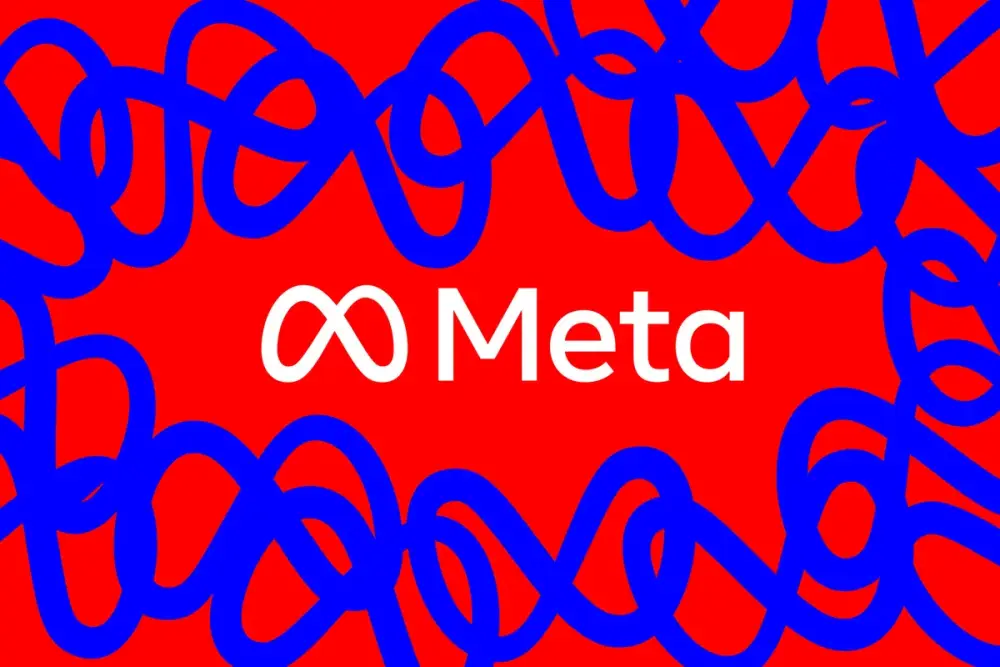
- Meta đang đối mặt với một vụ kiện lớn vì sử dụng nội dung có bản quyền để huấn luyện các mô hình AI Llama, theo tài liệu nội bộ vừa được công bố.
- Trong một loạt các email nội bộ, Ahmad Al-Dahle, phó giám đốc AI tạo sinh của Meta, nhấn mạnh mục tiêu phát triển AI phải vượt qua GPT-4 của OpenAI.
- Một email từ Sony Theakanath, giám đốc sản phẩm của Meta, xác nhận công ty đã được phép sử dụng trang web vi phạm bản quyền LibGen để huấn luyện mô hình Llama3.
- Theakanath cho rằng LibGen là "cần thiết" để đạt được các số liệu tiên tiến, và cho biết OpenAI cũng như Mistral có thể đang sử dụng nguồn dữ liệu tương tự.
- Vụ kiện nhóm do tác giả Richard Kadrey và nghệ sĩ hài Sarah Silverman dẫn đầu cáo buộc Meta vi phạm luật sở hữu trí tuệ khi sử dụng nội dung trái phép.
- Meta lập luận rằng việc sử dụng nội dung có bản quyền trong dữ liệu huấn luyện nên được coi là hợp pháp theo quy định "sử dụng hợp lý".
- Một số biện pháp "giảm thiểu" đã được đề xuất để sử dụng LibGen, bao gồm việc loại bỏ dữ liệu bị đánh dấu rõ ràng là ăn cắp và không nhắc đến nguồn dữ liệu từ trang này.
- Meta đã thảo luận về các rủi ro về chính sách liên quan đến việc sử dụng LibGen, lo ngại rằng nó có thể ảnh hưởng đến vị thế đàm phán của công ty với các cơ quan quản lý.
- Nhiều tài liệu nội bộ đề xuất các cách để loại bỏ thông tin bản quyền trong dữ liệu từ LibGen, như xóa các tiêu đề bản quyền và danh sách tác giả.
- Dù Meta đã sử dụng nhiều loại tài liệu công khai từ năm 2007, cuộc đua với các đối thủ như OpenAI đang trở nên khốc liệt hơn bao giờ hết.
- Một số nhà lãnh đạo trong ngành cho rằng đã có "bức tường dữ liệu", tức là thiếu dữ liệu mới để huấn luyện các mô hình ngôn ngữ lớn, nhưng cũng có những tiếng nói phản bác điều này.
📌 Meta đang chịu sức ép lớn do vụ kiện liên quan đến việc sử dụng dữ liệu trái phép từ LibGen để huấn luyện AI, nhằm cạnh tranh với OpenAI. Các tài liệu cho thấy công ty đã thảo luận về việc che giấu thông tin bản quyền và chiến lược để đạt được kết quả tốt nhất trong lĩnh vực này.
https://www.theverge.com/2025/1/14/24343692/meta-lawsuit-copyright-lawsuit-llama-libgen

- Các nghệ sĩ đã bày tỏ sự thất vọng về kế hoạch hành động AI của chính phủ Anh, cho rằng nó đe dọa quyền lợi của họ.
- Kế hoạch được đề xuất bởi Matt Clifford, nhà đầu tư mạo hiểm, nhằm biến Anh thành một trong những quốc gia dẫn đầu về AI.
- Một trong những điểm gây tranh cãi nhất là đề xuất sửa đổi Luật bản quyền, cho phép các công ty AI sử dụng tác phẩm của nghệ sĩ mà không cần xin phép.
- Theo đề xuất, nghệ sĩ sẽ phải chủ động từ chối để bảo vệ tác phẩm của mình, tạo ra một cơ chế không công bằng.
- Việc này sẽ ảnh hưởng lớn đến các ngành công nghiệp sáng tạo, khi AI có thể tạo ra các tác phẩm tương tự với giá thành thấp hơn.
- Một ví dụ minh họa: nếu một ca khúc được sử dụng cho việc huấn luyện AI, thì rất khó để nghệ sĩ kiểm soát việc sử dụng đó.
- Đề xuất này đã gây ra nhiều phản ứng tiêu cực từ các nghệ sĩ như Paul McCartney và Kate Bush.
- Hiện tại, luật bản quyền tại Mỹ có cơ chế “fair use” cho phép một số sử dụng không có giấy phép, điều này được cho là công bằng hơn so với đề xuất tại Anh.
- Các lĩnh vực AI như y tế và khoa học không nhất thiết phải dựa vào tác phẩm của nghệ sĩ để phát triển.
- Chính phủ Anh đã cam kết thực hiện đề xuất thay đổi luật bản quyền, bất chấp sự phản đối từ cộng đồng sáng tạo.
- Tác giả Ed Newton-Rex nhấn mạnh rằng chính phủ nên lắng nghe ý kiến từ các nghệ sĩ để cân bằng lợi ích giữa ngành công nghiệp AI và ngành công nghiệp sáng tạo.
📌 Đề xuất thay đổi luật bản quyền có thể dẫn đến sự suy giảm nghiêm trọng trong ngành công nghiệp sáng tạo tại Anh. Chính phủ cần xem xét lại để bảo vệ quyền lợi của nghệ sĩ, đồng thời vẫn phát triển lĩnh vực AI.
https://www.theguardian.com/commentisfree/2025/jan/15/artificial-intelligence-ai-labour-creative-industries
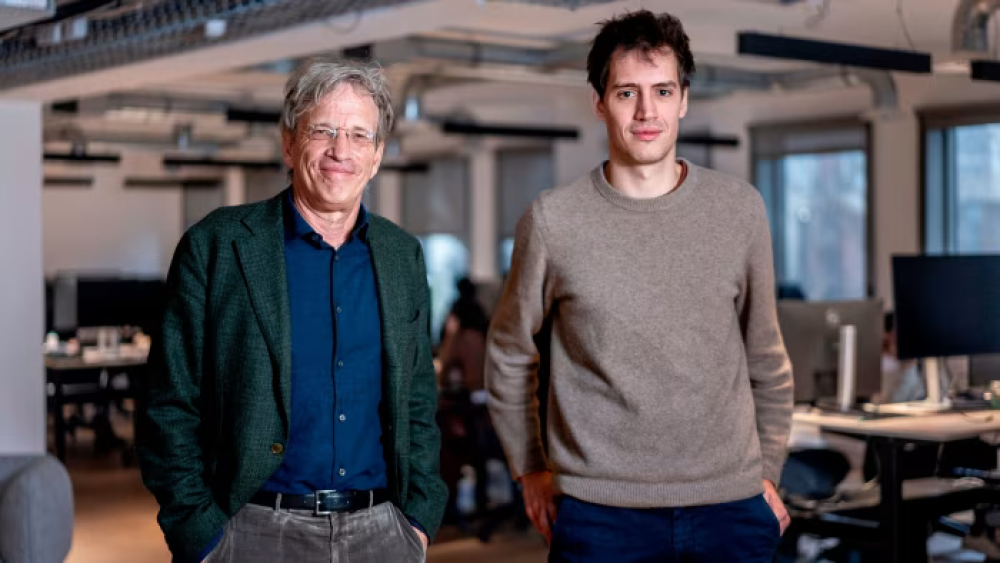
- Mistral, công ty khởi nghiệp AI của Pháp, ký thỏa thuận trị giá nhiều triệu euro với Agence France-Presse (AFP).
- Thỏa thuận này nhằm tích hợp hơn 2.000 bài viết từ AFP vào chatbot của Mistral, mang tên Le Chat, mỗi ngày.
- Hợp tác này được coi là một biện pháp bảo vệ châu Âu trước các đối thủ từ Silicon Valley và các mối đe dọa đến việc kiểm tra thông tin.
- Thỏa thuận diễn ra khi nhiều tổ chức truyền thông đang cân nhắc giữa việc ký kết thỏa thuận giấy phép với các công ty AI hoặc khởi kiện về vi phạm bản quyền.
- Arthur Mensch, người sáng lập Mistral, nhấn mạnh tầm quan trọng của việc có những thỏa thuận như vậy để đảm bảo thông tin đáng tin cậy.
- AFP cũng nhìn nhận đây là cơ hội để bù đắp doanh thu mà họ sẽ mất khi hợp đồng kiểm tra sự thật với Meta kết thúc.
- AFP cho rằng 'tự do ngôn luận' đang bị lợi dụng chống lại châu Âu, và hợp tác với Mistral đại diện cho một bước đi tích cực để bảo vệ ngành công nghiệp công nghệ của châu lục này.
- Thỏa thuận với Mistral không phải là một hợp đồng đơn thuần mà thể hiện sự hợp tác chân thành giữa hai bên.
- AFP đã tạo ra khoảng 20 triệu euro doanh thu từ các nền tảng công nghệ trong năm 2024, chiếm khoảng 10% doanh thu thương mại.
- Mistral, được định giá 6 tỷ euro, đã thu hút 600 triệu euro vốn đầu tư vào tháng 6 năm ngoái, trở thành công ty AI hàng đầu châu Âu.
📌 Mistral và AFP đã ký thỏa thuận dài hạn nhằm phát triển chatbot dựa trên thông tin xác thực, với hơn 2.000 bài báo mỗi ngày. Mistral muốn trở thành đối thủ mạnh trong lĩnh vực AI, trong khi AFP cần nguồn thu mới từ công nghệ.
https://www.ft.com/content/9200122d-bb4d-4f13-b9db-4991815026b4
#FT
Mistral ký thỏa thuận với AFP cho chatbot dựa trên tin tức, đối trọng với các đối thủ “tự do ngôn luận”
Công ty khởi nghiệp AI của Pháp hợp tác với hãng tin tức nhằm cung cấp thông tin xác thực, trong bối cảnh các đối thủ từ Thung lũng Silicon giảm bớt kiểm duyệt nội dung.
Arthur Mensch, đồng sáng lập Mistral, và Fabrice Fries, giám đốc điều hành AFP, đã đạt được thỏa thuận tích hợp các bài viết của hãng tin tức vào chatbot của công ty AI. © Bruno Fert/FT
Công ty khởi nghiệp trí tuệ nhân tạo Mistral của Pháp vừa ký thỏa thuận trị giá hàng triệu euro với Agence France-Presse (AFP) để tích hợp hàng nghìn bài báo của hãng tin này vào chatbot của họ. Thỏa thuận này được quảng bá như một lá chắn của châu Âu trước những cuộc tấn công nhằm vào công tác kiểm chứng thông tin từ các đối thủ ở Thung lũng Silicon.
Sự hợp tác giữa AFP, một trong những hãng thông tấn lâu đời nhất thế giới, và Mistral, là lần đầu tiên đối với hai công ty có trụ sở tại Paris này. Trong khi đó, nhiều nhóm truyền thông khác vẫn đang cân nhắc giữa việc ký hợp đồng cấp phép với các công ty AI hoặc khởi kiện vì cáo buộc vi phạm bản quyền.
Thỏa thuận, được công bố vào thứ Năm, sẽ cho phép chatbot Le Chat của Mistral sử dụng hơn 2.000 bài báo của AFP bằng 6 ngôn ngữ mỗi ngày, giúp người dùng trả lời câu hỏi và hỗ trợ soạn thảo tài liệu.
“Việc có những thỏa thuận như vậy rất quan trọng để cung cấp thông tin có căn cứ dựa trên nội dung đã được xác thực,” Arthur Mensch, đồng sáng lập và giám đốc điều hành của Mistral, chia sẻ với Financial Times.
Các công ty đã giới thiệu thỏa thuận này như một cách để đảm bảo rằng chatbot của Mistral dựa trên thông tin có thể kiểm chứng. Thỏa thuận được đưa ra trong bối cảnh Meta và nền tảng X của Elon Musk giảm bớt kiểm duyệt nội dung và tuyên bố ủng hộ “tự do ngôn luận” trước lễ nhậm chức của Tổng thống Mỹ Donald Trump.
Thỏa thuận đem lại nguồn doanh thu thay thế cho AFP
Thỏa thuận với Mistral cũng mang đến cơ hội cho AFP bù đắp khoản doanh thu bị mất khi hợp đồng kiểm chứng thông tin của họ với Meta sắp kết thúc.
“Điều này cho chúng ta thấy rằng châu Âu cần phải đoàn kết để bảo vệ lĩnh vực công nghệ đang phát triển mạnh mẽ của mình,” Mensch nói về các động thái gần đây từ các đối thủ ở Thung lũng Silicon.
“‘Tự do ngôn luận’ đang bị vũ khí hóa để chống lại châu Âu ở một mức độ lớn, và đây là cuộc tấn công của các công ty công nghệ lớn vào các quy định của châu Âu,” Fabrice Fries, giám đốc điều hành AFP, chia sẻ với Financial Times. “Chính những thỏa thuận như thế này, trong bối cảnh hiện nay, cho thấy rằng một công ty AI đã đặt cược vào báo chí chuyên nghiệp, độc lập và dựa trên sự thật.”
Vào thứ Tư, Google cũng công bố một thỏa thuận tương tự với Associated Press, đối tác lâu năm của họ, để hiển thị nguồn cấp dữ liệu của hãng tin này trong ứng dụng Gemini AI.
Mistral đã huy động được 600 triệu euro vốn mới vào tháng 6 năm ngoái, với mức định giá 6 tỷ euro, biến nó trở thành công ty AI nổi bật nhất châu Âu và là công ty khởi nghiệp duy nhất trên lục địa phát triển các mô hình ngôn ngữ lớn ngang hàng với các công ty như OpenAI, Anthropic và xAI của Elon Musk.
Mensch cho biết Mistral cung cấp một mô hình hợp tác “mở hơn” và “chia sẻ giá trị đồng đều hơn” so với các đối thủ tại Mỹ.
AFP: “Đây là một quan hệ đối tác thực sự”
Fabrice Fries cho biết AFP đã thảo luận về các thỏa thuận cấp phép với một số công ty AI trong những tháng gần đây, “nhưng chỉ với Mistral, chúng tôi mới cảm nhận rằng đây là một quan hệ đối tác thực sự, chứ không chỉ là một thỏa thuận mua bán.”
Các điều khoản thương mại của thỏa thuận, kéo dài nhiều năm, không được tiết lộ. Nhưng không giống như các thỏa thuận tương tự giữa OpenAI của Mỹ và các nhóm truyền thông khác, Fries nói rằng đây “không phải là một khoản thanh toán một lần” cho dữ liệu đào tạo các mô hình ngôn ngữ lớn.
OpenAI đã ký các thỏa thuận nội dung với các nhóm truyền thông như News Corp, Axel Springer và Financial Times. Vào thứ Tư, công ty có trụ sở tại San Francisco do Sam Altman dẫn dắt thông báo sẽ tài trợ cho 4 tòa soạn tin tức địa phương mới của nhà xuất bản trực tuyến Axios, với nội dung sẽ được tích hợp vào ChatGPT.
Cuộc chiến bản quyền vẫn tiếp diễn
Fries nói rằng việc hợp tác với các công ty AI “vẫn là một cuộc chiến mở” và ông đang theo dõi chặt chẽ vụ kiện pháp lý tại Mỹ giữa OpenAI và New York Times liên quan đến cáo buộc vi phạm bản quyền, điều này có thể thiết lập một tiền lệ mới về giá trị của các tác phẩm do nhà xuất bản tạo ra đối với các nhóm mô hình AI.
Đối với AFP, thỏa thuận với Mistral cũng là cơ hội để bù đắp doanh thu bị mất khi hợp đồng kiểm chứng thông tin của họ với Meta kết thúc.
Nhóm mạng xã hội Mỹ này tuần trước cho biết họ dự định chuyển sang kiểm chứng thông tin dựa vào cộng đồng tại Mỹ. AFP hiện có 150 nhà báo làm việc cho Meta về kiểm chứng thông tin, theo Fries.
Năm 2024, AFP kiếm được khoảng 20 triệu euro từ các nền tảng công nghệ, bao gồm kiểm chứng thông tin cho các công ty như Meta và các thỏa thuận cấp phép nội dung với các nền tảng như Google, chiếm khoảng 10% doanh thu thương mại của hãng năm ngoái.
“Rõ ràng là nguồn doanh thu này, vốn đã giúp chúng tôi tăng trưởng và có lợi nhuận trong bảy năm qua, đang gặp rủi ro,” Fries nói. “Chúng tôi rõ ràng cần tìm các công ty công nghệ mới như một nguồn doanh thu, và các công ty AI có thể là sự thay thế cho các nền tảng.”
Mistral signs AFP deal for fact-based chatbot in riposte to ‘free speech’ rivals
French AI start-up’s partnership with newswire comes as Silicon Valley competitors pull back on moderation
Mistral chief executive Arthur Mensch, right, and AFP chief Fabrice Fries, at Mistral’s Paris headquarters
Arthur Mensch, Mistral’s co-founder, and AFP chief Fabrice Fries, have struck a deal to bring the newswire’s stories into the AI company’s chatbot © Bruno Fert/FT
Tim Bradshaw in Paris 4 hours ago
6
Print this page
Unlock the Editor’s Digest for free
Roula Khalaf, Editor of the FT, selects her favourite stories in this weekly newsletter.
French artificial intelligence start-up Mistral has struck a multimillion-euro deal with Agence France-Presse to incorporate thousands of the newswire’s articles into its chatbot, pitching the tie-up as a European bulwark against attacks on fact-checking from its Silicon Valley rivals.
The partnership between AFP, one of the world’s oldest news agencies, and Mistral is the first of its kind for the two Paris-based companies, when many media groups are deciding whether to strike licensing agreements with AI companies or take legal action over alleged copyright infringement.
The deal, announced on Thursday, will feed more than 2,000 AFP news articles in six languages every day into Mistral’s chatbot, Le Chat, allowing users to answer questions and help draft documents.
“It’s important to have such agreements to have well-grounded information on validated content,” Arthur Mensch, Mistral’s co-founder and chief executive, told the Financial Times.
The companies presented the deal as a means of ensuring Mistral’s chatbot is grounded in verifiable information. It comes as Meta and Elon Musk’s X have pulled back on content moderation and declared the primacy of “free speech”, in the run-up to incoming US president Donald Trump’s inauguration.
AFP headquarters in Paris, France
The deal with Mistral also represents an opportunity for AFP to make up revenue that will be lost as its fact-checking contract with Meta winds down © Ed Jones/AFP via Getty Images
“What it tells us is that Europe must unite to defend its thriving technological sector,” Mensch said about recent moves by Silicon Valley rivals.
“‘Free speech’ is being weaponised against Europe to a great extent and there is this offensive by Big Tech on European regulation,” AFP chief executive Fabrice Fries told the FT. “Precisely this kind of deal, in the current context, shows that an AI player has bet on independent, fact-based professional journalism.”
On Wednesday, Google announced a similar deal with Associated Press, a longstanding partner on its search engine, to show the newswire’s feed in its Gemini AI app.
Mistral raised €600mn in new funding at a €6bn valuation in June last year, making it Europe’s most prominent AI company and the continent’s only start-up making large language models that rival the likes of OpenAI, Anthropic and Elon Musk’s xAI.
Mensch said Mistral offered a partnership model that was “more open” and “shares the value more evenly” than its US competitors.
AFP chief executive Fabrice Fries, right, and Mistral chief executive Arthur Mensch at Mistral’s offices
AFP chief Fabrice Fries, right: ‘It’s only with Mistral that we have had the feeling that it was a genuine partnership, not just a sale agreement’ © Bruno Fert/FT
Fries said AFP had discussed licensing deals with several AI companies in recent months, “but it’s only with Mistral that we have had the feeling that it was a genuine partnership, not just a sale agreement”.
Commercial terms of Mistral and AFP’s deal, which runs over multiple years, were not disclosed. But unlike similar agreements struck between US-based OpenAI and other media groups, Fries said the deal was “not a one-off settlement” for data on which large language models are trained.
OpenAI has struck content deals with media groups including News Corp, Axel Springer and the Financial Times. On Wednesday, the San Francisco-based group led by Sam Altman said it would fund four new local US newsrooms for online publisher Axios, with the output feeding into ChatGPT.
Recommended
OpenAI
OpenAI says New York Times ‘manipulated’ ChatGPT in copyright feud
The logos of The New York Times and ChatGPT
Fries said dealing with AI companies was “still an open battle” and that he was closely tracking the US legal case between OpenAI and the New York Times over copyright infringement claims, which is set to offer a new precedent on the value of the work by publishers to AI model groups.
For AFP, the deal with Mistral also represents an opportunity to make up revenue that will be lost as its fact-checking contract with Meta winds down.
The US social media group said last week that it planned to shift to community-based fact checking in the US. AFP has 150 journalists working for Meta on fact checking, according to Fries.
AFP made about €20mn in 2024 from tech platforms, including fact checking for the likes of Meta and content licensing deals with platforms including Google, accounting for about 10 per cent of its commercial revenues last year.
“Now clearly this pocket of revenue which has helped us grow and show profits in the past seven years is at risk,” Fries said. “We clearly need to find new tech players as a source of revenue and AI actors can be a replacement for the platforms.”

- Tạp chí The Atlantic đã công bố một cuộc điều tra cho thấy hơn 138.000 bộ phim và chương trình truyền hình đã bị sử dụng làm dữ liệu huấn luyện cho các mô hình AI
- Tập dữ liệu OpenSubtitles đã thu thập phụ đề từ các tác phẩm này để huấn luyện mô hình ngôn ngữ lớn (LLM) của nhiều công ty công nghệ như Apple, Meta, Nvidia, Salesforce, Bloomberg và Anthropic
- Các bộ phim tài liệu bị ảnh hưởng bao gồm tác phẩm của các đạo diễn nổi tiếng như Ken Burns, Ava DuVernay, Michael Moore, Werner Herzog
- Chương trình truyền hình bị sử dụng trái phép gồm PBS Frontline, BBC Panorama, 60 Minutes của CBS, với các tập phim từ năm 1964 đến 2018
- Đạo diễn Alex Gibney, người đoạt giải Oscar, có hơn 12 bộ phim bị đưa vào tập dữ liệu, bao gồm "Enron: The Smartest Guys in the Room" và "Taxi to the Dark Side"
- BBC đã phản đối việc sử dụng trái phép này và cho biết đã thực hiện các biện pháp ngăn chặn web crawler của OpenAI và Common Crawl truy cập vào website của họ
- Hiệp hội biên kịch WGA đã gửi thư ngỏ yêu cầu các hãng phim kiện các công ty công nghệ về việc sử dụng trái phép tài sản trí tuệ
- Văn phòng bản quyền Hoa Kỳ xác định phụ đề và phụ đề đóng là "tác phẩm phái sinh" và được bảo vệ bởi đăng ký bản quyền
📌 Hơn 138.000 tác phẩm phim ảnh và truyền hình, trong đó có nhiều phim tài liệu giá trị của BBC, PBS đã bị các gã khổng lồ công nghệ như Apple, Meta, Nvidia sử dụng trái phép để huấn luyện AI. Vấn đề này đang tạo ra cuộc tranh luận lớn về quyền sở hữu trí tuệ trong kỷ nguyên AI.
https://www.niemanlab.org/2025/01/thousands-of-documentaries-are-fueling-ai-models-built-by-apple-meta-and-nvidia/
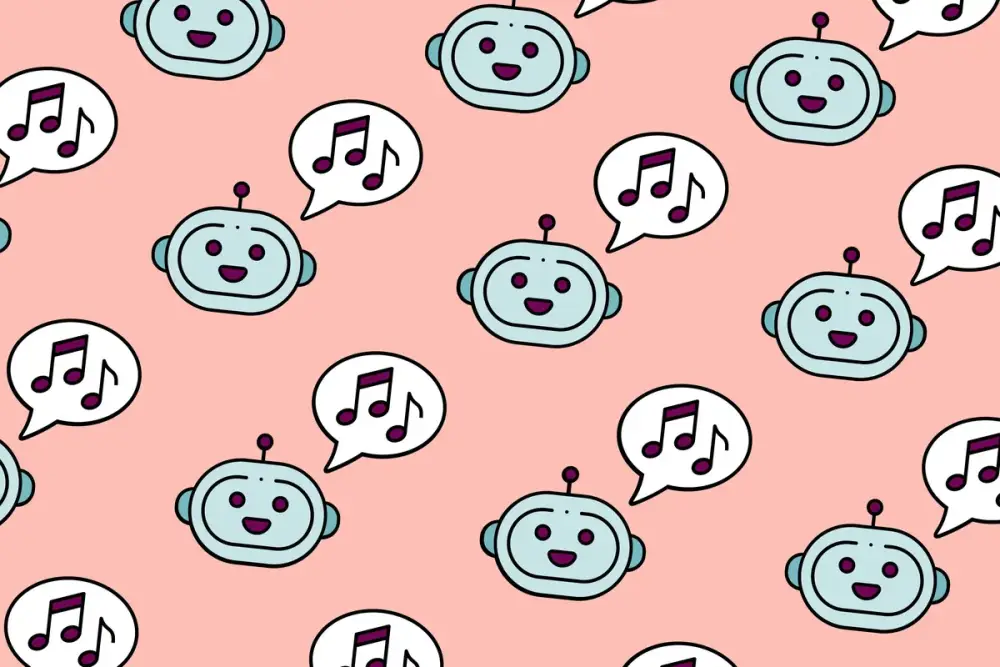
- Anthropic đã đạt được thỏa thuận giải quyết một phần vụ kiện vi phạm bản quyền liên quan đến việc phân phối lời bài hát được bảo vệ thông qua mô hình AI Claude
- Thẩm phán Eumi Lee đã phê duyệt thỏa thuận vào ngày 4/1/2025, yêu cầu Anthropic:
+ Áp dụng các biện pháp bảo vệ hiện có trong việc huấn luyện mô hình AI tương lai
+ Thiết lập quy trình cho phép các nhà xuất bản âm nhạc can thiệp khi nghi ngờ có vi phạm bản quyền
- Vụ kiện ban đầu được đệ trình vào tháng 10/2023 bởi nhiều nhà xuất bản âm nhạc lớn:
+ Universal Music Group
+ ABKCO
+ Concord Music Group
+ Greg Nelson Music
- Các nhà xuất bản cáo buộc Claude đã vi phạm bản quyền ít nhất 500 bài hát được bảo vệ, bao gồm các hit của:
+ Beyoncé ("Halo")
+ Mark Ronson ("Uptown Funk")
+ Maroon 5 ("Moves like Jagger")
- Anthropic cam kết:
+ Duy trì các biện pháp bảo vệ hiện có ngăn chặn vi phạm bản quyền
+ Áp dụng các biện pháp này cho mọi hệ thống AI trong tương lai
+ Hợp tác với các nhà xuất bản âm nhạc để giải quyết các trường hợp biện pháp bảo vệ không hiệu quả
- Các nhà xuất bản âm nhạc đã yêu cầu lệnh cấm sơ bộ ngăn Anthropic sử dụng lời bài hát được bảo vệ để huấn luyện mô hình trong tương lai
📌 Thỏa thuận lịch sử giữa Anthropic và các nhà xuất bản âm nhạc thiết lập tiền lệ quan trọng về bảo vệ bản quyền trong phát triển AI. Vụ việc liên quan đến 500 bài hát được bảo vệ, với sự tham gia của các tên tuổi lớn như Universal Music Group, đánh dấu bước tiến trong việc cân bằng đổi mới công nghệ và quyền sở hữu trí tuệ.
https://www.theverge.com/2025/1/3/24334866/anthropic-claude-music-publishers-lyric-copyright-lawsuit-deal
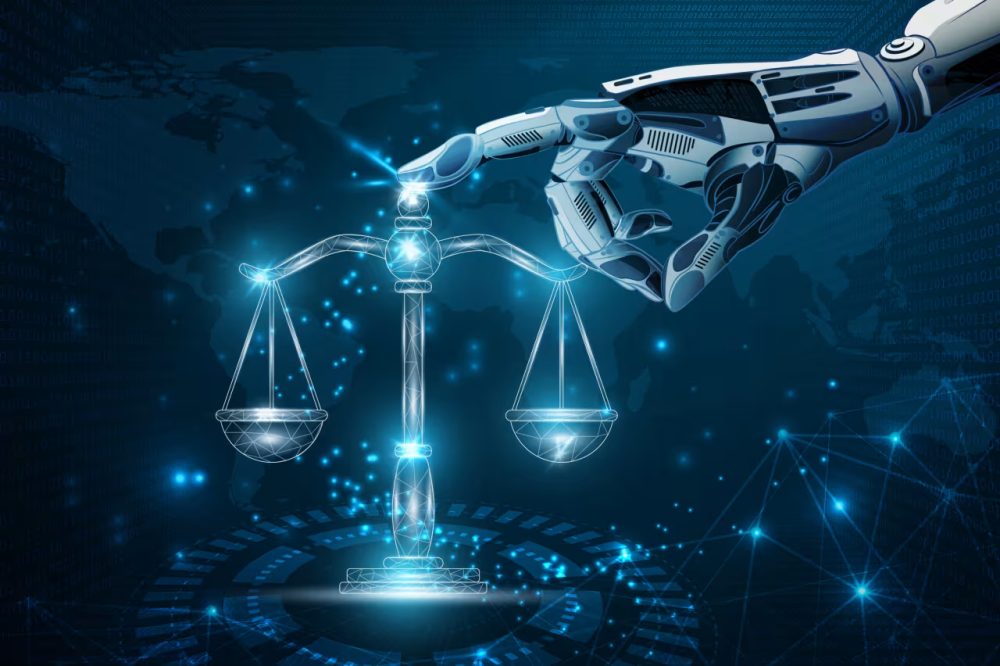
- Các nhà đầu tư đang đổ xô vào lĩnh vực AI, nhưng có nhiều yếu tố pháp lý cần được xem xét.
- Vấn đề chính là quyền sở hữu giá trị mà AI tạo ra, liệu các công ty AI có cần phải bồi thường cho chủ sở hữu quyền lợi khi sử dụng dữ liệu để huấn luyện mô hình hay không.
- Tình hình pháp luật hiện tại rất khó đoán. Các vụ kiện từ New York Times, Getty Images và các nghệ sĩ cá nhân đang thách thức việc sử dụng tư liệu có bản quyền trong dữ liệu huấn luyện AI.
- Nếu các tòa án quyết định có lợi cho chủ sở hữu quyền lợi, các công ty AI sẽ phải đối mặt với chi phí cao hơn, ảnh hưởng đến lợi nhuận và giá trị hiện tại của họ.
- Vấn đề về quyền sở hữu trí tuệ đối với các sản phẩm do AI tạo ra cũng đang gây tranh cãi. Các sản phẩm như tiểu thuyết hay phát hiện khoa học liệu có được bảo vệ bản quyền hay không vẫn chưa rõ ràng.
- Rất nhiều phán quyết gần đây đã từ chối các quyền này, nhấn mạnh rằng chỉ con người mới có thể yêu cầu quyền sở hữu trí tuệ theo luật hiện hành.
- Những bất ổn về pháp lý có thể làm giảm niềm tin của các nhà đầu tư vào việc sử dụng AI trong các quá trình sáng tạo.
- Các nghệ sĩ lớn và các công ty truyền thông có nguồn lực mạnh mẽ đang bảo vệ quyền sở hữu trí tuệ của họ và không muốn bị bỏ lại phía sau trong thời đại AI.
- Một bài học lịch sử từ thập niên 1990 cho thấy các ngành công nghiệp giải trí đã học hỏi từ những sai lầm về bảo vệ bản quyền, khi ngành âm nhạc bị khủng hoảng vì sao chép.
- Các nhà đầu tư cần theo dõi sát sao các vụ kiện và chính sách pháp luật liên quan đến quyền sở hữu trí tuệ đối với các sản phẩm do AI tạo ra.
- Nếu các công ty như New York Times và Getty Images thắng kiện, điều này có thể tạo ra cơ hội lớn cho các công ty sở hữu dữ liệu khó tiếp cận.
📌 Sự phát triển nhanh chóng của AI đang đối mặt với thách thức lớn từ các vụ kiện về vi phạm bản quyền. Nếu các quyết định pháp lý nghiêng về phía chủ sở hữu quyền lợi, chi phí cho các công ty AI có thể tăng mạnh, ảnh hưởng tới lợi nhuận và cấu trúc thị trường.
https://www.wsj.com/articles/the-ai-boom-may-be-too-good-to-be-true-copyright-ip-lawsuits-could-derail-econ-potential-fd514ea3
#WSJ
Sự bùng nổ AI có thể quá tốt để trở thành sự thật
Những vụ kiện về vi phạm bản quyền đang chờ giải quyết có thể làm chệch hướng tiềm năng kinh tế của ngành này.
Bởi Josh Harlan
Ngày 26 tháng 12 năm 2024, 4:58 chiều ET
Các nhà đầu tư đổ xô tận dụng trí tuệ nhân tạo đang tập trung vào công nghệ—khả năng của các mô hình mới, tiềm năng của các công cụ tạo sinh, và quy mô sức mạnh xử lý để duy trì tất cả. Điều mà nhiều người bỏ qua là cấu trúc pháp lý đang phát triển xung quanh công nghệ này, thứ cuối cùng sẽ định hình nền kinh tế AI. Câu hỏi cốt lõi là: Ai kiểm soát giá trị mà AI tạo ra? Câu trả lời phụ thuộc vào việc các công ty AI có phải bồi thường cho chủ sở hữu quyền tác giả vì đã sử dụng dữ liệu của họ để huấn luyện các mô hình AI hay không và liệu các sáng tạo của AI có được hưởng quyền bản quyền hoặc bằng sáng chế hay không.
Hiện nay, luật pháp liên quan đến AI đầy rẫy sự không chắc chắn. The New York Times, Getty Images và các nghệ sĩ cá nhân đã thách thức các công ty AI về việc sử dụng tài liệu có bản quyền trong các tập dữ liệu huấn luyện. Cách mà các vụ kiện này được giải quyết sẽ quyết định liệu các nhà phát triển AI có thể thu thập dữ liệu công khai hay phải cấp phép cho nội dung được sử dụng để huấn luyện các mô hình. Nếu tòa án quyết định ủng hộ các chủ sở hữu quyền tác giả, các công ty AI sẽ đối mặt với chi phí tăng cao, có thể giảm lợi nhuận biên và đặt câu hỏi về nhiều định giá hiện tại. Các nhà đầu tư không nên đánh giá thấp những rủi ro này.
Cũng quan trọng không kém là các câu hỏi xoay quanh quyền sở hữu trí tuệ đối với các sáng tạo do AI tạo ra. Liệu một cuốn tiểu thuyết do AI viết có được bảo hộ bản quyền không? Một phát minh được hướng dẫn bởi mô hình AI có thể được cấp bằng sáng chế không? Các phán quyết gần đây đã từ chối những quyền bảo hộ như vậy, nhấn mạnh rằng chỉ những người sáng tạo là con người mới có thể yêu cầu quyền sở hữu trí tuệ theo luật hiện hành. Điều này tạo ra sự mơ hồ cho các công ty sử dụng AI trong các quy trình sáng tạo hoặc phát minh. Nếu không có sự rõ ràng về việc các sản phẩm do AI tạo ra có thể được bảo vệ như tài sản độc quyền hay không, những gì mà các công ty này sản xuất có thể thiếu sự bảo vệ pháp lý cần thiết để đảm bảo lợi thế cạnh tranh, làm suy yếu một yếu tố chính trong niềm tin của nhà đầu tư.
Các nhà phê bình lập luận rằng khung pháp lý sẽ bắt kịp công nghệ, và các nhà lập pháp sẽ thích nghi để phù hợp với vai trò ngày càng phát triển của AI trong xã hội. Họ cũng cho rằng giá trị của AI chủ yếu nằm ở khả năng hoạt động của nó—khả năng phân tích, tạo ra và đổi mới—và rằng các vấn đề pháp lý xoay quanh bản quyền và bằng sáng chế chỉ là mối quan tâm thứ yếu. Những lập luận đó đánh giá thấp sự phức tạp và tính chậm chạp của các hệ thống pháp luật, đặc biệt trong những lĩnh vực liên quan đến những thay đổi cơ bản về công nghệ và quyền con người.
Các tập đoàn truyền thông lớn và các nghệ sĩ toàn cầu đang tìm cách bảo vệ quyền sở hữu trí tuệ của họ có nguồn lực tài chính mạnh mẽ và lợi ích rõ ràng trong việc đảm bảo họ không bị bỏ lại phía sau bởi sự tiến bước của AI. Kết quả của những tranh chấp này sẽ định hình tiềm năng kinh tế của AI, từ các mô hình chi phí đến chiến lược tiếp cận thị trường. Các nhà đầu tư không thể coi nhẹ những rủi ro này chỉ như những trở ngại quan liêu sẽ được giải quyết theo thời gian.
Một phép so sánh lịch sử đưa ra lời cảnh báo nghiêm khắc. Vào những năm 1990, âm nhạc được mã hóa trên đĩa CD không được mã hóa, dẫn đến cuộc khủng hoảng vi phạm bản quyền trong ngành công nghiệp âm nhạc. Ngành công nghiệp điện ảnh đã rút ra bài học từ những sai lầm đó và theo đuổi một chiến lược bảo vệ quyền sở hữu trí tuệ chủ yếu dựa vào pháp lý hơn là thuần túy công nghệ. Hiệp hội Điện ảnh Hoa Kỳ đã thúc đẩy một điều khoản trong Đạo luật Bản quyền Kỹ thuật số Thiên niên kỷ năm 1998, quy định rằng việc phát triển phần cứng hoặc phần mềm để phá vỡ hệ thống bảo vệ bản quyền là hành vi bất hợp pháp. Mối đe dọa pháp lý này đã tạo ra sự bảo vệ chống lại vi phạm bản quyền nhiều hơn đáng kể cho các chủ sở hữu quyền phim so với những gì đổi mới công nghệ đơn thuần có thể mang lại.
Các nhà đầu tư vào AI nên lưu ý: Chỉ sức mạnh công nghệ thôi là không đủ khi môi trường pháp lý và quy định bị bỏ mặc.
Đối với các nhà đầu tư chú ý đến các tranh chấp pháp lý xoay quanh AI, cơ hội sẽ rất nhiều. Nếu The New York Times và Getty Images thắng kiện về vi phạm bản quyền, các công ty AI sẽ phải trả tiền để được tiếp cận dữ liệu huấn luyện. Các công ty sở hữu thư viện lớn các dữ liệu và nội dung khó thu thập—như video chất lượng cao, thông tin y tế, dữ liệu tài chính và pháp lý, và thông tin địa lý—có thể thấy giá trị tài sản của mình tăng lên đáng kể. Một số có thể trở thành những "người gác cổng" trong hệ sinh thái AI tương lai. Các doanh nhân và nhà đầu tư đang tích cực mua bản quyền dữ liệu và nội dung, đặt mình vào vị trí có thể hưởng lợi từ một nhu cầu tăng đột biến tiềm năng.
Sự hào hứng xung quanh AI là điều dễ hiểu, nhưng các nhà đầu tư phải chú ý đến cách các tòa án phán quyết các vụ kiện liên quan đến vi phạm bản quyền trong dữ liệu huấn luyện, cũng như các diễn biến lập pháp về quyền sở hữu trí tuệ do AI tạo ra. Những quyết định này cuối cùng sẽ xác định ai sẽ hưởng lợi và ai sẽ thất bại trong kỷ nguyên AI.
Ông Harlan là nhà sáng lập kiêm đối tác quản lý của Harlan Capital Partners.
The AI Boom May Be Too Good to Be True
Pending copyright-infringement lawsuits could derail the industry’s economic potential.
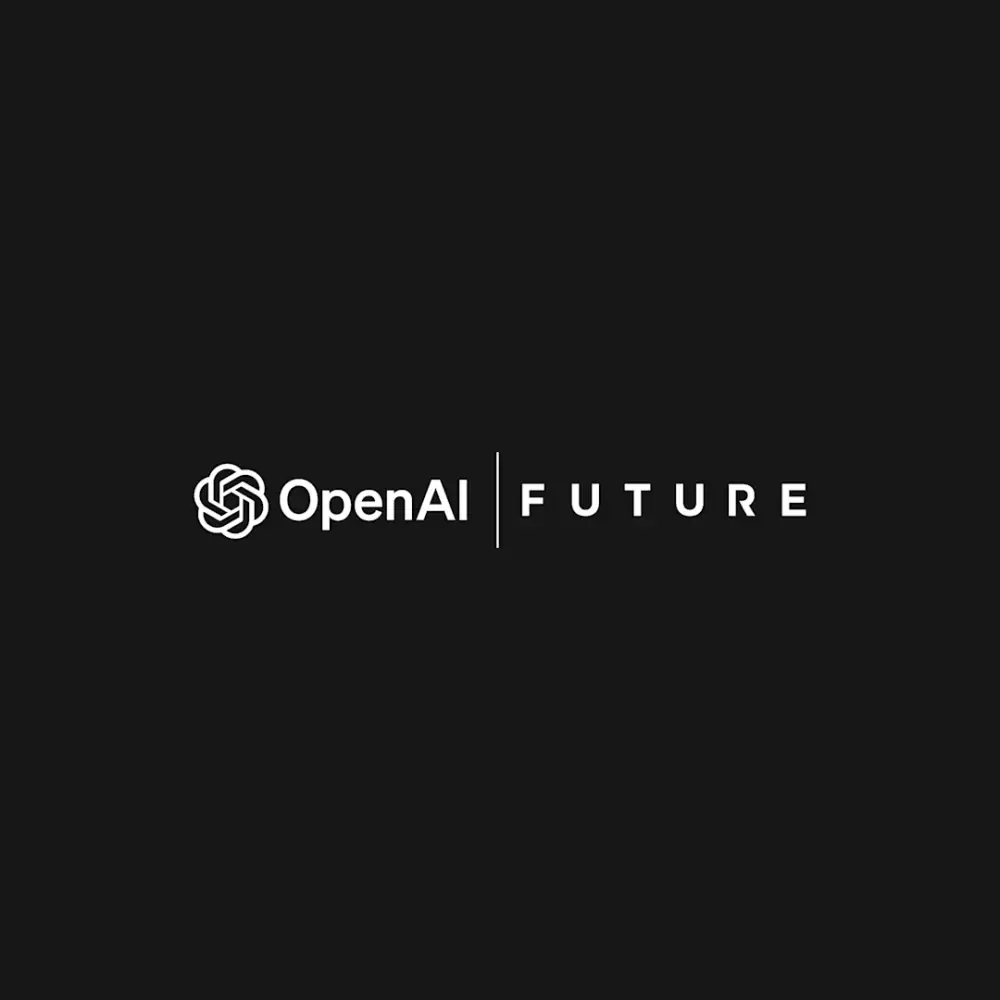
• OpenAI và Future đã công bố quan hệ đối tác chiến lược vào ngày 4/12/2024, tích hợp nội dung từ hơn 200 thương hiệu truyền thông của Future vào ChatGPT.
• Future là nền tảng truyền thông chuyên biệt toàn cầu, có trụ sở tại Anh và được niêm yết trên FTSE 250, sở hữu các thương hiệu nổi tiếng như Marie Claire, PC Gamer, TechRadar, Tom's Guide, The Week, Who What Wear và Cycling Weekly.
• Người dùng ChatGPT sẽ được truy cập nội dung từ danh mục đa dạng của Future, kèm theo trích dẫn nguồn và liên kết đến bài viết gốc để đảm bảo tính minh bạch.
• Future đã và đang ứng dụng công nghệ của OpenAI qua việc phát triển chatbot cho Tom's Hardware và Who What Wear, giúp người dùng tương tác sâu hơn với nội dung.
• Công ty cũng đang sử dụng các công cụ của OpenAI trong nhiều bộ phận như bán hàng, tiếp thị và biên tập để nâng cao năng suất làm việc.
• Jon Steinberg, CEO của Future khẳng định đây là bước tiến quan trọng trong việc mở rộng nền tảng phân phối nội dung và xây dựng cộng đồng toàn cầu.
• Brad Lightcap, COO của OpenAI nhấn mạnh mục tiêu hỗ trợ các nhà xuất bản và người sáng tạo nội dung tận dụng công nghệ AI tiên tiến để mở rộng phạm vi tiếp cận.
📌 Thông qua hợp tác chiến lược, OpenAI và Future kết nối 200+ thương hiệu truyền thông với ChatGPT, mở ra kênh phân phối nội dung mới, tăng cường trải nghiệm người dùng với thông tin chuyên biệt, đáng tin cậy và cập nhật từ nhiều lĩnh vực.
https://openai.com/index/openai-and-future-partner-on-specialist-content/
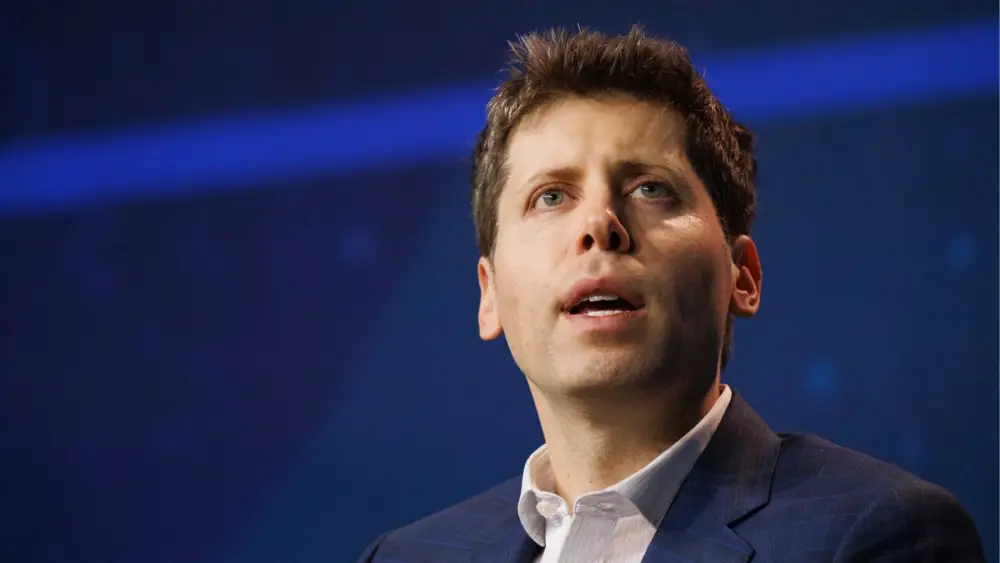
- Sam Altman, CEO của OpenAI, đã phát biểu rằng vụ kiện của New York Times chống lại OpenAI liên quan đến bản quyền đang khiến tờ báo này đứng "sai trái với lịch sử."
- Vụ kiện được đệ trình vào tháng 12 năm 2023, cáo buộc OpenAI và Microsoft sử dụng nội dung của New York Times để đào tạo các mô hình AI mà không có giấy phép hợp lệ.
- Altman đã tránh đi vào chi tiết nhưng nhấn mạnh rằng New York Times cần thay đổi quan điểm trong bối cảnh báo chí và AI đang phát triển nhanh chóng.
- Altman nhấn mạnh sự cần thiết phải bồi thường hợp lý cho các nhà sáng tạo, cho rằng mô hình chia sẻ doanh thu cần phải được phát triển.
- Luật sư đại diện cho New York Times đã phản bác, cho rằng Altman đã không nhận ra rằng luật bản quyền là nền tảng để bảo vệ quyền lợi của các nhà sáng tạo.
- New York Times cho rằng OpenAI đã ưu tiên đặc biệt nội dung của họ trong quá trình đào tạo mô hình, chứng minh giá trị của các tác phẩm báo chí.
- OpenAI đã phản ứng lại các cáo buộc này, nói rằng New York Times đã không trình bày toàn bộ sự thật và đã cố tình thao túng các yêu cầu để chứng minh cho các cáo buộc của mình.
- Ngoài New York Times, nhiều tác giả nổi tiếng khác cũng đã kiện OpenAI, trong đó có George R.R. Martin và John Grisham.
- Gần đây, một thẩm phán liên bang đã đồng ý yêu cầu OpenAI cung cấp tin nhắn và thông điệp trên X (trước đây là Twitter) của nhân viên OpenAI liên quan đến công việc.
- Để ngăn ngừa tranh chấp bản quyền trong tương lai, Altman kêu gọi một hệ thống công bằng để bồi thường cho các nhà sáng tạo khi công việc của họ được sử dụng.
📌 Sam Altman kêu gọi đổi mới mô hình kinh tế nhằm hỗ trợ các nhà sáng tạo trong bối cảnh phát triển của trí tuệ nhân tạo. Ông nhấn mạnh tại sự kiện DealBook rằng việc xây dựng mô hình chia sẻ doanh thu là cần thiết để các sáng tạo nhận được bồi thường xứng đáng.
https://decrypt.co/294902/new-york-times-wrong-side-history-open-ai-sam-altman

- Nhiều công ty truyền thông Canada đã kiện OpenAI vì cáo buộc sử dụng "không phù hợp và bất hợp pháp" nội dung báo chí để cải thiện mô hình GPT.
- Các công ty đứng đơn kiện bao gồm các nhà xuất bản nổi bật như National Post, Toronto Star, The Globe and Mail, Canadian Press, và CBC/Radio-Canada.
- Họ cho rằng OpenAI đã vi phạm bản quyền khi huấn luyện các mô hình như ChatGPT mà không xin phép hoặc bồi thường.
- Tuyên bố từ Postmedia, chủ sở hữu National Post, chỉ ra rằng việc sử dụng tài sản trí tuệ của các công ty khác vì lợi ích thương mại là sai trái.
- Nhóm nguyên đơn yêu cầu bồi thường và lệnh cấm đối với OpenAI không được sử dụng các bài báo của họ để huấn luyện AI trong tương lai.
- Theo The Guardian, các nguyên đơn yêu cầu lên tới 20.000 CAD (khoảng 15.000 USD) cho mỗi bài báo sử dụng, tổng số tiền có thể lên đến hàng tỷ USD nếu họ thắng kiện.
- OpenAI đã phản ứng bằng cách viện dẫn "sử dụng hợp lý", cho phép sử dụng tài liệu có bản quyền trong một số trường hợp nhất định.
- Đơn kiện tương tự đã được các nhóm truyền thông tại Mỹ thực hiện, như The New York Times và Center for Investigative Journalism.
- Một nhóm 8 ấn phẩm thuộc quỹ đầu tư Alden Global Capital cũng đã kiện OpenAI về cùng vấn đề này.
- Ngược lại, một số công ty truyền thông đã đạt được thỏa thuận cấp phép nội dung cho OpenAI, bao gồm AP, Axel Springer, Financial Times và Time.
- Một phát ngôn viên của OpenAI khẳng định công ty làm việc chặt chẽ với các nhà xuất bản tin tức và cung cấp dễ dàng cách để họ từ chối nếu cần.
📌 OpenAI đang đối mặt với kiện tụng từ nhiều công ty truyền thông lớn Canada vì vi phạm bản quyền khi sử dụng nội dung báo chí để huấn luyện AI mà không xin phép. Các công ty yêu cầu bồi thường có thể lên đến hàng tỷ USD.
https://www.theverge.com/2024/11/29/24308984/openai-sued-canadian-media-copyright-chatgpt

- Văn phòng bản quyền Hoa Kỳ dự kiến công bố framework phân tích về quyền sử dụng hợp pháp đối với việc AI sử dụng các tác phẩm có bản quyền vào cuối năm 2024
- Hiện có khoảng 36 vụ kiện đang diễn ra trên toàn quốc chống lại các công ty AI như OpenAI, Microsoft, Meta và Anthropic
- Luật bản quyền quy định 4 yếu tố để tòa án xem xét quyền sử dụng hợp pháp, nhưng các chi tiết cụ thể được xác định thông qua tiền lệ tòa án
- Văn phòng bản quyền đã nhận được hơn 10.000 ý kiến đóng góp từ các bên liên quan sau thông báo điều tra vào tháng 10/2023
- OpenAI cho rằng việc huấn luyện mô hình AI là sử dụng hợp pháp và có tính biến đổi của tác phẩm gốc
- Hiệp hội tác giả, nhạc sĩ và nhà xuất bản Mỹ (ASCAP) cho rằng AI tạo ra các bản sao bất hợp pháp thay thế tác phẩm gốc
- Thượng nghị sĩ Marsha Blackburn nhận định việc AI sử dụng tác phẩm có bản quyền không được phép không nên được coi là sử dụng hợp pháp nếu kết quả cạnh tranh thương mại với nội dung do con người tạo ra
- Các chuyên gia cho rằng báo cáo của Văn phòng bản quyền có thể hữu ích hơn cho Quốc hội so với tòa án
- Vấn đề quyền sử dụng hợp pháp của AI có thể sẽ được đưa ra Tòa án tối cao xem xét
📌 Tòa án liên bang, không phải Văn phòng bản quyền, sẽ có tiếng nói quyết định về việc áp dụng framework phân tích quyền sử dụng hợp pháp của AI. Với hơn 10.000 ý kiến đóng góp, báo cáo dự kiến hoàn thành vào cuối 2024 sẽ là cơ sở tham khảo quan trọng cho cả tòa án và Quốc hội Mỹ.
https://news.bloomberglaw.com/ip-law/fate-of-ai-and-fair-use-copyright-report-will-depend-on-judges

- Aravind Srinivas, CEO Perplexity, không đưa ra định nghĩa về "đạo văn" trong cuộc phỏng vấn tại TechCrunch Disrupt 2024
- Dow Jones và New York Post đã kiện Perplexity về cáo buộc "đánh cắp nội dung". The New York Times gửi thư yêu cầu ngừng và từ bỏ
- Theo báo cáo của Copyleaks, một bản tóm tắt của Perplexity đã diễn giải lại 48% nội dung bài báo của Forbes, một bản khác có 28% diễn giải lại và 7% đạo văn
- Srinivas khẳng định Perplexity luôn trích dẫn nguồn và không tuyên bố sở hữu bất kỳ nội dung nào, dù việc trích dẫn đôi khi có sai sót
- Perplexity đang hợp tác chia sẻ doanh thu với các công ty truyền thông như Time, Fortune và Der Spiegel
- CEO phủ nhận việc người dùng sử dụng Perplexity để tóm tắt các bài báo có "tường phí thanh toán", cho rằng đa số sử dụng nền tảng này để nghiên cứu tài chính
- Nền tảng đạt 100 triệu truy vấn tìm kiếm mỗi tuần và đang phát triển nhiều sản phẩm mới
- Perplexity đang đàm phán gọi vốn khoảng 500 triệu USD với định giá 8 tỷ USD
- Srinivas đề xuất một tương lai nơi các nhà khoa học có quyền sở hữu sự thật và không ai có thể kiểm soát cách thông tin được hiển thị hay đặt trong ngữ cảnh
📌 Perplexity đang trong tâm bão tranh cãi về đạo văn và sở hữu nội dung, đối mặt với các vụ kiện lớn dù đạt 100 triệu truy vấn/tuần. Công ty đang hướng tới vòng gọi vốn 500 triệu USD với định giá 8 tỷ USD giữa làn sóng chỉ trích từ các nhà xuất bản lớn.
https://techcrunch.com/2024/10/30/perplexitys-ceo-punts-on-defining-plagiarism/

- CEO Aravind Srinivas của Perplexity đề xuất chia sẻ doanh thu quảng cáo với các nhà xuất bản thay vì ký thỏa thuận cấp phép trả phí cho nội dung, sau vụ kiện từ Dow Jones.
- Vụ kiện, do Dow Jones và New York Post khởi xướng, cáo buộc Perplexity vi phạm bản quyền bằng cách sử dụng nội dung của các nhà xuất bản để tạo câu trả lời trong công cụ tìm kiếm AI.
- Perplexity muốn cạnh tranh với Google bằng công cụ tìm kiếm AI tạo sinh, đồng thời đang triển khai chương trình quảng cáo vào cuối tháng 10/2024.
- Srinivas so sánh mô hình chia sẻ doanh thu của Perplexity với Spotify, trong đó các nhà xuất bản sẽ nhận phần doanh thu từ quảng cáo thay vì thanh toán trực tiếp. Perplexity đã thiết lập quan hệ đối tác với Time và Fortune theo mô hình này.
- Ngoài ra, CEO đề xuất cung cấp chatbot Perplexity cho các trang web của nhà xuất bản, sử dụng nội dung của họ để trả lời truy vấn người dùng.
- News Corp, công ty mẹ của Dow Jones, đã ký thỏa thuận cấp phép nội dung với đối thủ của Perplexity là OpenAI, với giá trị có thể lên đến 250 triệu USD trong 5 năm.
- Srinivas cho biết Perplexity đã nhận được liên hệ từ Dow Jones vào tháng 6 và công ty đã bày tỏ mong muốn thảo luận thương mại nhưng không nhận được phản hồi về đề xuất vào tháng 7.
- Lượt truy vấn trên Perplexity đã tăng mạnh, đạt 350 triệu trong tháng 9/2024, với mục tiêu nửa tỷ lượt truy vấn mỗi ngày vào năm 2026.
- Srinivas khẳng định: “Cấp phép không phải là giải pháp duy nhất; chúng tôi hy vọng có thêm những cuộc thảo luận để tìm ra hướng đi hợp tác phù hợp.”
📌 Perplexity đối mặt với thách thức pháp lý từ Dow Jones và New York Post vì cáo buộc vi phạm bản quyền. CEO của Perplexity đề xuất chia sẻ doanh thu quảng cáo với nhà xuất bản và mở ra triển vọng hợp tác thay vì thanh toán trực tiếp cho nội dung.
https://www.wsj.com/tech/ai/perplexity-ceo-proposes-revenue-deals-for-publishers-after-lawsuit-b0fa09a0?mod=tech_lead_story
#WSJ
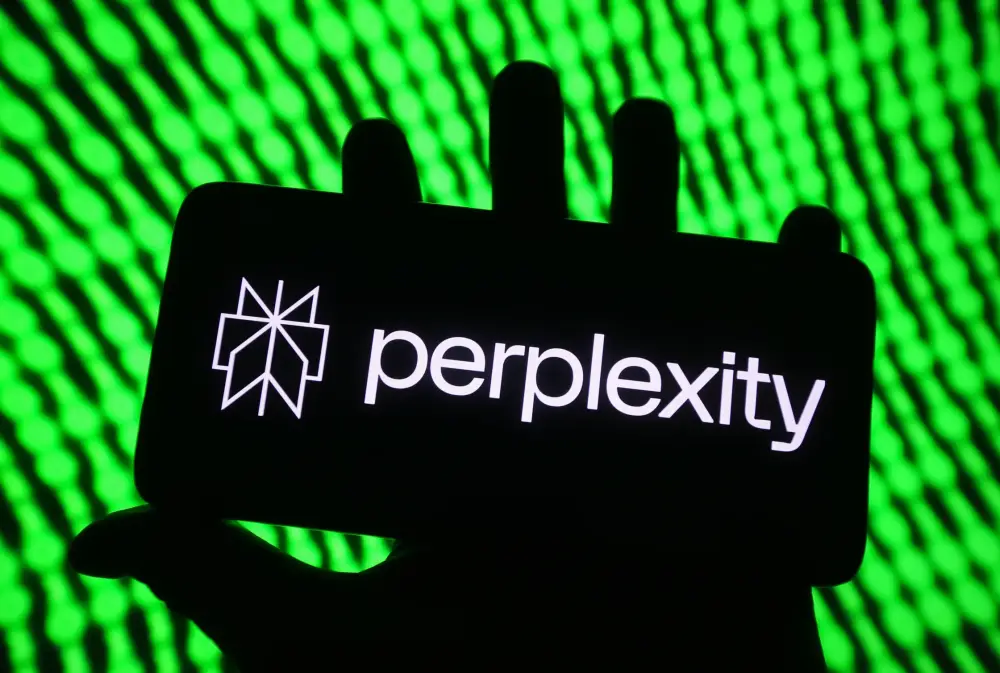
- Perplexity đang đối mặt với vụ kiện từ Dow Jones và New York Post vì cáo buộc sản xuất tin tức giả mạo và vi phạm bản quyền.
- Vụ kiện được đệ trình tại Tòa án Quận Nam New York, nơi các nhà xuất bản yêu cầu bảo vệ quyền sở hữu trí tuệ của họ.
- Dow Jones là nhà xuất bản của The Wall Street Journal, trong khi New York Post thuộc sở hữu của News Corp do Rupert Murdoch điều hành.
- Trước đó, The New York Times đã gửi thư yêu cầu ngừng hoạt động đến Perplexity vì sử dụng nội dung mà không có sự cho phép.
- Vụ kiện này cũng chỉ ra rằng Perplexity đã sao chép các đoạn văn từ bài viết của New York Post và thêm vào những thông tin giả mạo không có trong bài viết gốc.
- Các ví dụ cụ thể cho thấy Perplexity đã "huyễn hoặc" thông tin, gây nhầm lẫn cho độc giả về nguồn gốc của nội dung.
- Luật sư Matthew Sag nhận định rằng việc đảm bảo mô hình ngôn ngữ không sản xuất thông tin sai lệch là điều không thể.
- Vụ kiện này có thể tạo ra những khó khăn lớn cho các công ty AI nếu các nhà xuất bản thành công trong việc chứng minh rằng thông tin sai lệch vi phạm luật thương hiệu.
- News Corp khẳng định rằng họ sẽ tiếp tục theo đuổi các hành động pháp lý để bảo vệ nội dung của mình khỏi việc bị chiếm đoạt bởi các sản phẩm AI thương mại.
📌 Vụ kiện chống lại Perplexity từ Dow Jones và New York Post nhấn mạnh những vấn đề nghiêm trọng về bản quyền và thương hiệu trong lĩnh vực AI. Nếu thành công, điều này có thể tạo ra nhiều thách thức cho các công ty AI trong việc phát triển và sử dụng mô hình ngôn ngữ.
https://www.wired.com/story/dow-jones-new-york-post-sue-perplexity/

• Penguin Random House, nhà xuất bản sách lớn, đã thêm một điều khoản mới vào trang bản quyền của cả sách mới và tái bản, cấm sử dụng nội dung sách để huấn luyện công nghệ AI.
• Cụ thể, điều khoản nêu rõ: "Không được sử dụng hoặc tái tạo bất kỳ phần nào của cuốn sách này để huấn luyện công nghệ hoặc hệ thống trí tuệ nhân tạo."
• Điều khoản cũng đề cập đến việc Penguin Random House "rõ ràng loại trừ tác phẩm này khỏi ngoại lệ khai thác văn bản và dữ liệu" theo luật của Liên minh châu Âu.
• Penguin Random House dường như là nhà xuất bản lớn đầu tiên đề cập đến AI trên trang bản quyền sách của mình.
• Tuy nhiên, nội dung in trên trang bản quyền không liên quan nhiều đến luật bản quyền thực tế. Nó giống như phiên bản "robots.txt" của Penguin Random House - một cách để yêu cầu các công ty AI không thu thập nội dung của họ.
• Robots.txt không phải là một cơ chế pháp lý mà là một quy chuẩn tự nguyện trên web. Bảo vệ bản quyền vẫn tồn tại bất kể có in trang bản quyền hay không.
• Vào tháng 8/2024, Penguin Random House đã ra tuyên bố sẽ "quyết liệt bảo vệ quyền sở hữu trí tuệ thuộc về tác giả và nghệ sĩ của chúng tôi."
• Không phải tất cả các nhà xuất bản đều thận trọng với AI. Một số nhà xuất bản học thuật như Wiley, Oxford University Press và Taylor & Francis đã ký kết thỏa thuận huấn luyện AI.
• Động thái này của Penguin Random House diễn ra trong bối cảnh AI đang phát triển mạnh mẽ và gây lo ngại về vấn đề bản quyền trong ngành xuất bản.
• Việc thêm điều khoản này có thể được xem như một "cảnh báo" từ nhà xuất bản, thể hiện quan điểm của họ về việc sử dụng nội dung sách để huấn luyện AI.
• Tuy nhiên, hiệu lực pháp lý thực sự của điều khoản này vẫn còn là dấu hỏi, vì luật bản quyền và các ngoại lệ sử dụng hợp lý vẫn tồn tại độc lập với nội dung trang bản quyền.
📌 Penguin Random House đã thêm điều khoản cấm sử dụng sách để huấn luyện AI vào trang bản quyền, là nhà xuất bản lớn đầu tiên làm điều này. Động thái nhằm bảo vệ quyền sở hữu trí tuệ của tác giả, song hiệu lực pháp lý thực tế còn là dấu hỏi lớn trong bối cảnh AI đang phát triển mạnh mẽ.
https://www.theverge.com/2024/10/18/24273895/penguin-random-house-books-copyright-ai

• Luật sư của The New York Times đang kiểm tra mã nguồn và tài liệu đào tạo của ChatGPT trong một phòng bảo mật.
• Các vụ kiện bản quyền từ nhà xuất bản và tác giả đang cố gắng tìm hiểu cách AI được đào tạo trên các tác phẩm sáng tạo.
• Những vụ kiện này có thể vạch ra con đường phát triển trong tương lai, tương tự như vụ kiện Napster cách đây hai thập kỷ.
• Luật sư chỉ được vào phòng sau khi xuất trình giấy tờ tùy thân do chính phủ cấp và bị cấm mang theo điện thoại, ổ USB hoặc bất kỳ thiết bị điện tử nào khác.
• Họ được cung cấp một máy tính không kết nối internet với phần mềm xử lý văn bản. Sau mỗi phiên làm việc, ghi chú của họ được tải xuống một máy tính khác và máy tính ghi chú ban đầu có thể bị xóa.
• Luật sư của The Times có thể chia sẻ ghi chú với tối đa 5 chuyên gia bên ngoài để giúp họ hiểu cách hoạt động của mã.
• OpenAI có giá trị 157 tỷ USD phần lớn nhờ vào thành công của ChatGPT. Tuy nhiên, để xây dựng chatbot này, công ty đã đào tạo các mô hình của mình trên một lượng lớn văn bản mà họ không phải trả tiền.
• Văn bản đó bao gồm các bài báo từ The New York Times, các ấn phẩm khác và vô số sách có bản quyền.
• The New York Times đã thuê một công ty luật hàng đầu, Susman Godfrey, để đại diện cho họ trong vụ kiện này. Susman Godfrey gần đây đã giành được khoản tiền bồi thường 787,5 triệu USD từ Fox News cho Dominion.
• Các vụ kiện từ các tòa soạn khác như The New York Daily News và Mother Jones cũng đã tham gia vào vụ kiện này.
• Susman Godfrey cũng đại diện cho một nhóm tác giả bao gồm George RR Martin, Jodi Picoult và Ta-Nehisi Coates, những người đã đệ đơn kiện vi phạm bản quyền vài tháng trước The Times.
• Vào ngày 12 tháng 9, hàng chục luật sư từ các công ty công nghệ và báo chí đã tập trung tại phòng xử án của một thẩm phán ở Manhattan để tìm cách tốt nhất để phân chia quá trình khám phá.
• Vụ kiện của The New York Times lập luận rằng OpenAI đã vi phạm quyền sở hữu trí tuệ của họ theo hai cách: sử dụng hơn 10 triệu bài báo để đào tạo ChatGPT mà không bồi thường và ChatGPT có thể tạo ra các bài báo tương tự như của The New York Times.
• OpenAI và Microsoft lập luận rằng học thuyết pháp lý "sử dụng hợp lý" bảo vệ cách các mô hình của họ tiếp nhận các bài báo.
• Các vụ kiện bản quyền từ các tổ chức báo chí có thể thiết lập tiền lệ cho tất cả các trình tạo sinh AI.
• Câu hỏi then chốt là liệu quá trình đào tạo của OpenAI có đủ biến đổi để được coi là "sử dụng hợp lý" hay không.
📌 Vụ kiện của The New York Times chống lại OpenAI và Microsoft có thể định hình lại ngành công nghiệp AI tạo sinh. Với 10.553.897 bài báo bị cho là vi phạm bản quyền, kết quả của vụ kiện này có thể tác động sâu rộng đến cách các mô hình ngôn ngữ lớn được đào tạo trong tương lai.
https://www.businessinsider.com/ai-future-copyright-lawsuits-new-york-times-times-authors-2024-10
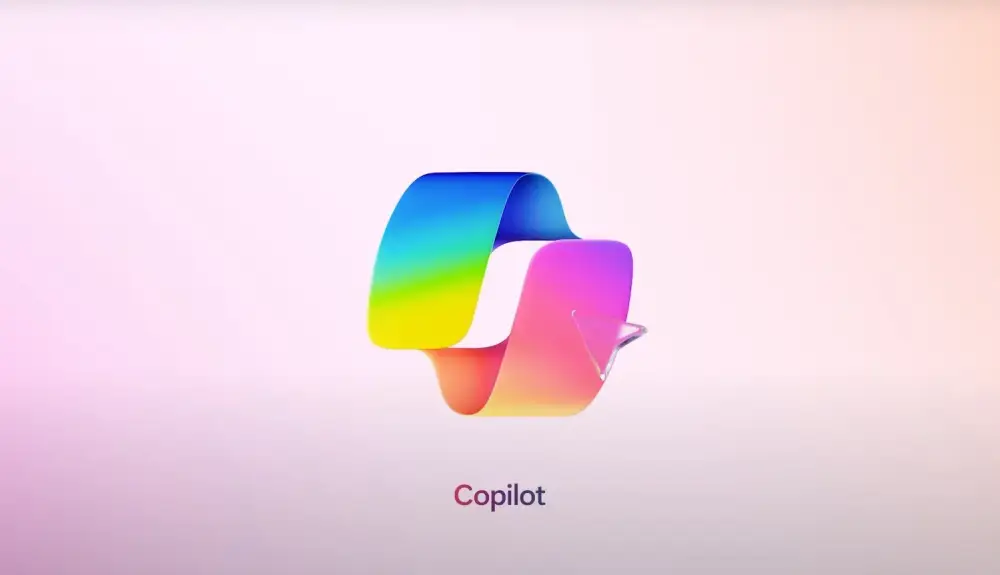
• Microsoft vừa công bố Copilot Daily, tính năng mới của trợ lý AI đa nền tảng Copilot, cung cấp bản tóm tắt bằng giọng nói về thời tiết và tin tức thời sự.
• Copilot Daily được mô tả là "giải pháp cho cảm giác quá tải thông tin quen thuộc", với nội dung "sạch sẽ, đơn giản và dễ tiêu hóa".
• Microsoft sẽ trả tiền cho các nhà xuất bản nội dung xuất hiện trong Copilot Daily, bao gồm Reuters, Axel Springer, Hearst Magazines, USA Today Network và The Financial Times.
• Tính năng này hiện chỉ có ở Mỹ và Anh, nhưng Microsoft dự định mở rộng ra nhiều quốc gia và thêm nhiều đối tác xuất bản "sớm".
• Đây là lần đầu tiên Microsoft trả tiền cho nội dung được sử dụng trong sản phẩm AI của họ, trước đó công ty chỉ có các thỏa thuận cấp phép nội dung cho nền tảng MSN.
• Động thái này diễn ra trong bối cảnh một số công ty AI như OpenAI, Perplexity và Apple cũng bắt đầu trả tiền cho nội dung, nhằm tránh cáo buộc vi phạm bản quyền và có thêm dữ liệu huấn luyện AI.
• Thị trường dữ liệu huấn luyện AI được dự đoán có thể đạt gần 30 tỷ USD trong vòng một thập kỷ.
• Tuy nhiên, một số nhà xuất bản, nhà văn và công đoàn chỉ trích các thỏa thuận này đánh giá thấp giá trị báo chí. Ví dụ, mức chi trả thấp nhất của OpenAI chỉ từ 1-5 triệu USD mỗi năm.
• Ngành báo chí đang gặp khủng hoảng nghiêm trọng, có thể mất 10.000 việc làm trong năm nay. Năm ngoái đã có hơn 21.400 việc làm báo chí bị cắt giảm.
• Nhiều yếu tố góp phần vào sự suy giảm này, bao gồm ngân sách quảng cáo tăng chậm, lạm phát ảnh hưởng đến số lượng đăng ký, và sự thay đổi thuật toán tìm kiếm/feed của các công ty công nghệ lớn.
• Gần 50% người dân Mỹ đọc tin tức trên mạng xã hội, và khoảng 60% chi tiêu quảng cáo toàn cầu đổ vào các công ty công nghệ lớn như Google và Meta.
• Một nghiên cứu cho thấy các đài truyền hình mất gần 2 tỷ USD doanh thu quảng cáo hàng năm vào tay nền tảng của Google và Meta.
📌 Microsoft ra mắt Copilot Daily, trả tiền cho nhà xuất bản nội dung nhằm tránh cáo buộc vi phạm bản quyền và hỗ trợ ngành báo chí đang khủng hoảng. Tuy nhiên, mức chi trả thấp và sự thống trị của Big Tech trong quảng cáo vẫn là thách thức lớn cho báo chí truyền thống.
https://techcrunch.com/2024/10/01/microsoft-starts-paying-publishers-for-content-in-copilot/

• Tim Boucher đã viết hơn 120 cuốn sách trong 2 năm bằng cách sử dụng văn bản và hình ảnh do AI tạo ra. Một số cuốn được hoàn thành chỉ trong 4 giờ.
• Sách của Boucher có định dạng đặc biệt: 40-120 hình ảnh do AI tạo kèm 2.000-5.000 từ chủ yếu được tạo bởi chatbot như Claude và ChatGPT.
• Là một nhà công nghệ và nghệ sĩ, Boucher xem việc này như một cách để phê bình công nghệ và khám phá hình thức kể chuyện mới. Ông muốn tận dụng những hạn chế và sai sót của AI để tạo ra một phong cách tường thuật mới.
• Tuy nhiên, nhiều người chỉ trích công việc của Boucher là đạo văn. Một bài viết gần đây của ông trên The Information đã gây ra làn sóng phản đối, trong đó có nhà văn đoạt giải Pulitzer Michael Chabon.
• Căng thẳng giữa các công ty AI và ngành công nghiệp sáng tạo đang gia tăng. Nhiều tác giả cáo buộc các công ty công nghệ sử dụng tác phẩm của họ để huấn luyện AI mà không được sự đồng ý.
• Boucher cho rằng phần lớn chỉ trích dựa trên hiểu lầm về công việc của ông. Ông minh bạch về việc sử dụng AI và đã viết nhiều bài giải thích quy trình sáng tạo.
• Ông phản đối cáo buộc đạo văn và gian lận, cho rằng mọi người đang phản ứng theo cảm xúc chứ không phải về mặt kỹ thuật.
• Boucher tin rằng các vấn đề với AI sẽ được giải quyết theo thời gian. Ông muốn thử nghiệm công nghệ này sớm thay vì chờ đợi nó hoàn thiện.
• Các vụ kiện đang gây áp lực lên cách các công ty AI sử dụng dữ liệu có bản quyền, điều mà Boucher cho là tốt.
📌 Tim Boucher đã viết 120 cuốn sách bằng AI trong 2 năm, gây tranh cãi về bản quyền và đạo văn. Ông xem đây là cách phê bình công nghệ và khám phá hình thức kể chuyện mới, nhưng nhiều người phản đối. Vấn đề này đang gây căng thẳng giữa ngành công nghiệp sáng tạo và các công ty AI.
https://www.businessinsider.com/author-ai-write-books-backlash-tim-boucher-2024-9

- Cloudflare công bố kế hoạch ra mắt một marketplace trong năm tới, cho phép chủ sở hữu website bán quyền truy vấn dữ liệu cho các nhà cung cấp mô hình AI.
- Marketplace này là một phần trong kế hoạch lớn của CEO Cloudflare, Matthew Prince, nhằm giúp các nhà xuất bản kiểm soát cách thức và thời gian các AI bots truy vấn nội dung của họ.
- Cloudflare đồng thời ra mắt công cụ miễn phí mang tên **AI Audit** giúp người dùng quan sát hoạt động của các AI bots trên trang web của mình. AI Audit cung cấp bảng điều khiển để xem thống kê lý do, thời điểm và tần suất các mô hình AI truy cập website.
- Chủ website có thể dùng AI Audit để chặn hoặc cho phép một số AI bots cụ thể, tùy thuộc vào thỏa thuận hoặc nhu cầu.
- Một ví dụ của AI Audit cho thấy người dùng có thể theo dõi AI bots của các công ty lớn như OpenAI, Meta, Amazon, và những nhà cung cấp mô hình AI khác đang truy vấn dữ liệu của website họ bao nhiêu lần.
- Công cụ này giải quyết vấn đề lớn mà các nhà xuất bản nhỏ đang đối mặt khi AI truy vấn quá nhiều dữ liệu, khiến mô hình kinh doanh của họ bị đe dọa vì giảm lượt truy cập.
- Một số trang web nhỏ bị cáo buộc AI bots của startup như Perplexity đã truy vấn trái phép dù họ đã sử dụng **Robots Exclusion Protocol**.
- Cloudflare cũng cung cấp nút bấm một lần để chặn mọi AI bots nếu chủ sở hữu cảm thấy dữ liệu của họ bị đánh cắp mà không được bồi thường.
- Các nhà xuất bản lớn như TIME, Condé Nast, và The Atlantic, dù có thỏa thuận cấp phép với OpenAI, cũng có ít thông tin về tần suất truy vấn từ ChatGPT trên trang của họ.
- Marketplace của Cloudflare sẽ cho phép cả các nhà xuất bản nhỏ đạt được thỏa thuận tương tự như các đơn vị lớn, cho phép họ định giá nội dung truy vấn bởi các mô hình AI.
- Chi tiết về mức giá cụ thể hoặc hình thức thanh toán (bằng tiền hoặc tín dụng) vẫn chưa được Cloudflare tiết lộ rõ ràng, nhưng ý tưởng là các trang web có thể kiếm tiền từ nội dung bị truy vấn.
📌 Cloudflare đang phát triển một marketplace cho phép các website nhỏ thu phí từ AI bots khi truy vấn dữ liệu. Họ cũng giới thiệu công cụ AI Audit giúp chặn hoặc cho phép AI bots. Đây là bước đi quan trọng để bảo vệ quyền lợi nhà xuất bản, nhất là các trang nhỏ bị tổn thương bởi AI bots.
https://techcrunch.com/2024/09/23/cloudflares-new-marketplace-lets-websites-charge-ai-bots-for-scraping/

• Michael Smith, 52 tuổi, đến từ Bắc Carolina, đã bị bắt và buộc tội trong một vụ lừa đảo kéo dài 7 năm, kiếm được hơn 10 triệu USD tiền bản quyền bất hợp pháp.
• Smith bị buộc tội rửa tiền và gian lận điện tử, mỗi tội danh có thể phải đối mặt với mức án tối đa 20 năm tù.
• Kế hoạch của Smith bao gồm việc tạo ra "hàng trăm nghìn bài hát" bằng AI và sau đó sử dụng bot để phát giả mạo các bài hát này trên các nền tảng phát nhạc trực tuyến.
• Smith đã làm việc với hai đồng phạm chưa được nêu tên - một người quảng bá âm nhạc và CEO của một công ty AI âm nhạc.
• Vào cuối năm 2018, Smith đã gửi email cho các đồng phạm nói rằng họ cần tạo ra "RẤT NHIỀU bài hát nhanh chóng" để vượt qua các chính sách chống gian lận.
• CEO công ty AI âm nhạc đã cung cấp cho Smith "hàng nghìn bài hát" mỗi tuần, nhấn mạnh rằng đây không phải là "âm nhạc" mà là "âm nhạc tức thì".
• Các file nhạc ban đầu có tên ngẫu nhiên như "n_7a2b2d74-1621-4385-895d-b1e4af78d860.mp3". Smith sau đó đổi tên thành các từ như "Zygotes", "Zygotic", "Zyme Bedewing".
• Tên nghệ sĩ cũng được tạo ra một cách kỳ lạ, từ những cái tên bình thường như "Calvin Mann" đến những cái tên khó hiểu như "Calorie Event", "Calms Scorching", "Calypso Xored".
• Smith sử dụng bot để phát các bài hát này hàng tỷ lần mà không cần người nghe thực sự, chuyển đổi các lượt phát vô nghĩa này thành tiền bản quyền.
• Vụ án này cho thấy những thách thức mới trong việc chống gian lận trên các nền tảng phát nhạc trực tuyến như Amazon Music, Apple Music, Spotify và YouTube Music.
• Khi được New York Times liên hệ, Smith phủ nhận mọi cáo buộc và tuyên bố rằng "Điều này hoàn toàn sai và điên rồ!" và "Làm sao tôi có thể kháng cáo điều này?"
📌 Vụ án Michael Smith cho thấy mức độ tinh vi của gian lận phát nhạc trực tuyến sử dụng AI. Với hơn 10 triệu USD kiếm được từ hàng trăm nghìn bài hát giả và hàng tỷ lượt phát bot trong 7 năm, đây là một thách thức lớn đối với các nền tảng phát nhạc trong việc bảo vệ nghệ sĩ thực sự.
https://futurism.com/man-arrested-fake-bands-streams-ai

• Liên minh Nhà cung cấp Dữ liệu (DPA) được thành lập vào mùa hè năm nay, gồm 7 công ty cấp phép AI như Rightsify, Pixta và Calliope Networks. (Ít nhất 5 thành viên mới sẽ được công bố vào mùa thu) Mục tiêu là chuẩn hóa và công bằng hóa ngành công nghiệp AI.
• DPA ủng hộ hệ thống opt-in, yêu cầu sự đồng ý rõ ràng của người sáng tạo và chủ sở hữu quyền trước khi sử dụng dữ liệu. Đây là sự thay đổi lớn so với cách hoạt động hiện tại của hầu hết các công ty AI lớn.
• Alex Bestall, CEO của Rightsify, cho rằng hệ thống opt-in không chỉ đạo đức hơn mà còn thực tế hơn, giúp tránh các vụ kiện tụng.
• Ed Newton-Rex từ tổ chức phi lợi nhuận Fairly Trained ủng hộ quan điểm của DPA, cho rằng hệ thống opt-out hiện tại "về cơ bản không công bằng với người sáng tạo".
• DPA phản đối việc cấp phép bắt buộc từ chính phủ, thay vào đó ủng hộ cách tiếp cận "thị trường tự do" để các bên đàm phán trực tiếp.
• Liên minh đề xuất 5 cấu trúc bồi thường tiềm năng, bao gồm mô hình đăng ký, (trong đó phí được trả cho mỗi lần sử dụng) và cấp phép "dựa trên kết quả", trong đó tiền bản quyền gắn liền với lợi nhuận.
• DPA ủng hộ việc sử dụng dữ liệu tổng hợp có kiểm soát, với điều kiện phải cấp phép đúng cách cho thông tin tiền đào tạo và đánh giá thường xuyên để giảm thiểu sai lệch.
• Shayne Longpre từ Data Provenance Initiative lo ngại tiêu chuẩn opt-in có thể khó thực hiện do khối lượng dữ liệu lớn cần thiết cho các mô hình AI hiện đại.
• Bill Rosenblatt, chuyên gia về bản quyền, cho rằng việc chuẩn hóa cấu trúc bồi thường là điều tích cực, giúp quá trình cấp phép trở nên dễ dàng và thuận tiện hơn.
• Sự tồn tại của DPA cho thấy thời kỳ "miền Tây hoang dã" của AI đang dần kết thúc, mặc dù vẫn cần sự ủng hộ từ các công ty lớn trong ngành.
📌 Liên minh Nhà cung cấp Dữ liệu (DPA) đề xuất hệ thống opt-in và 5 mô hình bồi thường cho việc cấp phép dữ liệu AI, nhằm bảo vệ quyền lợi người sáng tạo. Mặc dù đối mặt với thách thức về khối lượng dữ liệu cần thiết, DPA đánh dấu bước chuyển quan trọng hướng tới chuẩn hóa và đạo đức hóa ngành công nghiệp AI.
https://www.wired.com/story/dataset-providers-alliance-ethical-generative-ai-licensing/
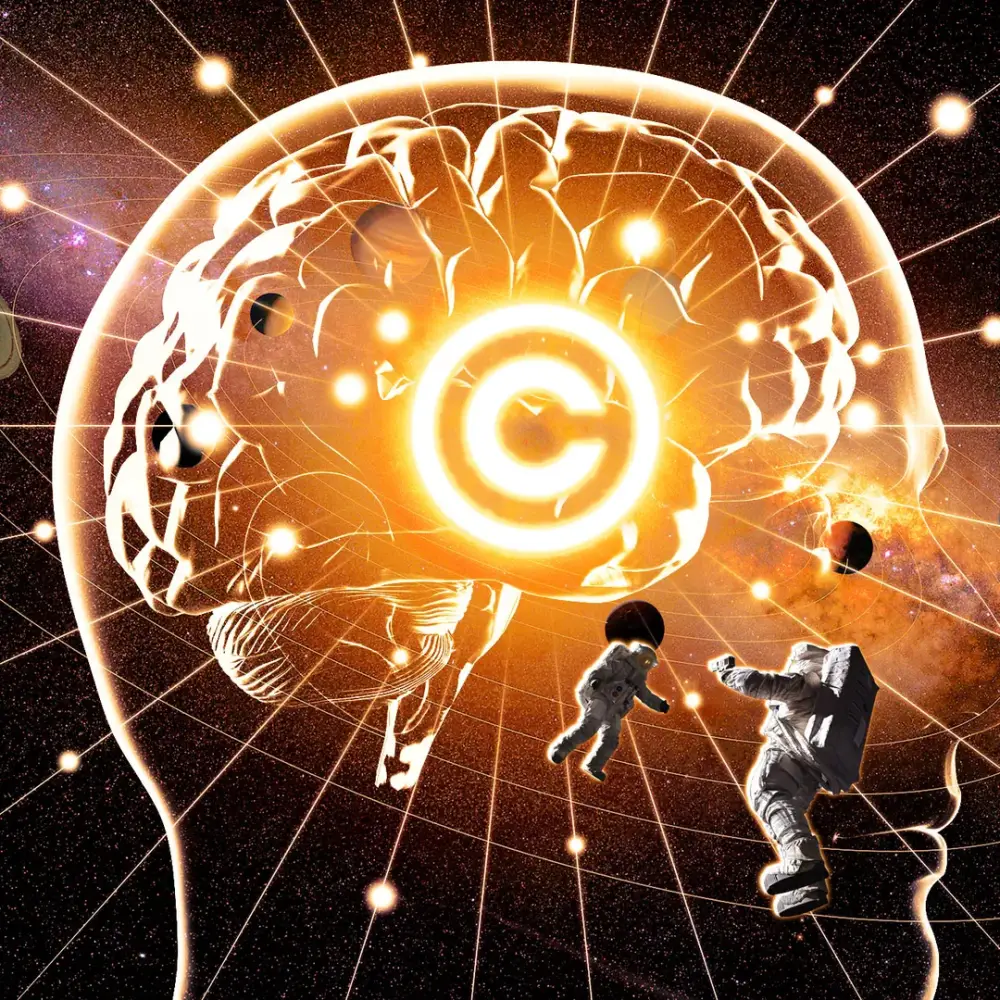
• OpenAI đã ký thỏa thuận với nhiều nhà xuất bản lớn như Axel Springer, Condé Nast và Associated Press, mặc dù đã sử dụng dữ liệu của họ mà không xin phép trước đó.
• Các thỏa thuận này có giá trị từ 1 đến 10 triệu USD mỗi năm cho mỗi nhà xuất bản, một con số khá nhỏ so với quy mô của OpenAI.
• Mục đích của các thỏa thuận có thể là:
- Cập nhật dữ liệu mới nhất cho ChatGPT
- Ngăn chặn các vụ kiện tiềm tàng từ nhà xuất bản
- Cải thiện độ chính xác của AI
- Xây dựng uy tín và hình ảnh tốt hơn cho OpenAI
• The New York Times đã kiện OpenAI vì vi phạm bản quyền, đòi bồi thường tối thiểu 7,5 tỷ USD.
• OpenAI đang phát triển SearchGPT, một công cụ tìm kiếm AI nhằm cạnh tranh với Google.
• Google đang mất dần ưu thế trong lĩnh vực tìm kiếm do chất lượng kết quả suy giảm và việc giữ người dùng trong hệ sinh thái của mình.
• Các thỏa thuận của OpenAI có thể tạo áp lực buộc Google phải đàm phán với các nhà xuất bản.
• OpenAI đang đốt tiền và có thể lỗ 5 tỷ USD trong năm nay, nhưng đang được định giá trên 100 tỷ USD.
• Kết quả của vụ kiện The New York Times có thể ảnh hưởng lớn đến tương lai của AI tạo sinh:
- Nếu OpenAI thua, các công ty AI lớn sẽ phải trả tiền bản quyền, có lợi cho những "ông lớn" công nghệ
- Các mô hình AI nguồn mở có thể bị ảnh hưởng nặng nề
• Các thỏa thuận hiện tại của OpenAI có thể phản tác dụng trong việc bảo vệ lập luận "sử dụng hợp lý" (fair use) của họ.
• Vẫn còn nhiều câu hỏi về tính bền vững tài chính và nhu cầu thực sự của người dùng đối với các "công cụ trả lời" AI.
📌 OpenAI đang đánh cược tương lai vào các thỏa thuận bản quyền trị giá hàng triệu USD với nhà xuất bản, nhằm tránh kiện tụng và phát triển công cụ tìm kiếm AI cạnh tranh Google. Tuy nhiên, chiến lược này tiềm ẩn nhiều rủi ro pháp lý và có thể định hình lại toàn bộ ngành công nghiệp AI trong tương lai.
https://www.theverge.com/2024/8/30/24230975/openai-publisher-deals-web-search

• Tim Boucher, nghệ sĩ Canada, đã gửi thư phản đối cách đơn kiện Anthropic mô tả công việc của anh trong vụ kiện bản quyền của các tác giả.
• Đơn kiện cáo buộc Anthropic vi phạm bản quyền tác giả và trích dẫn báo cáo của Newsweek về việc Boucher sử dụng Claude để viết 97 cuốn sách trong chưa đầy một năm.
• Boucher cho rằng đoạn văn này "mô tả sai" công việc của anh và gây tổn hại danh tiếng, khiến một hãng truyền thông lớn gọi anh là "kẻ lừa đảo".
• Anh khẳng định không sao chép sách của người khác, nội dung sách đến từ trí tưởng tượng của anh và anh sử dụng AI như một công cụ để hiện thực hóa tầm nhìn đó.
• Boucher không bán sách trên Amazon và chưa bao giờ trả tiền cho Anthropic để sử dụng dịch vụ AI.
• Anh yêu cầu các luật sư nguyên đơn sửa đổi đơn kiện và thể hiện sự cân nhắc hơn đối với những người thực sự bị ảnh hưởng bởi chiến thuật kiện tụng của họ.
• Về vấn đề bản quyền, Boucher cho rằng hầu hết việc sử dụng tài liệu có bản quyền để đào tạo AI đều thuộc phạm vi Sử dụng hợp lý theo luật Mỹ.
• Anh ủng hộ quan điểm của Hiệp hội Luật sư Canada so sánh việc sử dụng AI tạo sinh với công việc của nhà quay phim khi sắp xếp và tổ chức các tác phẩm phim ảnh.
• Boucher cho rằng AI đã giúp anh trở thành một nhà văn giỏi hơn rất nhiều, cải thiện khả năng viết có cấu trúc và lập luận logic.
• Anh ủng hộ việc gắn nhãn chính xác và minh bạch cho các tác phẩm được hỗ trợ bởi AI.
• Boucher tin rằng chúng ta đang chứng kiến sự ra đời của một phong trào nghệ thuật mới và muốn thấy những người làm việc trong lĩnh vực này thực sự đẩy giới hạn của công nghệ và hiểu biết thông thường của chúng ta về "sách" và thậm chí cả "nghệ thuật".
📌 Tim Boucher, nghệ sĩ Canada, phản đối cáo buộc vi phạm bản quyền trong vụ kiện Anthropic. Anh bảo vệ việc sử dụng AI trong sáng tạo, khẳng định AI giúp cải thiện kỹ năng viết và kêu gọi minh bạch trong ghi nhãn tác phẩm AI. Boucher tin AI đang mở ra một phong trào nghệ thuật mới đầy tiềm năng.
https://www.theregister.com/2024/08/31/canadian_artist_anthropic_ai_lawsuit/
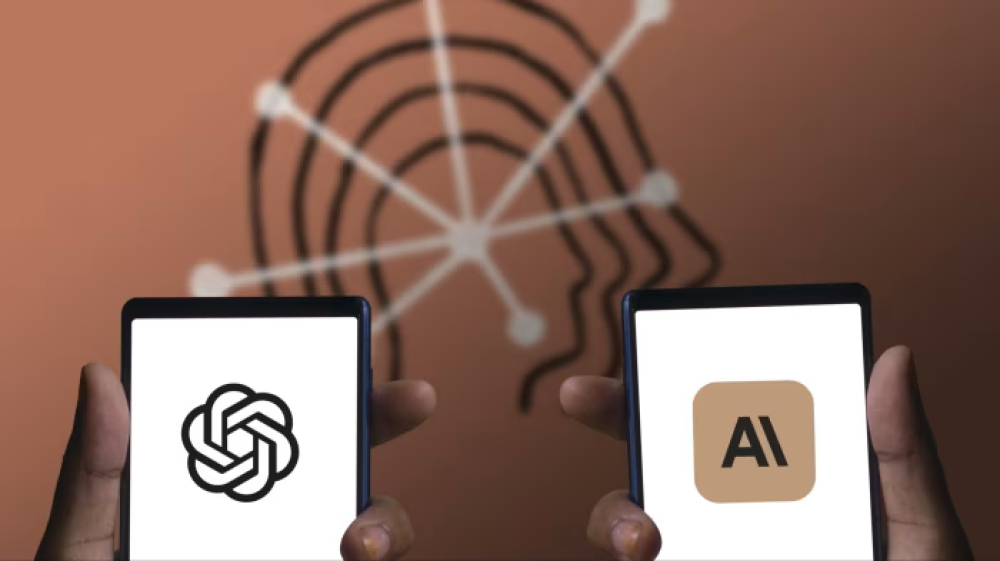
• Các công ty AI hàng đầu đang phải đối mặt với làn sóng kiện tụng về bản quyền và cáo buộc thu thập dữ liệu từ web một cách quá mức.
• Anthropic bị ba tác giả kiện vì "đánh cắp hàng trăm nghìn cuốn sách có bản quyền" mà không xin phép hoặc trả tiền bản quyền.
• New York Times kiện OpenAI và Microsoft vì "thu lợi từ vi phạm bản quyền quy mô lớn" của nội dung báo chí.
• Các công ty AI đang chạm đến "ranh giới dữ liệu", buộc phải tìm kiếm dữ liệu từ những nguồn sâu hơn trên web, ký thỏa thuận truy cập dữ liệu riêng hoặc sử dụng dữ liệu tổng hợp.
• Anthropic và Perplexity bị cáo buộc "thu thập dữ liệu web quá mức" để huấn luyện hệ thống AI của họ.
• Google gây tranh cãi khi thu thập dữ liệu từ các trang web cho công cụ AI mà không bị chặn.
• Các startup AI đang trong cuộc đua gay gắt để giành ưu thế, đòi hỏi lượng lớn dữ liệu huấn luyện cùng với thuật toán tiên tiến và bộ vi xử lý mạnh mẽ hơn.
• OpenAI và Anthropic đã huy động được hơn 20 tỷ USD để xây dựng các mô hình AI tạo sinh mạnh mẽ.
• Các công ty AI đang ký kết thỏa thuận với các nhà xuất bản để đảm bảo chatbot của họ tạo ra phản hồi chính xác và cập nhật.
• OpenAI đã ký thỏa thuận với Condé Nast và một số nhà xuất bản khác. Perplexity cũng đã ký các thỏa thuận chia sẻ doanh thu với nhiều nhà xuất bản.
• Anthropic mới đây đã thuê Tom Turvey, một cựu nhân viên Google 20 năm kinh nghiệm về chiến lược hợp tác với các nhà xuất bản lớn.
• Năm 2015, Google đã thắng kiện trước một nhóm tác giả, tạo tiền lệ cho mối quan hệ giữa nhà xuất bản và công ty công nghệ ngày nay.
• Vụ kiện của New York Times chống lại OpenAI dựa trên cáo buộc rằng cách công ty công nghệ sử dụng nội dung "không có gì biến đổi".
• Một phán quyết trong vụ kiện này sẽ tạo ra tiền lệ mới cho các nhà xuất bản. Tuy nhiên, vụ kiện của Google đã kéo dài một thập kỷ mới kết thúc.
📌 Các công ty AI đang đối mặt với thách thức pháp lý và kỹ thuật lớn khi tiếp cận "ranh giới dữ liệu". Làn sóng kiện tụng bản quyền và cáo buộc thu thập dữ liệu quá mức đang buộc họ phải tìm kiếm các nguồn dữ liệu mới và xây dựng quan hệ đối tác với nhà xuất bản. Kết quả của các vụ kiện sẽ định hình tương lai của ngành công nghiệp AI.
https://www.ft.com/content/e6a4dcae-2bda-42de-8112-768844673cea
#FT

• Harvey Mason Jr., CEO của Recording Academy, gây chú ý khi tuyên bố Grammy sẽ chấp nhận âm nhạc được tạo ra bằng AI. Tuy nhiên, ông sau đó làm rõ rằng chỉ con người mới có thể đề cử giải thưởng, nhưng AI có thể được sử dụng trong quá trình sáng tạo.
• Sự phát triển của AI đang gây lo ngại trong ngành công nghiệp âm nhạc về vấn đề thay thế con người, bản quyền và tiền bản quyền.
• Một số nghệ sĩ phản đối việc sử dụng AI trong âm nhạc, trong khi những người khác chấp nhận miễn là họ được trả tiền.
• Các mối quan ngại chính trong ngành bao gồm đảm bảo phê duyệt đúng để sử dụng tác phẩm của nghệ sĩ, ghi nhận công lao riêng biệt cho con người và AI, và đảm bảo thanh toán công bằng.
• Mason đã tham gia vào việc thông qua Đạo luật ELVIS ở Tennessee, bảo vệ nghệ sĩ khỏi việc sử dụng trái phép giọng nói của họ. Ông cũng ủng hộ Đạo luật Không Lừa đảo AI và Đạo luật Không FAKES để bảo vệ hình ảnh của người sáng tạo khỏi AI giả mạo.
• Vấn đề này đang diễn ra nhanh hơn luật pháp. Gần đây, Donald Trump gặp rắc rối pháp lý sau khi sử dụng hình ảnh AI trái phép của Taylor Swift để quảng bá chiến dịch tranh cử tổng thống.
• Năm 2020, AI hầu như không phải là chủ đề thảo luận trong ngành âm nhạc. Tuy nhiên, đến năm 2023, mọi thứ bắt đầu thay đổi khi một bài hát deepfake có giọng hát AI của Drake và The Weeknd lan truyền trên mạng.
• Một sự cố AI nổi tiếng khác liên quan đến Drake sử dụng giọng nói AI trái phép của Tupac trong một bài hát chế giễu Kendrick Lamar, dẫn đến việc bị đe dọa kiện.
• Mason tin rằng con người sẽ thích nghi với AI, giống như họ đã thích nghi với các hình thức công nghệ mới khác trong quá khứ. Tuy nhiên, ông nhấn mạnh tầm quan trọng của việc đảm bảo công bằng cho người sáng tạo trong quá trình này.
📌 AI đang tác động mạnh mẽ đến ngành công nghiệp âm nhạc, gây ra lo ngại về bản quyền và sáng tạo. CEO Grammy Harvey Mason Jr. kêu gọi cần có quy định và bảo vệ người sáng tạo, đồng thời tin rằng con người sẽ thích nghi với công nghệ mới này như đã từng làm trong quá khứ.
https://techcrunch.com/2024/08/31/grammy-ceo-says-music-industry-also-has-ai-concerns/

• Hiện có hơn 25 vụ kiện bản quyền đang chờ xét xử chống lại các công ty AI.
• Vụ Thomson Reuters kiện ROSS Intelligence bị hoãn ngay trước ngày xét xử. Đây có thể là vụ kiện tiên phong tạo tiền lệ cho các vụ khác.
• Vụ kiện tập thể Sarah Andersen chống lại Stability AI cáo buộc công ty này sử dụng tác phẩm của nghệ sĩ mà không được phép để huấn luyện AI tạo hình ảnh.
• Getty Images kiện Stability AI vì sử dụng hơn 12 triệu ảnh trong thư viện của họ mà không có giấy phép để huấn luyện hệ thống AI Stable Diffusion.
• Vụ kiện Zhang chống Google cáo buộc công ty sử dụng tác phẩm có bản quyền để huấn luyện công cụ AI tạo hình ảnh từ văn bản.
• Meta bị kiện trong vụ Richard Kadrey vì cáo buộc vi phạm bản quyền khi sử dụng sách để huấn luyện mô hình LLaMa.
• OpenAI đối mặt với vụ kiện tương tự từ Sarah Silverman và các tác giả khác liên quan đến ChatGPT.
• Anthropic bị kiện bởi các nhà văn và nhà báo vì cáo buộc sử dụng tác phẩm của họ để huấn luyện chatbot Claude.
• Nvidia bị kiện vì cáo buộc sử dụng 196.640 cuốn sách để huấn luyện nền tảng AI NeMo.
• Các công ty âm nhạc lớn kiện Anthropic vì sử dụng lời bài hát trái phép để huấn luyện Claude.
• Tổ chức Authors Guild cùng các tác giả nổi tiếng như John Grisham, George R.R. Martin kiện OpenAI và Microsoft.
• New York Times kiện Microsoft và OpenAI vì sử dụng hàng triệu bài báo có bản quyền để huấn luyện mô hình GPT.
• Các vụ kiện về quyền riêng tư cáo buộc OpenAI và Google thu thập dữ liệu người dùng trái phép.
• Elon Musk kiện Sam Altman và OpenAI vì không giữ đúng lời hứa phát triển công nghệ nguồn mở.
📌 Hơn 25 vụ kiện bản quyền và quyền riêng tư đang chờ xét xử chống lại các công ty AI lớn như OpenAI, Meta và Google. Các vụ kiện tập trung vào việc sử dụng nội dung có bản quyền để huấn luyện AI và thu thập dữ liệu người dùng trái phép, với sự tham gia của nhiều tổ chức lớn như Getty Images, New York Times và Authors Guild.
https://www.fastcompany.com/91179905/openai-anthropic-and-meta-tracking-the-lawsuits-filed-against-the-major-ai-companies

SEO contents:
1. Meta descriptions:
Vụ kiện của các nghệ sĩ chống lại Stability AI và Midjourney đã bước sang giai đoạn khám phá. Các nghệ sĩ hy vọng có thêm thông tin về quá trình đào tạo mô hình AI và tác động của AI đến nghệ thuật.
2. Meta keywords:
vụ kiện AI, Stability AI, Midjourney, bản quyền nghệ thuật, Kelly McKernan, khám phá pháp lý, mô hình AI, dữ liệu đào tạo, tác động của AI
3. SEO title:
vụ kiện của các nghệ sĩ chống lại stability ai và midjourney: những bước tiến mới và hy vọng về tương lai
Tóm tắt chi tiết:
• Vụ kiện tập thể của các nghệ sĩ thị giác chống lại các nền tảng tạo hình ảnh và video AI như Stability AI, Midjourney, Runway và DeviantArt đã chuyển sang giai đoạn khám phá pháp lý.
• Các nghệ sĩ cáo buộc các nền tảng này vi phạm bản quyền trong quá trình đào tạo mô hình AI của họ.
• Trong giai đoạn khám phá, cả hai bên phải tiết lộ thông tin liên quan đến vụ án, bao gồm tài liệu về quá trình đào tạo mô hình AI và bộ dữ liệu.
• Kelly McKernan, một trong những nguyên đơn đầu tiên, bày tỏ sự phấn khích khi vụ kiện tiến triển. Cô hy vọng sẽ có thêm thông tin về quá trình đào tạo mô hình AI.
• McKernan tin rằng đây có thể là một vụ kiện mang tính lịch sử, có khả năng thay đổi cách các công ty nhìn nhận và làm việc với tác phẩm của nghệ sĩ.
• Các nghệ sĩ hy vọng vụ kiện sẽ thúc đẩy việc phát triển các mô hình AI tạo sinh sử dụng nội dung được cấp phép và trả tiền cho nghệ sĩ.
• McKernan cho rằng vụ kiện có thể loại bỏ một loạt các mô hình AI đạo văn và khiến các công ty thận trọng hơn về việc sử dụng dữ liệu được cấp phép.
• Vụ kiện cũng đặt ra vấn đề bảo vệ phong cách nghệ thuật theo Đạo luật Lanham, điều chưa từng được thử nghiệm trước đây.
• McKernan chia sẻ rằng cuộc chiến này đã mang lại cho cô những cơ hội mới và giúp cô có mối quan hệ tốt hơn với công việc sáng tạo của mình.
• Cô hiện là giáo sư minh họa và không còn phụ thuộc hoàn toàn vào thu nhập từ nghệ thuật độc lập.
• McKernan không quan tâm đến việc cho phép sử dụng tác phẩm của mình trong đào tạo AI, ngay cả khi được trả tiền.
• Cô đã ngừng sử dụng các chương trình của Adobe và chuyển sang Procreate, một công cụ thân thiện với nghệ sĩ hơn.
• Trong giai đoạn khám phá, các nguyên đơn sẽ cung cấp thông tin tài khoản mạng xã hội và các liên lạc liên quan đến vụ kiện.
📌 Vụ kiện của các nghệ sĩ chống lại Stability AI và Midjourney đã bước sang giai đoạn khám phá, mở ra cơ hội tìm hiểu sâu hơn về quá trình đào tạo mô hình AI. Các nghệ sĩ hy vọng vụ kiện sẽ thúc đẩy việc sử dụng nội dung được cấp phép trong AI và bảo vệ quyền lợi của họ. Kết quả có thể tác động lớn đến tương lai của AI trong nghệ thuật.
https://venturebeat.com/ai/whats-next-for-artists-suing-stability-ai-and-midjourney/
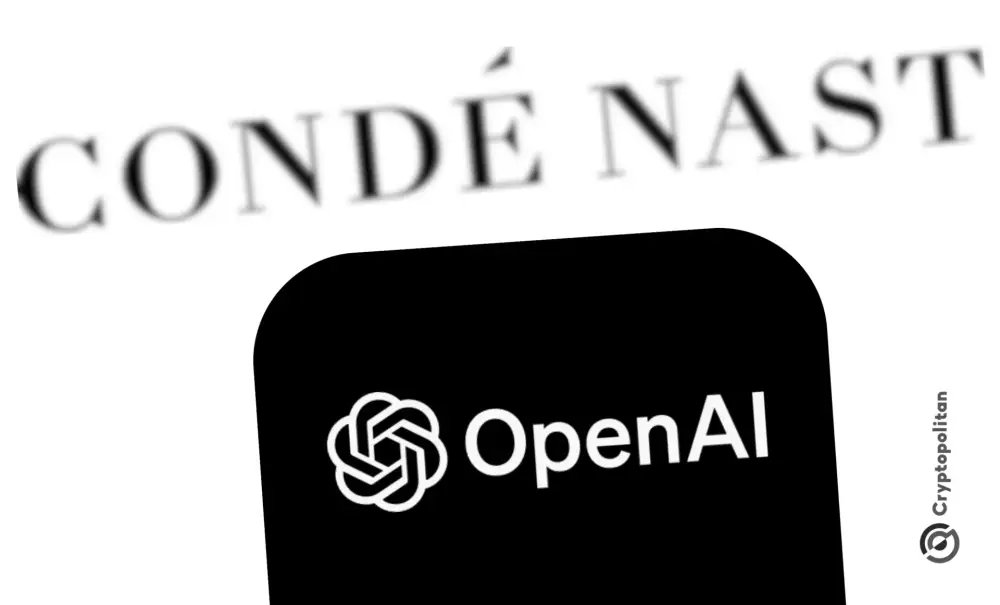
• OpenAI và Condé Nast đã công bố thỏa thuận hợp tác nhiều năm vào ngày 20/8/2024, cho phép hiển thị nội dung từ các thương hiệu của nhà xuất bản như Vogue, Wired và New Yorker trong các sản phẩm AI của OpenAI, bao gồm ChatGPT và SearchGPT.
• Điều khoản tài chính của thỏa thuận không được tiết lộ. Đây là một trong những thỏa thuận tương tự mà OpenAI đã ký kết với các nhà xuất bản lớn khác như Time, Financial Times, Axel Springer, Le Monde và Prisa Media trong những tháng gần đây.
• Các thỏa thuận này cho phép OpenAI tiếp cận kho lưu trữ văn bản lớn của các nhà xuất bản, cần thiết cho việc huấn luyện các mô hình ngôn ngữ lớn như ChatGPT và tìm kiếm thông tin thời gian thực.
• OpenAI đã ra mắt công cụ tìm kiếm AI SearchGPT vào tháng 7/2024, có khả năng truy cập thông tin thời gian thực từ internet, tạo ra sự cạnh tranh với Google trong lĩnh vực tìm kiếm.
• Brad Lightcap, Giám đốc điều hành của OpenAI, khẳng định cam kết làm việc với Condé Nast và các nhà xuất bản tin tức khác để đảm bảo tính chính xác, toàn vẹn và tôn trọng báo cáo chất lượng khi AI đóng vai trò lớn hơn trong việc khám phá và cung cấp tin tức.
• Roger Lynch, CEO của Condé Nast, cho biết thỏa thuận này sẽ bù đắp một phần doanh thu mà các công ty công nghệ đã chiếm lấy từ các nhà xuất bản trong những năm gần đây. Ông nhấn mạnh tầm quan trọng của việc đáp ứng nhu cầu khán giả và áp dụng công nghệ mới, đồng thời đảm bảo ghi nhận và bồi thường thích hợp cho việc sử dụng tài sản trí tuệ.
• Một số công ty truyền thông khác như New York Times và The Intercept đã chọn cách tiếp cận ngược lại bằng cách kiện OpenAI vì sử dụng các bài báo của họ mà không được phép. Các vụ kiện này vẫn đang tiếp diễn.
• Thỏa thuận này phản ánh xu hướng ngày càng tăng của việc tích hợp nội dung báo chí vào các sản phẩm AI, đồng thời nêu bật những thách thức và cơ hội mà AI tạo sinh mang lại cho ngành công nghiệp truyền thông.
📌 OpenAI và Condé Nast ký kết hợp tác chiến lược, tích hợp nội dung từ Vogue, Wired và New Yorker vào ChatGPT và SearchGPT. Thỏa thuận này đánh dấu bước tiến quan trọng trong việc kết hợp AI với báo chí truyền thống, mở ra cơ hội mới cho cả hai bên trong kỷ nguyên số.
https://www.theguardian.com/technology/article/2024/aug/20/conde-nast-open-ai-deal
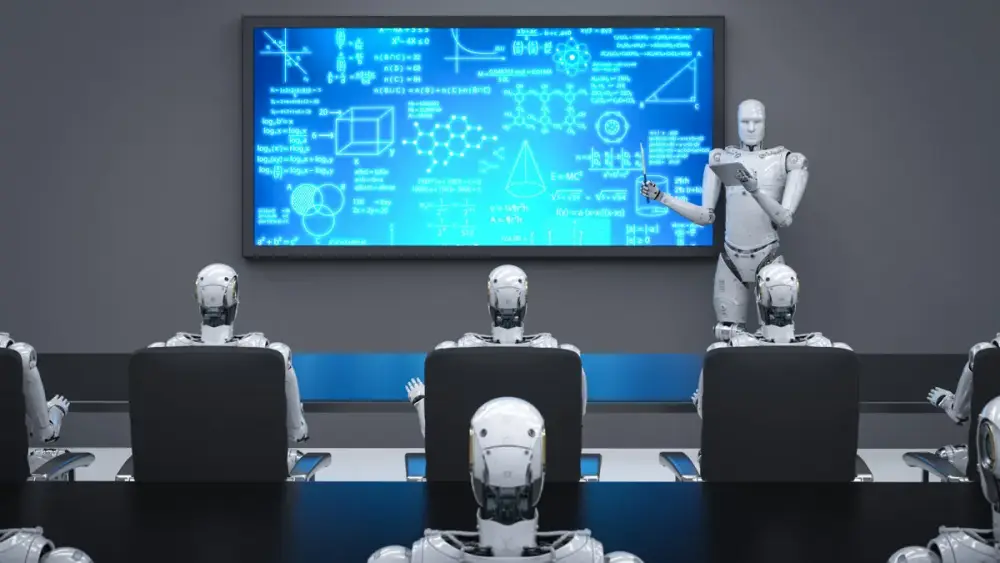
• David Millette, một người sáng tạo nội dung trên YouTube, đã đệ đơn kiện Nvidia vì sử dụng video của anh để huấn luyện mô hình AI mà không được phép. Đây là vụ kiện thứ hai của Millette, sau khi anh kiện OpenAI vì lý do tương tự vài tuần trước đó.
• Khác với các vụ kiện trước đây cáo buộc vi phạm bản quyền, Millette cáo buộc Nvidia về tội "làm giàu bất chính và cạnh tranh không lành mạnh". Anh cho rằng việc thu thập dữ liệu trên internet để huấn luyện AI là "không công bằng, vô đạo đức, áp bức, thiếu lương tâm và gây tổn hại cho người tiêu dùng".
• Vụ kiện được đệ trình sau khi Nvidia bị cáo buộc thu thập hơn 400.000 giờ video mỗi ngày để huấn luyện mô hình AI của họ. Một email bị rò rỉ cho thấy công ty có kế hoạch sử dụng dữ liệu thu thập được như một nguồn cung cấp nhanh cho các khách hàng muốn xây dựng và huấn luyện mô hình AI riêng.
• Nvidia phản hồi rằng việc học hỏi từ các nguồn công khai là hợp pháp và tạo ra các tác phẩm mới và biến đổi là điều mà hệ thống pháp luật khuyến khích.
• Millette cáo buộc "làm giàu bất chính" dựa trên định nghĩa từ vụ Mandarin Trading Ltd. v. Wildenstein (2011), trong đó nguyên đơn có thể đòi bồi thường từ bị đơn khi bị đơn hưởng lợi không công bằng từ nỗ lực của nguyên đơn mà không có bồi thường.
• Việc thu thập dữ liệu trên internet luôn gây tranh cãi, đặc biệt khi được sử dụng để huấn luyện các mô hình ngôn ngữ lớn (LLM) có khả năng thay thế sự sáng tạo của con người.
• Luật pháp về việc thu thập dữ liệu trên internet để huấn luyện AI vẫn chưa rõ ràng. Các công ty đang tận dụng khoảng trống pháp lý này để giành lợi thế.
📌 Vụ kiện của David Millette chống lại Nvidia và OpenAI đặt ra vấn đề về tính hợp pháp và đạo đức của việc thu thập dữ liệu internet cho AI. Với hơn 400.000 giờ video bị thu thập mỗi ngày, cuộc tranh luận về quyền sở hữu trí tuệ và sử dụng công bằng trong kỷ nguyên AI ngày càng gay gắt.
https://www.tomshardware.com/tech-industry/artificial-intelligence/youtube-creator-sues-nvidia-and-openai-for-unjust-enrichment-for-using-their-videos-for-ai-training
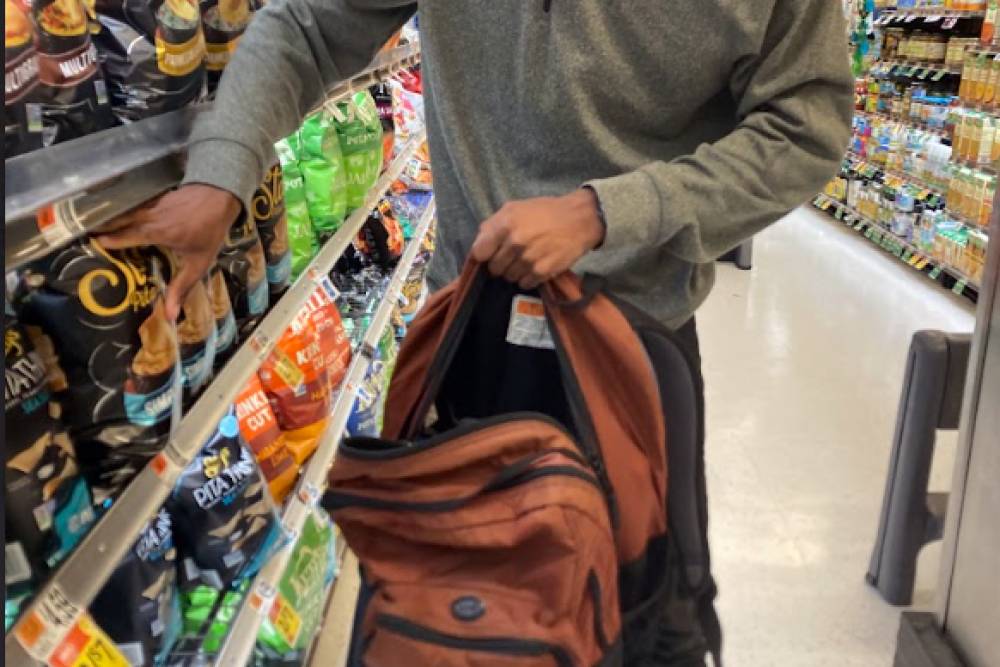
• Bill Gross, người sáng lập mô hình "pay-per-click" trong quảng cáo trực tuyến những năm 1990, hiện đang phát triển startup ProRata với mô hình kinh doanh "AI trả tiền theo lượt sử dụng".
• Gross chỉ trích các công ty AI tạo sinh đang "ăn cắp" và "rửa tiền" kiến thức của thế giới. Ông không đồng tình với lập luận rằng việc thu thập dữ liệu từ internet là hợp pháp.
• ProRata nhằm mục đích sắp xếp các thỏa thuận chia sẻ doanh thu để nhà xuất bản và cá nhân được trả tiền khi công ty AI sử dụng tác phẩm của họ.
• Công ty đã nộp đơn xin cấp bằng sáng chế cho các thuật toán phân bổ và thanh toán phù hợp.
• ProRata đã huy động được 25 triệu USD và ra mắt với nhiều đối tác lớn như Universal Music Group, Financial Times, The Atlantic và Axel Springer.
• Công ty cũng ký kết thỏa thuận với các tác giả nổi tiếng như Tony Robbins, Neal Postman và Scott Galloway.
• Gross cho biết đã nhận được nhiều yêu cầu hợp tác từ các công ty khác sau thông báo ban đầu, bao gồm cả Time.
• ProRata sẽ ra mắt công cụ tìm kiếm dạng chatbot riêng vào tháng 10, chỉ sử dụng dữ liệu được cấp phép.
• Gross tin rằng 70 triệu tài liệu chất lượng cao sẽ mang lại kết quả tốt hơn 70 tỷ tài liệu kém chất lượng.
• Mô hình kinh doanh của ProRata một phần dựa vào kế hoạch cấp phép công nghệ phân bổ và thanh toán cho các công ty khác, bao gồm cả các công ty AI lớn.
• Các startup khác như TollBit và Human Native AI cũng đang cạnh tranh trong lĩnh vực cấp phép dữ liệu huấn luyện.
• Một tổ chức phi lợi nhuận tên Dataset Providers Alliance được thành lập để thúc đẩy tiêu chuẩn hóa trong việc cấp phép.
📌 ProRata của Bill Gross đề xuất mô hình "AI trả tiền theo lượt sử dụng" nhằm giải quyết vấn đề bản quyền trong AI tạo sinh. Với 25 triệu USD vốn đầu tư và hợp tác với các đối tác lớn, startup này hứa hẹn mang lại giải pháp công bằng cho chủ sở hữu nội dung trong kỷ nguyên AI.
https://www.wired.com/story/bill-gross-prorata-generative-ai-business/
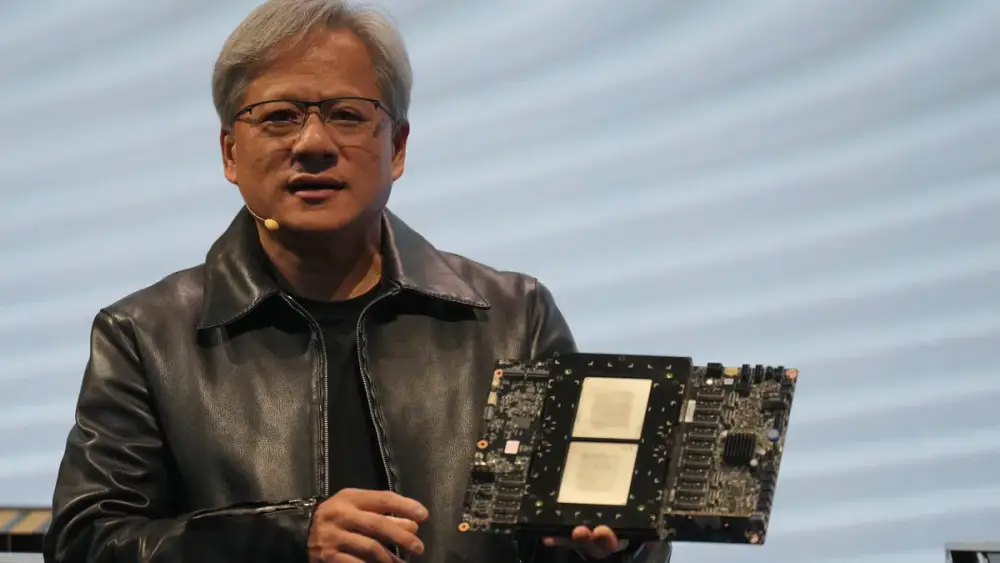
• Theo tài liệu rò rỉ, Nvidia đã sử dụng hàng triệu video từ YouTube, Netflix và các nguồn khác để huấn luyện mô hình AI cho nền tảng Omniverse, xe tự lái và avatar kỹ thuật số.
• Dự án nội bộ mang tên mã Cosmos của Nvidia đã sử dụng hàng chục máy tính ảo trên Amazon Web Service (AWS) để tải xuống lượng video khổng lồ, tích lũy hơn 30 triệu URL chỉ trong vòng một tháng.
• Nhân viên Nvidia đã thảo luận nhiều về luật bản quyền và quyền sử dụng, tìm cách né tránh vi phạm trực tiếp. Ví dụ, họ sử dụng dịch vụ đám mây của Google để tải bộ dữ liệu YouTube-8M thay vì tải trực tiếp video.
• Một nhân viên tiết lộ họ đã "thông báo trước với Google/YouTube về việc tải xuống và dùng Google Cloud như một lợi thế", vì Google sẽ mất doanh thu quảng cáo khi video bị tải về để huấn luyện AI.
• Nvidia tuyên bố "tuân thủ đầy đủ cả tinh thần và chữ viết của luật bản quyền" khi được hỏi về khía cạnh pháp lý và đạo đức của việc sử dụng tài liệu có bản quyền để huấn luyện AI.
• Một số bộ dữ liệu chỉ được phép sử dụng cho mục đích học thuật, nhưng tài liệu rò rỉ cho thấy Nvidia có ý định sử dụng cho mục đích thương mại.
• Nvidia không phải công ty duy nhất làm điều này. OpenAI và Runway cũng bị cáo buộc cố ý sử dụng tài liệu có bản quyền và được bảo vệ để huấn luyện mô hình AI.
• Thú vị là Nvidia thậm chí còn gặp khó khăn khi sử dụng video gameplay từ dịch vụ GeForce Now của chính họ do "rào cản kỹ thuật và quy định".
• Các mô hình AI cần được huấn luyện trên hàng tỷ điểm dữ liệu. Một số bộ dữ liệu có quy tắc sử dụng rõ ràng, trong khi một số khác có hạn chế lỏng lẻo hơn.
• Ngoài vấn đề bản quyền, nội dung video thường chứa dữ liệu cá nhân. Mặc dù không có luật liên bang duy nhất ở Mỹ áp dụng trực tiếp, nhưng có nhiều quy định về thu thập và sử dụng dữ liệu cá nhân. Ở EU, Quy định Bảo vệ Dữ liệu Chung (GDPR) quy định rõ ràng cách sử dụng dữ liệu như vậy.
• Câu hỏi đặt ra là nếu một công ty như Nvidia bị phát hiện vi phạm các quy định khi huấn luyện mô hình AI, liệu hệ thống đó có bị chặn ở các quốc gia cụ thể không? Nvidia có sẵn sàng tạo mô hình mới, được huấn luyện với tất cả quyền được cấp, chỉ cho những địa điểm đó không?
• Cần có sự minh bạch hơn về việc sử dụng dữ liệu có bản quyền và dữ liệu cá nhân cho mục đích thương mại trong lĩnh vực AI. Nếu các công ty công nghệ không bị buộc phải chịu trách nhiệm, việc thu thập dữ liệu sẽ tiếp tục diễn ra một cách tùy tiện.
📌 Nvidia thu thập 30 triệu URL video trong 1 tháng để huấn luyện AI, gây tranh cãi về bản quyền và quyền riêng tư. Công ty tuyên bố tuân thủ luật pháp nhưng vẫn đặt ra câu hỏi về đạo đức và tính minh bạch trong việc sử dụng dữ liệu cho AI thương mại.
https://www.pcgamer.com/software/ai/geforce-gpu-giant-has-been-data-scraping-80-years-worth-of-videos-every-day-for-ai-training-to-unlock-various-downstream-applications-critical-to-nvidia/
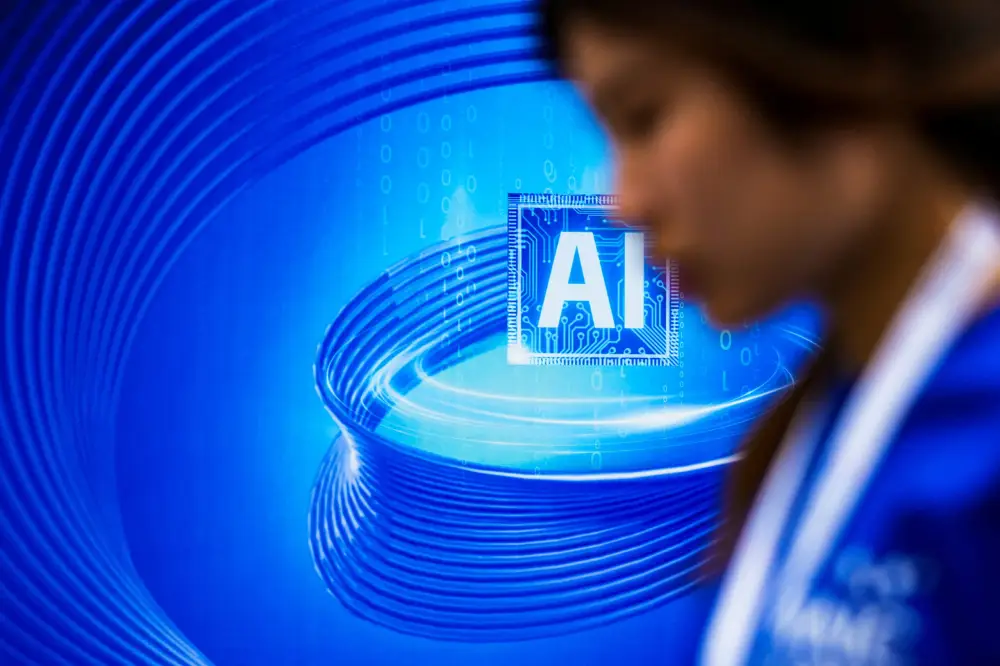
• Các hãng thu âm lớn như Sony Music, Universal Music Group và Warner Music đã đệ đơn kiện các công ty AI âm nhạc Udio và Suno vào tháng 6/2024.
• Các hãng thu âm cáo buộc Udio và Suno đã sử dụng trái phép danh mục bản ghi âm có bản quyền của họ để huấn luyện hệ thống AI, cho phép bắt chước giọng hát và phong cách của các nghệ sĩ nổi tiếng.
• Vụ kiện đặt ra những câu hỏi pháp lý mới về việc liệu luật có nên có ngoại lệ cho việc AI sử dụng tác phẩm có bản quyền để tạo ra nội dung mới hay không.
• Các chuyên gia cho rằng việc xác định vi phạm bản quyền trong âm nhạc phức tạp hơn so với văn bản do có nhiều yếu tố như giai điệu, hòa âm, nhịp điệu.
• Udio và Suno phủ nhận vi phạm bản quyền, cho rằng đây là nỗ lực của các hãng thu âm nhằm ngăn cản đối thủ cạnh tranh nhỏ hơn.
• Các công ty AI lập luận rằng việc sử dụng bản ghi âm hiện có để giúp người dùng tạo ra bài hát mới là "sử dụng hợp lý" theo luật bản quyền Mỹ.
• Nhiều nghệ sĩ như Tift Merritt, Billie Eilish, Nicki Minaj đã lên tiếng cảnh báo AI có thể "phá hoại sự sáng tạo" và gạt bỏ nghệ sĩ.
• Vụ kiện có thể kéo dài nhiều năm và phụ thuộc vào việc tòa án xác định liệu việc sử dụng của AI có được coi là "sử dụng hợp lý" hay không.
• Các chuyên gia cho rằng các công ty AI âm nhạc có thể gặp khó khăn hơn trong việc chứng minh sử dụng hợp lý so với các chatbot AI.
• Một phán quyết của Tòa án Tối cao Mỹ năm 2023 về sử dụng hợp lý có thể có tác động lớn đến các vụ kiện âm nhạc, tập trung vào việc liệu việc sử dụng mới có cùng mục đích thương mại với tác phẩm gốc hay không.
📌 Vụ kiện AI âm nhạc đặt ra thách thức pháp lý mới về bản quyền trong kỷ nguyên AI. Kết quả có thể định hình tương lai của ngành công nghiệp âm nhạc trị giá hàng tỷ USD và sự cân bằng giữa đổi mới công nghệ và bảo vệ quyền lợi nghệ sĩ.
https://www.rappler.com/technology/music-labels-artificial-intelligence-lawsuits-create-new-copyright-puzzle-us-courts/

• Văn phòng Bản quyền Hoa Kỳ vừa công bố phần 1 của báo cáo toàn diện về tác động của AI, tập trung vào vấn đề "bản sao kỹ thuật số" hay còn gọi là deepfake.
• Báo cáo nhấn mạnh sự cần thiết của luật liên bang mới để đối phó với sự phát triển nhanh chóng của AI tạo sinh và các mối đe dọa từ việc sử dụng trái phép deepfake.
• Dự luật NO FAKES Act (Nuôi dưỡng Bản gốc, Thúc đẩy Nghệ thuật và Giữ an toàn Giải trí) đã được đưa ra Thượng viện, nhằm cung cấp quyền mới để ủy quyền sử dụng hình ảnh, giọng nói hoặc diện mạo của cá nhân trong bản sao kỹ thuật số.
• Báo cáo khuyến nghị luật liên bang mới cần ưu tiên bảo vệ sinh kế của nghệ sĩ, nhân phẩm của người sống và an ninh công cộng trước gian lận và thông tin sai lệch.
• Maria Pallante, Chủ tịch và CEO của AAP, đánh giá NO FAKES Act là "chiến thắng lớn cho công chúng".
• Đây là phần đầu tiên trong một loạt báo cáo về AI. Các phần tiếp theo sẽ đề cập đến các vấn đề khác như bản quyền của tác phẩm tạo ra bằng AI, đào tạo mô hình AI trên tác phẩm có bản quyền, cấp phép và phân bổ trách nhiệm pháp lý.
• Shira Perlmutter, Giám đốc Văn phòng Bản quyền Hoa Kỳ, nhấn mạnh AI là "chương mới nhất" trong mối quan hệ cộng sinh giữa bản quyền và công nghệ.
• Perlmutter đặt ra nhiều câu hỏi cơ bản về tác động của AI đối với luật và chính sách bản quyền, bao gồm: mức độ thay thế sáng tạo của con người, sự khác biệt giữa sáng tạo của con người và AI, tác động đến nền tảng khuyến khích của hệ thống bản quyền Hoa Kỳ.
• Báo cáo cũng đề cập đến tiềm năng của AI như một công cụ hữu ích để tăng cường sáng tạo của con người và thúc đẩy khoa học và nghệ thuật.
• Vấn đề cân bằng giữa tôn trọng, khen thưởng các nhà sáng tạo và không cản trở tiến bộ công nghệ cũng được đặt ra.
📌 Văn phòng Bản quyền Hoa Kỳ kêu gọi luật mới về deepfake trong báo cáo AI. Dự luật NO FAKES Act được đề xuất để bảo vệ quyền sử dụng hình ảnh cá nhân. Báo cáo nhấn mạnh cần cân bằng giữa bảo vệ nghệ sĩ và thúc đẩy đổi mới AI.
https://www.publishersweekly.com/pw/by-topic/industry-news/publisher-news/article/95621-u-s-copyright-office-releases-part-one-of-ai-report-calls-for-new-legislation.html

• Perplexity sẽ bắt đầu chương trình chia sẻ doanh thu với 6 đối tác xuất bản, bao gồm Time, Der Spiegel, Fortune, Entrepreneur, The Texas Tribune và Automattic (chỉ WordPress).
• Chương trình sẽ trả tiền cho chủ website cho mỗi liên kết nguồn trong kết quả tìm kiếm có quảng cáo, mặc dù quảng cáo sẽ chưa xuất hiện cho đến cuối năm nay.
• Perplexity muốn đặt nền móng cho việc chia sẻ doanh thu ngay từ bây giờ, dù quảng cáo trên nền tảng chỉ bắt đầu vào nửa cuối năm 2024.
• Công ty sẽ chia sẻ một tỷ lệ phần trăm cố định từ doanh thu quảng cáo cho các nhà xuất bản trong tính năng "Keep Exploring" sắp ra mắt.
• Các đối tác xuất bản sẽ được cấp quyền truy cập miễn phí vào nền tảng phân tích ScalePost.ai để theo dõi cách thức và thời điểm liên kết của họ được trích dẫn.
• Perplexity sẽ cung cấp API miễn phí cho phép các nhà xuất bản tạo chatbot trên website của họ và tích hợp với tính năng "Keep Exploring".
• Tất cả nhân viên của các đối tác sẽ được cấp tài khoản Perplexity Enterprise Pro miễn phí.
• Perplexity đã cập nhật cách hệ thống lập chỉ mục và trích dẫn nguồn từ các website, sau khi bị cáo buộc bỏ qua các opt-out trong robots.txt.
• OpenAI gần đây đã ra mắt SearchGPT, một công cụ tìm kiếm thử nghiệm, nhưng chưa có chương trình chia sẻ doanh thu.
• OpenAI đã ký kết thỏa thuận với một số công ty truyền thông lớn như News Corp, Vox Media và The Atlantic.
📌 Perplexity tiên phong trong việc chia sẻ doanh thu với nhà xuất bản, bắt đầu với 6 đối tác lớn. Chương trình này sẽ trả tiền cho mỗi liên kết nguồn trong kết quả tìm kiếm có quảng cáo, dự kiến triển khai vào cuối năm 2024. Đây là bước đi táo bạo nhằm thách thức các nền tảng tìm kiếm lớn như Google.
https://venturebeat.com/ai/perplexity-unveils-revenue-sharing-plan-for-publishers/

• Runway, startup có trụ sở tại New York, vừa công bố tính năng mới cho nền tảng video AI Gen-3 Alpha: khả năng tạo video từ ảnh tĩnh.
• Người dùng có thể tải lên ảnh tĩnh và/hoặc nhập lệnh văn bản để tạo video AI dài 5 hoặc 10 giây. Video 10 giây tiêu tốn 40 credit, video 5 giây tiêu tốn 20 credit.
• Tính năng này được đánh giá nhanh (dưới 1 phút để tạo video) và chất lượng cao. Mô hình tự động phát hiện và chặn việc tạo video từ hình ảnh khiêu dâm hoặc nhân vật nổi tiếng như chính trị gia.
• Runway đã đăng tải 10 video ấn tượng được tạo ra từ ảnh tĩnh bằng Gen-3 Alpha trên tài khoản X của họ.
• CEO Cristóbal Valenzuela giới thiệu tính năng mới trên tài khoản X cá nhân với cụm từ đơn giản "it's time".
• Runway đang cạnh tranh với các công ty khác trong lĩnh vực video AI như OpenAI (Sora), Kuaishou Technology (Kling AI), Luma AI (Dream Machine) và Pika.
• Tuy nhiên, Sora của OpenAI vẫn chưa được công bố rộng rãi, trong khi các mô hình khác đã có thể truy cập công khai.
• Công nghệ này đang làm thay đổi toàn bộ lĩnh vực làm phim và sáng tạo video.
• Runway và nhiều công ty AI khác đang phải đối mặt với các vụ kiện tập thể từ các nhà sáng tạo. Họ cáo buộc việc thu thập và đào tạo trên các tài liệu được đăng công khai - bao gồm cả tài liệu có bản quyền - mà không có sự cho phép, ủy quyền, bồi thường hoặc đồng ý rõ ràng là vi phạm luật bản quyền.
• Phán quyết của tòa án về vấn đề này sẽ ảnh hưởng lớn đến hiện tại và tương lai của các công cụ sáng tạo và video AI.
📌 Runway Gen-3 Alpha cho phép tạo video AI từ ảnh tĩnh trong vòng chưa đầy 1 phút với chất lượng cao. Tuy nhiên, công nghệ này đang đối mặt với tranh cãi về bản quyền, có thể ảnh hưởng đến tương lai của ngành công nghiệp video AI đang phát triển nhanh chóng.
https://venturebeat.com/ai/you-can-now-turn-still-images-into-ai-videos-with-runway-gen-3-alpha/
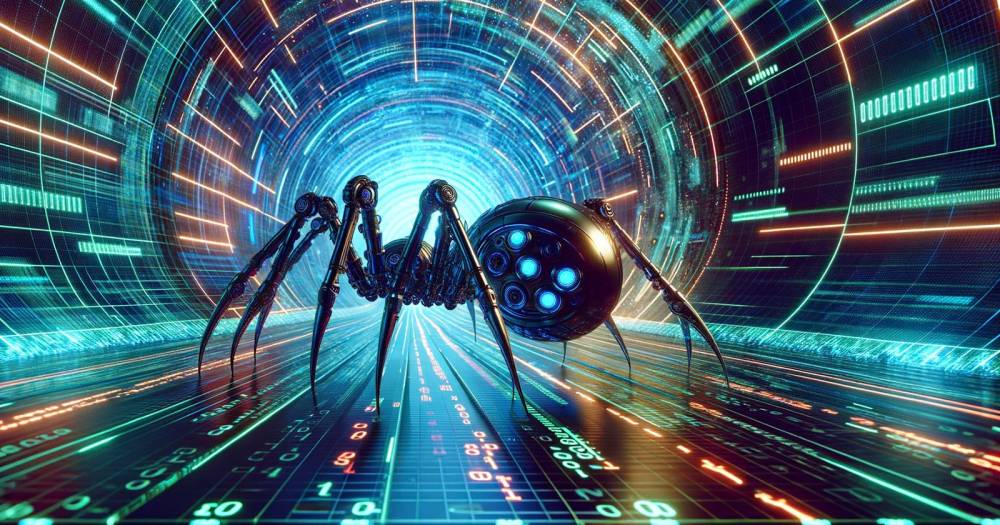
• Một nghiên cứu mới cho thấy dữ liệu đào tạo cho các mô hình AI tạo sinh như Midjourney và ChatGPT đang bắt đầu cạn kiệt.
• Nhóm nghiên cứu của MIT đã xem xét 14.000 tên miền web được sử dụng trong 3 bộ dữ liệu đào tạo AI lớn là C4, RefineWeb và Dolma.
• Kết quả cho thấy 5% tổng số dữ liệu hiện đã bị hạn chế truy cập. Con số này tăng lên 25% đối với các nguồn dữ liệu chất lượng cao nhất.
• Nhiều chủ sở hữu trang web đang sử dụng file robots.txt để ngăn chặn các bot tự động thu thập dữ liệu từ trang của họ.
• Các nhà điều hành AI lo ngại về việc đụng phải "bức tường dữ liệu" khi chủ sở hữu dữ liệu như nhiếp ảnh gia trở nên không tin tưởng ngành công nghiệp AI.
• OpenAI, công ty vận hành DALL-E và ChatGPT, cho biết họ tôn trọng robots.txt. Các công cụ tìm kiếm lớn và Anthropic cũng làm như vậy.
• Tuy nhiên, một số công ty AI khác bị cáo buộc bỏ qua các hạn chế của robots.txt.
• Ngành công nghiệp AI từ lâu đã bị cáo buộc trục lợi từ công việc của các nghệ sĩ, dẫn đến nhiều vụ kiện đang diễn ra.
• Có lo ngại rằng nếu tất cả dữ liệu đào tạo AI cần được cấp phép, một số bên như nhà nghiên cứu và xã hội dân sự sẽ bị loại khỏi việc tham gia phát triển công nghệ này.
• Yacine Jernite, nhà nghiên cứu học máy tại Hugging Face, nhận xét rằng phản ứng từ người tạo dữ liệu là điều không bất ngờ sau khi nội dung họ chia sẻ trực tuyến bị sử dụng để phát triển các hệ thống thương mại đe dọa sinh kế của chính họ.
• Vấn đề bản quyền và sử dụng hợp lý trong việc đào tạo mô hình AI vẫn đang được xem xét trong các vụ kiện tụng.
📌 Nghiên cứu của MIT cho thấy 25% nguồn dữ liệu chất lượng cao đã bị chặn, gây ra "khủng hoảng đồng thuận" trong ngành AI. Các công ty như OpenAI tuyên bố tôn trọng robots.txt, nhưng vẫn còn lo ngại về tương lai nguồn dữ liệu đào tạo AI và tác động đến sự phát triển công nghệ.
https://petapixel.com/2024/07/22/data-owners-are-increasingly-blocking-ai-companies-from-using-their-ip/
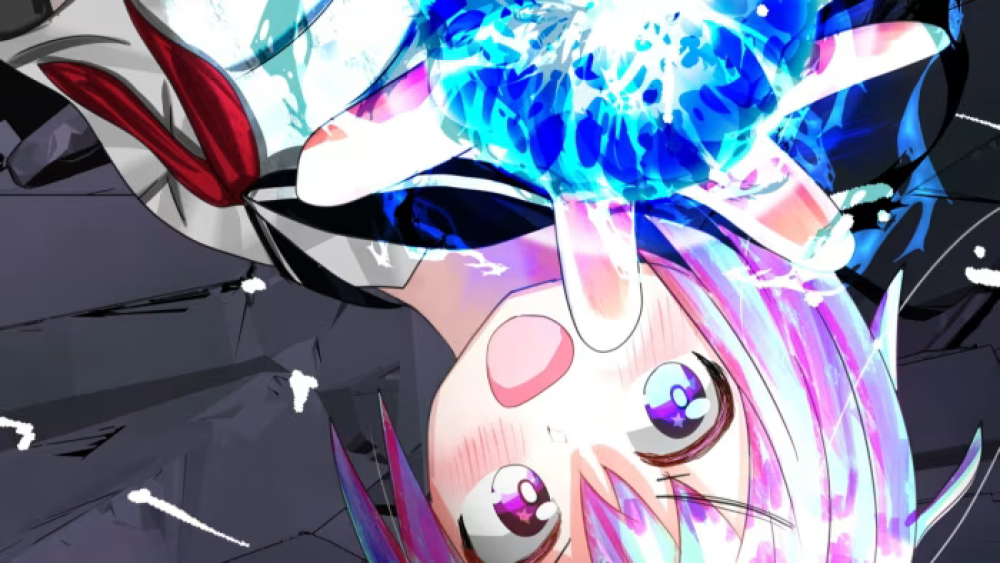
• Nhật Bản đang trở thành điểm đến hấp dẫn của các công ty AI toàn cầu nhờ luật bản quyền cho phép sử dụng rộng rãi tài liệu có bản quyền để huấn luyện mô hình AI mà không cần xin phép.
• Nhiều lãnh đạo công nghệ như Mark Zuckerberg (Meta) và Sam Altman (OpenAI) đã đến Tokyo gặp Thủ tướng Kishida. OpenAI sau đó chọn Tokyo làm văn phòng đầu tiên ở châu Á.
• Tuy nhiên, cách tiếp cận cởi mở của Nhật Bản với AI đang gây tranh cãi khi các nước khác như Mỹ, EU và Trung Quốc đang phát triển quy định chặt chẽ hơn về cách các công ty công nghệ huấn luyện mô hình AI.
• Hàng chục nghìn họa sĩ minh họa, nghệ sĩ và nhạc sĩ đã lên tiếng phản đối việc thiếu bảo vệ cho chủ sở hữu bản quyền. Họ lo ngại văn hóa sáng tạo sẽ bị mất đi.
• Cơ quan Văn hóa đã ban hành hướng dẫn mới vào tháng 3 nêu rõ các trường hợp công ty AI có thể bị coi là vi phạm bản quyền, nhưng chưa đề xuất sửa đổi luật.
• Hiệp hội Quyền tác giả, Nhạc sĩ và Nhà xuất bản Nhật Bản cho rằng Luật Bản quyền hiện hành không bảo vệ người sáng tạo mà tập trung hạn chế quyền của họ.
• Ngoài quy định bản quyền, Nhật Bản còn hấp dẫn các công ty AI vì cơ hội trong doanh nghiệp tư nhân và cơ quan công, sự hỗ trợ từ chính phủ và khả năng nổi bật so với thị trường Mỹ đông đúc.
• Chính phủ Kishida đang sử dụng trợ cấp như cung cấp năng lực tính toán do chính phủ tài trợ để thu hút các startup công nghệ.
• Tuy nhiên, việc thu hút các công ty AI vào Nhật Bản đã gây lo ngại. Một số người hy vọng Nhật Bản sẽ có hệ thống pháp lý để bảo vệ ngành công nghiệp sáng tạo và chủ sở hữu bản quyền.
• Họ cho rằng có thể bảo vệ tốt hơn thông qua việc diễn giải chặt chẽ hơn một số điều khoản, như quy định việc khai thác tác phẩm để phát triển AI là không được phép nếu "gây tổn hại bất hợp lý đến lợi ích của chủ sở hữu bản quyền".
📌 Nhật Bản đang đối mặt với thách thức cân bằng giữa thu hút đầu tư AI và bảo vệ ngành công nghiệp sáng tạo. Luật bản quyền lỏng lẻo thu hút các công ty như OpenAI, nhưng gây lo ngại cho hơn 10.000 nghệ sĩ. Chính phủ cần cân nhắc sửa đổi luật để bảo vệ tác giả trong kỷ nguyên AI.
https://www.ft.com/content/f9e7f628-4048-457e-b064-68e0eeea1e39
#FT
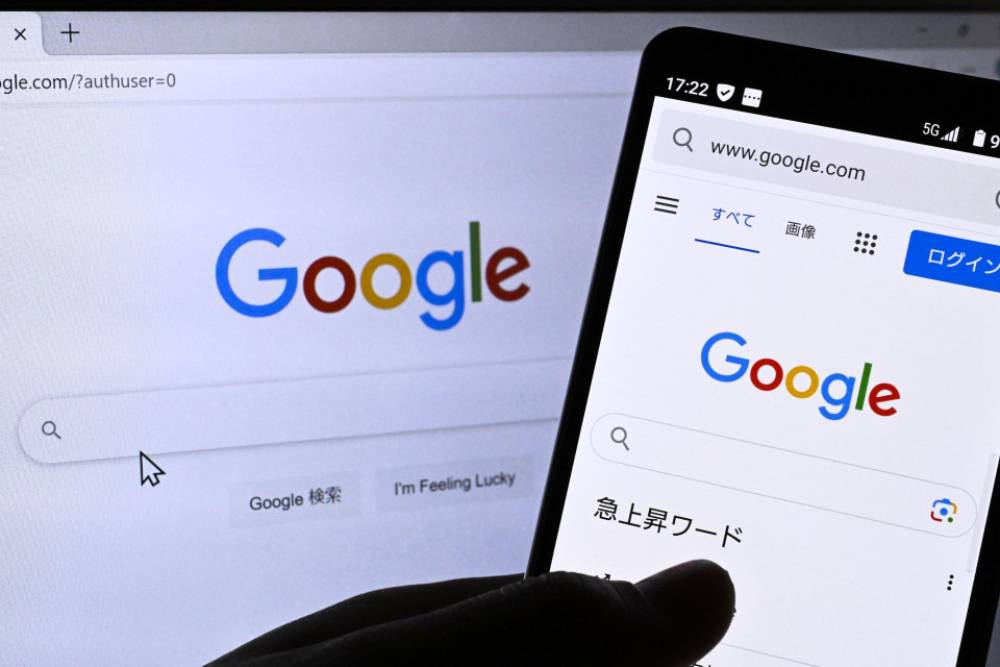
• Hiệp hội Nhà xuất bản và Biên tập Báo chí Nhật Bản tuyên bố các công cụ tìm kiếm AI của Google và Microsoft có khả năng vi phạm bản quyền.
• Hiệp hội kêu gọi các công ty này phải xin phép các tổ chức tin tức trước khi sử dụng nội dung, vì kết quả tìm kiếm thường giống với các bài báo gốc.
• Phân tích cho thấy công cụ tìm kiếm AI đôi khi đưa ra phản hồi không chính xác do tái sử dụng hoặc sửa đổi các bài báo không phù hợp.
• Hiệp hội yêu cầu chính phủ Nhật Bản xem xét và sửa đổi gấp các luật liên quan đến sở hữu trí tuệ, đặc biệt là luật bản quyền.
• Công cụ tìm kiếm AI kết hợp khả năng tìm kiếm truyền thống với AI tạo sinh, lấy thông tin từ nhiều trang web để hiển thị câu trả lời tóm tắt.
• Hiệp hội cho rằng công cụ tìm kiếm AI khác hẳn công cụ tìm kiếm truyền thống vì tiết lộ nội dung thay vì chỉ dẫn người dùng đến các trang web.
• Trong nhiều trường hợp, nội dung chính của bài báo gốc được in lại hoàn toàn, cấu thành hành vi vi phạm bản quyền.
• Vấn đề "tìm kiếm zero-click" được nêu ra, khi người dùng không truy cập trang nguồn, có thể dẫn đến giảm lưu lượng truy cập và ảnh hưởng tiêu cực đến hoạt động báo cáo của các tổ chức tin tức.
• Hiệp hội cảnh báo điều này có thể tác động xấu đến nền dân chủ và văn hóa.
• Các phản hồi không chính xác từ công cụ tìm kiếm AI có thể tạo ấn tượng rằng các bài báo nguồn có sai sót, làm tổn hại uy tín của các tổ chức tin tức.
• Việc cung cấp dịch vụ tìm kiếm AI mà không xin phép sử dụng các bài báo nguồn có thể vi phạm luật chống độc quyền.
• Ủy ban Thương mại Công bằng Nhật Bản đã cảnh báo rằng các công ty vận hành công cụ tìm kiếm có thể nắm vị thế thống trị đối với các công ty truyền thông.
• Google tuyên bố các dịch vụ tìm kiếm AI của họ tuân thủ luật pháp, bao gồm cả luật bản quyền của Nhật Bản.
📌 Hiệp hội Báo chí Nhật Bản cảnh báo công cụ tìm kiếm AI của Google và Microsoft vi phạm bản quyền, yêu cầu xin phép sử dụng nội dung. Họ kêu gọi chính phủ sửa đổi luật sở hữu trí tuệ gấp và cảnh báo về tác động tiêu cực đến báo chí, dân chủ nếu vấn đề không được giải quyết.
https://english.kyodonews.net/news/2024/07/63195d98e74e-japanese-media-say-ai-search-infringes-copyright-urge-legal-reform.html

• Một nhóm thượng nghị sĩ lưỡng đảng đã đề xuất dự luật COPIED (Content Origin Protection and Integrity from Edited and Deepfaked Media Act) nhằm bảo vệ nội dung gốc khỏi việc sử dụng không công bằng bởi các công ty AI.
• Mục đích chính của dự luật là chống lại sự gia tăng của deepfake có hại, đặc biệt sau khi các deepfake về Biden đã ảnh hưởng đến nỗ lực tranh cử gần đây.
• Dự luật yêu cầu các nhà sản xuất công cụ AI tạo sinh phải cho phép chủ sở hữu nội dung gốc đánh dấu thông tin nguồn gốc không thể xóa bỏ.
• Việc cấm xóa bỏ thủy vân nguồn gốc là quan trọng vì hiện tại không có luật nào cấm việc này.
• Ủy ban Thương mại Liên bang, tổng chưởng lý tiểu bang và chủ sở hữu nội dung có quyền kiện ra tòa nếu quy định bị vi phạm.
• Dự luật cấm "sử dụng trái phép" nội dung đã được đánh dấu nguồn gốc để "huấn luyện mô hình AI hoặc tạo ra nội dung AI".
• Viện Tiêu chuẩn và Công nghệ Quốc gia sẽ thiết lập tiêu chuẩn cho thông tin nguồn gốc nhằm xác định nội dung được tạo hoặc thao túng bởi AI.
• Dự luật được ủng hộ bởi nhiều tổ chức như công đoàn SAG-AFTRA, Hiệp hội Công nghiệp Ghi âm Hoa Kỳ và Hiệp hội Báo chí Quốc gia.
• Nó phản ánh mối quan ngại của ngành về sự trỗi dậy của AI tạo sinh và mối đe dọa đối với diễn viên, nhạc sĩ, nhà xuất bản.
• Dự luật có thể gây tranh cãi về khía cạnh kỹ thuật để thực thi và xung đột với học thuyết "sử dụng hợp lý" hiện có.
• Các công ty AI lớn có thể phản đối một số điều khoản, đặc biệt là Microsoft, công ty có quan hệ chặt chẽ với OpenAI.
• Mustafa Suleyman, giám đốc AI mới của Microsoft, gần đây gây tranh cãi khi cho rằng bất cứ thứ gì được công bố trên web đều có thể được sử dụng làm tài liệu huấn luyện AI.
📌 Dự luật COPIED đề xuất bảo vệ nội dung gốc khỏi AI bằng cách yêu cầu đánh dấu nguồn gốc và cấm sử dụng trái phép. Nó nhắm đến việc chống lại deepfake và bảo vệ quyền sở hữu trí tuệ, nhưng có thể gặp phải sự phản đối từ các công ty AI lớn.
https://www.inc.com/kit-eaton/new-act-aims-to-protect-creatives-content-from-unwanted-copying-by-ai-companies.html

• Một thẩm phán California đã bác bỏ hầu hết các cáo buộc trong vụ kiện bản quyền chống lại GitHub, Microsoft và OpenAI liên quan đến công cụ hỗ trợ lập trình GitHub Copilot.
• Vụ kiện ban đầu được một nhóm lập trình viên đệ trình vào năm 2022, với 22 cáo buộc cáo buộc các công ty vi phạm luật bản quyền khi cho phép GitHub Copilot sử dụng mã của họ để huấn luyện.
• Thẩm phán Jon Tigar đã bác bỏ hầu hết các cáo buộc, chỉ còn lại hai yêu cầu: một liên quan đến vi phạm giấy phép mã nguồn mở và một liên quan đến vi phạm hợp đồng.
• Phán quyết mới nhất của Thẩm phán Tigar đã bác bỏ cáo buộc GitHub Copilot vi phạm Đạo luật Bản quyền Kỹ thuật số Thiên niên kỷ (DMCA) bằng cách đề xuất mã mà không có ghi nhận nguồn phù hợp.
• Tòa án trước đó đã phán quyết rằng mã được đề xuất bởi Copilot không đủ gần với nguồn gốc ban đầu để cấu thành vi phạm bản quyền.
• Phiên bản sửa đổi của đơn kiện đã đề cập đến bộ lọc phát hiện trùng lặp của GitHub, cho phép người dùng "phát hiện và ngăn chặn" các đề xuất của Copilot trùng khớp với mã công khai trên GitHub.
• Đơn kiện sửa đổi lập luận rằng GitHub cho phép người dùng "nhận mã giống hệt" khi tắt bộ lọc và trích dẫn một nghiên cứu cho thấy các mô hình AI có thể "ghi nhớ" và tái tạo các phần của dữ liệu huấn luyện.
• Thẩm phán Tigar đã bác bỏ lập luận này, xác định rằng mã mà GitHub bị cáo buộc sao chép không đủ giống với tác phẩm gốc của các lập trình viên.
• Thẩm phán cũng đề cập đến một phần của nghiên cứu được trích dẫn, nói rằng GitHub Copilot "hiếm khi phát ra mã được ghi nhớ trong các tình huống lành tính".
• Tòa án đã bác bỏ cáo buộc này mà không cho phép sửa đổi, có nghĩa là các lập trình viên không thể nộp lại yêu cầu này.
• Tòa án cũng bác bỏ yêu cầu bồi thường trừng phạt và bồi thường tiền tệ dưới hình thức làm giàu bất chính.
• Vụ kiện vẫn chưa kết thúc, với hai yêu cầu còn lại liên quan đến vi phạm hợp đồng và vi phạm giấy phép mã nguồn mở.
📌 Tòa án California bác bỏ 20/22 cáo buộc trong vụ kiện GitHub Copilot. Chỉ còn lại cáo buộc vi phạm giấy phép mã nguồn mở và vi phạm hợp đồng. Phán quyết này là một đòn giáng mạnh vào nỗ lực của các lập trình viên trong việc bảo vệ bản quyền mã nguồn trước công nghệ AI tạo sinh.
https://www.theverge.com/2024/7/9/24195233/github-ai-copyright-coding-lawsuit-microsoft-openai
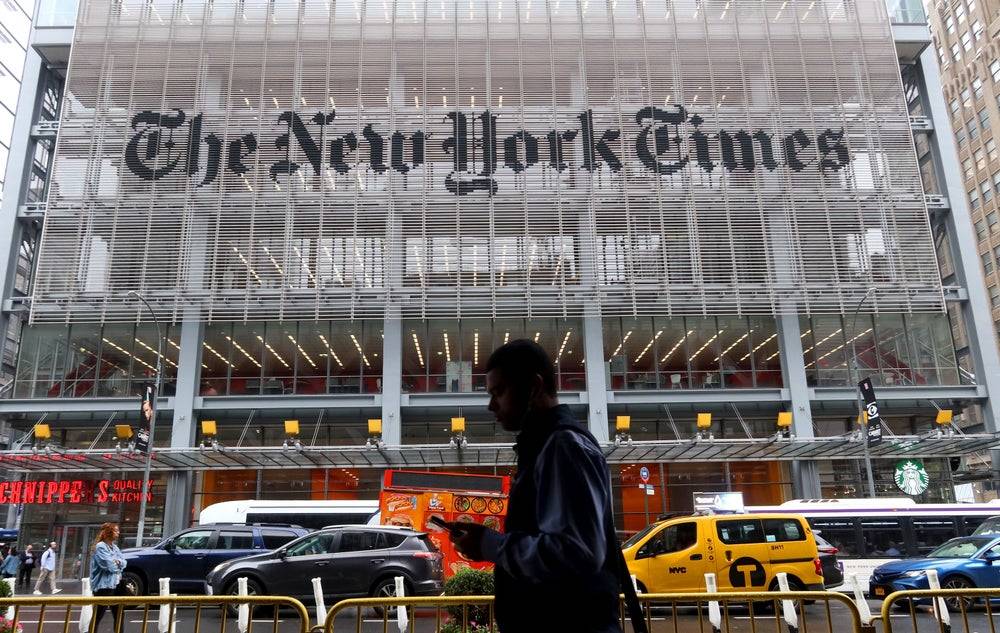
• New York Times đã kiện OpenAI vào tháng 12/2023 về hành vi vi phạm bản quyền, cáo buộc công ty AI này đã sử dụng hàng triệu bài báo của họ để huấn luyện ChatGPT.
• Mới đây, OpenAI đã yêu cầu New York Times cung cấp bằng chứng cho thấy các bài báo của họ thực sự là nguyên bản. Cụ thể, OpenAI muốn NYT đưa ra các tài liệu chứng minh phần nào trong hàng triệu bài báo liên quan đến vụ kiện "là nguyên bản của Times và phần nào không phải".
• OpenAI đã đệ đơn yêu cầu này lên tòa án quận New York vào thứ Hai. Họ yêu cầu NYT cung cấp các bản ghi nhớ phỏng vấn, ghi chú của phóng viên, hồ sơ các tập tin và các tài liệu khác được trích dẫn trong các bài báo của NYT.
• OpenAI khẳng định họ không tìm kiếm danh tính của các nguồn tin của tờ báo. Tuy nhiên, NYT đặt câu hỏi làm thế nào có thể tách biệt thông tin do nguồn tin cung cấp với chính bản thân nguồn tin.
• NYT đã nộp đơn phản đối vào thứ Tư, cho rằng yêu cầu của OpenAI "không có mục đích nào khác ngoài quấy rối và trả đũa quyết định của Times trong việc đệ đơn kiện này".
• Theo NYT, yêu cầu cung cấp tất cả ghi chú, bản ghi nhớ và tài liệu trích dẫn là chưa từng có tiền lệ và quá rộng. Họ cho rằng OpenAI không có quyền yêu cầu khám phá không giới hạn các tập tin của phóng viên trong gần 100 năm qua.
• NYT tuyên bố họ là công ty truyền thông lớn đầu tiên ở Mỹ kiện OpenAI về vi phạm bản quyền. Điều này có nghĩa vụ kiện này có thể tạo tiền lệ cho các vụ kiện tương tự trong tương lai.
• Vụ việc này nổi lên trong bối cảnh ChatGPT đang có khoảng 180 triệu người dùng hoạt động hàng tháng trên toàn cầu.
• Trước đó, NYT đã từng phát hiện các vấn đề liên quan trực tiếp đến OpenAI với sự giúp đỡ của các nguồn tin, như cuộc điều tra hồi tháng 4 tiết lộ rằng OpenAI có thể đã huấn luyện các mô hình AI trên các bản ghi âm video YouTube.
📌 Vụ kiện bản quyền giữa New York Times và OpenAI có thể tạo tiền lệ quan trọng cho mối quan hệ giữa báo chí và AI tạo sinh. Yêu cầu chứng minh tính nguyên bản của 100 năm tài liệu báo chí bị coi là quấy rối và trả đũa, trong khi ChatGPT đã có 180 triệu người dùng toàn cầu.
https://www.entrepreneur.com/business-news/chatgpt-maker-openai-asks-for-proof-that-nytimes-is-original/476691

• Ngành công nghiệp game đang đối mặt với tình trạng cắt giảm nhân sự và lo ngại về nghệ thuật do AI tạo ra. Trong bối cảnh đó, Nintendo nổi bật vì không sử dụng AI tạo sinh.
• Chủ tịch Nintendo Shuntaro Furukawa thừa nhận có vấn đề về quyền sở hữu trí tuệ với AI tạo sinh và đề cao sự sáng tạo độc đáo của con người hơn là công nghệ.
• Nintendo tập trung vào việc tạo ra giá trị độc đáo không thể đạt được chỉ bằng công nghệ, thông qua sự sáng tạo và đam mê của nhân viên.
• Nhiều công ty game lớn khác như Naughty Dog, Blizzard, Ubisoft và Square Enix đang áp dụng AI tạo sinh trong phát triển game.
• Tác giả chỉ trích việc sử dụng AI tạo sinh, cho rằng nó gây hại cho môi trường và đe dọa công việc của những người lao động có kỹ năng.
• Nintendo được đánh giá là tôn trọng nghệ thuật và sự sáng tạo của nhân viên, điều tạo nên sự kỳ diệu trong các trò chơi của họ.
• Tác giả kêu gọi các công ty game khác noi gương Nintendo, từ bỏ xu hướng sử dụng AI rẻ tiền để thay thế sự sáng tạo tự nhiên của con người.
• Mục tiêu là xây dựng một ngành công nghiệp game có đạo đức về môi trường và nghệ thuật, nơi tài năng cá nhân được nuôi dưỡng và tôn vinh.
• Nintendo được coi là hình mẫu về cách tiếp cận đúng đắn với AI trong phát triển game, tôn trọng quyền sở hữu trí tuệ và giá trị sáng tạo của nhân viên.
• Tác giả hy vọng sẽ có nhiều công ty như Nintendo hơn trong tương lai của ngành công nghiệp game.
📌 Nintendo nổi bật với cách tiếp cận AI tạo sinh đúng đắn, tôn trọng quyền sở hữu trí tuệ và sáng tạo của nhân viên. Chủ tịch Furukawa nhấn mạnh tạo ra giá trị độc đáo không thể đạt được chỉ bằng công nghệ. Cách làm này được kỳ vọng sẽ là hình mẫu cho ngành công nghiệp game phát triển bền vững và có đạo đức hơn.
https://www.thegamer.com/nintendo-generative-ai-correct/

• Amazon đang xem xét cáo buộc startup AI Perplexity thu thập nội dung trái phép từ các trang web, bao gồm cả các trang tin tức lớn.
• Người phát ngôn của Amazon, Samantha Mayowa, xác nhận họ đang đánh giá thông tin nhận được từ WIRED, tạp chí đã công bố một cuộc điều tra cho thấy Perplexity dường như thu thập nội dung từ các trang web đã cấm hành vi này.
• Perplexity sử dụng máy chủ của Amazon Web Services (AWS). Điều khoản dịch vụ của Amazon cấm các hoạt động lạm dụng và bất hợp pháp.
• Sara Platnick, người phát ngôn của Perplexity, khẳng định công ty đã xác định rằng các dịch vụ do Perplexity kiểm soát không thu thập dữ liệu từ các trang web theo cách vi phạm điều khoản dịch vụ của AWS.
• Perplexity là một startup AI tìm kiếm có trụ sở tại San Francisco, được các nhà đầu tư công nghệ nổi tiếng ủng hộ, trong đó có Jeff Bezos - người sáng lập Amazon.
• Gần đây, Perplexity đã vướng vào rắc rối với cáo buộc đạo văn. Họ đã đăng một bài tóm tắt tin tức có thông tin và cách diễn đạt tương tự một bài điều tra của Forbes mà không trích dẫn nguồn hoặc xin phép.
• Forbes sau đó phát hiện thêm các bài viết "sao chép" tương tự từ các ấn phẩm khác. Associated Press cũng tìm thấy một sản phẩm khác của Perplexity tạo ra các trích dẫn giả mạo từ những người thật.
• CEO Aravind Srinivas của Perplexity đã bảo vệ công ty, nói rằng họ "không bao giờ sao chép nội dung từ bất kỳ ai" và "động cơ của chúng tôi không được đào tạo trên nội dung của bất kỳ ai khác".
• Srinivas thừa nhận Forbes đã chỉ ra chính xác rằng họ muốn nhấn mạnh nguồn rõ ràng hơn. Ông nói rằng các nguồn hiện đã được làm nổi bật hơn.
• Vụ việc này làm dấy lên lo ngại về việc các công ty AI sử dụng nội dung trực tuyến mà không được phép, đặc biệt là từ các trang tin tức uy tín.
📌 Amazon đang điều tra cáo buộc Perplexity AI thu thập nội dung trái phép từ các trang web. Startup này phủ nhận vi phạm, nhưng đã vướng vào rắc rối về đạo văn gần đây. Vụ việc làm dấy lên lo ngại về việc sử dụng nội dung trực tuyến của các công ty AI.
https://indianexpress.com/article/technology/artificial-intelligence/amazon-is-reviewing-whether-perplexity-ai-improperly-scraped-online-content-9422061/

• Mustafa Suleyman, CEO bộ phận AI của Microsoft, tuyên bố mọi thứ đăng tải trên Internet đều trở thành "freeware" và có thể được sao chép, sử dụng để huấn luyện mô hình AI.
• Ông cho rằng nội dung trên web mở từ những năm 90 đã được coi là sử dụng hợp lý, ai cũng có thể sao chép và tái sử dụng.
• Suleyman nói rằng trừ khi nhà xuất bản hoặc tổ chức tin tức yêu cầu rõ ràng không được thu thập dữ liệu của họ ngoài mục đích lập chỉ mục, nội dung có thể được sử dụng tự do để huấn luyện AI.
• Quan điểm này gợi ý rằng Microsoft và các công ty AI khác như Perplexity, Google, OpenAI cho rằng việc sử dụng nội dung có sẵn trên web để huấn luyện AI mà không phải trả tiền cho người tạo ra là chấp nhận được.
• Hiện nay, một trong những tranh cãi lớn nhất về chatbot AI như ChatGPT, Gemini và Copilot là các công ty AI tạo sinh có thể đang thu thập dữ liệu có bản quyền để huấn luyện mô hình AI mới.
• Trong những tháng gần đây, nhiều tổ chức và ấn phẩm như Forbes, New York Times và Hiệp hội Công nghiệp Ghi âm Hoa Kỳ đã kiện Microsoft, OpenAI, Perplexity, Udio và các công ty khác, cáo buộc họ sử dụng nội dung mà không được phép để huấn luyện mô hình AI.
• Quan điểm của Suleyman đưa ra vào thời điểm nhiều ấn phẩm và tổ chức đang kiện các công ty AI vì vi phạm bản quyền.
• Suleyman là đồng sáng lập Google DeepMind và mới được bổ nhiệm làm CEO bộ phận AI mới của Microsoft.
• Cuộc phỏng vấn được thực hiện bởi Andrew Ross của CNBC.
• Vấn đề sử dụng nội dung trên internet để huấn luyện AI đang gây tranh cãi lớn trong ngành công nghệ và xuất bản.
📌 Giám đốc AI Microsoft Mustafa Suleyman gây tranh cãi khi tuyên bố nội dung internet là miễn phí để huấn luyện AI. Nhiều tổ chức như New York Times đã kiện các công ty AI vì vi phạm bản quyền. Vấn đề sử dụng dữ liệu mở cho AI đang là chủ đề nóng trong ngành công nghệ.
https://indianexpress.com/article/technology/artificial-intelligence/microsoft-ai-head-mustafa-suleyman-internet-content-ai-scraping-training-9422265/
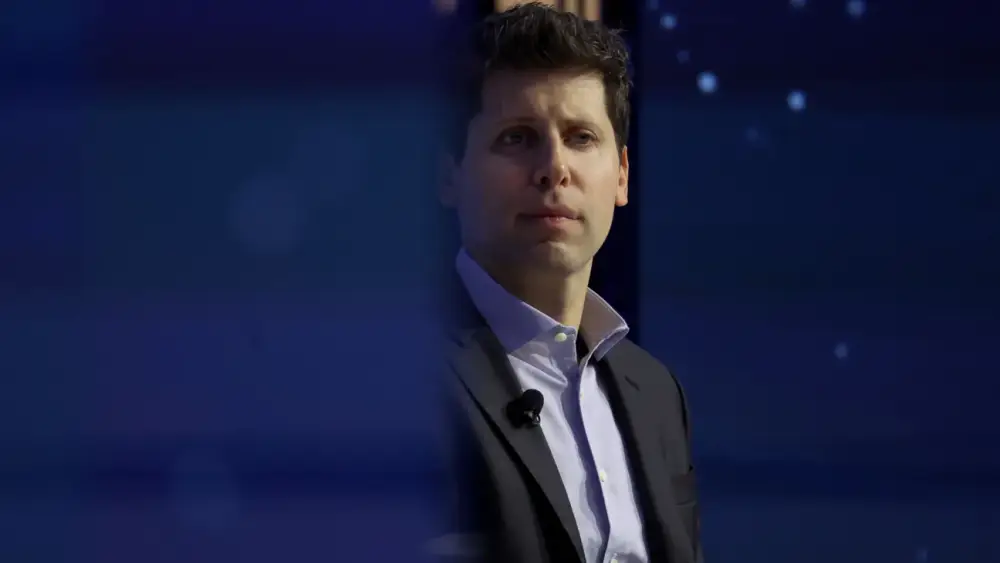
• Trung tâm Báo chí Điều tra (CIR) đã đệ đơn kiện OpenAI và Microsoft tại tòa án quận New York, cáo buộc các công ty này sử dụng nội dung của họ để huấn luyện hệ thống AI mà không có sự đồng ý hay bồi thường.
• Đây là vụ kiện thứ 5 từ một tổ chức truyền thông chống lại OpenAI về vấn đề bản quyền liên quan đến việc huấn luyện AI. Trước đó, The New York Times, Chicago Tribune và Denver Post cũng đã đệ đơn kiện tương tự.
• CIR cáo buộc OpenAI đã sao chép và sử dụng hơn 17.000 địa chỉ trang web từ Mother Jones trong bộ dữ liệu huấn luyện AI của họ.
• Vụ kiện cho rằng người dùng ChatGPT và Microsoft Copilot có thể nhận được các biến thể của nội dung được bảo vệ bản quyền, làm suy giảm thị trường cho các bài báo gốc.
• CIR lập luận rằng hành vi này làm giảm doanh thu từ đăng ký, cấp phép và quảng cáo, đồng thời cho phép các công ty công nghệ kiếm tiền từ nội dung của các nhà xuất bản tin tức.
• Một số tổ chức truyền thông đã chọn ký thỏa thuận cấp phép với OpenAI. Ví dụ, News Corp đã ký thỏa thuận đưa nội dung từ các tờ báo của họ lên ChatGPT.
• CIR tuyên bố họ chưa được đề nghị một thỏa thuận tương tự và cáo buộc OpenAI biết rõ nghĩa vụ phải xin giấy phép để sử dụng nội dung được bảo vệ bản quyền.
• Vụ kiện đòi bồi thường lên đến 150.000 USD cho mỗi tác phẩm bị xâm phạm và yêu cầu tòa án ra lệnh buộc OpenAI và Microsoft xóa các bản sao của nội dung có bản quyền khỏi bộ dữ liệu huấn luyện của họ.
• OpenAI gần đây đã trì hoãn ra mắt tính năng giọng nói cho chatbot của mình để tiến hành thêm kiểm tra an toàn, sau khi Scarlett Johansson đe dọa kiện vì công ty được cho là đã sao chép giọng nói của cô.
• Vụ kiện này mở rộng cuộc chiến pháp lý đa mặt có thể có tác động sâu rộng đến ngành xuất bản tin tức, với khả năng tồn tại tài chính của truyền thông trong bối cảnh độc giả có thể bỏ qua các nguồn trực tiếp để ưu tiên kết quả tìm kiếm do AI tạo ra.
📌 OpenAI đối mặt với làn sóng kiện tụng từ các tổ chức truyền thông, với ít nhất 5 vụ kiện liên quan đến việc sử dụng nội dung bản quyền để huấn luyện AI. Vụ kiện mới nhất từ CIR đòi bồi thường 150.000 USD/tác phẩm, đặt ra thách thức lớn cho tương lai của AI và báo chí.
https://www.hollywoodreporter.com/business/business-news/center-investigative-reporting-openai-legal-battle-1235934000/

• ChatGPT đang tạo ra các URL giả mạo và liên kết hỏng đến các bài báo điều tra lớn của ít nhất 10 đối tác truyền thông có thỏa thuận cấp phép nội dung với OpenAI.
• Các đối tác bị ảnh hưởng bao gồm Associated Press, Wall Street Journal, Financial Times, The Times (UK), Le Monde, El País, The Atlantic, The Verge, Vox và Politico.
• Trong các thử nghiệm, ChatGPT thường xuyên tạo ra các URL không tồn tại khi được yêu cầu cung cấp liên kết đến các bài báo điều tra nổi tiếng, bao gồm cả những bài đoạt giải Pulitzer.
• Ví dụ, ChatGPT đã tạo ra một liên kết giả mạo đến cuộc điều tra của Financial Times về vụ bê bối gian lận Wirecard năm 2019, dẫn đến lỗi 404.
• Tương tự, một URL giả mạo được tạo ra cho bài báo đoạt giải Pulitzer của Wall Street Journal về việc Donald Trump liên quan đến các khoản thanh toán bịt miệng.
• Các thỏa thuận cấp phép giữa các nhà xuất bản và OpenAI thường bao gồm cam kết rằng ChatGPT sẽ cung cấp các liên kết và trích dẫn chính xác đến các bài báo gốc.
• OpenAI tuyên bố rằng họ chưa triển khai các tính năng trích dẫn đã hứa trong các hợp đồng cấp phép và đang phát triển một "trải nghiệm nâng cao" với các đối tác truyền thông.
• Nhiều nhà báo trong các tòa soạn đối tác đã bày tỏ sự hoài nghi về tiềm năng của ChatGPT như một công cụ tìm kiếm.
• The Atlantic Union đã công bố một bức thư ngỏ yêu cầu minh bạch hơn về hợp đồng với OpenAI.
• Các URL giả mạo thường tuân theo định dạng URL tiêu chuẩn của một trang web nhất định, nhưng sai các từ hoặc số cụ thể trong URL đó.
• ChatGPT thường có thể xác định chính xác tên của tổ chức tin tức đã đưa tin về một câu chuyện lớn, nhưng không thể cung cấp liên kết chính xác đến bài báo.
• Vấn đề này có thể ảnh hưởng đến lợi nhuận đầu tư cho các cuộc điều tra tốn kém và quan trọng đối với danh tiếng của các nhà xuất bản kỹ thuật số.
📌 ChatGPT đang tạo ra các URL giả mạo cho ít nhất 10 đối tác truyền thông lớn của OpenAI, bao gồm cả những bài báo điều tra nổi tiếng và đoạt giải thưởng. Điều này gây ra lo ngại về khả năng trích dẫn chính xác và tác động tiềm tàng đến lưu lượng truy cập trang web của các nhà xuất bản. OpenAI tuyên bố đang phát triển giải pháp nhưng chưa triển khai.
https://www.niemanlab.org/2024/06/chatgpt-is-hallucinating-fake-links-to-its-news-partners-biggest-investigations/

• Google đang tăng cường nỗ lực thu hút khách hàng doanh nghiệp bằng cách giảm thiểu ảo giác trong nền tảng AI của mình.
• Công ty đang tập trung vào việc "grounding" mô hình, sử dụng dữ liệu từ các nguồn đáng tin cậy bên thứ ba như Moody's, MSCI, Thomson Reuters và Zoominfo.
• Các dịch vụ này sẽ được tích hợp vào Vertex AI từ quý tới, cung cấp cho các nhà phát triển dữ liệu chất lượng cao để đảm bảo độ chính xác của kết quả đầu ra.
• Nick Reed, Giám đốc sản phẩm của Moody's, giải thích rằng dịch vụ này cho phép khách hàng tận dụng mô hình của Google và dữ liệu của Moody's để xây dựng các ứng dụng và trợ lý AI.
• Google đã cung cấp Google Search như một phần của dịch vụ grounding, nhưng giờ đây có thêm các lựa chọn đáng tin cậy hơn cho các công ty muốn thông tin chính xác.
• Công ty cũng công bố tính năng grounding độ trung thực cao, được thiết kế để giúp hệ thống AI hoạt động tốt hơn với một bộ thông tin cụ thể.
• Tính năng này hữu ích cho các tác vụ như tóm tắt nhiều tài liệu cùng lúc hoặc trích xuất dữ liệu quan trọng từ báo cáo tài chính.
• Grounding độ trung thực cao được hỗ trợ bởi Gemini 1.5 Flash của Google.
• Thomas Kurian, CEO của Google Cloud, nhấn mạnh 3 điểm khác biệt chính của giải pháp AI tạo sinh của Google:
1. Sử dụng uy tín của Google Search để grounding AI với dữ liệu web.
2. Cung cấp các tùy chọn về cách grounding dữ liệu trong các lĩnh vực cụ thể.
3. Grounding độ trung thực cao giúp AI tập trung hơn vào nội dung được yêu cầu.
• Kurian cho rằng 3 yếu tố này kết hợp lại giúp kiểm soát tốt nhất chất lượng câu trả lời của mô hình, giảm ảo giác và tăng độ tin cậy.
• Thông báo này được đưa ra cùng ngày với các tin tức khác của Google Cloud như phát hành công khai Gemini 1.5 Flash, 1.5 Pro, Gemma 2 và các cập nhật khác cho Vertex AI.
📌 Google hợp tác với Thomson Reuters, Moody's và các đối tác lớn để cung cấp dữ liệu thực tế cho AI, tích hợp vào Vertex AI từ quý tới. Công ty tập trung vào "grounding" mô hình và ra mắt tính năng grounding độ trung thực cao, nhằm giảm thiểu ảo tưởng và tăng độ chính xác cho AI tạo sinh.
https://venturebeat.com/ai/google-grounding-ai-with-moodys-msci-thomson-reuters-zoominfo/
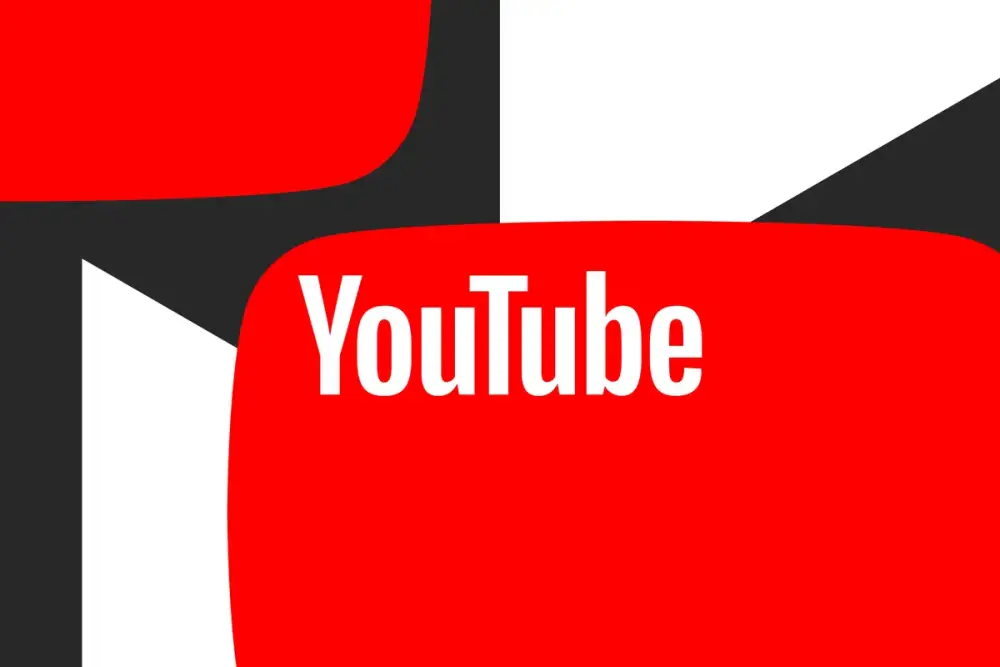
• YouTube đang đề nghị trả tiền cho các hãng thu âm lớn như Universal Music Group, Sony Music và Warner Records để được phép sử dụng bài hát của họ huấn luyện công cụ AI tạo nhạc.
• Mục đích là để phát triển các công cụ AI mới dự kiến ra mắt cuối năm nay, không phải mở rộng tính năng Dream Track hiện tại.
• YouTube muốn có giấy phép từ "hàng chục" nghệ sĩ, nhưng chưa tiết lộ mức phí cụ thể. Có thể là khoản thanh toán một lần thay vì chia sẻ doanh thu.
• Động thái này diễn ra sau khi YouTube ra mắt tính năng AI tạo nhạc theo phong cách của các nghệ sĩ nổi tiếng như Charli XCX, John Legend và T-Pain vào năm ngoái.
• Các hãng thu âm và nghệ sĩ có thể sẽ khó bị thuyết phục. Sony Music đã cảnh báo các công ty AI không được sử dụng nội dung trái phép. UMG từng gỡ toàn bộ danh mục nhạc khỏi TikTok do tranh chấp về nhạc AI.
• Hơn 200 nghệ sĩ như Billie Eilish, Pearl Jam, Katy Perry đã kêu gọi các công ty công nghệ ngừng sử dụng AI xâm phạm quyền của nghệ sĩ.
• Hiệp hội Công nghiệp Ghi âm Mỹ (RIAA) vừa kiện hai công ty AI tạo nhạc hàng đầu là Suno và Udio vì vi phạm bản quyền, đòi bồi thường tới 150.000 USD cho mỗi vi phạm.
• YouTube đang áp dụng cách tiếp cận "xin phép trước" để tránh các vụ kiện tụng như vậy.
• Việc này cho thấy xu hướng các nền tảng lớn muốn hợp pháp hóa việc sử dụng AI trong âm nhạc, thay vì đối đầu với ngành công nghiệp âm nhạc.
• Tuy nhiên, vẫn còn nhiều thách thức về mặt pháp lý và đạo đức cần giải quyết trước khi AI tạo nhạc được chấp nhận rộng rãi.
📌 YouTube đang đi đầu trong việc hợp pháp hóa AI tạo nhạc bằng cách đàm phán trực tiếp với các hãng thu âm lớn. Động thái này có thể mở ra kỷ nguyên mới cho công nghệ AI trong âm nhạc, nhưng vẫn còn nhiều tranh cãi về quyền tác giả và tác động đến nghệ sĩ.
https://www.theverge.com/2024/6/27/24187151/youtube-ai-music-deals-licensing-record-labels-sony-umg-warner
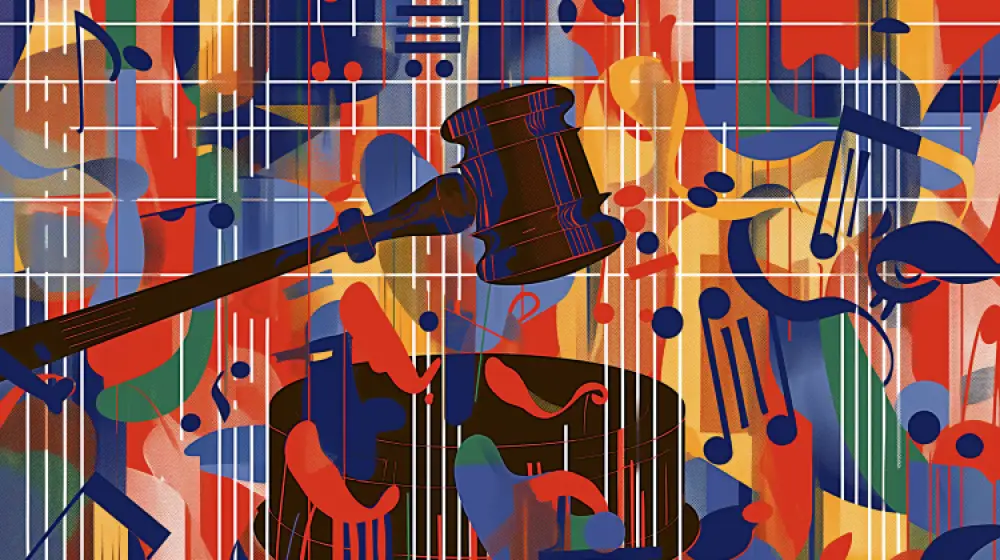
- Các hãng thu âm lớn như Universal Music Group (UMG), Sony Music Entertainment và Warner Music Group đã cùng nhau khởi kiện các công ty tạo nhạc AI Suno và Udio vì cáo buộc vi phạm bản quyền.
- Cả Suno và Udio đều cho phép người dùng viết lời nhắc để tạo ra các đoạn âm thanh. Các vụ kiện cáo buộc cả hai công ty sao chép các bài hát và bản ghi âm mà không được sự cho phép của các hãng thu âm và cuối cùng phân phối các phiên bản tương tự.
- UMG, Sony và Atlantic Records cáo buộc Suno đã huấn luyện các mô hình AI bằng cách tải xuống phiên bản kỹ thuật số của một bài hát và sau đó tạo ra âm nhạc có âm thanh tương tự. Ví dụ, Suno đã tạo ra "29 đầu ra khác nhau chứa phong cách của Johnny B. Goode", một bài hát thuộc sở hữu của UMG.
- Các hãng thu âm cũng cáo buộc Suno tái tạo các đặc điểm của một số nghệ sĩ nhất định, chẳng hạn như ca sĩ Jason Derulo, người có thương hiệu là hát tên của mình ở đầu các bài hát.
- Các cáo buộc tương tự cũng được đưa ra chống lại Udio. Đơn kiện chống lại Udio cũng cáo buộc nền tảng này đã tạo điều kiện cho mọi người dễ dàng phân phối các mẫu nhạc tương tự như các bản ghi âm có bản quyền trên các nền tảng thương mại như Spotify.
- Udio trở nên phổ biến sau khi nhà sản xuất Metro Boomin sử dụng nó để tạo ra một bản nhạc AI mà anh ấy gọi là "BBL Drizzy", được phân phối miễn phí như một phần của cuộc tranh chấp đang diễn ra với đối thủ Drake (Aubrey Graham).
- Các nền tảng như Suno và Udio đã trở nên phổ biến hơn gần đây khi một số công ty bắt đầu thử nghiệm các ứng dụng tạo nhạc AI tiên tiến. Ví dụ: MusicFX của Google, Audiobox AI của Meta, và ElevenLabs gần đây đã giới thiệu một nền tảng tạo nhạc.
- Sự gia tăng của các nền tảng AI âm nhạc và giọng nói đã thúc đẩy các nhà lập pháp đề xuất luật bảo vệ hình ảnh của nghệ sĩ khỏi bị sao chép.
📌 Các vụ kiện đồng thời chống lại Suno và Udio đánh dấu một làn sóng pháp lý mới nhất của các hãng thu âm lớn nhằm vào các công ty AI. Họ cáo buộc các nền tảng này sao chép và phân phối trái phép các bài hát, ghi âm có bản quyền để huấn luyện mô hình. Sự phổ biến ngày càng tăng của công nghệ tạo nhạc AI đã thúc đẩy các nhà lập pháp đề xuất luật bảo vệ quyền của nghệ sĩ.
https://venturebeat.com/ai/record-labels-sue-ai-music-generator-startups-suno-udio-for-copyright-infringement/

- Perplexity, một công ty khởi nghiệp về công cụ tìm kiếm AI, đang gặp rắc rối sau cuộc điều tra của Wired cho thấy họ đã thu thập nội dung từ các trang web không muốn bị thu thập.
- "Công cụ trả lời" của Perplexity hoạt động bằng cách thu thập thông tin trên web và tạo cơ sở dữ liệu nội dung. Người dùng đặt câu hỏi và nhận câu trả lời dưới dạng văn bản với trích dẫn và liên kết.
- Các trang web có thể sử dụng Robots Exclusion Protocol để ngăn thu thập nội dung. Wired và một nhà nghiên cứu độc lập cho rằng Perplexity đã bỏ qua mã này.
- CEO Aravind Srinivas phủ nhận việc bỏ qua Robots Exclusion Protocol, cho rằng họ dựa vào cả công cụ thu thập của bên thứ ba. Ông từ chối tiết lộ tên nhà cung cấp.
- Srinivas lưu ý rằng Robots Exclusion Protocol không phải là khuôn khổ pháp lý và đề xuất cần có mối quan hệ mới giữa nhà sáng tạo nội dung và các trang web như Perplexity trong kỷ nguyên AI.
- Wired cáo buộc có thể nhận được công cụ của Perplexity diễn giải sai nội dung của họ bằng cách sử dụng tiêu đề hoặc nội dung bài viết làm lời nhắc. Srinivas cho rằng Wired đã sử dụng lời nhắc được thiết kế để công cụ hoạt động theo cách đó.
- Forbes cũng cáo buộc Perplexity đánh cắp nội dung của họ trong sản phẩm "Pages" mới cho phép người dùng tạo bài viết dựa trên câu hỏi hoặc chủ đề cụ thể. Perplexity thậm chí tạo podcast bằng giọng nói AI dựa trên nội dung của Forbes mà không ghi công.
- Srinivas cho biết họ đã cập nhật Pages để đưa trích dẫn vào văn bản bài viết được tạo. Ông nói rằng công ty đang làm việc về thỏa thuận "chia sẻ doanh thu" với một số nhà xuất bản.
- Mặc dù còn e ngại, nhiều người vẫn ủng hộ Perplexity trong nhiệm vụ thách thức Google với loại hình tìm kiếm mới. Tuy nhiên, công ty không thể để mất thêm thiện chí.
📌 Perplexity đang đối mặt với cáo buộc đạo văn và vi phạm bản quyền sau báo cáo cho thấy công ty thu thập trái phép nội dung. CEO Aravind Srinivas phủ nhận cáo buộc, cho rằng họ dựa vào công cụ thu thập của bên thứ ba và Robots Exclusion Protocol không phải khuôn khổ pháp lý. Công ty đang làm việc về thỏa thuận chia sẻ doanh thu với các nhà xuất bản để giải quyết vấn đề.
https://www.fastcompany.com/91144894/perplexity-ai-ceo-aravind-srinivas-on-plagiarism-accusations

- Perplexity AI, công ty khởi nghiệp AI được định giá 1 tỷ USD, đang vướng vào cáo buộc đánh cắp nội dung và trích dẫn nguồn không đúng từ các ấn phẩm uy tín như Forbes và Wired.
- Forbes cáo buộc Perplexity AI sao chép phần lớn bài báo điều tra độc quyền của họ về một startup drone AI do cựu CEO Google Eric Schmidt hậu thuẫn, mà không trích dẫn đầy đủ và thỏa đáng.
- Wired phát hiện ra rằng Perplexity AI đang tóm tắt các bài báo của họ với mức độ ghi công tối thiểu và có thể đang bỏ qua các hạn chế mà nhà xuất bản đặt ra đối với việc quét nội dung của AI.
- Aravind Srinivas, CEO của Perplexity AI, bác bỏ cáo buộc đánh cắp nội dung và tuyên bố công ty chỉ đóng vai trò "người tổng hợp thông tin".
- Forbes đã gửi thư cảnh cáo về khả năng khởi kiện nếu Perplexity AI không thay đổi cách trích dẫn trong các bài viết do AI tạo ra và bồi thường doanh thu quảng cáo bị thiệt hại.
- Wired cũng chỉ ra rằng Perplexity AI dường như đang phớt lờ tiêu chuẩn "robots.txt" được công nhận rộng rãi, vốn cho phép chủ sở hữu website chặn các bot thu thập dữ liệu.
- Một cuộc điều tra độc lập của nhà phát triển Robb Knight và nhà báo công nghệ nổi tiếng của New York Times, Kevin Roose, cũng phát hiện Perplexity AI có xu hướng bóp méo sự thật và bỏ qua dữ liệu quan trọng.
- Những phát hiện này làm nổi bật bản chất đáng ngờ của các chatbot AI thương mại và mối quan hệ phức tạp của chúng với những người sáng tạo nội dung mà chúng được đào tạo từ đó.
- Các chuyên gia nhấn mạnh sự cần thiết phải có quy định chặt chẽ hơn về cách các công ty AI sử dụng nội dung được tạo bởi con người, cũng như nhu cầu minh bạch và giải trình nhiều hơn trong lĩnh vực này.
- Vụ việc của Perplexity AI là một dấu hiệu cho thấy ngành công nghiệp AI đang phát triển nhanh chóng cần phải giải quyết nghiêm túc các vấn đề về đạo đức và trách nhiệm pháp lý trong tương lai gần.
📌 Bê bối giữa Perplexity AI với Forbes và Wired cho thấy sự cần thiết cấp bách phải có các quy tắc và tiêu chuẩn rõ ràng hơn về cách các công ty AI sử dụng nội dung do con người tạo ra. Nó cũng nêu bật những quan ngại sâu sắc về độ tin cậy và tính minh bạch của các chatbot AI thương mại, với bằng chứng cho thấy Perplexity AI đã bỏ qua các quy định, tóm tắt sai lệch thông tin và hiếm khi ghi nhận đóng góp của các nhà báo và tác giả. Khi ngành công nghiệp AI tiếp tục phát triển với tốc độ chóng mặt, việc giải quyết thỏa đáng những thách thức này sẽ là điều kiện tiên quyết để đảm bảo một hệ sinh thái trực tuyến lành mạnh, công bằng và đáng tin cậy cho tất cả mọi người.
https://www.cnet.com/tech/services-and-software/perplexity-ai-results-include-plagiarism-and-made-up-content-reports-say/
https://www.businessinsider.com/perplexity-ai-forbes-wired-explained-2024-6
https://futurism.com/something-deeply-wrong-perplexity
https://www.platformer.news/how-to-stop-perplexity-oreilly-ai-publishing/
https://gizmodo.com/perplexity-ai-internet-rule-robots-exclusion-protocol-1851551095

- Cara, nền tảng mạng xã hội dành cho nghệ sĩ, đã tăng từ 40.000 lên 650.000 người dùng trong tuần qua.
- Cara có timeline giống Instagram và phần portfolio để nghệ sĩ trưng bày tác phẩm, đồng thời cho biết họ sẵn sàng nhận việc mới.
- Sự gia tăng người dùng có thể do Meta thông báo sẽ dùng bài đăng công khai trên Facebook và hình ảnh, chú thích trên Instagram để huấn luyện AI từ 26/6. Người dùng Anh và EU có thể chọn không tham gia nhưng người Mỹ không có lựa chọn này.
- Cara cấm đăng tải nghệ thuật do AI tạo ra trong portfolio và có hệ thống phát hiện AI chặn những hình ảnh này. Họ cũng thêm thẻ NoAI vào mọi hình ảnh để báo hiệu cho trình thu thập dữ liệu AI không lấy hình từ nền tảng.
- Cara cho phép nghệ sĩ thêm các pixel chống AI như Glaze vào hình ảnh tải lên. Pixel phổ biến khác là Nightshade cũng sẽ được tích hợp khi có sẵn.
- Người sáng lập Cara, nhiếp ảnh gia Jingna Zhang, từng thắng kiện một họa sĩ dùng ảnh cô chụp cho Harper's Bazaar làm cơ sở vẽ tranh. Cô cũng kiện Google vì dùng tác phẩm của mình huấn luyện AI Imagen.
- Zhang hy vọng Cara cho nghệ sĩ tự do chia sẻ nghệ thuật mà không sợ bị lạm dụng. Cô sẵn sàng cho phép AI trên nền tảng nếu luật bảo vệ nghệ sĩ được thông qua.
📌 Cara đã trở thành thiên đường an toàn cho các nghệ sĩ giữa làn sóng các nền tảng lớn như Meta sử dụng dữ liệu công khai để huấn luyện AI. Với lập trường cứng rắn chống AI và các tính năng bảo vệ quyền tác giả, Cara đã thu hút 650.000 người dùng chỉ trong một tuần, tăng gấp 16 lần so với trước đó.
https://mymodernmet.com/cara-artist-social-media-platform/

- Meta đã phát triển một hệ thống có thể nhúng các tín hiệu ẩn, gọi là thủy vân, vào các đoạn âm thanh do AI tạo ra, giúp phát hiện nội dung AI trực tuyến.
- Công cụ này, AudioSeal, là công cụ đầu tiên có thể xác định chính xác các phần âm thanh nào trong một đoạn dài, ví dụ như một podcast dài một giờ, có thể do AI tạo ra.
- AudioSeal có thể giúp giải quyết vấn đề ngày càng gia tăng của việc sử dụng công cụ sao chép giọng nói để lừa đảo và phát tán thông tin sai lệch.
- Các diễn viên xấu đã sử dụng AI tạo sinh để tạo ra các đoạn âm thanh giả mạo của Tổng thống Joe Biden và các kẻ lừa đảo đã sử dụng các đoạn âm thanh giả mạo để tống tiền nạn nhân.
- Thủy vân có thể giúp các công ty truyền thông xã hội phát hiện và loại bỏ nội dung không mong muốn.
- Tuy nhiên, Meta chưa có kế hoạch áp dụng thủy vân cho các đoạn âm thanh do AI tạo ra bằng các công cụ của họ.
- Thủy vân âm thanh chưa được áp dụng rộng rãi và chưa có tiêu chuẩn công nghiệp chung cho chúng.
- Thủy vân cho nội dung AI thường dễ bị giả mạo hoặc loại bỏ.
- Đội ngũ của Meta đã đạt được độ chính xác từ 90% đến 100% trong việc phát hiện thủy vân, kết quả tốt hơn nhiều so với các nỗ lực trước đây.
- AudioSeal có sẵn trên GitHub miễn phí, bất kỳ ai cũng có thể tải xuống và sử dụng để thêm thủy vân vào các đoạn âm thanh do AI tạo ra.
- AudioSeal được tạo ra bằng cách sử dụng hai mạng neural. Một mạng tạo ra các tín hiệu thủy vân có thể nhúng vào các đoạn âm thanh, và mạng kia có thể phát hiện nhanh chóng các tín hiệu này.
- AudioSeal nhúng thủy vân vào từng phần của toàn bộ đoạn âm thanh, cho phép thủy vân được "định vị" và vẫn có thể phát hiện ngay cả khi âm thanh bị cắt hoặc chỉnh sửa.
- Ben Zhao, giáo sư khoa học máy tính tại Đại học Chicago, cho biết khả năng này và độ chính xác phát hiện gần như hoàn hảo khiến AudioSeal tốt hơn bất kỳ hệ thống thủy vân âm thanh nào trước đây.
- Claire Leibowicz, trưởng bộ phận AI và tính toàn vẹn truyền thông tại tổ chức phi lợi nhuận Partnership on AI, cho rằng việc cải thiện thủy vân, đặc biệt là trong các phương tiện như giọng nói, là rất ý nghĩa.
- Tuy nhiên, có những hạn chế cơ bản cần khắc phục trước khi các loại thủy vân âm thanh này có thể được áp dụng rộng rãi.
- Hệ thống yêu cầu người dùng tự nguyện thêm thủy vân vào các tệp âm thanh của họ.
- Nếu kẻ tấn công có quyền truy cập vào bộ phát hiện thủy vân, hệ thống sẽ trở nên dễ bị tổn thương.
- Claire Leibowicz vẫn hoài nghi rằng thủy vân sẽ thực sự tăng cường niềm tin của công chúng vào thông tin họ đang thấy hoặc nghe, vì chúng dễ bị lạm dụng.
📌 AudioSeal của Meta là một bước tiến quan trọng trong việc phát hiện nội dung âm thanh do AI tạo ra, với độ chính xác từ 90% đến 100%. Tuy nhiên, việc áp dụng rộng rãi vẫn gặp nhiều thách thức do dễ bị giả mạo và yêu cầu người dùng tự nguyện thêm thủy vân.
https://www.technologyreview.com/2024/06/18/1094009/meta-has-created-a-way-to-watermark-ai-generated-speech/
#MIT

- Các nhà nghiên cứu từ Google DeepMind đã yêu cầu 20 diễn viên hài chuyên nghiệp sử dụng các mô hình ngôn ngữ AI phổ biến để viết truyện cười và biểu diễn hài kịch. Kết quả cho thấy AI hữu ích trong việc giúp họ tạo ra bản nháp ban đầu và cấu trúc chương trình, nhưng không thể tạo ra nội dung độc đáo, kích thích hoặc hài hước.
- Sự hài hước thường dựa vào sự bất ngờ và không phù hợp. Viết sáng tạo đòi hỏi người sáng tạo phải đi chệch khỏi chuẩn mực, trong khi LLM chỉ có thể bắt chước nó.
- Các nghệ sĩ đang tiếp cận AI như một công cụ hỗ trợ sáng tạo của con người, chứ không thể thay thế hoàn toàn.
- Hiện tại, chúng ta đang quyết định mức độ quyền lực sáng tạo mà chúng ta thoải mái giao cho các công ty và công cụ AI. Nhiều nghệ sĩ đã nêu lên mối quan ngại rằng các công ty AI đang thu thập tác phẩm có bản quyền của họ mà không có sự đồng ý hoặc bồi thường. Các vụ kiện đang diễn ra và có thể mất nhiều năm để có câu trả lời rõ ràng.
- Dư luận đã thay đổi nhiều trong 2 năm qua. Công chúng hiện nhận thức rõ hơn về tác hại liên quan đến AI. Các nỗ lực từ cơ sở nhằm thay đổi cấu trúc quyền lực của AI và trao quyền nhiều hơn cho nghệ sĩ đối với dữ liệu của họ.
- Các mô hình AI bị giới hạn bởi dữ liệu huấn luyện và sẽ mãi mãi chỉ phản ánh tinh thần thời đại tại thời điểm huấn luyện. Điều đó sẽ nhanh chóng lỗi thời.
📌 Khi mọi người thử nghiệm và tìm hiểu về AI, họ đang hiểu rõ hơn về những hạn chế của nó trong lĩnh vực sáng tạo. AI có thể hỗ trợ một số khía cạnh tẻ nhạt và công thức của quá trình sáng tạo, nhưng không thể thay thế sự độc đáo và phép màu mà con người mang lại. Các mô hình AI bị giới hạn bởi dữ liệu huấn luyện 2 năm trước và sẽ nhanh chóng lỗi thời.
https://www.technologyreview.com/2024/06/18/1093998/why-artists-becoming-less-scared-of-ai/
#MIT

- Các công ty công nghệ lớn như OpenAI và Google đang sử dụng một lượng lớn video YouTube làm dữ liệu huấn luyện bổ sung cho các mô hình AI của họ, bất chấp điều khoản dịch vụ và luật bản quyền. Điều này đặt ra câu hỏi ai sẽ được hưởng lợi từ AI.
- Nội dung có bản quyền, đặc biệt là nội dung chất lượng cao được viết và biên tập cẩn thận bởi các chuyên gia, rất có giá trị đối với các nhà phát triển AI. Tuy nhiên, việc sử dụng nội dung này mà không bồi thường có thể làm cạn kiệt nguồn cung cấp trong tương lai.
- Cần phải phân biệt giữa nội dung được chia sẻ tự do và nội dung được thương mại hóa. Các công ty AI nên tôn trọng tín hiệu như paywall, tệp robots.txt, từ khóa "noindex" và các phương tiện khác mà chủ sở hữu bản quyền sử dụng để thể hiện ý định của họ.
- Các kỹ thuật như tạo sinh được tăng cường bởi truy xuất dữ liệu ngoài (RAG) có thể được sử dụng để xác định nội dung liên quan nhất đến truy vấn của người dùng và cung cấp liên kết đến các nguồn gốc. Điều này cho phép trả tiền cho đầu ra thay vì đào tạo.
- Một giao thức mở cho phép chủ sở hữu nội dung mở kho lưu trữ của họ cho các nhà cung cấp dịch vụ Tìm kiếm AI nhưng vẫn kiểm soát và giám sát pháp y cách xử lý và tiền bạc hóa nội dung có thể là một giải pháp. Điều này tương tự như cách hệ thống Content ID của YouTube hoạt động.
- Mục tiêu cuối cùng là tạo ra các động lực đôi bên cùng có lợi thúc đẩy sự phát triển của một hệ sinh thái nội dung hợp tác, liên tục. Các công ty AI tìm ra cách thức này sẽ tạo ra một vòng tuần hoàn tích cực thưởng cho việc tạo nội dung thay vì biến ngành công nghiệp thành một kết thúc không lối thoát.
📌 Để xây dựng một tương lai bền vững cho cả AI và ngành công nghiệp sáng tạo, các công ty AI cần hợp tác với các chủ sở hữu bản quyền, tôn trọng quyền của họ, chia sẻ doanh thu một cách công bằng và khuyến khích sản xuất nội dung chất lượng cao liên tục thông qua các mô hình kinh doanh sáng tạo. Một kiến trúc mới cho hệ sinh thái AI dựa trên sự tham gia và hợp tác của tất cả các bên liên quan là rất cần thiết.
https://www.oreilly.com/radar/how-to-fix-ais-original-sin/

- Các tổ chức truyền thông Đan Mạch yêu cầu Common Crawl, một tổ chức phi lợi nhuận lưu trữ web, xóa nội dung của họ khỏi bộ dữ liệu cũ và ngừng thu thập dữ liệu từ các trang web của họ.
- Yêu cầu này được đưa ra giữa làn sóng phẫn nộ về cách các công ty AI như OpenAI sử dụng tài liệu có bản quyền mà không xin phép.
- Common Crawl dự định tuân thủ yêu cầu vì không có đủ nguồn lực để đối đầu với các công ty truyền thông và nhà xuất bản tại tòa án.
- Liên minh Quyền Đan Mạch (DRA) dẫn đầu chiến dịch này, lấy cảm hứng từ vụ kiện của New York Times chống lại OpenAI.
- Trước năm 2023, Common Crawl không nhận được yêu cầu biên tập dữ liệu nào, nhưng hiện đang phải xử lý ngày càng nhiều yêu cầu tương tự.
- Hơn 44% các trang tin tức và truyền thông hàng đầu thế giới chặn trình thu thập dữ liệu của Common Crawl (CCBot) trong năm qua.
- Nhiều chuyên gia lo ngại việc xóa tài liệu lưu trữ khỏi các kho dữ liệu như Common Crawl sẽ đe dọa sự tồn tại của web mở.
- Common Crawl đóng vai trò quan trọng trong nghiên cứu học thuật, được trích dẫn trong hơn 10.000 bài báo.
- Sự chuyển đổi của Common Crawl từ công cụ ít được biết đến thành trợ thủ gây tranh cãi của AI là một phần của cuộc xung đột lớn hơn về bản quyền và web mở.
- Nếu ngày càng nhiều nhà xuất bản và hãng tin từ chối Common Crawl, điều này có thể ảnh hưởng đáng kể đến nghiên cứu học thuật và củng cố vị thế thống trị của các công ty AI hàng đầu như OpenAI.
📌Sự phản đối của các nhà xuất bản đối với việc sử dụng nội dung có bản quyền của họ để huấn luyện AI đang gây áp lực lên Common Crawl, một tổ chức phi lợi nhuận lưu trữ web. Việc tuân thủ các yêu cầu gỡ bỏ dữ liệu có thể ảnh hưởng tiêu cực đến nghiên cứu học thuật và làm suy yếu web mở, đồng thời tạo lợi thế cho các công ty AI hàng đầu như OpenAI trong cuộc đua phát triển công nghệ này.
https://www.wired.com/story/the-fight-against-ai-comes-to-a-foundational-data-set/

- Perplexity, một công ty khởi nghiệp về công cụ tìm kiếm AI, đang lên kế hoạch chia sẻ doanh thu với các nhà xuất bản chất lượng cao. Tuy nhiên, công ty gần đây bị Forbes chỉ trích vì cáo buộc sử dụng sai nội dung.
- Perplexity đã nhanh chóng cập nhật giao diện người dùng để trích dẫn rõ ràng hơn các nguồn gốc. Công ty cũng đang phát triển tính năng "Pages" tương tự như Wikipedia, cho phép người dùng tạo trang từ kết quả tìm kiếm.
- Giám đốc kinh doanh của Perplexity cho rằng công ty không thay thế hay cạnh tranh với báo chí gốc, mà cạnh tranh với mô hình tổng hợp tin tức. Ông lập luận rằng việc tóm tắt và trích dẫn lại nội dung là phổ biến trên Internet.
- Perplexity hy vọng mô hình chia sẻ doanh thu sẽ tạo ra một luồng doanh thu ổn định cho các tổ chức truyền thông, thay vì các thỏa thuận cung cấp dữ liệu huấn luyện một lần cho các công ty mô hình nền tảng lớn.
- Tổng biên tập Forbes chỉ trích gay gắt CEO của Perplexity và cho rằng công ty đã đánh cắp nội dung của Forbes để phát miễn phí, gây thiệt hại cho mô hình kinh doanh dựa trên người đăng ký trả phí.
📌 Perplexity đang tìm cách xây dựng một mô hình chia sẻ doanh thu mới với các nhà xuất bản, nhằm tạo ra nguồn thu nhập ổn định cho báo chí trong kỷ nguyên AI. Tuy nhiên, công ty vấp phải chỉ trích gay gắt từ Forbes vì bị cáo buộc sử dụng sai nội dung. Perplexity khẳng định họ trích dẫn đầy đủ nguồn gốc và không cạnh tranh trực tiếp với báo chí gốc.
https://www.semafor.com/article/06/12/2024/perplexity-was-planning-revenue-sharing-deals-with-publishers

- Các tờ báo và đài truyền hình lớn của Đan Mạch đe dọa kiện OpenAI nếu công ty không bồi thường cho báo chí nước này vì cáo buộc sử dụng nội dung của họ để huấn luyện mô hình AI mà không xin phép.
- Tổ chức Quản lý Tập thể Xuất bản Báo chí Đan Mạch (DPCMO), đại diện cho 99% cơ quan truyền thông Đan Mạch, cho biết sẽ kiện nếu không đạt được thỏa thuận trong năm tới.
- Sau một loạt vụ kiện tụng, OpenAI đã ký các thỏa thuận cấp phép với các nhà xuất bản lớn, cho phép công ty huấn luyện các phiên bản tương lai của ChatGPT trên nội dung của họ.
- Truyền thông Đan Mạch đang cố gắng buộc OpenAI đàm phán với họ với tư cách là một tập thể, một chiến thuật bất thường có thể cung cấp một mô hình cho các quốc gia nhỏ khác nếu thành công.
- OpenAI đã ký các thỏa thuận riêng lẻ với các nhà xuất bản như Financial Times, The Atlantic, tập đoàn truyền thông Đức Axel Springer, tờ báo Pháp Le Monde và tập đoàn Tây Ban Nha Prisa.
- DPCMO cho rằng Đan Mạch không phải là ưu tiên hàng đầu của OpenAI và lo ngại các nhà sáng tạo nội dung ở các lãnh thổ khác sẽ không có gì.
- DPCMO muốn đạt được thỏa thuận với OpenAI và Google Gemini trong năm tới, trước khi chatbot AI và tổng quan công cụ tìm kiếm làm giảm giá trị của các trang web của nhà xuất bản.
- Năm ngoái, nhóm này đã đảm bảo các thỏa thuận cấp phép sơ bộ với Microsoft Bing và Google để đưa nội dung của các nhà xuất bản Đan Mạch vào công cụ tìm kiếm của công ty, nhưng chưa thống nhất mức bồi thường.
📌 Truyền thông Đan Mạch đang gây sức ép buộc OpenAI đàm phán thỏa thuận tập thể, đe dọa kiện nếu không nhận được bồi thường cho nội dung được sử dụng huấn luyện AI. Họ lo ngại các nước nhỏ sẽ bị gạt ra ngoài lề khi chatbot phổ biến và muốn sớm đạt thỏa thuận trước khi giá trị nội dung giảm đi.
https://www.wired.com/story/danish-media-demands-a-deal-with-openai-or-else/

- Ủy ban Giám sát Hạ viện Hoa Kỳ về công nghệ và quyền riêng tư đang tìm cách lấy lời khai từ nữ diễn viên Scarlett Johansson về cáo buộc của cô rằng giọng nói của ChatGPT 4.0 giống với giọng của cô một cách kỳ lạ.
- Dân biểu Nancy Mace, Chủ tịch tiểu ban giám sát an ninh mạng của Hạ viện, đã gửi thư mời Johansson ra điều trần trước tiểu ban. Phiên điều trần dự kiến diễn ra vào tháng 10.
- Phiên điều trần sẽ đề cập đến các vấn đề rộng lớn hơn xoay quanh việc sử dụng và lạm dụng công nghệ deepfake.
- Johansson cho biết vào tháng 9, cô đã nhận được lời đề nghị từ CEO OpenAI Sam Altman để lồng tiếng cho hệ thống ChatGPT 4.0 của ông. Tuy nhiên, cô đã từ chối lời đề nghị vì lý do cá nhân.
- 9 tháng sau, bạn bè, gia đình và công chúng đều nhận thấy hệ thống mới có tên "Sky" nghe giống giọng của Johansson.
- Johansson nói rằng Altman đã liên hệ lại yêu cầu cô xem xét lại 2 ngày trước khi Sky ra mắt. Cô đã thuê luật sư và Altman đã gỡ bỏ giọng nói đó.
- Altman tuyên bố giọng nói không phải của Johansson và không bao giờ có ý định giống giọng của cô ấy. Ông nói rằng diễn viên lồng tiếng đã được tuyển dụng trước khi liên hệ với Johansson.
- Tờ Washington Post đưa tin một nữ diễn viên được thuê vào tháng 6 "nghe giống hệt giọng Sky do AI tạo ra".
- Altman cho biết Sky đã tạm dừng "vì tôn trọng Johansson".
📌 Ủy ban Giám sát Hạ viện Mỹ mời nữ diễn viên Scarlett Johansson ra điều trần vào tháng 10 về cáo buộc giọng nói của ChatGPT 4.0 giống giọng của cô. Johansson từng từ chối lời đề nghị lồng tiếng cho hệ thống này của CEO OpenAI Sam Altman. Tuy nhiên, Altman khẳng định giọng nói không phải của Johansson và đã tạm dừng hệ thống Sky vì tôn trọng cô.
https://www.axios.com/2024/06/10/scarlett-johansson-openai-chatgpt-congress
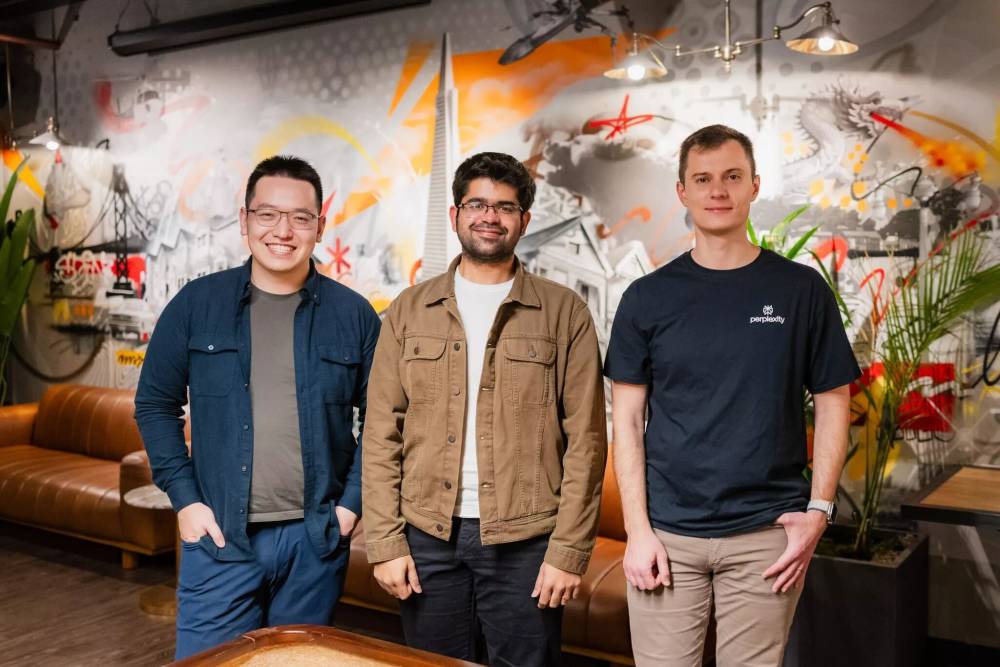
- Perplexity AI, startup xây dựng công cụ tìm kiếm thời gian thực dựa trên AI để cạnh tranh với Google, ra mắt tính năng mới tóm tắt tin tức với rất ít trích dẫn nguồn.
- Một phóng viên Forbes chỉ ra sự tương đồng giữa bản tóm tắt tin tức của Perplexity và bài báo gốc của Forbes. Ông cho rằng Perplexity đã sao chép nội dung từ các bài báo điều tra kéo dài nhiều tháng mà không ghi rõ nguồn.
- CEO Perplexity Aravind Srinivas thừa nhận tính năng "Perplexity Pages" mới ra mắt còn nhiều điểm chưa hoàn thiện. Ông hứa sẽ cải thiện để dễ dàng tìm thấy và nêu bật các nguồn đóng góp rõ ràng hơn.
- Srinivas nhấn mạnh sản phẩm tìm kiếm chính của Perplexity trích dẫn nguồn rõ ràng hơn nhiều so với tính năng mới.
- Forbes đưa ra nhiều ví dụ cho thấy Perplexity sử dụng các bài báo độc quyền, kể cả từ các trang có paywall, chỉ ghi nguồn bằng một liên kết chú thích nhỏ mà người dùng phải nhấp vào mới thấy.
- Sự việc cho thấy sự gia tăng căng thẳng giữa các nhà xuất bản truyền thông và các công ty AI tạo sinh, khi các nhà báo cáo buộc AI sao chép nội dung mà không trích dẫn hoặc bồi thường thỏa đáng.
- Perplexity AI là một startup đang phát triển nhanh trong thị trường AI tạo sinh cạnh tranh. Tháng 4/2024, công ty huy động được 63 triệu USD, nâng định giá lên trên 1 tỷ USD, gấp đôi so với 3 tháng trước. Perplexity nổi bật nhờ cung cấp thông tin theo thời gian thực.
📌 Perplexity AI thừa nhận tính năng tóm tắt tin tức mới còn nhiều điểm chưa hoàn thiện, đặc biệt là việc trích dẫn nguồn chưa rõ ràng. CEO hứa sẽ cải thiện vấn đề này. Sự việc phản ánh sự gia tăng căng thẳng giữa giới truyền thông và các công ty AI tạo sinh xung quanh việc sao chép nội dung thiếu trích dẫn và bồi thường. Perplexity vừa huy động được 63 triệu USD, nâng định giá lên trên 1 tỷ USD.
https://www.bloomberg.com/news/articles/2024-06-08/ai-startup-perplexity-says-news-summary-tool-has-rough-edges
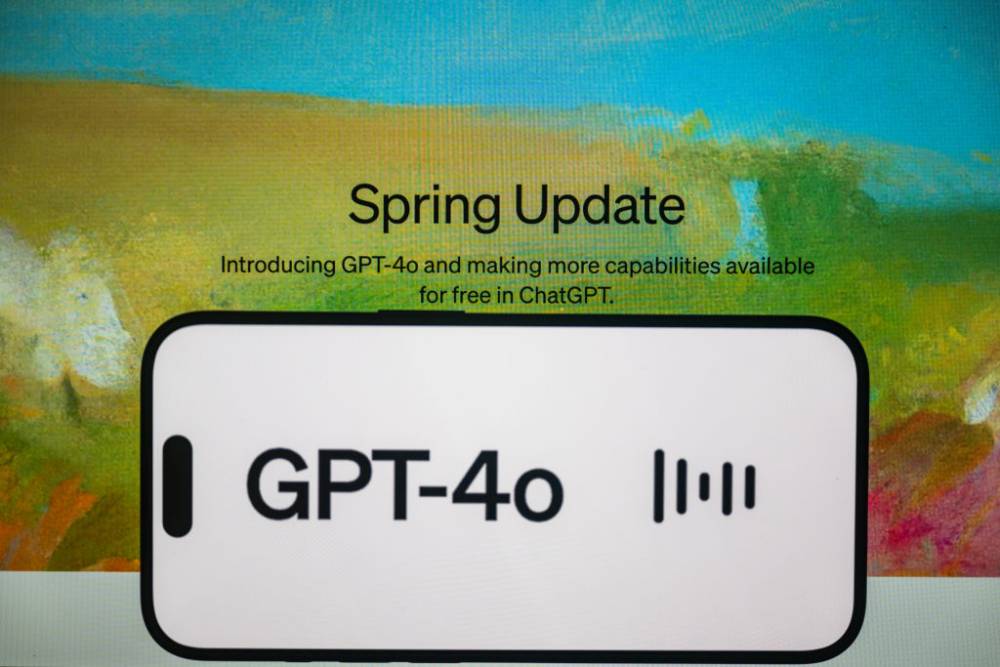
- OpenAI đã ra mắt GPT-4o, công cụ AI đa phương thức tích hợp liền mạch khả năng văn bản, giọng nói và hình ảnh, nhanh hơn đáng kể so với các mô hình trước đây.
- GPT-4o miễn phí nhưng người dùng phải trả bằng dữ liệu của họ. GPT-4o tích lũy mọi thông tin mà người dùng nhập vào dưới dạng văn bản, tệp âm thanh hoặc hình ảnh.
- GPT-4o không chỉ thu thập thông tin của người dùng mà còn cả dữ liệu của bên thứ ba được tiết lộ trong quá trình tương tác với dịch vụ AI.
- Nhiều công ty như Microsoft, Meta, Google, X đã cập nhật chính sách bảo mật cho phép họ thu thập dữ liệu người dùng và áp dụng để đào tạo các mô hình AI tạo sinh.
- Các công ty AI hàng đầu đã phải đối mặt với nhiều vụ kiện ở Mỹ vì sử dụng trái phép nội dung có bản quyền để đào tạo AI.
- Dữ liệu đào tạo chất lượng cao ngày càng khan hiếm. OpenAI đã phiên âm hơn 1 triệu giờ video YouTube, vi phạm quy tắc của nền tảng này.
- Với GPT-4o, OpenAI khai thác lượng người dùng lớn và ngày càng tăng, thu hút bởi lời hứa dịch vụ miễn phí, để crowdsource một lượng lớn dữ liệu đa phương thức.
- Người dùng có thể cấm OpenAI sử dụng "cuộc trò chuyện" của họ với GPT-4o để đào tạo mô hình, nhưng điều này sẽ tự động tắt lịch sử trò chuyện của người dùng.
- Ngay cả khi người dùng đồng ý sử dụng dữ liệu của họ để đào tạo AI, sự đồng ý không thể bảo vệ chống lại vi phạm bản quyền vì người dùng cung cấp dữ liệu mà họ có thể không sở hữu.
- Các nhà sáng tạo và nhà xuất bản đã sử dụng nhiều phương pháp để ngăn chặn nội dung của họ bị hút vào hố đen đào tạo AI như giải pháp công nghệ chặn thu thập dữ liệu, cập nhật điều khoản dịch vụ.
- Cách đáng tin cậy duy nhất để giải quyết vấn đề ngoại ứng (externality )của GPT-4o là các nhà quản lý hạn chế khả năng thu thập và sử dụng dữ liệu mà người dùng chia sẻ của các công ty AI.
📌 GPT-4o của OpenAI là công cụ AI đa phương thức mạnh mẽ và miễn phí, nhưng người dùng phải trả giá bằng dữ liệu của chính họ và bên thứ ba. Điều này dẫn đến nguy cơ vi phạm bản quyền. Các nỗ lực của nhà sáng tạo và nhà xuất bản để bảo vệ nội dung vô ích trừ khi các nhà quản lý hạn chế việc thu thập và sử dụng dữ liệu người dùng của các công ty AI.
https://www.aspistrategist.org.au/the-high-cost-of-gpt-4o/

- Zila Abka, một giáo viên khoa học 39 tuổi ở Malaysia, cho biết cô đã tạo ra bức ảnh "All eyes on Rafah" bằng công cụ Microsoft Image Creator vào tháng 2 và đăng lên nhóm Facebook Prompters Malaya để ủng hộ người Palestine.
- Amirul Shah, sinh viên đại học 21 tuổi ở Kuala Lumpur, khẳng định anh cũng tạo ra một bức ảnh tương tự bằng công cụ AI và đăng lên Instagram. Bức ảnh của anh đã lan truyền với gần 50 triệu lượt chia sẻ.
- Abka cho rằng Shah đã sao chép tác phẩm của cô, cắt bỏ thủy vân và chỉnh sửa thêm. Tuy nhiên, Shah phủ nhận điều này.
- Văn phòng Bản quyền Mỹ từ chối bảo hộ bản quyền cho các hình ảnh do AI tạo ra vì thiếu tác giả là con người, đặt chúng vào vùng xám về mặt pháp lý.
- Các chuyên gia cho rằng yếu tố AI ít ảnh hưởng đến sự lan truyền của bức ảnh, mà chủ yếu là do khẩu hiệu đơn giản, tính biểu tượng, bối cảnh chính trị và sự chia sẻ của người nổi tiếng.
📌 Sự tranh cãi giữa hai nghệ sĩ Malaysia về quyền tác giả của bức ảnh AI về Gaza có tựa đề "All eyes on Rafah" lan truyền với gần 50 triệu lượt chia sẻ cho thấy sự phức tạp trong việc xác định chủ sở hữu của các nội dung do AI tạo ra, vốn đang ngày càng tràn lan trên không gian mạng. Các chuyên gia nhận định rằng yếu tố AI không phải là nhân tố chính giúp bức ảnh viral, mà chủ yếu là nhờ tính đơn giản, biểu tượng và phù hợp bối cảnh.
Citations:
https://www.npr.org/2024/06/02/g-s1-2455/all-eyes-on-rafah-most-viral-ai-meme-malaysia-artists-claim-credit

- Các nhà phát triển mô hình AI tạo sinh đang phải đối mặt với các cáo buộc vi phạm trực tiếp bản quyền tại các tòa án liên bang trên khắp đất nước.
- Trong các vụ án này, nhiều bị đơn AI tạo sinh đang hy vọng có được phán quyết thuận lợi thông qua xét xử tóm tắt dựa trên lập luận "sử dụng hợp lý".
- Nghiên cứu của Bloomberg Law tìm thấy 19 vụ kiện bản quyền chống lại các bị đơn AI tạo sinh đang chờ xử lý tại 4 khu vực: Bắc California, Delaware, Nam New York và Trung Tennessee.
- 11 thẩm phán giám sát các vụ án này có mức độ kinh nghiệm khác nhau trong việc quyết định các kiến nghị xét xử tóm tắt liên quan đến luật bản quyền.
- Thẩm phán Jed Saul Rakoff và Colleen McMahon từ Tòa án Quận phía Nam New York, mỗi người đã quyết định hơn 20 kiến nghị xét xử tóm tắt liên quan đến bản quyền, là những người có kinh nghiệm nhất trong số 11 thẩm phán.
- Một số thẩm phán có ít hoặc không có kinh nghiệm quyết định các kiến nghị xét xử tóm tắt về các vấn đề bản quyền, như Thẩm phán Araceili Martinez-Olguin và Margaret M. Garnett.
- Mặc dù có mức độ kinh nghiệm khác nhau, phần lớn các thẩm phán xử lý vụ kiện AI tạo sinh sẵn sàng chấp thuận toàn bộ hoặc một phần các kiến nghị xét xử tóm tắt liên quan đến luật bản quyền.
- Tuy nhiên, chỉ có 5 thẩm phán đã quyết định các kiến nghị xét xử tóm tắt liên quan đến lập luận "sử dụng hợp lý", và chỉ 3 người ủng hộ lập luận này, cho thấy một cuộc chiến khó khăn cho các bị đơn AI tạo sinh.
📌 Kết quả nghiên cứu của Bloomberg Law cho thấy 19 vụ kiện bản quyền chống lại các bị đơn AI tạo sinh đang chờ xử lý tại 4 khu vực, với 11 thẩm phán có mức độ kinh nghiệm khác nhau. Mặc dù phần lớn thẩm phán sẵn sàng chấp thuận các kiến nghị xét xử tóm tắt, chỉ có 3/5 thẩm phán ủng hộ lập luận "sử dụng hợp lý", báo hiệu một cuộc chiến pháp lý gian nan cho các công ty AI tạo sinh.
https://news.bloomberglaw.com/bloomberg-law-analysis/genai-judges-favor-summary-judgment-on-copyright-not-fair-use

- OpenAI đã ký kết thỏa thuận hợp tác nội dung với The Atlantic và Vox Media (chủ sở hữu của The Verge, Vox.com, New York Magazine, Thrillist, SB Nation).
- Theo thỏa thuận, OpenAI sẽ được cấp phép sử dụng nội dung từ các ấn phẩm này trong các phản hồi của ChatGPT và làm dữ liệu huấn luyện cho các mô hình ngôn ngữ lớn (LLMs) và mô hình AI đa phương tiện như GPT-4o, Sora.
- Các điều khoản tài chính cụ thể chưa được tiết lộ, nhưng các công ty cho biết họ sẽ được tiếp cận công nghệ của OpenAI và nhận phí cấp phép.
- Thỏa thuận này diễn ra chỉ một tuần sau khi OpenAI công bố hợp tác tương tự với News Corp., chủ sở hữu của The Wall Street Journal, New York Post.
- Một số nhà báo, như Jessica Lessin - người sáng lập kiêm CEO của The Information, cho rằng các nhà xuất bản đang quá vội vàng cho phép OpenAI tiếp cận nội dung quý giá của họ.
- Tuy nhiên, Vox Media khẳng định họ đang tiếp cận AI một cách thận trọng, tập trung vào việc mang lại sự đổi mới cho khán giả và khách hàng, sử dụng công cụ hỗ trợ để nâng cao sáng tạo của con người, đồng thời mở rộng và bảo vệ giá trị của tác phẩm và sở hữu trí tuệ.
- Thỏa thuận với OpenAI đảm bảo Vox Media được bồi thường khi OpenAI sử dụng nội dung, tăng khả năng hiển thị thương hiệu, bảo vệ sở hữu trí tuệ thông qua yêu cầu ghi công và giới hạn tóm tắt, đồng thời đưa Vox Media vào hàng đầu để tiếp cận một số sản phẩm của OpenAI.
📌 Thỏa thuận hợp tác giữa OpenAI với The Atlantic và Vox Media cho thấy xu hướng các nhà xuất bản lớn ngày càng sẵn sàng chia sẻ nội dung quý giá để đổi lấy công nghệ AI tiên tiến và nguồn thu mới. Tuy nhiên, việc tiếp cận thận trọng, cân bằng giữa đổi mới và bảo vệ sở hữu trí tuệ sẽ là chìa khóa để các thỏa thuận này mang lại lợi ích cho cả nhà xuất bản và công chúng.
https://venturebeat.com/ai/openai-partners-with-the-atlantic-and-the-verge-publisher-vox-media/
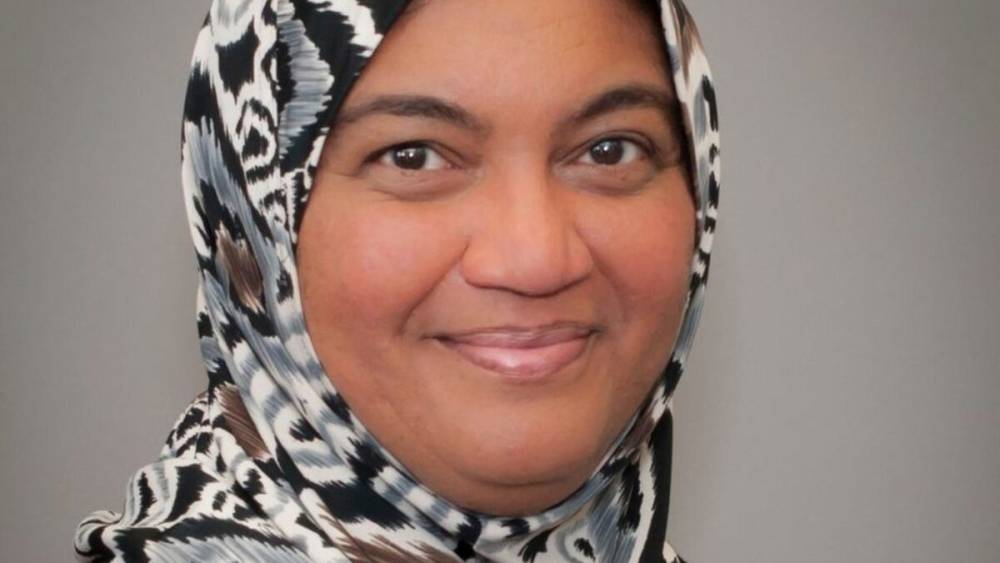
- Nữ diễn viên Scarlett Johansson tố cáo OpenAI sử dụng giọng nói của cô mà không xin phép để tạo ra trợ lý ảo Sky. OpenAI phủ nhận cáo buộc này.
- Sự việc nêu bật mâu thuẫn giữa các công ty AI và những người sáng tạo nội dung mà các công ty này cần để cải thiện sản phẩm.
- Quyền sở hữu trí tuệ (IP) liên quan đến quyền hợp pháp của chủ sở hữu trong việc ngăn cấm người khác sao chép, sử dụng, sản xuất hoặc bán những gì họ tạo ra. Có nhiều loại IP như bản quyền, nhãn hiệu, bằng sáng chế.
- AI đang thách thức IP ở hai khía cạnh: đầu vào và đầu ra. Các mô hình ngôn ngữ lớn (LLM) cần lượng dữ liệu khổng lồ để huấn luyện, nhiều công ty đã bỏ qua luật bản quyền để lấy dữ liệu. Một số vụ kiện đang diễn ra có thể cản trở sự phát triển của AI.
- Thách thức thứ hai liên quan đến quyền sở hữu sản phẩm do AI tạo ra. Pháp luật hiện nay quy định quyền sở hữu IP gắn liền với người sáng tạo, nếu nội dung do AI tạo ra hoàn toàn thì không thể sở hữu IP.
- Quyền IP rất quan trọng đối với đổi mới sáng tạo vì chúng tạo ra độc quyền hạn chế để thu lợi nhuận từ đầu tư nghiên cứu và phát triển. AI đang đe dọa nghiêm trọng điều này.
- Pháp luật chưa theo kịp sự phát triển của AI, nhưng ngồi yên là không thể vì có quá nhiều vấn đề chính sách quan trọng.
📌 Sự trỗi dậy của AI đang đặt ra thách thức lớn cho quyền sở hữu trí tuệ. Các công ty AI sử dụng trái phép dữ liệu được bảo vệ bản quyền để huấn luyện AI, đồng thời nội dung do AI tạo ra không thể sở hữu IP do thiếu yếu tố con người. Điều này đe dọa nghiêm trọng đến đổi mới sáng tạo. Pháp luật cần sớm thay đổi để đối phó với thách thức từ AI.
https://www.theglobeandmail.com/opinion/article-will-the-rise-of-ai-spell-the-end-of-intellectual-property-rights/
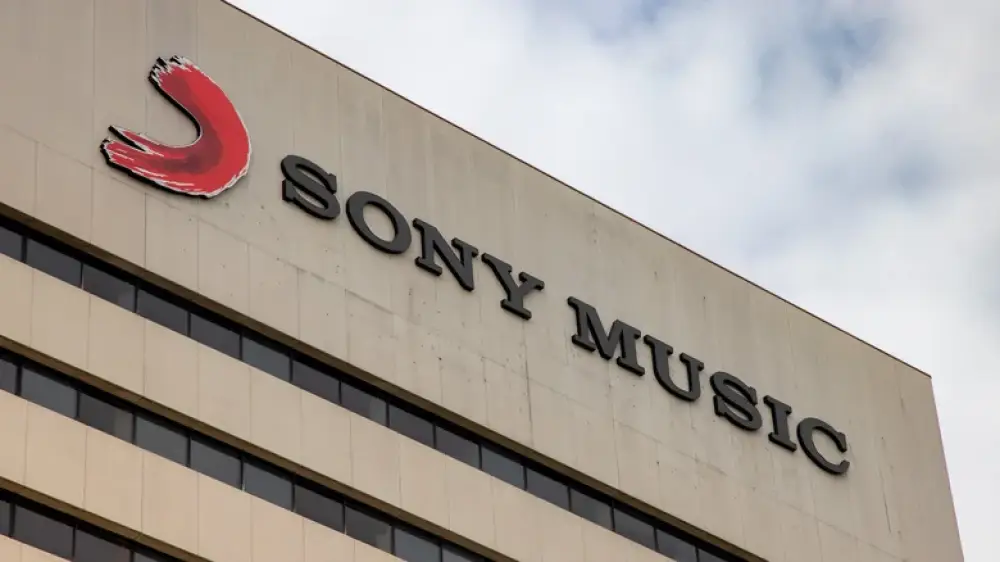
- Sony Music cảnh báo 700 công ty AI, bao gồm Google, Microsoft và OpenAI, không được khai thác dữ liệu âm nhạc thuộc sở hữu của Sony để huấn luyện mô hình AI mà không có sự cho phép rõ ràng.
- Tuyên bố của Sony bao gồm nhiều loại tác phẩm âm nhạc, từ lời bài hát, sáng tác đến bản ghi âm và hình ảnh.
- Sony cũng yêu cầu các nền tảng nghe nhạc trực tuyến như Spotify và Apple Music áp dụng biện pháp bảo vệ cho nghệ sĩ.
- Có nhiều tranh cãi về khía cạnh pháp lý của việc khai thác và sử dụng dữ liệu để huấn luyện AI. Một số cho rằng đó là "sử dụng hợp lý", trong khi những người khác cho rằng các bên liên quan, đặc biệt là người sáng tạo, nên được bồi thường.
- Hơn 200 nghệ sĩ đã ký thư ngỏ yêu cầu các công ty công nghệ ngừng sử dụng AI để xâm phạm và hạ giá trị quyền của nghệ sĩ.
- Sony chưa hành động chống lại bất kỳ công ty phát triển AI cá nhân nào. Họ chỉ đưa ra cảnh báo, có lẽ để tránh các vụ kiện tiềm ẩn.
- Sony yêu cầu các công ty chia sẻ thông tin về việc họ có sử dụng nội dung của Sony để huấn luyện mô hình AI hay không, cách họ truy cập và thời gian lưu giữ bản sao.
📌 Sony Music đã đưa ra cảnh báo đối với 700 công ty AI về việc khai thác trái phép dữ liệu âm nhạc để huấn luyện AI. Tuy nhiên, lập trường pháp lý của Sony vẫn chưa rõ ràng trong bối cảnh có nhiều tranh cãi xoay quanh vấn đề bản quyền và sử dụng hợp lý trong lĩnh vực AI âm nhạc đang phát triển mạnh mẽ.
Citations:
[1] https://www.slashgear.com/1583935/sony-goes-to-war-with-ai-music-for-wrong-reasons/

- OpenAI một lần nữa từ chối trả lời câu hỏi liệu họ có sử dụng nội dung của người dùng để huấn luyện mô hình AI mới của họ, Sora hay không.
- Câu hỏi này đã được đặt ra trong một cuộc phỏng vấn gần đây với đại diện của OpenAI, nhưng không nhận được câu trả lời rõ ràng.
- Sự từ chối này tiếp tục gây ra lo ngại trong cộng đồng về vấn đề quyền riêng tư và sử dụng dữ liệu cá nhân mà không có sự đồng ý của người dùng.
- Trong quá khứ, OpenAI đã bị chỉ trích vì không minh bạch về nguồn dữ liệu huấn luyện cho các mô hình AI của mình, và vấn đề này vẫn chưa được giải quyết.
- Người dùng và chuyên gia trong lĩnh vực công nghệ đều bày tỏ sự quan ngại về khả năng vi phạm quyền riêng tư và thiếu kiểm soát dữ liệu cá nhân.
- Một số người dùng đã kêu gọi OpenAI công bố rõ ràng các nguồn dữ liệu mà họ sử dụng để huấn luyện các mô hình AI, để người dùng có thể hiểu rõ hơn về cách thức dữ liệu của họ được sử dụng.
- Các tổ chức bảo vệ quyền riêng tư cũng đã lên tiếng yêu cầu có sự minh bạch hơn từ các công ty công nghệ lớn như OpenAI, đặc biệt là khi các công nghệ mới ngày càng ảnh hưởng đến đời sống cá nhân.
📌 OpenAI tiếp tục từ chối xác nhận việc sử dụng nội dung cá nhân trong huấn luyện AI Sora, gây ra lo ngại về quyền riêng tư. Cộng đồng và các tổ chức bảo vệ quyền riêng tư đang yêu cầu minh bạch hơn về nguồn dữ liệu được sử dụng.
Citations:
[1] https://petapixel.com/2024/05/10/openai-again-refuses-to-say-if-it-used-your-content-to-train-sora/
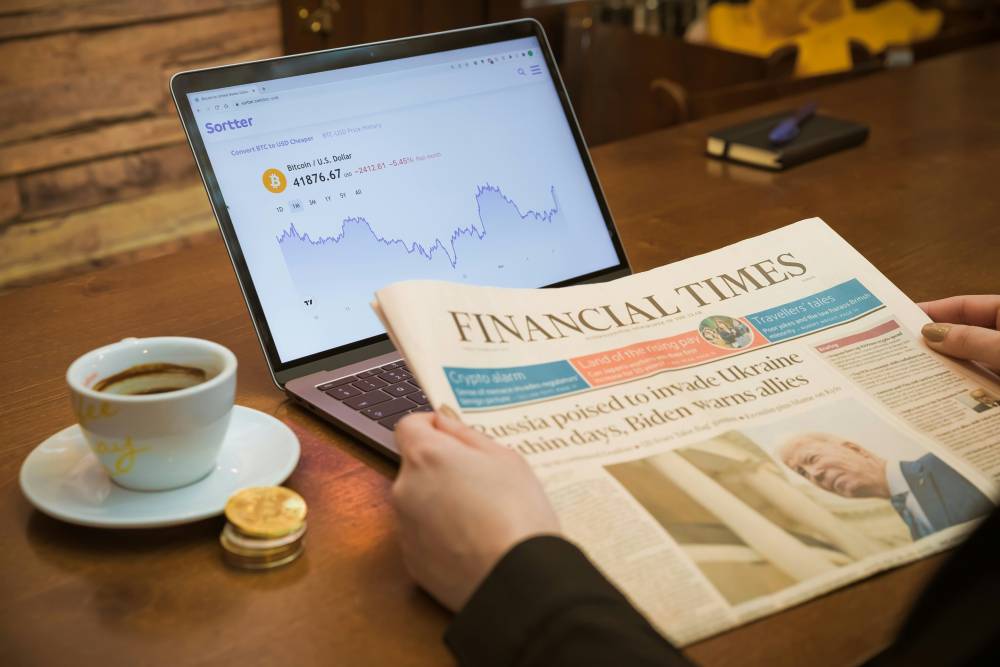
- OpenAI ký thỏa thuận hợp tác chiến lược và cấp phép với Financial Times (FT), cho phép OpenAI sử dụng nội dung của FT làm dữ liệu đào tạo cho các sản phẩm AI như ChatGPT. Đổi lại, FT nhận được khoản thanh toán không tiết lộ.
- Thỏa thuận diễn ra trong bối cảnh các vụ kiện vi phạm bản quyền trên toàn cầu của các công ty truyền thông về việc sử dụng nội dung của họ để đào tạo sản phẩm AI. Vụ kiện nổi bật nhất là vụ kiện của New York Times chống lại OpenAI.
- Các công ty công nghệ lo ngại rằng khi phát triển các sản phẩm tiên tiến hơn, internet có thể không còn đủ dữ liệu chất lượng cao để đào tạo AI.
- FT trước đây đã bày tỏ ý định "thử nghiệm có trách nhiệm" với công cụ AI và đào tạo nhà báo sử dụng AI tạo sinh để "khám phá câu chuyện".
- OpenAI hy vọng giải quyết vấn đề "ảo giác" (tạo ra phản hồi bịa đặt) bằng cách sử dụng nội dung đáng tin cậy từ FT và các nguồn tin cậy khác. Đồng thời, hợp tác này có thể giúp OpenAI giải quyết sự giám sát pháp lý mà họ phải đối mặt.
📌 Thỏa thuận giữa OpenAI và FT cho thấy sự căng thẳng giữa AI và các ngành công nghiệp mà nó đang thay đổi. Mặc dù có tiềm năng cách mạng hóa các ngành và cuộc sống con người, AI cũng đặt ra nhiều thách thức về mặt pháp lý và chất lượng dữ liệu đào tạo. Việc hợp tác với các nguồn tin uy tín như FT là nỗ lực của OpenAI nhằm vượt qua những rào cản này.
Citations:
[1] https://theconversation.com/openais-content-deal-with-the-ft-is-an-attempt-to-avoid-more-legal-challenges-and-an-ai-data-apocalypse-229215

- Bài viết của Rana Foroohar trên Financial Times đặt câu hỏi liệu AI có đang dần tiêu diệt ngành báo chí hay không, đặc biệt qua việc sử dụng nội dung báo chí để huấn luyện các mô hình ngôn ngữ lớn (LLMs).
- FT đã ký kết thỏa thuận với OpenAI để huấn luyện LLMs bằng nội dung của mình, nhận thanh toán cho quyền sở hữu trí tuệ và được ghi nhận khi nội dung xuất hiện.
- Foroohar bày tỏ lo ngại rằng ngành báo chí có thể lặp lại sai lầm của những năm 1990, khi không bảo vệ đủ mạnh mẽ bản quyền và giá trị nội dung của mình trước Silicon Valley.
- Cô cũng chỉ ra rằng Google đã từng coi thường bản quyền một cách trắng trợn, dẫn đến sự phát triển của chủ nghĩa tư bản giám sát và ứng dụng AI hiện nay.
- Một nghiên cứu gần đây ước tính rằng nếu Google trả cho các nhà xuất bản Mỹ 50% giá trị tạo ra từ nội dung tin tức của họ, họ sẽ phải trả khoảng 10-12 tỷ USD hàng năm.
- AI đang thay đổi cách tiếp cận nội dung: thay vì dẫn người dùng đến trang web của người tạo nội dung, các chatbot như ChatGPT của OpenAI và Bard của Google cung cấp câu trả lời trực tiếp, giữ người dùng trong "khu vườn có tường" của các công ty công nghệ lớn.
- Foroohar cũng đề cập đến sự suy thoái của ngành báo chí do sự thống trị của các gã khổng lồ kỹ thuật số, đặc biệt là ở cấp độ địa phương, và cách các công ty này bắt đầu tài trợ cho nội dung tin tức địa phương do thiếu hụt này gây ra tác động tiêu cực đến mô hình kinh doanh của chính họ.
📌 Bài viết của Rana Foroohar trên Financial Times phân tích sâu về ảnh hưởng tiềm tàng của AI đối với ngành báo chí, đặc biệt là qua việc sử dụng nội dung báo chí để huấn luyện các mô hình ngôn ngữ lớn. Cô bày tỏ lo ngại về việc lặp lại các sai lầm của quá khứ và cảnh báo về mối quan hệ không cân xứng giữa các nhà xuất bản và các công ty công nghệ lớn, nhấn mạnh rằng AI có thể không mang lại lợi ích đáng kể cho ai ngoài Big Tech trong ngắn hạn và trung hạn.
Citations:
[1] https://www.ft.com/content/aa191322-13b1-4468-ab7b-431dfee2cc07
#FT

- OpenAI hợp tác với Dotdash Meredith, nhà xuất bản đứng sau các thương hiệu nổi tiếng như People và Better Homes & Gardens.
- Dotdash Meredith sẽ cho phép OpenAI sử dụng nội dung của họ để đào tạo ChatGPT, đổi lại họ sẽ tận dụng các mô hình của OpenAI để cải tiến công cụ quảng cáo D/Cipher.
- ChatGPT giờ đây sẽ hiển thị nội dung và liên kết từ các ấn phẩm của Dotdash Meredith, cung cấp cho OpenAI một nguồn tài liệu đào tạo đáng tin cậy và được cấp phép.
- Thỏa thuận này đến sau khi OpenAI bị cáo buộc sử dụng nội dung trái phép. The New York Times, Alden Capital Group, diễn viên hài Sarah Silverman và một người bán xe đã kiện OpenAI vì sử dụng nội dung mà không được sự đồng ý.
- CEO của Dotdash Meredith, Neil Vogel, tuyên bố rằng các nền tảng AI nên trả tiền cho các nhà xuất bản và ghi nhận nguồn nội dung một cách thích hợp.
- Trước đó, OpenAI đã đạt được thỏa thuận với The Financial Times. CEO của FT ủng hộ quan điểm các nền tảng AI nên bồi thường cho các nhà xuất bản.
- Dotdash Meredith, chủ sở hữu của Investopedia, Food & Wine, InStyle và Verywell, dự định sử dụng các mô hình của OpenAI để tăng cường hệ thống quảng cáo D/Cipher của mình.
📌 Thỏa thuận hợp tác giữa OpenAI và Dotdash Meredith cho thấy sự chuyển hướng của OpenAI sang cách tiếp cận cấp phép trong việc lấy tài liệu huấn luyện, đồng thời giúp Dotdash Meredith nâng cấp công cụ quảng cáo D/Cipher. Điều này đánh dấu một bước tiến quan trọng trong việc đảm bảo tương lai bền vững cho internet, nơi các nền tảng AI trả tiền và ghi nhận thích đáng cho nội dung của các nhà xuất bản.
Citations:
[1] https://www.engadget.com/openai-partners-with-people-publisher-dotdash-meredith-212832821.html
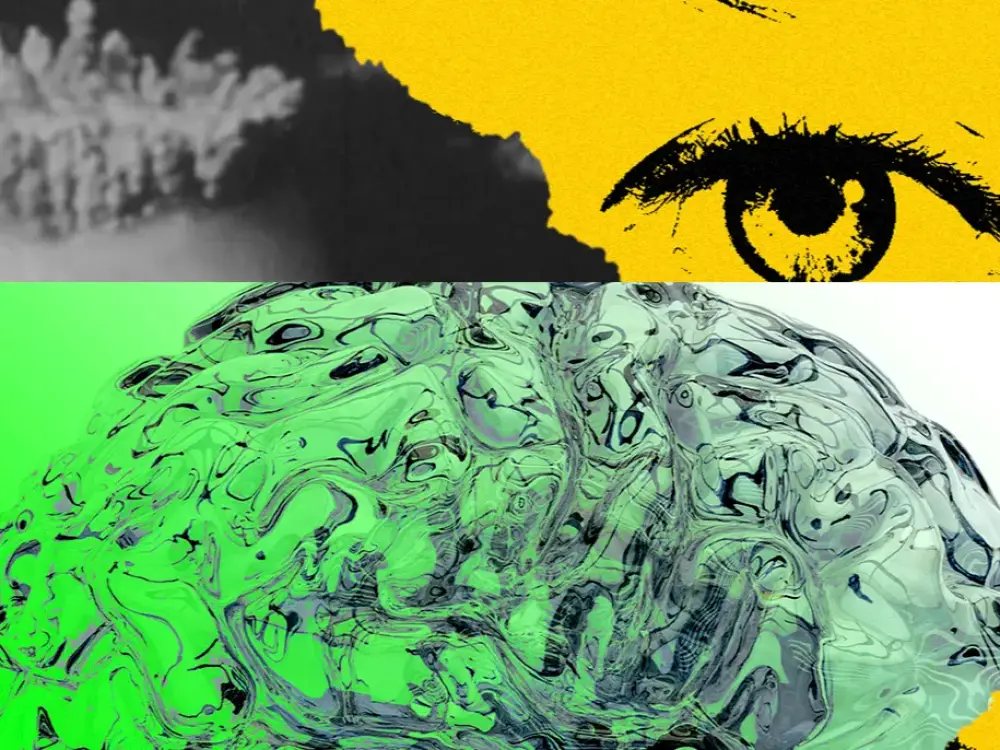
- OpenAI, nhà phát triển đằng sau mô hình AI phổ biến ChatGPT, thông báo kế hoạch giới thiệu công cụ Media Manager vào năm 2025.
- Công cụ này cho phép các nghệ sĩ và chủ sở hữu nội dung chọn không đưa tác phẩm của họ vào quá trình phát triển AI của công ty.
- OpenAI mô tả công cụ này là phương tiện để "người sáng tạo và chủ sở hữu nội dung cho chúng tôi biết những gì họ sở hữu" và xác định "cách họ muốn tác phẩm của mình được đưa vào hoặc loại trừ khỏi nghiên cứu và đào tạo học máy".
- Công ty hiện đang vướng vào các vụ kiện từ các nghệ sĩ, nhà văn và nhà xuất bản về cáo buộc sử dụng trái phép tác phẩm của họ để đào tạo thuật toán.
- OpenAI đang hợp tác với "người sáng tạo, chủ sở hữu nội dung và cơ quan quản lý" để phát triển công cụ và hướng tới thiết lập tiêu chuẩn ngành.
- Ed Newton-Rex, CEO của Fairly Trained, hoan nghênh sự thay đổi của OpenAI về dữ liệu đào tạo nhưng bày tỏ lo ngại về việc triển khai.
- Một số công ty công nghệ khác như Adobe và Tumblr đã cung cấp các công cụ chọn không tham gia liên quan đến thu thập dữ liệu và học máy.
- Spawning, một startup đã ra mắt cơ sở dữ liệu có tên Do Not Train gần 2 năm trước, đã tích lũy được sở thích cho 1,5 tỷ tác phẩm.
- Jordan Meyer, CEO của Spawning, cho biết công ty không hợp tác với OpenAI trong dự án Media Manager nhưng sẵn sàng cộng tác.
- Reid Southen, một nghệ sĩ khái niệm và họa sĩ minh họa thường viết về AI và nghệ thuật, ủng hộ một sự thay đổi triệt để hơn.
📌 OpenAI công bố kế hoạch ra mắt công cụ Media Manager vào năm 2025, cho phép nghệ sĩ và chủ sở hữu nội dung kiểm soát việc sử dụng tác phẩm trong phát triển AI. Công ty đang hợp tác với các bên liên quan để phát triển công cụ, hướng tới thiết lập tiêu chuẩn ngành, trong bối cảnh đang vướng các vụ kiện về cáo buộc sử dụng trái phép tác phẩm để đào tạo thuật toán.
Citations:
[1] https://www.wired.com/story/openai-olive-branch-artists-ai-algorithms/
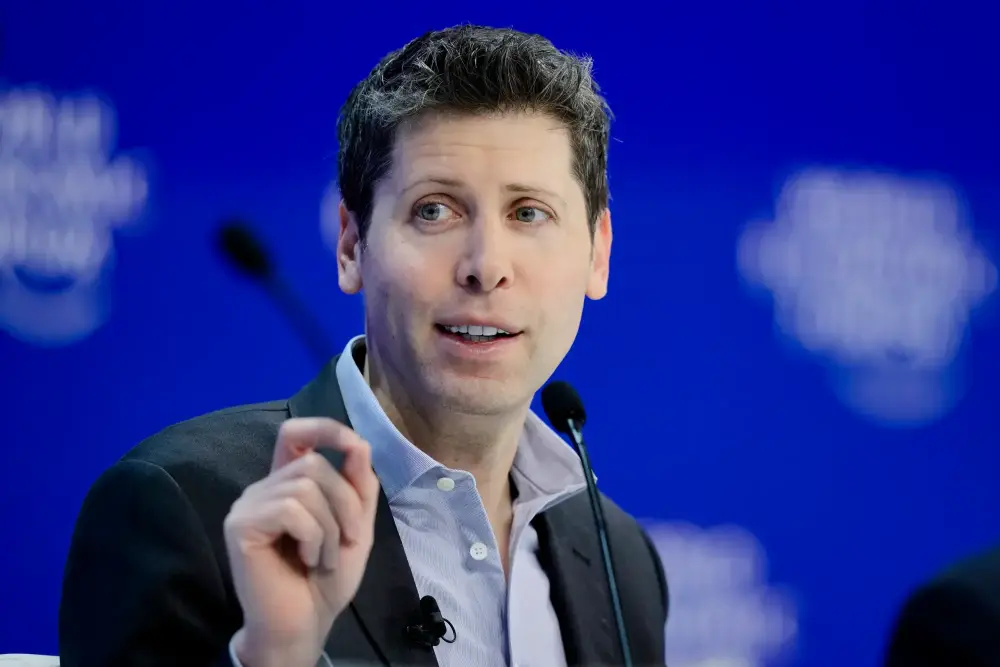
- Trong vụ kiện tập thể của Hiệp hội Tác giả chống OpenAI, tài liệu mới tiết lộ việc xóa 2 bộ dữ liệu "books1" và "books2", được cho là quan trọng trong huấn luyện mô hình GPT-3.
- Theo hồ sơ tòa án, 2 bộ dữ liệu này chứa "hơn 100.000 cuốn sách đã xuất bản", là trọng tâm cáo buộc của Hiệp hội về việc OpenAI sử dụng tài liệu có bản quyền để phát triển AI.
- OpenAI ban đầu từ chối cung cấp thông tin về bộ dữ liệu vì lo ngại bảo mật, sau đó thừa nhận đã xóa toàn bộ.
- Báo cáo năm 2020 của OpenAI mô tả books1 và books2 là "kho sách trên internet", chiếm 16% dữ liệu huấn luyện GPT-3.
- OpenAI cho biết ngừng sử dụng books1 và books2 từ cuối 2021, xóa giữa 2022 do không hoạt động, các bộ dữ liệu khác vẫn còn nguyên.
- Tài liệu cũng tiết lộ 2 nhân viên OpenAI tạo ra books1 và books2 đã rời công ty. OpenAI đề nghị tòa giữ bí mật danh tính của họ.
- Hiệp hội Tác giả phản đối, ủng hộ minh bạch và quyền được biết của công chúng.
- OpenAI tuyên bố các mô hình của ChatGPT và DALL-E không sử dụng dữ liệu có bản quyền.
📌 Vụ kiện của Hiệp hội Tác giả chống OpenAI đang làm nóng tranh cãi về việc sử dụng tài liệu có bản quyền trong huấn luyện AI. Tài liệu mới tiết lộ OpenAI đã xóa 2 bộ dữ liệu books1 và books2 chứa hơn 100.000 cuốn sách, chiếm 16% dữ liệu huấn luyện GPT-3. Công ty đề nghị giữ bí mật thông tin liên quan, trong khi Hiệp hội đòi minh bạch.
Citations:
[1] https://www.businessinsider.com/openai-destroyed-ai-training-datasets-lawsuit-authors-books-copyright-2024-5
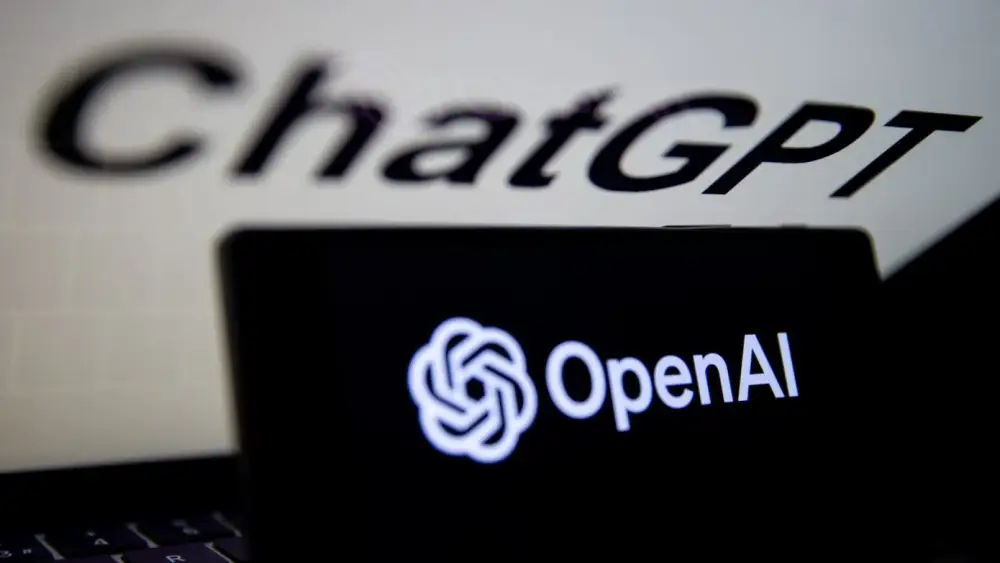
- OpenAI, nhà phát triển chatbot viral ChatGPT, đã ký kết thỏa thuận cấp phép tin tức với Financial Times (FT) của Anh.
- Thỏa thuận cho phép OpenAI sử dụng nội dung của FT để đào tạo các mô hình AI và cung cấp cho người dùng ChatGPT các tóm tắt, trích dẫn và liên kết phong phú đến các bài báo của FT khi truy vấn liên quan.
- Đây là một phần trong chuỗi thỏa thuận cấp phép nội dung gần đây của OpenAI với các nhà xuất bản lớn như Axel Springer (Đức), AP, Le Monde và Prisa Media (Pháp và Tây Ban Nha).
- Các điều khoản tài chính của thỏa thuận không được tiết lộ. Đây là thỏa thuận không độc quyền và OpenAI không nắm giữ cổ phần nào trong FT Group.
- FT đã trở thành khách hàng của sản phẩm ChatGPT Enterprise của OpenAI từ đầu năm nay.
- FT muốn khám phá cách thức sử dụng AI sâu hơn, đồng thời thận trọng với độ tin cậy của kết quả tự động và rủi ro đối với niềm tin của độc giả.
- OpenAI hy vọng việc cấp phép nội dung báo chí sẽ giúp khắc phục vấn đề "ảo giác" (hallucination) trong các mô hình ngôn ngữ lớn.
- Trách nhiệm pháp lý liên quan đến bản quyền cũng là một động lực chính thúc đẩy OpenAI hướng tới việc cấp phép nội dung.
- Các nhà xuất bản có thể thu được lợi nhuận từ việc cấp phép nội dung cho OpenAI.
📌 Thỏa thuận hợp tác chiến lược giữa OpenAI và Financial Times cho thấy xu hướng các công ty AI hàng đầu như OpenAI tìm cách hợp tác chặt chẽ hơn với các tổ chức truyền thông uy tín để cải thiện chất lượng và độ tin cậy của các mô hình ngôn ngữ, đồng thời giảm thiểu rủi ro pháp lý liên quan đến bản quyền nội dung.
Citations:
[1] https://techcrunch.com/2024/04/29/openai-inks-strategic-tie-up-with-uks-financial-times-including-content-use/

- Liz Bonnin, người dẫn chương trình khoa học nổi tiếng với giọng điệu Ireland đặc trưng, đã phát hiện hình ảnh của mình được sử dụng trong quảng cáo trực tuyến cho một loại xịt chống côn trùng mà cô không hề đồng ý.
- Sự việc bắt đầu khi Howard Carter, CEO của Incognito, nhận được một loạt tin nhắn giọng nói mà ông tin là từ Bonnin. Những tin nhắn này cùng với chi tiết liên lạc giả mạo từ Wildlife Trusts đã khiến ông tin rằng mình đang giao dịch với chính Bonnin.
- Các cuộc đàm phán được thực hiện qua WhatsApp và email, và một hợp đồng được cho là đã được Bonnin ký điện tử vào ngày 13 tháng 3. Một khoản thanh toán trị giá 20.000 bảng đã được chuyển vào tài khoản liên kết với một ngân hàng số vào ngày 15 tháng 3.
- Hình ảnh của Bonnin được gửi đi năm ngày sau đó. Bonnin mô tả giọng nói AI được sử dụng để mạo danh mình là “khúc xạ và thiếu nhịp điệu” và bày tỏ cảm giác bị xâm phạm.
- Hai chuyên gia AI, Surya Koppisetti và Michael Keeling, đã xác nhận rằng đoạn ghi âm giọng nói có khả năng đã được tạo ra nhân tạo, với những bất thường về giọng điệu và tiếng ồn nền đều đặn, đơn điệu.
- Incognito đã báo cáo sự việc cho cảnh sát và ngân hàng của họ, thừa nhận sự xấu hổ và tủi nhục mà sự việc mang lại.
📌 Liz Bonnin, người dẫn chương trình của BBC, đã bị sử dụng hình ảnh và giọng nói một cách trái phép trong quảng cáo cho một sản phẩm chống côn trùng do một công ty bị lừa bởi AI. Các cuộc đàm phán và hợp đồng giả mạo đã dẫn đến việc thanh toán 20.000 bảng, và sự việc sau đó đã được báo cáo cho cảnh sát.
Citations:
[1] https://www.theguardian.com/technology/2024/apr/28/bbc-presenters-likeness-used-in-advert-after-firm-tricked-by-ai-generated-voice

- Các công ty công nghệ lớn như Google, Microsoft, Amazon có thể sử dụng hình ảnh do người dùng tải lên các dịch vụ lưu trữ đám mây của họ để huấn luyện các mô hình AI.
- Điều này được cho phép theo các điều khoản dịch vụ và thỏa thuận người dùng mà chúng ta thường bỏ qua khi đăng ký.
- Các công ty có thể cấp giấy phép cho bên thứ ba sử dụng dữ liệu hình ảnh của người dùng để phát triển AI, machine learning.
- Người dùng cần đọc kỹ điều khoản, chính sách quyền riêng tư trước khi sử dụng dịch vụ đám mây để hiểu rõ quyền của mình.
- Một số giải pháp là sử dụng dịch vụ lưu trữ đám mây có chính sách bảo mật nghiêm ngặt hơn, hoặc tự lưu trữ dữ liệu.
- Cần có sự minh bạch và kiểm soát của người dùng đối với việc sử dụng dữ liệu cá nhân của họ cho mục đích phát triển AI.
- Các nhà làm luật cần xem xét và điều chỉnh khuôn khổ pháp lý để bảo vệ quyền riêng tư, sở hữu trí tuệ của người dùng trước sự bùng nổ của AI.
📌 Các công ty công nghệ lớn có thể sử dụng hình ảnh của người dùng tải lên dịch vụ đám mây để huấn luyện AI theo các điều khoản dịch vụ. Người dùng cần thận trọng đọc kỹ chính sách, sử dụng dịch vụ lưu trữ bảo mật hoặc tự lưu trữ. Cần sự minh bạch và điều chỉnh pháp lý để bảo vệ quyền lợi của người dùng trước sự phát triển của AI.
Citations:
[1] https://www.dpreview.com/opinion/1995639497/cloud-companies-may-lease-your-images-for-ai-learning-what-can-you-do-about-it

• Elisa Shupe, một cựu quân nhân 60 tuổi, đã đạt được thành công trong việc đăng ký bản quyền cho cuốn tiểu thuyết "AI Machinations: Tangled Webs and Typed Words" được viết với sự hỗ trợ của ChatGPT.
• Ban đầu, Văn phòng Bản quyền Mỹ (USCO) từ chối đơn đăng ký bản quyền của Shupe vì coi AI là tác giả chính của tác phẩm.
• Tuy nhiên, sau đó USCO đã cấp bản quyền cho Shupe với tư cách là tác giả của "sự sắp xếp, lựa chọn và phối hợp các phần do AI tạo ra".
• Trường hợp của Shupe phản ánh nỗ lực của USCO trong việc xác định ranh giới về vật liệu do AI tạo ra có thể được bảo hộ bản quyền hay không.
• Luật sư Erica Van Loon nhận định rằng bản quyền hạn chế này là một bước tiến quan trọng nhưng cũng đi kèm với những hạn chế đáng kể.
• Vụ việc của Shupe là một phần của phong trào nhằm làm cho luật bản quyền thân thiện hơn với AI và những người sử dụng nó.
• USCO vẫn định nghĩa tác giả là một nỗ lực thuần túy của con người, nhưng đã thể hiện sự cởi mở trong việc đăng ký các tác phẩm kết hợp yếu tố AI.
• Mặc dù chỉ được bảo hộ bản quyền hạn chế, chiến thắng của Shupe đánh dấu cách USCO đang vật lộn với khái niệm tác giả trong kỷ nguyên AI.
• Shupe hy vọng việc công khai nỗ lực của mình sẽ giảm kỳ thị đối với việc sử dụng AI như một công cụ sáng tạo.
📌Văn phòng Bản quyền Mỹ đã cấp bản quyền hạn chế cho tiểu thuyết "AI Machinations" của Elisa Shupe, được viết với sự hỗ trợ của ChatGPT, đánh dấu bước tiến trong cách tiếp cận tác phẩm AI tạo sinh. Văn phòng Bản quyền Mỹ đã cấp bản quyền cho Shupe với tư cách là tác giả của "sự sắp xếp, lựa chọn và phối hợp các phần do AI tạo ra".
Citations:
[1] https://www.wired.com/story/the-us-copyright-office-loosens-up-a-little-on-ai/
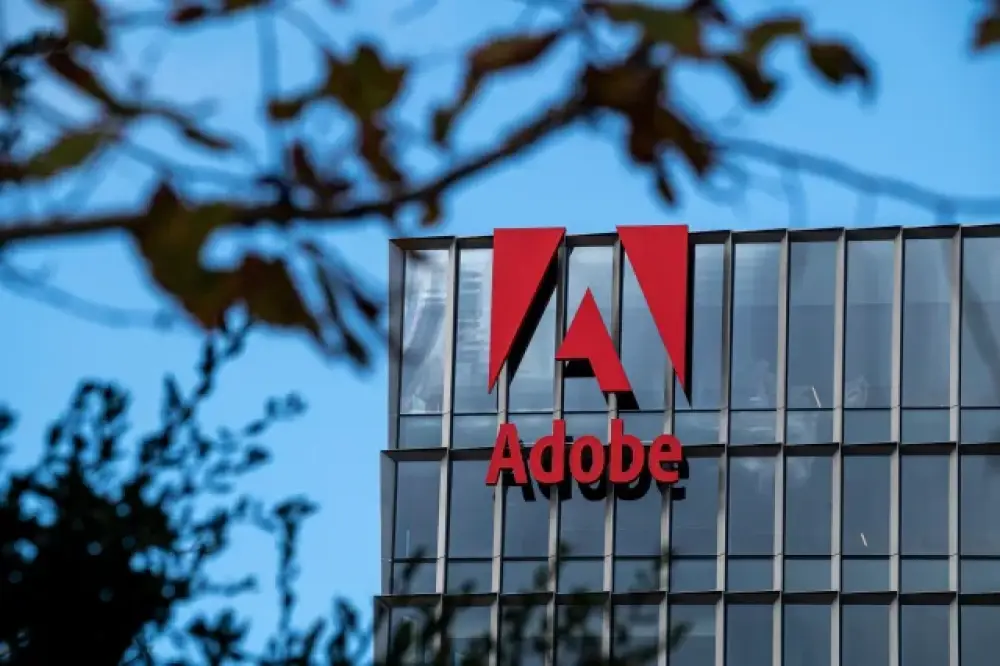
- Adobe đang kêu gọi cung cấp hơn 100 video ngắn về người thực hiện các hành động, thể hiện cảm xúc, cũng như hình ảnh giải phẫu đơn giản của bàn chân, bàn tay, mắt.
- Công ty cũng tìm kiếm video về người tương tác với các vật dụng như điện thoại thông minh, thiết bị thể dục.
- Adobe khuyến cáo không gửi tài liệu có bản quyền, khỏa thân hoặc nội dung phản cảm.
- Mức thanh toán trung bình cho một phút video là khoảng 2.62 USD, có thể lên tới 7.25 USD/phút.
- Adobe đang nhắm tới mạng lưới nhiếp ảnh gia và nghệ sĩ, trả 120 USD cho mỗi bài nộp, nhằm tích lũy tài sản để đào tạo AI.
- Trong năm qua, Adobe tập trung tích hợp các tính năng AI tạo sinh vào bộ phần mềm như Photoshop, Illustrator. Công ty đã ra mắt công cụ chuyển văn bản thành hình ảnh, minh họa, được sử dụng hàng tỷ lần.
- Việc OpenAI giới thiệu mô hình tạo video Sora làm dấy lên lo ngại về khả năng Adobe bị công nghệ mới gây xáo trộn. Adobe thừa nhận đang phát triển công nghệ tạo video, dự kiến công bố chi tiết vào cuối năm nay.
📌 Adobe đang tích cực thu mua video với mức giá 2,62 - 7,25 USD/phút từ mạng lưới nhiếp ảnh gia, nghệ sĩ để phát triển công cụ AI tạo video từ văn bản. Động thái này nhằm bắt kịp các đối thủ như OpenAI, vốn gây lo ngại về khả năng gây xáo trộn thị trường với công nghệ tương tự.
Citations:
[1] Adobe Is Buying Videos for $3 Per Minute to Build AI Model https://finance.yahoo.com/news/adobe-buying-videos-3-per-213215719.html

- Cơ quan Sáng chế và Nhãn hiệu Hoa Kỳ (USPTO) vừa ban hành hướng dẫn mới về việc sử dụng trí tuệ nhân tạo (AI) đối với các chuyên viên trong lĩnh vực sáng chế.
- Theo hướng dẫn này, người nộp đơn xin cấp bằng sáng chế phải có trách nhiệm tiết lộ mọi ứng dụng AI có thể ảnh hưởng đến khả năng được cấp bằng sáng chế cho phát minh của họ.
- Hướng dẫn sẽ được đăng tải chính thức trên Công báo Liên bang vào thứ Năm tuần này. Nó chi tiết hóa cách áp dụng các quy định hiện hành của USPTO liên quan đến việc sử dụng AI.
- Thông báo này được đưa ra chỉ 2 tháng sau khi Giám đốc USPTO Kathi Vidal gửi một bản ghi nhớ tới Hội đồng Kháng cáo Sáng chế, Hội đồng Kháng cáo Nhãn hiệu và Văn phòng Cố vấn Pháp lý, làm rõ mức độ đóng góp của con người cần thiết để được cấp bằng sáng chế.
- Bản ghi nhớ trước đó mô tả các quy tắc hiện hành của cơ quan liên quan đến việc sử dụng AI trong quy trình sáng chế.
📌Cơ quan Sáng chế và Nhãn hiệu Hoa Kỳ vừa ban hành hướng dẫn mới yêu cầu người nộp đơn sáng chế phải tiết lộ mọi ứng dụng AI có thể ảnh hưởng khả năng cấp bằng. Hướng dẫn này được đưa ra chỉ 2 tháng sau khi Cơ quan Sáng chế và Nhãn hiệu Hoa Kỳ làm rõ mức độ đóng góp của con người cần có để được bảo hộ sáng chế.
Citations:
[1] https://news.bloomberglaw.com/ip-law/patent-office-issues-guidance-on-ai-tools-for-practitioners
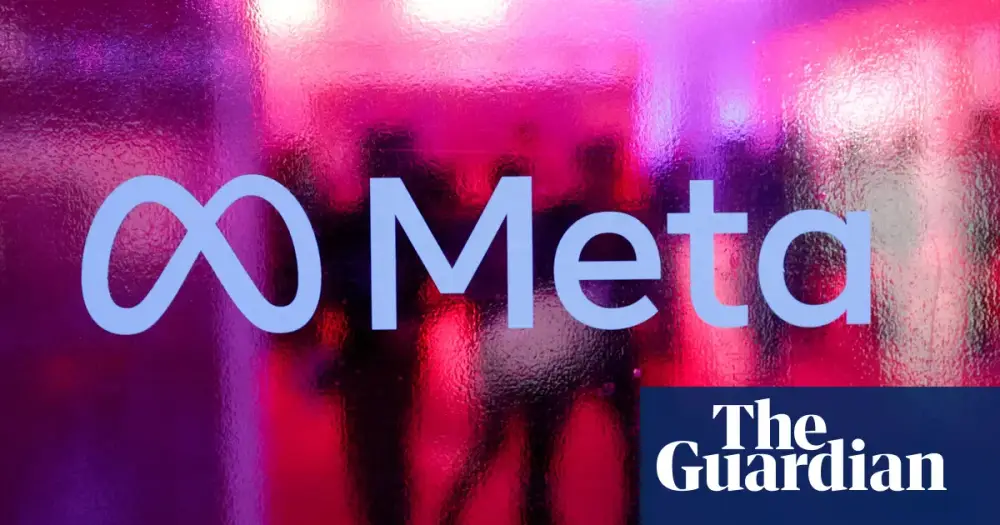
- Theo các bản ghi âm cuộc họp nội bộ được chia sẻ với tờ New York Times, vào năm ngoái, nhân viên của Meta đã thảo luận về việc mua lại nhà xuất bản Simon & Schuster để lấy sách huấn luyện các công cụ trí tuệ nhân tạo (AI) của công ty.
- Từ tháng 3 đến tháng 4 năm 2023, các nhà quản lý, luật sư và kỹ sư của Meta đã thường xuyên thảo luận về việc thu thập thêm dữ liệu để huấn luyện mô hình AI.
- Việc mua lại một nhà xuất bản lớn như Simon & Schuster sẽ giúp Meta có được một lượng lớn dữ liệu văn bản từ sách để cải thiện hiệu suất của các công cụ AI.
- Các cuộc thảo luận cho thấy Meta đang tích cực tìm kiếm các nguồn dữ liệu mới để đáp ứng nhu cầu ngày càng tăng về huấn luyện AI.
- Việc sử dụng dữ liệu từ sách xuất bản để huấn luyện AI đặt ra câu hỏi về quyền sở hữu trí tuệ và sự đồng ý của các tác giả.
📌 Các cuộc thảo luận nội bộ của Meta trong năm 2023 cho thấy công ty đã cân nhắc mua lại nhà xuất bản Simon & Schuster để lấy dữ liệu sách huấn luyện AI. Điều này cho thấy nhu cầu ngày càng tăng về dữ liệu huấn luyện và sự sẵn sàng của Meta trong việc mua lại các nguồn tài nguyên lớn để cải thiện công nghệ AI của mình.
Citations:
[1] https://www.theguardian.com/books/2024/apr/09/meta-discussed-buying-publisher-simon-schuster-to-train-ai

- Dân biểu Adam Schiff (Đảng Dân chủ, California) đã giới thiệu dự luật mới tại Hạ viện Hoa Kỳ vào thứ Ba (9/4), nếu được thông qua, sẽ yêu cầu các công ty AI phải công bố danh sách các tác phẩm có bản quyền được sử dụng để huấn luyện mô hình của họ, nếu không sẽ phải chịu hình phạt tài chính.
- Dự luật mang tên Generative AI Copyright Disclosure Act sẽ áp dụng cho cả các mô hình mới và hồi tố cho các hệ thống AI tạo sinh đã phát hành và sử dụng trước đó.
- Dự luật yêu cầu danh sách đầy đủ các tác phẩm có bản quyền trong tập dữ liệu huấn luyện của mô hình AI phải được nộp cho Cơ quan Bản quyền không muộn hơn 30 ngày trước khi mô hình được cung cấp cho người tiêu dùng. Điều này cũng được yêu cầu khi tập dữ liệu huấn luyện cho một mô hình hiện có được thay đổi đáng kể.
- Các hình phạt tài chính cho việc không tuân thủ sẽ được Cơ quan Bản quyền xác định theo từng trường hợp, dựa trên các yếu tố như lịch sử không tuân thủ và quy mô của công ty.
- Nhiều công ty AI lớn nhất thế giới đã công khai bảo vệ việc sử dụng nội dung có bản quyền mà không có sự đồng ý hoặc hiểu biết của tác giả, gọi đó là "sử dụng hợp lý", nhưng nhiều người trong ngành sáng tạo cho rằng đây là một hình thức vi phạm bản quyền trên diện rộng.
- Dự luật đã nhận được sự ủng hộ từ nhiều nhóm ngành công nghiệp âm nhạc, bao gồm Hiệp hội Công nghiệp Ghi âm Hoa Kỳ (RIAA), Hiệp hội Nhà xuất bản Âm nhạc Quốc gia (NMPA), ASCAP, Liên minh Hành động Âm nhạc Da đen (BMAC) và Chiến dịch Nghệ thuật Con người.
📌 Dự luật Generative AI Copyright Disclosure Act do nghị sĩ Adam Schiff đề xuất yêu cầu các công ty AI phải công bố danh sách các tác phẩm có bản quyền được sử dụng để huấn luyện mô hình của họ trong vòng 30 ngày trước khi ra mắt, nếu không sẽ phải chịu phạt. Dự luật nhận được sự ủng hộ từ nhiều nhóm ngành công nghiệp sáng tạo nhằm thúc đẩy sự minh bạch và bảo vệ quyền của các tác giả trong thời đại AI.
https://www.billboard.com/business/legal/federal-bill-ai-training-require-disclosure-songs-used-1235651089/

- OpenAI đang phải đối mặt với hơn chục vụ kiện và điều tra từ chính phủ kể từ khi nữ diễn viên hài Sarah Silverman khởi kiện công ty vì đánh cắp tác phẩm của cô để huấn luyện AI.
- Nhiều tác giả nổi tiếng và các hãng truyền thông lớn cáo buộc OpenAI vi phạm bản quyền khi sử dụng tác phẩm của họ để huấn luyện thuật toán. Tỷ phú Elon Musk kiện OpenAI vì cho rằng công ty đã đi chệch khỏi sứ mệnh phi lợi nhuận ban đầu.
- Các cơ quan chính phủ Mỹ và châu Âu đang điều tra xem OpenAI có vi phạm luật cạnh tranh, chứng khoán và bảo vệ người tiêu dùng hay không.
- OpenAI đã tuyển khoảng 24 luật sư nội bộ từ tháng 3/2023, đăng tuyển vị trí luật sư chống độc quyền với mức lương lên đến 300.000 USD, và thuê một số công ty luật hàng đầu Mỹ.
- OpenAI đang đàm phán thuê Chris Lehane, cựu Thư ký báo chí của chiến dịch tranh cử Tổng thống Al Gore. Công ty dự định nhấn mạnh vai trò của các công ty AI Mỹ trong việc đối trọng với Trung Quốc.
- Tổng cố vấn của OpenAI, Che Chang, cho rằng những thách thức pháp lý gia tăng là "tương xứng với tác động mà chúng tôi có đối với thế giới". Ông lạc quan rằng hướng dẫn từ các nhà hoạch định chính sách có thể giúp giải quyết một số câu hỏi pháp lý mà ngành công nghiệp đang phải đối mặt.
📌 OpenAI đang phải huy động nguồn lực pháp lý và chính trị đáng kể để đối phó với làn sóng kiện tụng và điều tra chỉ sau 18 tháng ra mắt ChatGPT. OpenAI đã tuyển khoảng 24 luật sư nội bộ từ tháng 3/2023, đăng tuyển vị trí luật sư chống độc quyền với mức lương lên đến 300.000 USD, và thuê một số công ty luật hàng đầu Mỹ. OpenAI đang đàm phán thuê Chris Lehane, cựu Thư ký báo chí của chiến dịch tranh cử Tổng thống Al Gore.
Citations:
[1] https://ppl-ai-file-upload.s3.amazonaws.com/web/direct-files/131695/de29157a-ccdb-4d7a-ba7c-41db1a045a8e/paste.txt
https://www.washingtonpost.com/technology/2024/04/09/openai-lawsuit-regulation-lawyers/
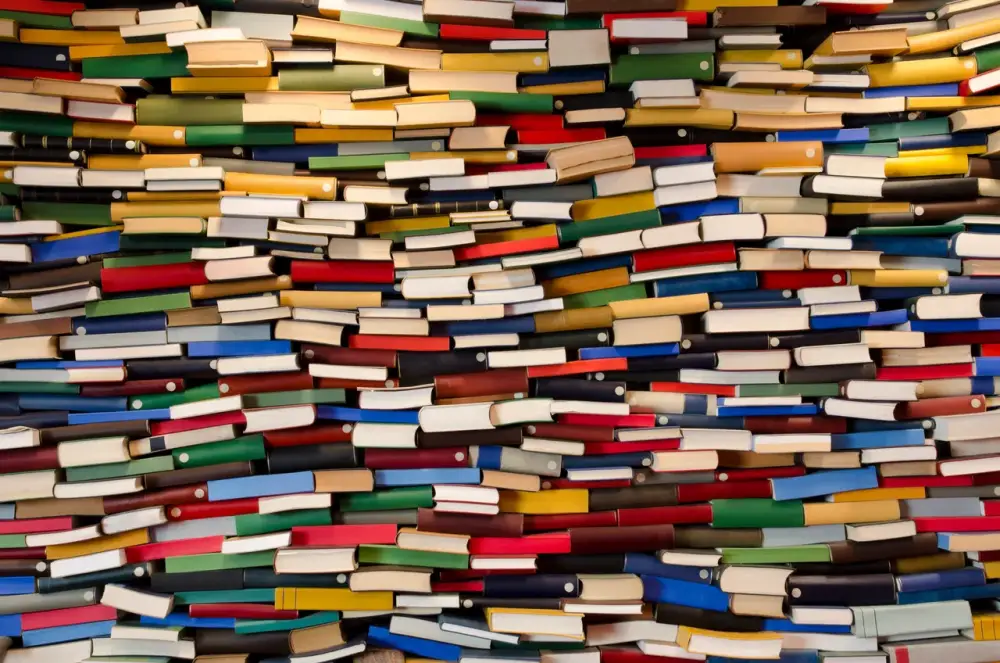
- Google Books và Google Scholar, vốn cho phép tìm kiếm sách và tài liệu học thuật toàn diện nhất, đang bắt đầu lập chỉ mục các cuốn sách chất lượng thấp được tạo ra hoàn toàn bởi AI như ChatGPT.
- Xu hướng đáng lo ngại này được phát hiện đầu tiên bởi 404 Media. Họ tìm thấy nhiều cuốn sách chứa đoạn "As of my last knowledge update" - một cụm từ ChatGPT hay dùng khi đề cập đến giới hạn thông tin nó có.
- Tìm kiếm cụm từ trên trên Google Books cho ra hàng trang kết quả sách có nội dung được tạo bởi ChatGPT. Một "tác giả" có tới 50 cuốn sách như vậy, đều xuất bản năm 2023, dài 50-100 trang.
- Trên Google Scholar, tìm kiếm cụm từ trên cũng cho 19 trang kết quả các bài nghiên cứu về đủ chủ đề từ trẻ em có nguy cơ, tiểu đường, tự kỷ tới COVID-19.
- Nội dung do AI tạo ra tràn lan trên mạng không có gì mới. Tuy nhiên, việc chúng xuất hiện cùng các tác phẩm của con người trên các nguồn đáng tin cậy như Google Books và Google Scholar là điều đáng lo ngại.
📌 Google Books và Google Scholar đang bị tràn ngập bởi hàng trăm cuốn sách và bài nghiên cứu chất lượng thấp được tạo ra bởi AI. Điều này gây khó khăn cho việc tìm kiếm thông tin đáng tin cậy. Google cho biết sẽ tiếp tục đánh giá cách tiếp cận vấn đề này, nhưng chưa đề cập tới việc gỡ bỏ các kết quả đó.
https://www.zdnet.com/article/google-books-and-scholar-users-beware-ai-generated-nonsense-is-flooding-search-results/
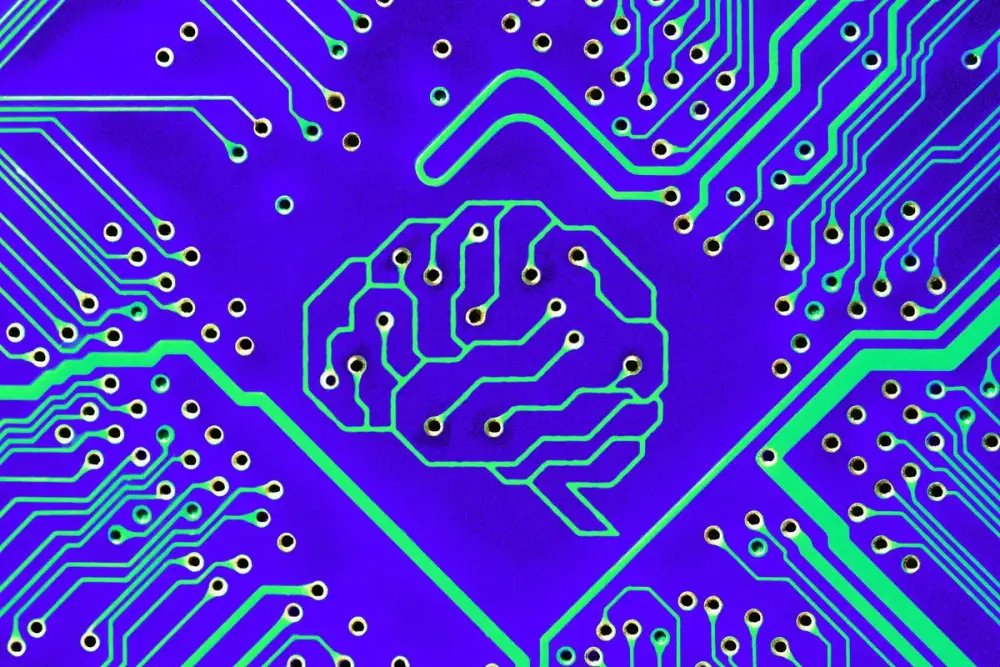
- OpenAI đã phát triển mô hình chuyển thoại âm thanh Whisper để vượt qua rào cản thiếu dữ liệu huấn luyện chất lượng cao, chép lại hơn một triệu giờ video YouTube để huấn luyện GPT-4.
- Công ty biết rằng việc này có thể gây tranh cãi về mặt pháp lý nhưng tin rằng đó là sử dụng hợp lý. Greg Brockman, chủ tịch OpenAI, đã tham gia trực tiếp vào việc thu thập video.
- OpenAI tuyên bố họ tạo ra các bộ dữ liệu "độc đáo" cho từng mô hình để giúp chúng hiểu thế giới và duy trì khả năng cạnh tranh nghiên cứu toàn cầu, sử dụng nhiều nguồn bao gồm dữ liệu công khai và hợp tác để có dữ liệu không công khai.
- Google cho biết cả tệp robots.txt và Điều khoản dịch vụ của họ đều cấm việc cào hoặc tải xuống nội dung YouTube trái phép. Họ áp dụng các biện pháp kỹ thuật và pháp lý để ngăn chặn việc sử dụng trái phép khi có cơ sở pháp lý hoặc kỹ thuật rõ ràng.
- Google cũng đã thu thập bản ghi âm từ YouTube để huấn luyện các mô hình của mình, phù hợp với thỏa thuận với các nhà sáng tạo YouTube.
- Meta cũng gặp phải giới hạn về tính sẵn có của dữ liệu huấn luyện tốt. Nhóm AI của họ đã thảo luận về việc sử dụng các tác phẩm có bản quyền mà không được phép trong khi cố gắng bắt kịp OpenAI.
- Các công ty AI đang phải đối mặt với tình trạng dữ liệu huấn luyện cạn kiệt nhanh chóng. Dự kiến đến năm 2028, họ có thể vượt qua lượng nội dung mới.
- Các giải pháp tiềm năng bao gồm huấn luyện mô hình trên dữ liệu "tổng hợp" do chính mô hình tạo ra hoặc "học theo chương trình", nhưng không có cách tiếp cận nào được chứng minh.
📌 OpenAI, Google và Meta đang vật lộn với tình trạng thiếu hụt dữ liệu huấn luyện chất lượng cao cho các mô hình AI của họ. OpenAI đã phát triển mô hình chuyển thoại âm thanh Whisper để vượt qua rào cản thiếu dữ liệu huấn luyện chất lượng cao, chép lại hơn một triệu giờ video YouTube để huấn luyện GPT-4. Google cho biết cả tệp robots.txt và Điều khoản dịch vụ của họ đều cấm việc cào hoặc tải xuống nội dung YouTube trái phép.
https://www.theverge.com/2024/4/6/24122915/openai-youtube-transcripts-gpt-4-training-data-google

- Neal Mohan, CEO của YouTube, tuyên bố rằng việc OpenAI sử dụng video trên nền tảng của họ để huấn luyện công cụ tạo video từ văn bản Sora là không thể chấp nhận được.
- Mohan cho rằng các nhà sáng tạo khi tải video lên YouTube kỳ vọng điều khoản dịch vụ sẽ được tuân thủ, trong đó không cho phép tải xuống và sử dụng nội dung.
- Tác giả bài viết chỉ ra sự mâu thuẫn khi Google sử dụng dữ liệu từ báo chí để huấn luyện công cụ tìm kiếm và AI của mình, trong khi cảnh báo OpenAI không được làm điều tương tự với dữ liệu YouTube.
- OpenAI bị cho là đã xây dựng các hệ thống của mình dựa trên sáng tạo và tài năng của những người khác mà không hề hay biết.
- Video do AI tạo ra như của Sora không cần sự tham gia của con người, khác với phim hoạt hình của Pixar vốn được các nghệ sĩ đưa yếu tố nhân văn vào.
- Tác giả cho rằng OpenAI đang cố gắng đẩy giới hạn công nghệ để tìm cách thay thế con người.
📌 OpenAI bị cáo buộc sử dụng trái phép video YouTube để huấn luyện AI tạo video Sora. CEO YouTube Neal Mohan khẳng định đây là vi phạm nghiêm trọng điều khoản dịch vụ. Bài viết cũng chỉ ra sự mâu thuẫn khi Google dùng dữ liệu của báo chí cho AI của mình. Tác giả cho rằng OpenAI đang cố gắng thay thế con người bằng cách đẩy giới hạn công nghệ.
https://bgr.com/tech/youtube-ceo-to-openai-dont-you-dare-use-our-videos-to-train-sora/
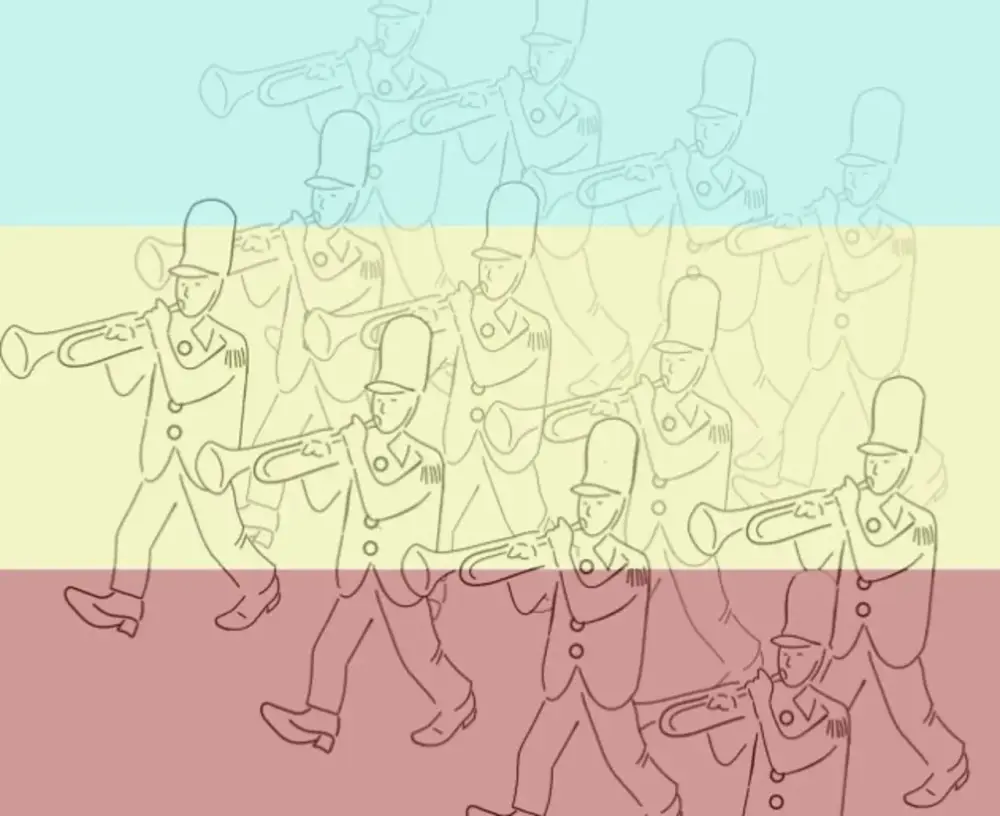
- Nghiên cứu mới của các học giả từ phòng thí nghiệm AI của Meta, MIT, Cisco Systems và công ty khởi nghiệp Zyphra cho thấy có thể loại bỏ tới một nửa các lớp sâu nhất của mô hình ngôn ngữ Llama 2 mà chỉ làm giảm hiệu suất rất ít.
- Việc loại bỏ các lớp này giúp giảm 3/4 lượng bộ nhớ cần thiết, cho phép chạy mô hình trên một GPU thông dụng thay vì cần cả giá đỡ máy chủ lớn.
- Các tác giả đã thử nghiệm "cắt tỉa" dần các lớp của mạng nơ-ron, bắt đầu từ các lớp sâu nhất, và nhận thấy có thể loại bỏ tới khoảng một nửa số lớp trước khi hiệu suất sụt giảm đáng kể.
- Kết quả cho thấy phần lớn kiến thức thiết yếu để đạt điểm số cao nhất không nằm ở các lớp sâu nhất. Tuy nhiên, việc dễ dàng cắt giảm nhiều lớp như vậy cũng gợi ý rằng các mạng nơ-ron lớn có thể chứa nhiều phần chưa được tận dụng triệt để.
- Với Llama-2-70B, việc giảm độ chính xác số (quantization 4-bit) và cắt giảm 50% số lớp giúp mô hình chỉ cần 17.5 GB bộ nhớ và 1.5 × 1010 phép tính dấu phẩy động mỗi token, cho phép huấn luyện và chạy mô hình hiệu quả trên GPU cấp tiêu dùng mà chỉ đánh đổi hiệu suất rất nhỏ.
📌 Nghiên cứu của Meta cho thấy có thể cắt giảm tới 50% số lớp của mô hình Llama 2, tiết kiệm 75% bộ nhớ, mà vẫn giữ được hiệu suất tương đương. Kết quả mở ra tiềm năng tạo ra các mô hình AI gọn nhẹ, hiệu quả hơn, nhưng cũng gợi ý rằng các mạng nơ-ron lớn hiện tại có thể chứa nhiều phần dư thừa chưa được khai thác hết.
https://www.zdnet.com/article/metas-pruning-of-llama-2-model-shows-path-to-slimmer-ai/

- Common Corpus, sáng kiến do công ty khởi nghiệp Pháp Pleias điều phối, đã công bố bộ dữ liệu công khai lớn nhất để huấn luyện các mô hình ngôn ngữ lớn (LLM).
- Bộ dữ liệu chứa 180 tỷ từ tiếng Anh, 110 tỷ từ tiếng Pháp, 30 tỷ từ tiếng Đức và hàng chục tỷ từ trong các ngôn ngữ châu Âu khác như tiếng Tây Ban Nha, Hà Lan và Ý.
- Sáng kiến này chứng minh rằng có thể tạo ra AI mà không cần sử dụng tài liệu có bản quyền, trái với tuyên bố trước đó của OpenAI.
- Việc này đặc biệt quan trọng trong bối cảnh các vụ kiện liên quan đến vấn đề bản quyền gia tăng, như vụ kiện của New York Times đối với OpenAI và Microsoft.
- Theo đồng sáng lập Pleias, Pierre-Carl Langlais, Common Corpus sẽ tạo ra sự cạnh tranh và hợp tác trong lĩnh vực AI, đồng thời giảm giá trị của dữ liệu có bản quyền.
- Tuy nhiên, do chỉ sử dụng tài liệu không có bản quyền (70 năm sau khi tác giả qua đời), bộ dữ liệu có hạn chế về tính cập nhật của ngôn ngữ.
- Để cải thiện điều này, Langlais cho rằng có thể sử dụng dữ liệu hành chính mở, phong trào khoa học mở và dữ liệu tổng hợp.
- Mục đích của Common Corpus là không ngừng cải thiện và đa dạng hóa bộ dữ liệu, với hy vọng trong tương lai sẽ bao gồm nhiều ngôn ngữ châu Âu hơn nữa.
📌 Common Corpus, sáng kiến do Pleias dẫn đầu, đã chứng minh rằng có thể huấn luyện AI mà không cần dữ liệu có bản quyền với bộ dữ liệu mở đa ngôn ngữ lớn nhất từ trước đến nay, bao gồm 180 tỷ từ tiếng Anh và hàng trăm tỷ từ trong các ngôn ngữ châu Âu khác. Điều này mở ra cơ hội cạnh tranh và hợp tác trong lĩnh vực AI, đồng thời giảm sự phụ thuộc vào dữ liệu có bản quyền.
https://www.euronews.com/next/2024/04/02/this-french-start-up-just-proved-openai-wrong-it-claims-you-can-train-ai-on-non-copyrighte

- Cơ quan cạnh tranh Pháp (Autorité de la Concurrence) đã phạt Google 250 triệu euro (khoảng 270 triệu USD) vì vi phạm các cam kết trước đó với các nhà xuất bản tin tức.
- Điểm đáng chú ý là Google đã sử dụng nội dung của các nhà xuất bản để huấn luyện mô hình AI tạo sinh Bard/Gemini mà không thông báo cho họ.
- Vào năm 2019, EU đã mở rộng quyền bảo hộ bản quyền cho các tiêu đề và đoạn trích tin tức. Google ban đầu tìm cách né tránh luật bằng cách tắt Google News ở Pháp, nhưng đã bị cơ quan cạnh tranh can thiệp.
- Năm 2021, Google bị phạt 592 triệu USD vì vi phạm nghiêm trọng trong đàm phán với các nhà xuất bản và cơ quan tin tức địa phương.
- Google đã ký thỏa thuận bản quyền với hàng trăm nhà xuất bản ở Pháp, vì vậy hoạt động kinh doanh của họ trong lĩnh vực này bị kiểm soát chặt chẽ.
- Cơ quan cạnh tranh nhận thấy Google đã sử dụng nội dung từ các nhà xuất bản và cơ quan báo chí để huấn luyện chatbot AI Bard (nay gọi là Gemini) mà không thông báo cho chủ sở hữu bản quyền.
- Google lập luận rằng Điều 4 của Chỉ thị Bản quyền EU cho phép sử dụng nội dung web để cải thiện các sản phẩm mới như AI tạo sinh. Tuy nhiên, cơ quan cạnh tranh cho rằng vấn đề này vẫn chưa được xác định rõ ràng.
- Google cũng không cung cấp giải pháp kỹ thuật cho các nhà xuất bản chọn không tham gia huấn luyện Bard mà không ảnh hưởng đến việc hiển thị nội dung của họ trên các dịch vụ khác của Google cho đến ít nhất ngày 28/9/2023.
- Cơ quan cạnh tranh cũng phát hiện Google không cung cấp đầy đủ thông tin cần thiết cho các nhà xuất bản để đảm bảo thương lượng công bằng về tiền bản quyền, áp dụng ngưỡng tối thiểu gây phân biệt đối xử và không tuân thủ các cam kết cập nhật hợp đồng tiền bản quyền.
📌 Cơ quan cạnh tranh Pháp phạt Google 270 triệu USD vì vi phạm cam kết với các nhà xuất bản tin tức, đặc biệt là sử dụng nội dung của họ để huấn luyện AI tạo sinh Bard/Gemini mà không thông báo. Mặc dù Google cho rằng luật bản quyền EU cho phép điều này, cơ quan lại cho rằng vấn đề chưa rõ ràng. Google cũng mắc nhiều lỗi khác trong đàm phán bản quyền với các nhà xuất bản.
Citations:
[1]https://techcrunch.com/2024/03/20/google-hit-with-270m-fine-in-france-as-authority-finds-news-publishers-data-was-used-for-gemini/

- Midjourney thay đổi nhỏ trong điều khoản dịch vụ liên quan đến chính sách tranh chấp sở hữu trí tuệ, cho thấy sự tự tin của công ty rằng các nhà cung cấp AI sẽ chiến thắng trong các trận chiến pháp lý với các nhà sáng tạo.
- Các mô hình AI tạo sinh được huấn luyện trên một lượng lớn dữ liệu, thường được lấy từ các trang web và kho lưu trữ công khai. Các nhà cung cấp khẳng định rằng việc sử dụng hợp lý bảo vệ họ, nhưng không phải tất cả các nhà sáng tạo đều đồng ý.
- Midjourney đã khá táo bạo trong việc sử dụng các tác phẩm có bản quyền, từng duy trì danh sách hàng nghìn nghệ sĩ mà tác phẩm của họ đã hoặc sẽ được sử dụng để huấn luyện mô hình.
- Anthropic ra mắt dòng mô hình mới Claude 3, tuyên bố ngang tầm với GPT-4 của OpenAI. Tuy nhiên, mô hình vẫn còn thiếu sót ở một số lĩnh vực như sự kiện hiện tại.
- OpenAI tuyên bố sẽ bác bỏ tất cả các cáo buộc của Elon Musk trong vụ kiện gần đây, và cho rằng tỷ phú này không thực sự có nhiều tác động đến sự phát triển và thành công của OpenAI.
- Amazon ra mắt chatbot Rufus được hỗ trợ bởi AI trong ứng dụng Amazon Shopping, nhưng gây thất vọng do thiếu các tính năng hữu ích.
📌 Tuần qua chứng kiến nhiều diễn biến đáng chú ý trong lĩnh vực AI, từ việc Midjourney thay đổi chính sách bản quyền một cách táo bạo, Anthropic ra mắt dòng mô hình Claude 3 đầy tham vọng, cho đến cuộc chiến pháp lý giữa OpenAI và Elon Musk. Bên cạnh đó, các nghiên cứu mới cũng cho thấy tiềm năng và thách thức của AI trong việc dự đoán cấu trúc phân tử, phát hiện biến thể COVID-19, và phân tích dữ liệu vệ tinh.
Citations:
[1] https://techcrunch.com/2024/03/16/this-week-in-ai-midjourney-bets-it-can-beat-the-copyright-police/

• Nvidia bị ba tác giả kiện vì sử dụng tác phẩm của họ mà không xin phép để huấn luyện nền tảng AI NeMo, bao gồm khoảng 196,640 cuốn sách.
• Các tác giả đang tìm kiếm bồi thường cho những người ở Hoa Kỳ có tác phẩm giúp huấn luyện mô hình ngôn ngữ lớn của NeMo trong ba năm qua.
• Tác phẩm bị ảnh hưởng bao gồm tiểu thuyết "Ghost Walk" của Brian Keene (2008), "Like a Love Story" của Abdi Nazemian (2019), và novella "Last Night at the Lobster" của Stewart O'Nan (2007).
• Nvidia từ chối bình luận về vụ kiện. Luật sư của các tác giả không ngay lập tức phản hồi yêu cầu bình luận.
• Vụ kiện đưa Nvidia vào hàng ngũ các công ty đối mặt với kiện tụng liên quan đến AI tạo sinh, bao gồm cả OpenAI và đối tác Microsoft.
• Giá cổ phiếu của Nvidia, có trụ sở tại Santa Clara, California, đã tăng gần 600% kể từ cuối năm 2022, đưa giá trị thị trường của Nvidia lên gần 2.2 nghìn tỷ USD.
• Vụ kiện được ghi nhận tại Tòa án Quận Bắc California, Mỹ, số 24-01454.
📌 Nvidia đang đối mặt với một vụ kiện quan trọng từ ba tác giả về việc sử dụng trái phép tác phẩm có bản quyền để huấn luyện nền tảng AI NeMo, điều này không chỉ làm dấy lên mối quan tâm về quyền sở hữu trí tuệ trong lĩnh vực AI mà còn phản ánh sự phát triển mạnh mẽ và tiềm năng pháp lý liên quan đến công nghệ AI tạo sinh.
https://www.reuters.com/technology/nvidia-is-sued-by-authors-over-ai-use-copyrighted-works-2024-03-10/

- PSMC, nhà sản xuất chip hợp đồng lớn thứ 6 thế giới của Đài Loan, sẽ đầu tư 800 tỷ yên (5,3 tỷ USD) xây dựng nhà máy tại Nhật Bản, dự kiến sản xuất giai đoạn 1 vào năm 2027.
- Joe Wu, trưởng đại diện PSMC tại Nhật Bản, cho biết tuyển dụng kỹ sư chip là thách thức khó khăn nhất hiện nay do sự gia tăng đầu tư của các hãng chip toàn cầu vào Nhật Bản.
- PSMC sẽ cử hơn 200 kỹ sư từ Đài Loan sang Nhật và đào tạo các kỹ sư trẻ Nhật Bản tại Đài Loan trong 3-5 tháng để nhanh chóng tập hợp đội ngũ hỗ trợ nhà máy mới.
- Wu đề xuất thành lập trường hoặc khóa học do ngành công nghiệp chip, trường học và cơ quan chính phủ cùng vận hành để đào tạo sinh viên trẻ về sản xuất bán dẫn.
- PSMC cũng tìm kiếm cơ hội đào tạo kỹ sư thông qua hợp tác với các trường đại học và tổ chức xung quanh tỉnh Miyagi, nơi đặt nhà máy mới.
- Ngoài ra, tuyển dụng kỹ sư từ Ấn Độ hoặc Mỹ cũng là phương án khả thi nếu không đủ kỹ sư tại Nhật Bản và Đài Loan.
📌 PSMC đang đối mặt với thách thức lớn về thiếu hụt kỹ sư chip khi xây dựng nhà máy 5,3 tỷ USD tại Nhật Bản. Công ty đưa ra nhiều giải pháp như cử kỹ sư từ Đài Loan, đào tạo kỹ sư trẻ Nhật Bản, thành lập trường đào tạo chung và tuyển dụng từ nước ngoài để đáp ứng nhu cầu nhân lực cho tham vọng tái thiết ngành công nghiệp chip của Nhật Bản.
https://asia.nikkei.com/Business/Tech/Semiconductors/Taiwan-s-PSMC-says-chip-engineer-shortage-top-challenge-in-Japan
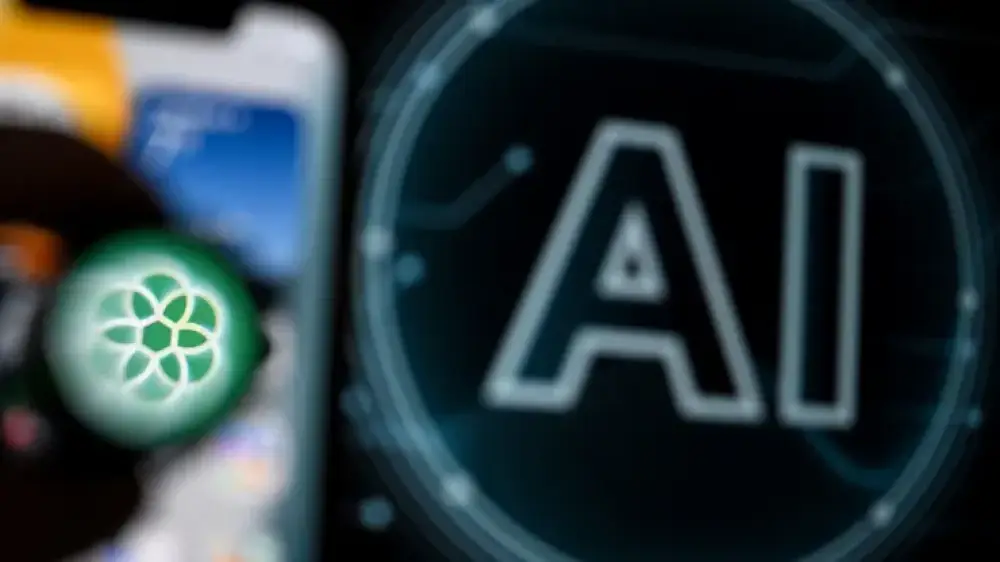
- Patronus AI, công ty do cựu nghiên cứu viên Meta thành lập, chuyên đánh giá và kiểm thử cho các mô hình ngôn ngữ lớn, công nghệ đằng sau các sản phẩm AI tạo sinh.
- Công bố công cụ mới CopyrightCatcher và kết quả kiểm tra đối kháng, cho thấy mức độ vi phạm bản quyền của bốn mô hình AI hàng đầu khi trả lời các truy vấn của người dùng.
- Các mô hình được kiểm tra bao gồm GPT-4 của OpenAI, Claude 2 của Anthropic, Llama 2 của Meta và Mixtral của Mistral AI.
- Rebecca Qian, đồng sáng lập và CTO của Patronus AI, cho biết họ tìm thấy nội dung vi phạm bản quyền trên tất cả các mô hình được đánh giá.
- GPT-4 của OpenAI sản xuất nội dung vi phạm bản quyền trên 44% các lời nhắc được xây dựng, tỷ lệ cao nhất trong số các mô hình được kiểm tra.
- Các nhà nghiên cứu sử dụng sách được bảo vệ bản quyền ở Mỹ, chọn từ trang web Goodreads và thiết kế 100 lời nhắc khác nhau.
- Claude 2 của Anthropic chỉ sử dụng nội dung vi phạm bản quyền 16% thời gian khi được yêu cầu hoàn thành văn bản của một cuốn sách.
- Mixtral hoàn thành đoạn văn đầu tiên của sách 38% thời gian, nhưng chỉ hoàn thành các phần văn bản lớn hơn 6% thời gian.
- Llama 2 của Meta phản hồi với nội dung vi phạm bản quyền trên 10% các lời nhắc.
📌 Nghiên cứu của Patronus AI cho thấy tất cả các mô hình AI hàng đầu đều sản xuất nội dung vi phạm bản quyền, với GPT-4 của OpenAI có tỷ lệ vi phạm cao nhất ở 44%. Các thử nghiệm cho thấy sự khác biệt đáng kể trong cách các mô hình xử lý yêu cầu liên quan đến nội dung bản quyền, từ việc từ chối cung cấp đến việc sản xuất nội dung vi phạm. Cuộc chiến giữa OpenAI và các nhà xuất bản, tác giả, nghệ sĩ về việc sử dụng dữ liệu bản quyền cho dữ liệu đào tạo AI đang nóng lên, đặc biệt là với vụ kiện của The New York Times chống lại OpenAI và Microsoft.
https://www.cnbc.com/2024/03/06/gpt-4-researchers-tested-leading-ai-models-for-copyright-infringement.html
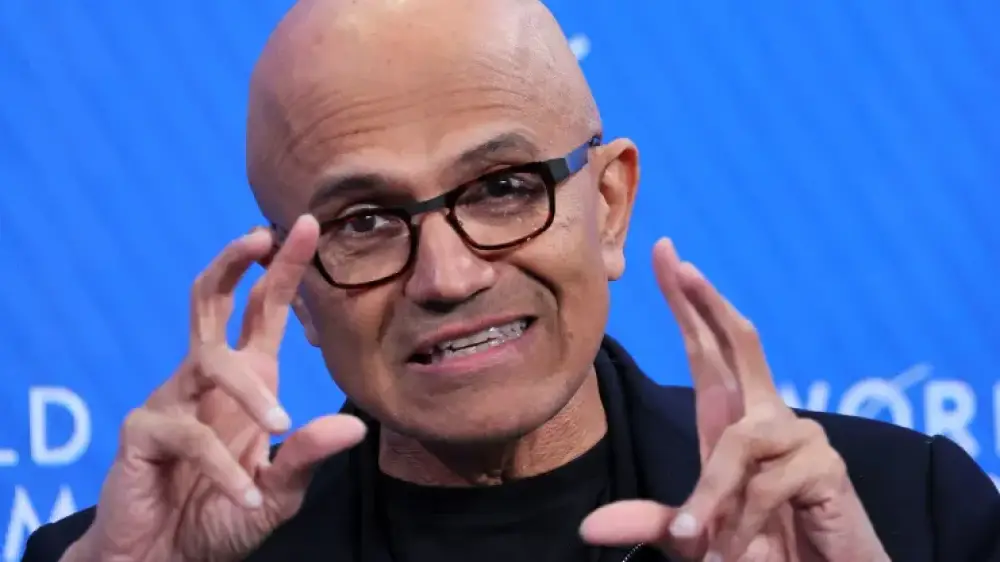
- Microsoft hỗ trợ OpenAI chống lại cáo buộc vi phạm bản quyền từ The New York Times, yêu cầu bồi thường hàng tỷ đô la.
- Microsoft cáo buộc The New York Times đưa ra cáo buộc không có cơ sở, cho rằng việc sử dụng công nghệ của OpenAI làm tổn hại đến kinh doanh của họ.
- Trong động thái mới nhất, Microsoft so sánh vụ kiện với sự phản đối của Hollywood đối với máy VCR vào những năm 1970.
- OpenAI đã yêu cầu thẩm phán bác bỏ một phần của vụ kiện, cáo buộc The New York Times "trả tiền cho ai đó để hack sản phẩm của OpenAI" nhằm tạo ra bằng chứng vi phạm bản quyền.
- OpenAI tuyên bố rằng The New York Times đã sử dụng "những lời nhắc lừa đảo" vi phạm điều khoản sử dụng của OpenAI để tạo ra kết quả bất thường sau "hàng chục nghìn lần thử".
- CEO của OpenAI, Sam Altman, bày tỏ sự ngạc nhiên trước vụ kiện của The New York Times, khẳng định mô hình AI của họ không cần sử dụng dữ liệu của nhà xuất bản.
📌 Microsoft đang cố gắng bảo vệ OpenAI trong vụ kiện với The New York Times, phản đối cáo buộc vi phạm bản quyền và so sánh tình hình với sự phản kháng của Hollywood đối với máy VCR. Vụ kiện có thể ảnh hưởng lớn đến tương lai của AI tạo sinh, với OpenAI khẳng định họ không cần dữ liệu của The New York Times để huấn luyện mô hình của mình.
Citations:
[1] https://www.cnbc.com/2024/03/05/microsoft-seeks-dismissal-parts-of-new-york-times-suit-against-openai.html

- Báo cáo từ Copyleaks, một công ty chuyên về phát hiện đạo văn, cho thấy 60% kết quả từ GPT-3.5 của OpenAI chứa một số hình thức đạo văn.
- Copyleaks sử dụng một phương pháp đánh giá độc quyền, xem xét văn bản giống hệt, những thay đổi nhỏ, việc diễn giải lại, và nhiều yếu tố khác để gán một "điểm tương đồng".
- GPT-3.5 đã thể hiện 45.7% văn bản giống hệt, 27.4% thay đổi nhỏ, và 46.5% văn bản được diễn giải lại. Điểm số 0% ngụ ý sự nguyên bản hoàn toàn, trong khi 100% cho thấy không có nội dung gốc.
- Copyleaks đã thử nghiệm GPT-3.5 với khoảng một nghìn đầu ra, mỗi đầu ra khoảng 400 từ, trên 26 chủ đề. Kết quả có điểm tương đồng cao nhất thuộc về khoa học máy tính (100%), tiếp theo là vật lý (92%) và tâm lý học (88%). Ngược lại, kịch (0.9%), nhân văn (2.8%), và ngôn ngữ Anh (5.4%) ghi nhận điểm tương đồng thấp nhất.
- OpenAI đã phản hồi về vấn đề này, cho biết các mô hình của họ được thiết kế và huấn luyện để học các khái niệm giúp giải quyết các vấn đề mới. Họ cũng có các biện pháp để hạn chế việc ghi nhớ không cố ý và điều khoản sử dụng của họ cấm việc sử dụng mô hình của họ để tái tạo nội dung một cách cố ý.
- Vấn đề đạo văn không chỉ dừng lại ở việc sao chép cả câu và đoạn văn. The New York Times đã kiện OpenAI với lý do hệ thống AI của OpenAI "sao chép quy mô lớn" vi phạm bản quyền. OpenAI đã phản hồi lại vụ kiện, cho rằng việc "tái tạo" là một "lỗi hiếm" và cũng cáo buộc The New York Times "manipulate prompts".
📌 Báo cáo từ Copyleaks đã làm sáng tỏ một vấn đề lớn trong ngành công nghiệp AI: 60% kết quả từ GPT-3.5 của OpenAI chứa đạo văn. Điều này không chỉ làm dấy lên mối quan tâm về tính nguyên bản và đạo đức trong việc sử dụng AI mà còn làm nổi bật các thách thức pháp lý mà các công ty công nghệ phải đối mặt. Với các kết quả thử nghiệm cho thấy sự phụ thuộc lớn vào nội dung đã có sẵn, cùng với các vụ kiện pháp lý đang tiếp diễn, câu chuyện về AI và đạo văn còn nhiều diễn biến phức tạp.
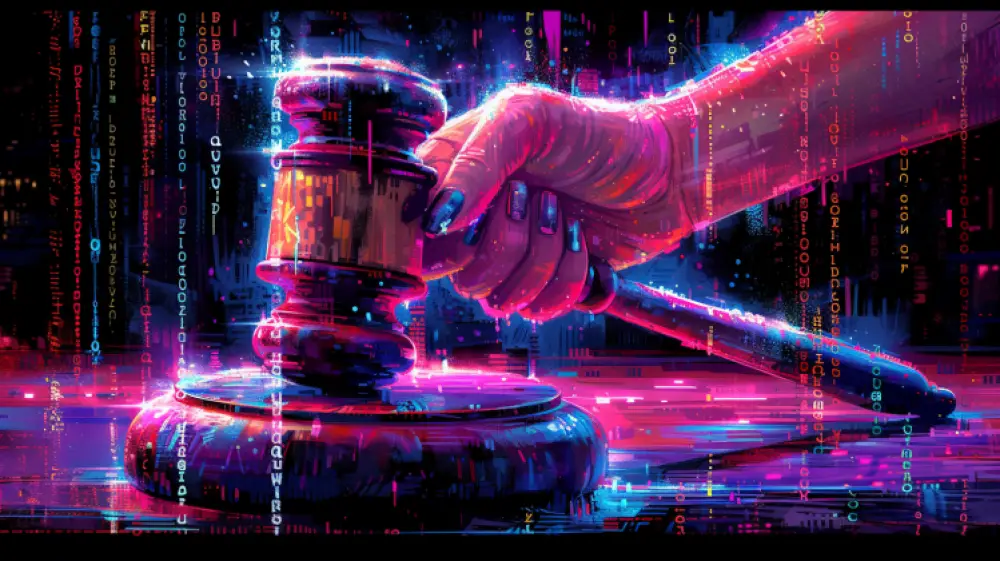
- Tòa án đã bác bỏ phần lớn vụ kiện vi phạm bản quyền của Sarah Silverman chống lại OpenAI, liên quan đến việc sao chép cuốn sách "The Bedwetter" năm 2010 của cô để huấn luyện mô hình AI.
- Vụ kiện do Sarah Silverman và các đồng đơn, bao gồm các tác giả Richard Kadrey và Christopher Golden, khởi kiện vào tháng 7 năm 2023, cáo buộc OpenAI vi phạm bản quyền bằng cách huấn luyện mô hình AI GPT-3.5 và GPT-4 trên các sách của họ mà không được phép.
- Luật sư của Silverman và các đồng đơn cũng cho rằng OpenAI đã vi phạm bản quyền bằng cách loại bỏ thông tin quản lý bản quyền khi sao chép sách cho quá trình huấn luyện AI, nhưng tòa án đã phán quyết rằng không có bằng chứng cho thấy OpenAI cố ý loại bỏ thông tin này hoặc có ý định che giấu hoặc thúc đẩy vi phạm.
- Thẩm phán Araceli Martínez-Olguín đã bác bỏ bốn trong số sáu cáo buộc trong vụ kiện, nhấn mạnh rằng các luật sư của Silverman và đồng đơn "không chứng minh được OpenAI đã thu lợi bất chính từ tác phẩm có bản quyền của nguyên đơn thông qua gian lận, sai lầm, ép buộc".
- Mặc dù vậy, vụ kiện vẫn chưa được giải quyết hoàn toàn và sẽ phụ thuộc vào cách thức luật sư của Silverman và các đồng đơn tiếp tục vụ kiện.
📌 Tòa án đã bác bỏ phần lớn các cáo buộc trong vụ kiện vi phạm bản quyền của Sarah Silverman chống lại OpenAI, đánh dấu một bước ngoặt quan trọng trong vụ kiện liên quan đến việc sử dụng dữ liệu sách bản quyền để huấn luyện mô hình AI. Quyết định này cho thấy sự phức tạp trong việc xác định trách nhiệm pháp lý khi AI sử dụng tác phẩm văn học. Mặc dù tòa án đã bác bỏ một số cáo buộc chính, vụ kiện vẫn chưa kết thúc và sẽ tiếp tục được theo dõi để xem liệu có thêm phát triển nào không, đặc biệt là liên quan đến cách thức công nghệ AI được huấn luyện và sử dụng dữ liệu có bản quyền.
Citations:
[1] https://venturebeat.com/ai/judge-dismisses-most-of-sarah-silvermans-copyright-infringement-lawsuit-against-openai/

- Apple Inc. đang tiến hành những bước đi mạnh mẽ trong lĩnh vực AI tạo sinh bằng cách thực hiện các thỏa thuận nhiều triệu đô la để bảo vệ nội dung tin tức.
- Công ty đang tập trung vào việc cung cấp nội dung chất lượng cao thông qua AI, nhằm cải thiện trải nghiệm người dùng và tăng cường khả năng cạnh tranh trong ngành công nghệ.
- Những thỏa thuận này cho thấy sự quan tâm lớn của Apple trong việc tích hợp công nghệ AI vào các sản phẩm và dịch vụ của mình.
- Apple không chỉ đầu tư vào công nghệ mà còn tập trung vào việc bảo vệ và cung cấp nội dung tin tức chất lượng, thông qua các thỏa thuận lớn với các đối tác nội dung.
📌 Apple Inc. đang làm nên bước ngoặt quan trọng trong ngành công nghệ thông qua việc đầu tư mạnh mẽ vào AI tạo sinh, nhằm cải thiện trải nghiệm người dùng và tăng cường khả năng cạnh tranh. Sự quan tâm này không chỉ thể hiện qua việc phát triển công nghệ mà còn qua việc bảo vệ và cung cấp nội dung tin tức chất lượng. Các thỏa thuận nhiều triệu đô la mà Apple đang thực hiện cho thấy cam kết của hãng trong việc tích hợp AI vào các sản phẩm và dịch vụ của mình, mở ra cơ hội mới trong lĩnh vực công nghệ thông tin và truyền thông.

- Vấn đề bản quyền và AI là một trong những mối quan tâm hàng đầu về sở hữu trí tuệ (IP) khi chúng ta bước vào năm 2024.
- Cơ quan Bản quyền Hoa Kỳ mới đây đã kết thúc việc yêu cầu ý kiến công chúng như một phần của "nghiên cứu về các vấn đề pháp lý và chính sách bản quyền đặt ra bởi hệ thống trí tuệ nhân tạo (AI)".
- Hơn 10,000 bình luận đã được gửi đến, với nhiều phản hồi từ các chuyên gia bản quyền hàng đầu trong lĩnh vực học thuật pháp lý, bao gồm Pamela Samuelson, Christopher Jon Sprigman và Matthew Sag.
- Các nhà xuất bản lớn như New York Times đã bày tỏ quan ngại về việc sử dụng tài liệu có bản quyền để "đào tạo" các hệ thống AI, coi đó là vi phạm bản quyền.
- OpenAI đã bày tỏ sự thông cảm đối với mối quan ngại của các nhà xuất bản và đã bắt đầu "hợp tác ban đầu" với các đối tác báo chí như Associated Press, Axel Springer và American Journalism Project.
- OpenAI cũng đã thương lượng quyền truy cập vào lưu trữ tin tức của Axel Springer, cho phép công ty sử dụng các bài báo mới trong ứng dụng như ChatGPT, với mức phí "dựa trên hiệu suất" hơn 10 triệu đô la mỗi năm.
- OpenAI cung cấp cho các nhà xuất bản lựa chọn "opt-out" ngăn cản các công cụ của OpenAI truy cập vào trang web của họ.
- Tuy nhiên, OpenAI vẫn không tránh khỏi việc bị đưa ra tòa để bảo vệ mình trước các yêu sách bản quyền từ các nhà xuất bản không hài lòng.
- Trường hợp nổi bật gần đây là OpenAI bị New York Times kiện, sau khi cuộc thương lượng về giấy phép sử dụng nội dung không đạt được thỏa thuận về giá cả.
- New York Times cho rằng việc OpenAI đào tạo ChatGPT không phải là sử dụng công bằng mà là vi phạm bản quyền.
📌 Các vụ kiện bản quyền chống lại OpenAI, bao gồm vụ kiện của New York Times, dù còn xa mới đi đến kết luận, nhưng chắc chắn sẽ tiếp tục nhận được sự chú ý lớn từ truyền thông và cộng đồng bản quyền. Những vụ kiện này không chỉ làm rõ ranh giới của luật bản quyền trước sự thay đổi nhanh chóng của công nghệ mà còn có thể tạo tiền lệ cho thế giới công nghệ AI trong tương lai. OpenAI có thể sẽ tiếp tục ký kết thỏa thuận riêng lẻ với các nhà xuất bản để sử dụng nội dung của họ, mặc dù vẫn khẳng định rằng họ không cần làm như vậy để tránh phơi nhiễm với vi phạm bản quyền.
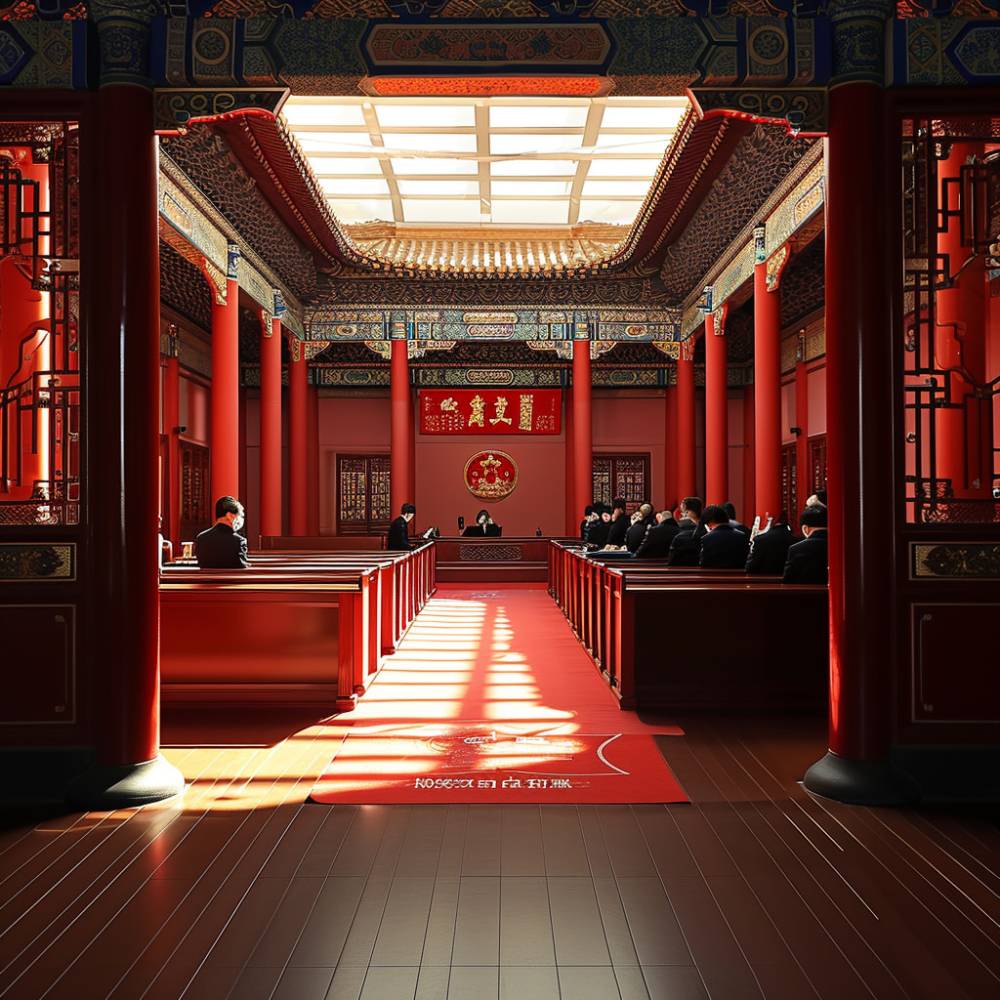
- Tòa án Bắc Kinh đã đưa ra quyết định có tính chất bước ngoặt khi công nhận bản quyền cho hình ảnh được tạo sinh bởi AI sau khi nhà sản xuất khởi kiện một blogger vì sử dụng hình ảnh không được phép.
- Người tạo ra hình ảnh, ông Li, đã sử dụng Stable Diffusion, một công cụ tạo sinh hình ảnh AI, để tạo ra tác phẩm. Blogger, bà Liu, đã sử dụng hình ảnh mà không xin phép, bao gồm cả việc loại bỏ thủy vân và thông tin định danh.
- Tòa án Internet Bắc Kinh đã ra lệnh cho bà Liu phải bồi thường $70 (500 CNY) và chi phí $7 (50 CNY) cho ông Li. Trọng tâm của vụ kiện là liệu bản quyền có thể được gán cho hình ảnh do AI tạo ra hay không.
- Thẩm phán Zhu Ge đã xác định rằng hình ảnh đáp ứng các tiêu chí vì nó thể hiện những đóng góp trí tuệ và lựa chọn thẩm mỹ của ông Li. Thẩm phán đã rõ ràng xác định ông Li là tác giả, chứ không phải hệ thống AI Stability AI tạo ra Stable Diffusion.
- Quyết định của tòa án nhấn mạnh vào sự đầu tư trí tuệ của ông Li trong việc lựa chọn từ ngữ gợi ý, sắp xếp các từ gợi ý, cài đặt thông số và lựa chọn hình ảnh dựa trên kỳ vọng.
- Mặc dù Tòa án Internet Bắc Kinh không phải là tòa án sở hữu trí tuệ cao nhất tại Trung Quốc, quyết định này vẫn có thể tạo ra tiền lệ cho các tranh chấp tương lai liên quan đến nội dung do AI tạo sinh và bản quyền, đánh dấu sự thừa nhận pháp lý đang tiến triển trong thời đại số.
📌 Tòa án Bắc Kinh đã đưa ra quyết định có tính chất bước ngoặt khi công nhận bản quyền cho hình ảnh được tạo sinh bởi AI sau khi nhà sản xuất khởi kiện một blogger vì sử dụng hình ảnh không được phép. Quyết định của Tòa án Bắc Kinh có thể ảnh hưởng rộng rãi đến cách thức các hệ thống pháp lý xử lý nội dung do AI tạo sinh và vấn đề bản quyền trong tương lai. Với sự tham gia trực tiếp và đầu tư trí tuệ của người sử dụng công cụ AI như trong trường hợp của ông Li, tác phẩm tạo sinh bởi AI có thể được bảo vệ bởi quyền tác giả, đánh dấu một bước chuyển mình quan trọng trong quan điểm trước đây về sự sáng tạo và quyền sở hữu trí tuệ.

- Fairly Trained là tổ chức phi lợi nhuận mới được thành lập để chứng nhận các công cụ AI tạo sinh đã được huấn luyện bằng dữ liệu có giấy phép.
- Tổ chức này do Ed Newton-Rex, cựu nhân viên của Stability AI, đồng sáng lập và dẫn dắt.
- Mục tiêu của Fairly Trained là hỗ trợ người tiêu dùng và doanh nghiệp muốn làm việc với các công ty AI tạo sinh huấn luyện dữ liệu có sự đồng ý của người tạo ra.
- Các công ty AI cổ điển thường huấn luyện mô hình bằng cách "scrape" dữ liệu từ web mà không xin phép trước, điều này dẫn đến sự phản đối từ cộng đồng sáng tạo.
- Fairly Trained cung cấp chứng nhận "Licensed Model (L)" cho các công ty AI, qua quá trình đánh giá và thu phí trượt dựa trên doanh thu hàng năm của công ty.
- Các mức phí chứng nhận dao động từ $150 cộng $500 hàng năm cho tới $500 cộng $6,000 hàng năm cho các công ty có doanh thu trên $10 triệu hàng năm.
📌 Fairly Trained ra đời nhằm tạo ra một hệ sinh thái AI tạo sinh đạo đức hơn, nơi mà quyền lợi của người sáng tạo được tôn trọng thông qua việc huấn luyện mô hình AI từ dữ liệu có giấy phép. Tổ chức này không chỉ thu hút sự chú ý từ cộng đồng sáng tạo mà còn từ các công ty AI mong muốn minh bạch và trách nhiệm với nguồn dữ liệu của họ. Fairly Trained đang đề xuất một mô hình mới trong việc xây dựng và sử dụng công nghệ AI, với hy vọng rằng việc chứng nhận sẽ khích lệ các doanh nghiệp theo đuổi các thực hành tốt hơn và tạo ra sự cân bằng giữa tiến bộ công nghệ và quyền của người tạo ra nội dung.

- Generative AI đang trở thành một phần quan trọng trong nhiều lĩnh vực kinh doanh, nhưng điều này cũng tạo ra nhiều rủi ro pháp lý mới.
- Các Giám đốc pháp lý (CLO) cần phải nhận thức được những rủi ro này để bảo vệ công ty của họ khỏi các nguy cơ tiềm ẩn.
- Một trong những vấn đề lớn nhất là vấn đề về quyền sở hữu trí tuệ, khi AI tạo ra nội dung có thể vi phạm bản quyền hoặc sáng tạo của người khác.
- Cần phải có sự rõ ràng trong việc sử dụng dữ liệu để huấn luyện AI, đặc biệt là khi dữ liệu đó có thể chứa thông tin nhạy cảm hoặc được bảo vệ.
- CLO cũng phải đối mặt với thách thức trong việc xác định trách nhiệm pháp lý khi AI tạo ra quyết định hoặc hành động gây hậu quả pháp lý.
- Quy định về AI đang phát triển và có thể thay đổi nhanh chóng, yêu cầu các CLO phải cập nhật liên tục với các tiêu chuẩn và quy định mới.
- Các doanh nghiệp cần phải phát triển các khung chính sách và quy trình để quản lý việc triển khai Generative AI một cách có trách nhiệm và tuân thủ pháp luật.
📌 Bài viết từ Diễn đàn kinh tế thế giới về rủi ro pháp lý liên quan đến AI tạo sinh đòi hỏi sự chú ý và hành động cấp bách từ các Giám đốc pháp lý (CLO). Trách nhiệm bao gồm việc đảm bảo tuân thủ quyền sở hữu trí tuệ, quản lý dữ liệu đào tạo AI cẩn thận, và nắm vững quy định pháp luật đang thay đổi. Để doanh nghiệp không chỉ tồn tại nhưng còn phát triển bền vững trong thời đại số, Giám đốc pháp lý cần phải xây dựng chính sách rõ ràng và quy trình quản lý AI tạo sinh một cách minh bạch và có trách nhiệm.

- Getty Images công bố ra mắt công cụ AI tạo sinh Generative AI by iStock tại CES 2024, nhằm biến ý tưởng sáng tạo thành nội dung ảnh hưởng lớn mà vẫn đảm bảo tính pháp lý và chi phí phải chăng.
- Công cụ này sử dụng Nvidia Picasso, một foundry tiên tiến cho mô hình AI tạo sinh trong thiết kế hình ảnh, được huấn luyện độc quyền trên nội dung chất lượng cao của Getty Images và thư viện sáng tạo.
- Generative AI by iStock không chỉ cung cấp nội dung hợp pháp, có thể sử dụng 100% mà còn đi kèm với bảo hiểm pháp lý lên đến $10,000 cho mỗi hình ảnh nếu có vấn đề phát sinh.
- Công cụ này được thiết kế để tránh tạo ra nội dung có bản quyền như sản phẩm, người, địa điểm nổi tiếng - một vấn đề mà nhiều công cụ AI khác như Midjourney hay DALL•E 3 gặp phải.
- Generative AI by iStock hợp nhất với thư viện ảnh iStock, được đào tạo từ hàng triệu hình ảnh, minh họa và video có bản quyền, giảm nguy cơ vi phạm bản quyền.
- Công cụ này mở rộng khả năng cho khách hàng tìm kiếm hình ảnh lý tưởng cho mọi nhu cầu từ mạng xã hội, blog, quảng cáo trực tuyến, tiếp thị in ấn đến bản tin.
- Generative AI by iStock cung cấp API để tích hợp vào các ứng dụng sáng tạo và plugin, cho phép người dùng chỉnh sửa hình ảnh theo nhu cầu.
- Sản phẩm này hiện có sẵn bằng 75 ngôn ngữ cho tất cả khách hàng của iStock.
📌 Getty Images đem đến thị trường công cụ Generative AI by iStock, với sự hỗ trợ từ Nvidia Picasso, nhằm giải quyết vấn đề vi phạm bản quyền trong lĩnh vực hình ảnh sáng tạo. Công cụ này không chỉ cung cấp nội dung hợp pháp 100% mà còn bảo hiểm pháp lý lên đến 10,000 USD cho mỗi hình ảnh, đặt ra một tiêu chuẩn mới cho ngành công nghiệp. Với khả năng tích hợp API, Generative AI by iStock mở ra cánh cửa cho các doanh nghiệp và người sáng tạo để tạo ra hình ảnh một cách an toàn và linh hoạt, đồng thời giúp họ tránh được rủi ro pháp lý. Sản phẩm này hiện đã sẵn sàng và hỗ trợ 75 ngôn ngữ, thể hiện sự tiếp cận rộng rãi và toàn cầu.
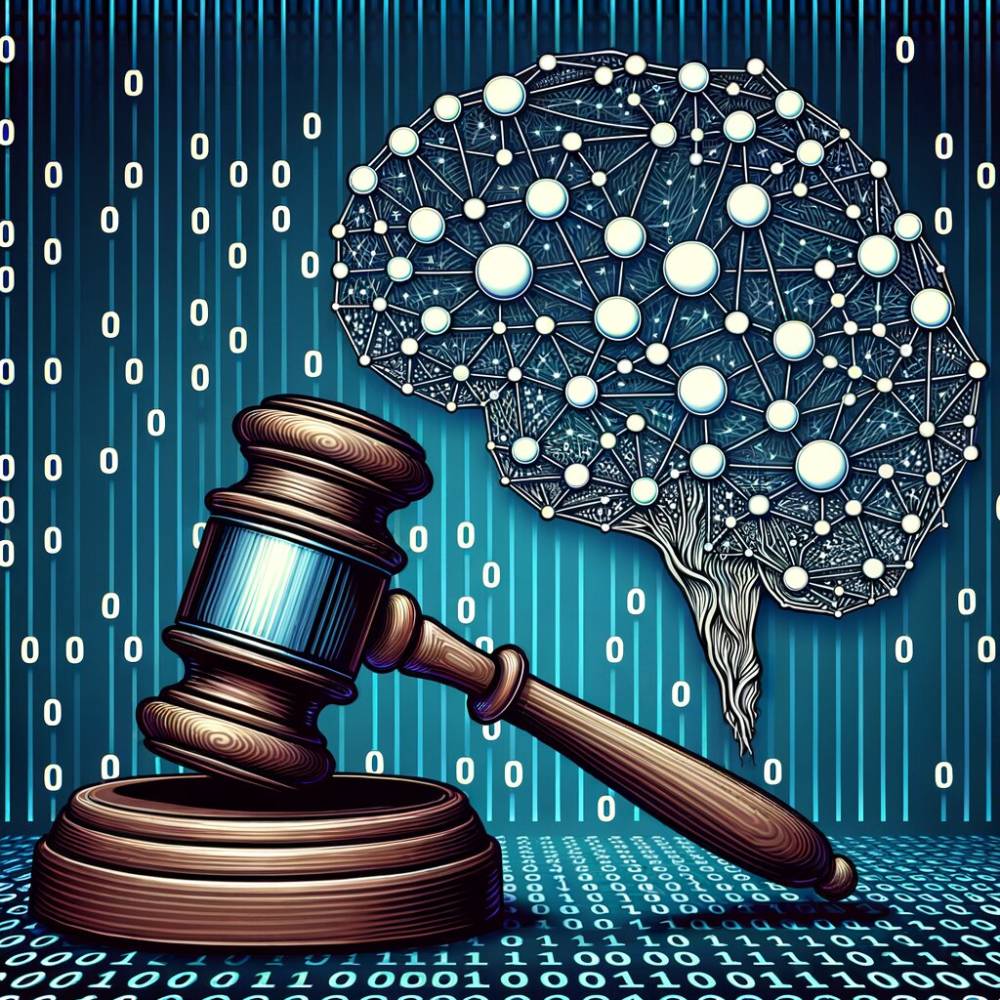
- Công ty OpenAI đã thừa nhận với Quốc hội Anh rằng các mô hình AI hàng đầu không thể tồn tại mà không có quyền truy cập không giới hạn vào sách và bài báo có bản quyền.
- Các công ty AI lớn như Meta và Bloomberg đã sử dụng thư viện sách lậu để huấn luyện sản phẩm AI tạo sinh, dựa trên lập luận rằng hành động này là "sử dụng hợp lý" và không phải bồi thường cho tác giả hoặc nhà xuất bản.
- Hai vụ kiện từ Universal Music Group và The New York Times đã tận dụng khả năng "ghi nhớ" của mô hình ngôn ngữ lớn để tái tạo văn bản có bản quyền, làm suy yếu lập luận về việc sử dụng hợp lý.
- Nếu phải bồi thường cho hàng triệu tác giả, công nghệ AI tạo sinh có thể bị "giết chết hoặc hạn chế đáng kể", theo một báo cáo từ công ty vốn đầu tư Andreessen Horowitz.
- Dù một quá trình xây dựng lại có trách nhiệm có thể cải thiện định vị công nghệ AI tạo sinh, việc tìm ra ranh giới giữa việc ghi nhớ hữu ích và ghi nhớ gây hại là khó khăn.
- OpenAI đã mô tả vấn đề ghi nhớ là "lỗi hiếm" và đang nỗ lực giảm nó xuống mức không đáng kể, mặc dù nghiên cứu cho thấy mọi mô hình ngôn ngữ lớn đều có khả năng ghi nhớ.
📌 Trong bối cảnh pháp lý hiện tại, OpenAI và các công ty AI khác đang đối mặt với thách thức lớn đối với mô hình kinh doanh dựa trên AI tạo sinh, với các vụ kiện từ Universal Music Group và The New York Times làm nổi bật vấn đề "ghi nhớ" của công nghệ này. Với việc mô hình ngôn ngữ lớn có khả năng tái tạo văn bản có bản quyền, lập luận về việc sử dụng hợp lý đang bị thử thách, đặt ra nguy cơ phải bồi thường cho hàng triệu tác giả. Điều này có thể dẫn đến việc phải tái huấn luyện các mô hình từ nguồn mở hoặc nguồn có giấy phép đúng đắn, với chi phí không nhỏ và khả năng ảnh hưởng đến chất lượng của AI. Đây là một thời điểm quan trọng đối với ngành công nghiệp AI tạo sinh, có giá trị hàng chục tỷ đô la, khi nó cần tìm cách giải quyết các vấn đề pháp lý để tiếp tục phát triển mà không vi phạm quyền sở hữu trí tuệ.
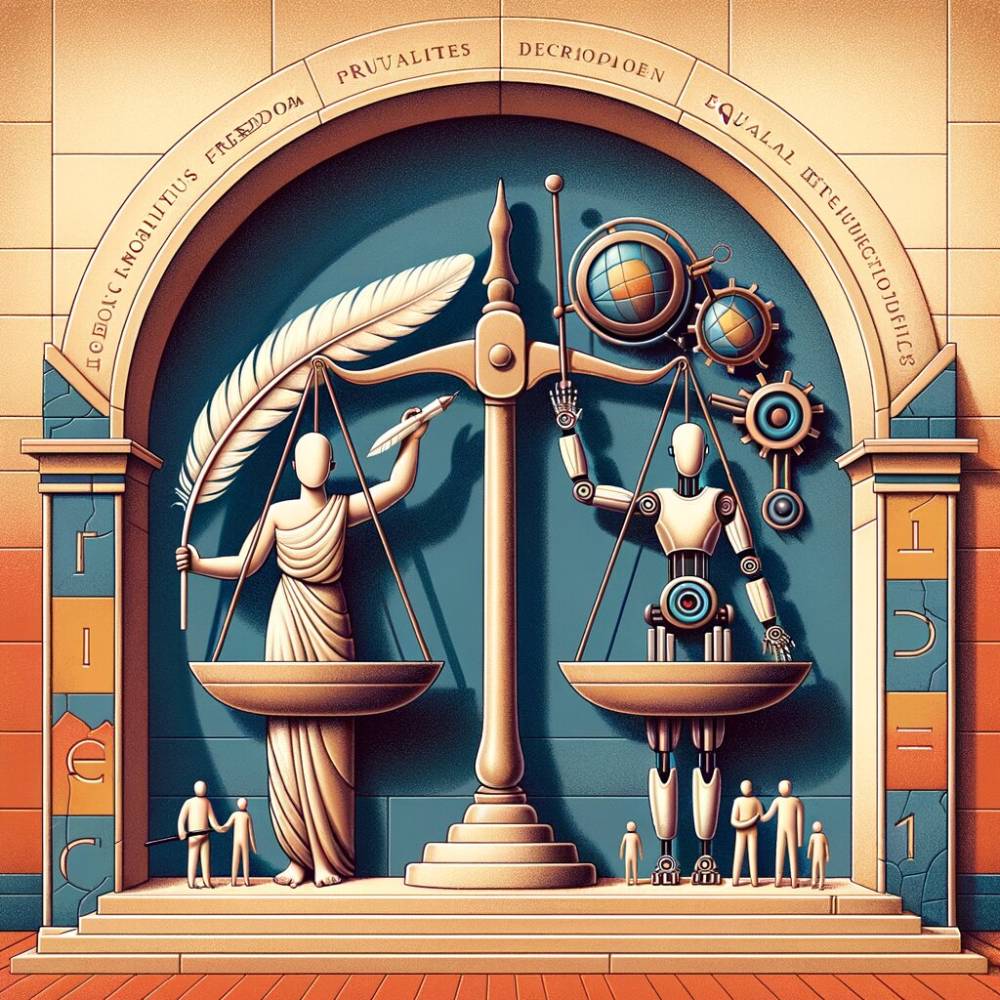
- Bài viết trên Nieman Journalism Lab đề cập đến quyền của trí tuệ nhân tạo (AI) và nhà báo: quyền đọc, học hỏi, sử dụng thông tin.
- Jeff Jarvis phân tích lịch sử báo chí và bản quyền, từ Đạo luật Bản quyền năm 1790 đến việc báo chí đối đầu với radio, TV, internet, và giờ là AI.
- Ông nhấn mạnh cần phân biệt giữa việc sử dụng AI và lạm dụng nó. AI có khả năng dịch, tóm tắt văn bản, phân tích dữ liệu lớn, nhưng không nên dựa vào AI trong việc đưa ra thông tin chính xác.
- Ông đề xuất hợp tác giữa báo chí và AI, nhưng cảnh báo về nguy cơ tách biệt internet thành "pháo đài riêng tư".
- Jarvis kêu gọi cần thiết phải thảo luận về trách nhiệm đạo đức của báo chí với xã hội thông tin và quyền học hỏi.
- Bài viết cũng đề cập đến các rủi ro và cơ hội từ AI, và việc cần hỗ trợ đổi mới, mở cửa nguồn code và dữ liệu.
📌 Bài viết trên Nieman Journalism Lab của Jeff Jarvis đưa ra cái nhìn sâu sắc về quyền chung giữa AI và báo chí: quyền đọc, học hỏi và sử dụng thông tin. Qua phân tích lịch sử và hiện tại của báo chí, Jarvis nhấn mạnh tầm quan trọng của việc đối xử công bằng và hợp tác giữa hai lĩnh vực này. Ông cho rằng, để thông tin chính xác và dân chủ được bảo vệ, cần có sự cân nhắc giữa việc tận dụng cơ hội từ AI và tránh những rủi ro, đồng thời cần xem xét lại vấn đề bản quyền và trách nhiệm đạo đức trong kỷ nguyên số.
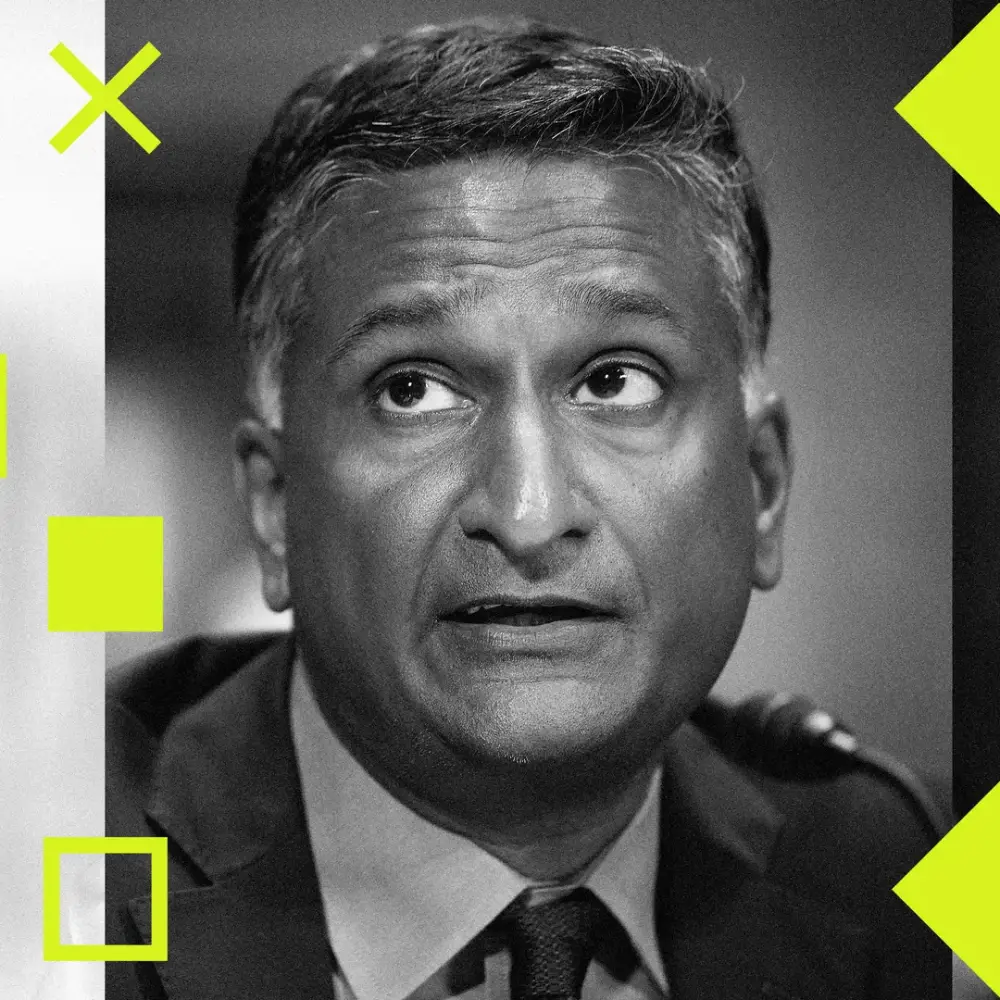
- Adobe, một công ty nổi tiếng với các phần mềm sáng tạo như Photoshop và Illustrator, đang đối mặt với những thách thức lớn trong lĩnh vực pháp lý và AI tạo sinh.
- Dana Rao, giám đốc pháp lý và đại diện tin cậy của Adobe, chia sẻ về vấn đề bản quyền liên quan đến AI tạo sinh và thách thức từ việc mua lại Figma, một công ty thiết kế nổi lên, bị ngăn chặn do lo ngại về độc quyền tại Liên minh Châu Âu.
- Adobe đang tích cực đầu tư vào công cụ AI tạo sinh, như Firefly, và đồng thời xem xét kỹ lưỡng về mối quan hệ giữa AI và bản quyền.
- Rao nhấn mạnh sự cần thiết của việc xác định rõ ràng dữ liệu đào tạo cho AI và hành vi được phép với sản phẩm AI.
- Adobe đang xem xét về việc bảo vệ phong cách nghệ sĩ và đề xuất một dự luật chống giả mạo tại Quốc hội.
- Sự kiện Adobe và Figma hủy bỏ thương vụ mua lại là một điểm quan trọng, phản ánh sự quan tâm lớn hơn về vấn đề độc quyền trong ngành công nghiệp công nghệ.
- Adobe cũng quan tâm đến việc sử dụng AI để lừa đảo, đặc biệt trong môi trường chính trị hiện tại, và tham gia vào cuộc tranh luận với Sáng kiến Tính xác thực của Nội dung.
- Dana Rao chia sẻ về cách quản lý sự cân bằng giữa việc đổi mới và tuân thủ pháp luật, cũng như cách tiếp cận của Adobe trong việc phát triển công nghệ AI một cách có trách nhiệm.
📌 Adobe, trong cuộc phỏng vấn với Dana Rao, giám đốc pháp lý và đại diện tin cậy, đã đề cập đến những thách thức và cơ hội liên quan đến AI tạo sinh và bản quyền trong ngành công nghệ. Vấn đề bản quyền với AI tạo sinh đang phát triển nhanh chóng và gây ra nhiều câu hỏi pháp lý chưa có lời giải. Điểm nổi bật là việc Adobe đầu tư vào công cụ AI tạo sinh Firefly, đồng thời xem xét cẩn trọng mối quan hệ giữa AI và bản quyền. Sự kiện Adobe và Figma hủy bỏ thương vụ mua lại cũng phản ánh lo ngại về độc quyền và sự quản lý của cơ quan chức năng. Adobe đang xem xét các biện pháp bảo vệ phong cách nghệ sĩ và đã đề xuất dự luật chống giả mạo tại Quốc hội. Sự tham gia của Adobe trong cuộc tranh luận về AI sử dụng để lừa đảo, đặc biệt qua Sáng kiến Tính xác thực của Nội dung, cũng là một điểm quan trọng. Rao chia sẻ về việc quản lý sự cân bằng giữa đổi mới và tuân thủ pháp luật, cũng như cách tiếp cận của Adobe trong việc phát triển công nghệ AI một cách có trách nhiệm.

- OpenAI từ chối cáo buộc của The New York Times về việc sử dụng nội dung không được phép trong việc đào tạo mô hình AI, khẳng định hành động của họ nằm trong phạm vi sử dụng công bằng.
- The New York Times được cho là đã cố tình chỉ đạo mô hình AI của OpenAI để tái tạo thông tin từ các bài báo cũ mà không có sự cho phép.
- OpenAI bày tỏ sự ngạc nhiên và thất vọng khi phát hiện ra vụ kiện thông qua chính The New York Times mà không được thông báo trước.
- OpenAI đã yêu cầu The New York Times cung cấp các ví dụ cụ thể về việc tái tạo nội dung nhưng không nhận được sự hợp tác.
- OpenAI nhấn mạnh nguyên tắc sử dụng công bằng và đã có những thỏa thuận cấp phép với các bên liên quan.
- OpenAI cung cấp tùy chọn không tham gia cho bất kỳ cá nhân hoặc tổ chức nào không muốn dữ liệu của họ được sử dụng để đào tạo mô hình AI.
- Ngoài The New York Times, OpenAI và Microsoft cũng đối mặt với các vụ kiện tương tự từ các tác giả khác về việc sử dụng dữ liệu không được phép.
📌 OpenAI mạnh mẽ bác bỏ cáo buộc của The New York Times, cho rằng tờ báo đã thao túng các dấu nhắc để mô hình AI sản xuất lại thông tin từ các bài viết cũ. OpenAI nhấn mạnh việc sử dụng dữ liệu công cộng trên internet để đào tạo mô hình AI là hợp pháp theo nguyên tắc sử dụng công bằng và đã có các biện pháp phản hồi nhanh chóng trước các vấn đề liên quan đến việc tái tạo nội dung. Hơn nữa, việc cung cấp lựa chọn không tham gia sử dụng dữ liệu cho thấy OpenAI tôn trọng quyền lựa chọn của người sáng tạo nội dung. Đối diện với nhiều vụ kiện, OpenAI vẫn duy trì quan điểm rằng hành động của họ tuân thủ luật pháp và đóng góp vào sự cạnh tranh của nước Mỹ trong lĩnh vực công nghệ.
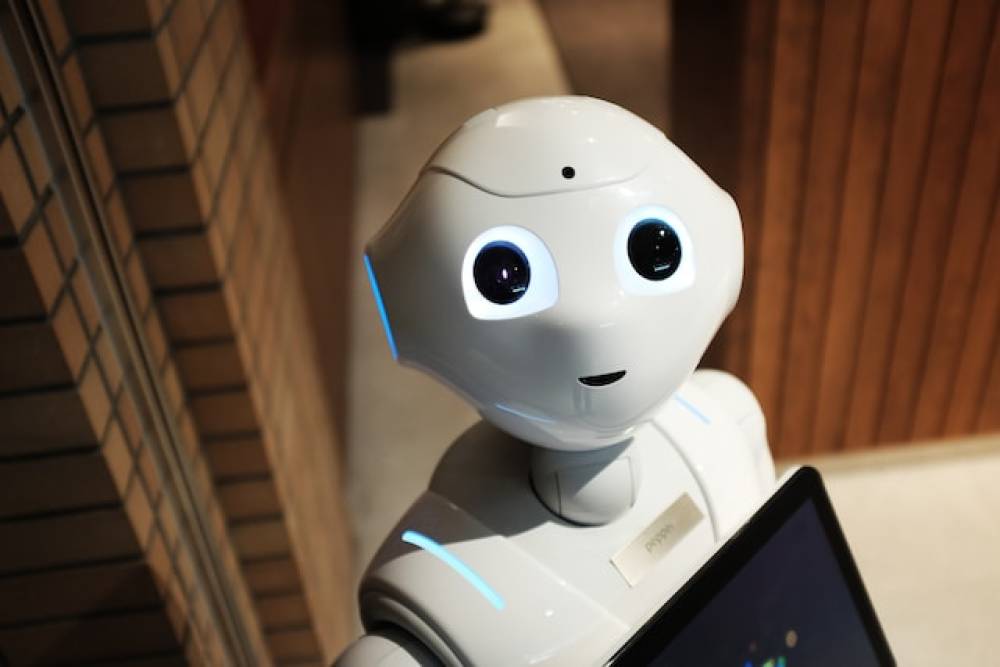
- OpenAI đang đề xuất đầu tư từ 1 triệu đến 5 triệu đô la Mỹ để ký kết hợp đồng với các công ty xuất bản tin tức, nhằm sử dụng nội dung của họ trong việc huấn luyện các mô hình ngôn ngữ lớn.
- Mặc dù số tiền này có vẻ nhỏ so với sự phát triển nhanh chóng của ChatGPT, nhưng điều này có thể phụ thuộc vào điều khoản của những thỏa thuận đó.
- Thông tin này được đăng tải trên trang web The Information, dựa vào thông tin từ hai giám đốc điều hành quen thuộc với vấn đề này. Hiện OpenAI đang thương lượng với khoảng một tá công ty truyền thông.
- Vào tháng 12, OpenAI thông báo đã hợp tác với Axel Springer, một tập đoàn truyền thông đa quốc gia Đức, chủ sở hữu các thương hiệu như Business Insider và Politico. Các điều khoản tài chính của thỏa thuận không được công bố, nhưng theo hai giám đốc điều hành, nó nằm trong khoảng hàng chục triệu đô la.
- Trong khi đó, Apple Inc. cũng đang phát triển AI tạo sinh và đã ký kết hợp đồng với các nhà xuất bản như Condé Nast (sở hữu Vogue và The New Yorker) cũng như NBC News và IAC, với giá trị ước tính khoảng 50 triệu đô la.
- Các công ty như The New York Times, CNN, Reuters và Vox Media đã chặn truy cập của crawler GPT của OpenAI đến dữ liệu của họ. Vào tháng 12, The New York Times kiện OpenAI và Microsoft Corp. về việc sử dụng trái phép tài liệu có bản quyền của họ để huấn luyện mô hình AI.
- Reddit Inc. cũng đã ngăn chặn việc sử dụng nội dung của mình để huấn luyện AI tạo sinh, và nhiều tác giả nổi tiếng cũng đã khởi kiện các công ty tương tự.
📌 Việc OpenAI đề xuất đầu tư từ 1 đến 5 triệu đô la cho các thỏa thuận với các công ty truyền thông, so với khoản đầu tư lên đến 50 triệu đô la của Apple Inc., cho thấy một cuộc chạy đua sôi nổi trong lĩnh vực AI tạo sinh. Mặc dù các số tiền này có vẻ khiêm tốn so với tiềm năng to lớn của AI, chúng phản ánh xu hướng hiện nay: việc tiếp cận nguồn dữ liệu chất lượng và hợp pháp là cực kỳ quan trọng. Những kiện tụng từ The New York Times và các rắc rối pháp lý khác càng làm tăng chi phí và độ phức tạp trong việc huấn luyện AI. Điều này có thể sẽ làm thay đổi cách thức các công ty công nghệ đánh giá giá trị và chi phí cho việc huấn luyện mô hình ngôn ngữ lớn, đồng thời mở ra hướng đi mới trong việc hợp tác và sử dụng nguồn dữ liệu có bản quyền.

- The New York Times (NYT) đã khởi kiện Microsoft và OpenAI, cáo buộc rằng các công cụ sinh nội dung AI của họ, ChatGPT và Copilot, vi phạm bản quyền của tờ báo.
- NYT tuyên bố rằng ChatGPT và Copilot được huấn luyện trên một bộ dữ liệu bao gồm các bài viết có bản quyền của NYT, điều này vi phạm quyền sở hữu trí tuệ.
- Hậu quả của vụ kiện có thể ảnh hưởng đến ngành truyền thông và công nghệ, có thể thay đổi cách hoạt động của AI tạo sinh và ảnh hưởng đến việc sản xuất, tiêu thụ và kiếm tiền từ tin tức.
- NYT lập luận rằng Microsoft và OpenAI đã "ăn cắp" công sức báo chí của họ, tạo ra sản phẩm thay thế cho NYT và đánh cắp khán giả.
- Nếu tòa án phán quyết ủng hộ NYT, điều này có thể tạo tiền lệ buộc các công ty công nghệ phải trả tiền để sử dụng nội dung tin tức có bản quyền trong việc huấn luyện mô hình AI của họ.
- Ngược lại, nếu phán quyết ủng hộ Microsoft và OpenAI, điều này có thể mở cửa cho việc sử dụng AI trong sản xuất tin tức rộng rãi hơn, có thể dẫn đến sự phát triển mạnh mẽ của nội dung do AI tạo ra mà không cần ghi công hoặc kiểm soát chất lượng.
📌 Vụ kiện của The New York Times đặt ra một tình huống mẫu mực cho ngành công nghệ và báo chí, nơi quyền sở hữu trí tuệ đụng độ với sự phát triển của AI tạo sinh. Với cáo buộc vi phạm bản quyền bài viết để huấn luyện ChatGPT và Copilot, kết quả của vụ kiện này sẽ ảnh hưởng lớn đến cách thức sáng tạo và phân phối nội dung tin tức, đồng thời có thể điều chỉnh quy định về bản quyền nội dung kỹ thuật số và góp phần định hình tương lai của các mô hình AI tạo sinh.

- Website Exceljet, một trung tâm thông tin về Microsoft Excel, đã trở thành nạn nhân của một kế hoạch mới trên Internet: "vụ cướp SEO".
- Chủ sở hữu David Bruns bắt đầu nhận thấy lượng truy cập giảm từ năm ngoái và phát hiện ra rằng ai đó đã sử dụng AI để sao chép gần như toàn bộ các bài viết trên trang web của mình, tạo ra các bản sao kém chất lượng và thường xuyên có lỗi, chỉ nhằm mục đích thu hút các công cụ tìm kiếm, chiếm dụng lưu lượng truy cập của Exceljet.
- "Điều này thật sai trái khi kiếm tiền từ những bài viết được máy viết mà không có người nào kiểm duyệt," Bruns chia sẻ với Business Insider.
SEOcean's Eleven
- SEO, hay Tối ưu hóa công cụ tìm kiếm, mô tả các mẹo và chiến lược để giúp website xếp hạng cao hơn trong kết quả tìm kiếm, dẫn đến nhiều lượt click hơn.
- Việc sử dụng AI tạo sinh để tạo ra số lượng lớn bài viết kém chất lượng với các từ khóa SEO quan trọng đã làm trầm trọng thêm vấn đề này.
📌 Trong sự việc này, vấn đề không chỉ nằm ở việc sử dụng công nghệ AI mà còn ở trách nhiệm của các công cụ tìm kiếm như Google trong việc lọc thông tin chính xác và hợp pháp. Sự việc còn nêu bật về đạo đức trong sử dụng AI và cách các công ty công nghệ phản ứng với những thách thức mới nảy sinh từ việc áp dụng AI trong thế giới thực.

- Một nhóm gồm 11 tác giả nổi tiếng, bao gồm các người đoạt giải Pulitzer như Taylor Branch, Stacy Schiff, và Kai Bird, đã khởi kiện OpenAI và Microsoft tại tòa án liên bang Manhattan vì vi phạm bản quyền.
- Các tác giả cáo buộc rằng tác phẩm phi hư cấu của họ đã được sử dụng mà không có sự cho phép để đào tạo các mô hình ngôn ngữ của OpenAI, bao gồm ChatGPT và phần mềm AI khác.
- Vụ kiện do nhà văn và biên tập viên của Hollywood Reporter, Julian Sancton, dẫn đầu, cáo buộc các bị cáo OpenAI và Microsoft đã thu lợi hàng tỷ đô la từ việc sử dụng không được phép các tác phẩm của các tác giả và yêu cầu bồi thường tiền tệ cùng lệnh cấm để ngăn chặn vi phạm tiếp theo.
📌 Trong bối cảnh pháp lý hiện tại, vụ kiện của các tác giả chống lại OpenAI và Microsoft không chỉ là một cuộc đối đầu pháp lý quan trọng mà còn nêu bật những câu hỏi về việc sử dụng đạo đức của tài sản trí tuệ trong việc phát triển trí tuệ nhân tạo. Vụ kiện này có thể tạo ra tiền lệ và thách thức đối với các công ty công nghệ trong việc đảm bảo nguồn dữ liệu đạo đức khi đào tạo mô hình AI.

- Helena World Chronicle, một nhà xuất bản ở Arkansas, đã khởi kiện Google và công ty mẹ Alphabet, cáo buộc hành vi chống cạnh tranh vi phạm luật chống độc quyền Sherman Act của Mỹ.
- Vụ kiện nhấn mạnh cách Google "hút" nội dung, độc giả và doanh thu quảng cáo từ các nhà xuất bản thông qua phương tiện không cạnh tranh, đặc biệt là qua công nghệ AI tạo sinh mới như Search Generative Experience (SGE) và chatbot Bard AI.
- Google sử dụng "Knowledge Graph", ra mắt vào tháng 5 năm 2012, để hiển thị thông tin ngắn gọn từ cơ sở dữ liệu nguồn mở và có bản quyền khi người dùng tìm kiếm, khiến cho nội dung của nhà xuất bản bị sử dụng mà không cần truy cập trực tiếp vào trang web của họ.
- Google còn bị cáo buộc đã phá hủy tin nhắn trò chuyện, một vấn đề được nêu ra trong vụ kiện của Epic Games chống lại Google liên quan đến app store.
- Nhà xuất bản đòi bồi thường và yêu cầu lệnh cấm Google sử dụng dữ liệu website của họ để đào tạo AI mà không có sự đồng ý, và cho phép những nhà xuất bản từ chối SGE vẫn xuất hiện trong kết quả tìm kiếm của Google.
- Vụ kiện diễn ra trong bối cảnh Google đạt thỏa thuận với chính phủ Canada, đồng ý trả 73,5 triệu đô la Canada hàng năm cho các tổ chức truyền thông.
Kết luận: Vụ kiện của Helena World Chronicle chống lại Google và Alphabet làm sáng tỏ những mối lo ngại về cách công nghệ AI tạo sinh có thể ảnh hưởng tiêu cực đến ngành xuất bản tin tức, với việc mất từ 20% đến 40% lưu lượng truy cập web khi các sản phẩm AI của Google được triển khai đầy đủ.
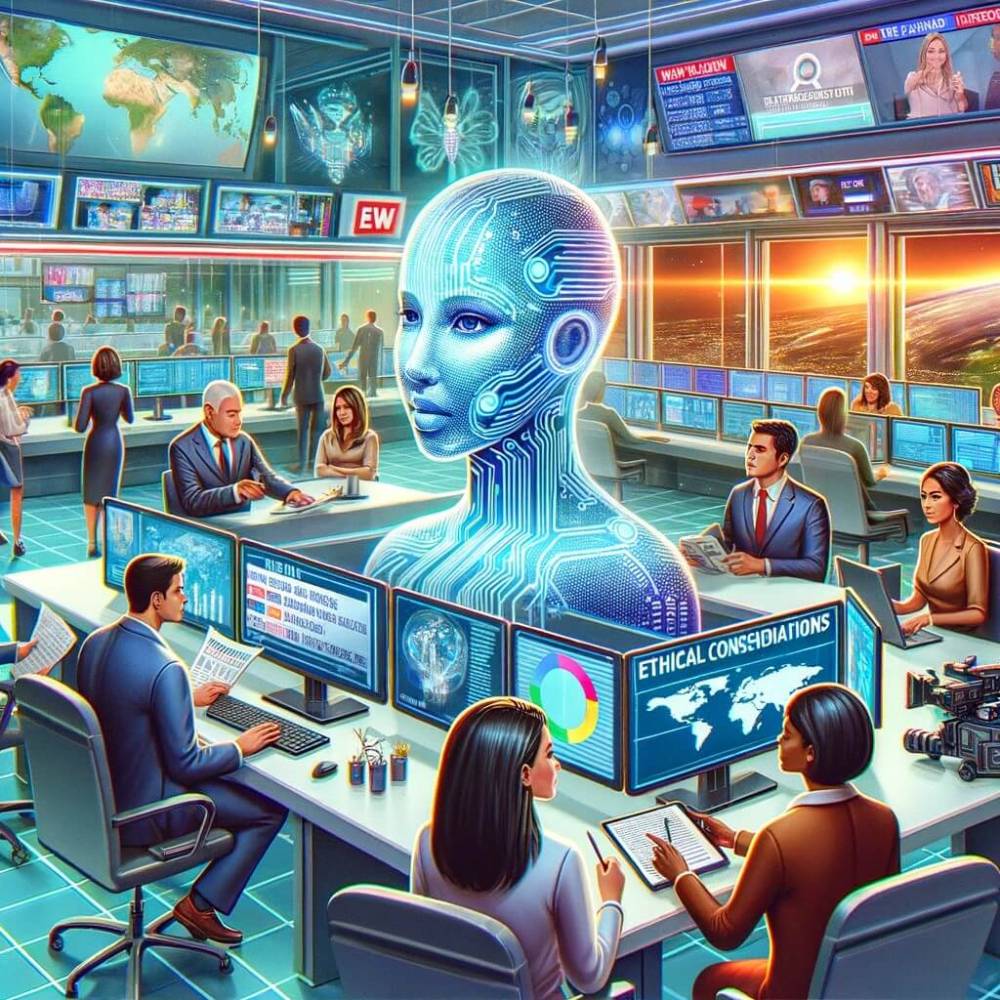
- AI tạo sinh đang thay đổi cách thức hoạt động của phòng tin tức, với khả năng đem lại quyền truy cập tin tức đa dạng hơn nhưng cũng đặt ra vấn đề về đạo đức nghề nghiệp và sự chính xác của thông tin.
- Ở Zimbabwe, CITE giới thiệu Alice, một phát thanh viên AI, đóng vai trò quan trọng trong mùa bầu cử.
- Tại Macedonia, Gostivarpress.mk sử dụng công nghệ chuyển văn bản thành giọng nói AI để hỗ trợ cộng đồng người mù.
- Accionar.io ở Mexico kết hợp ChatGPT-4 với dữ liệu tùy chỉnh để tối ưu hóa thiết kế chiến dịch vận động.
- Internews ở Zambia phát động dự án nghiên cứu về việc sử dụng AI trong phòng tin tức, nhấn mạnh vào việc tạo ra bộ dữ liệu có tính văn hóa phù hợp và đạo đức AI.
- Ở Philippines, sự hợp tác giữa các tổ chức truyền thông quốc gia và địa phương đã tạo ra một framework đạo đức AI.
- Brad Smith, Chủ tịch Microsoft, nhấn mạnh mọi công nghệ có thể là công cụ hoặc vũ khí, và việc quản lý có trách nhiệm là cần thiết.
Kết luận: Thách thức đạo đức AI trong phòng tin tức đang được giải quyết thông qua sự hợp tác và nghiên cứu trên khắp thế giới. Các sáng kiến từ Zimbabwe đến Philippines minh họa cho nỗ lực toàn cầu trong việc cân bằng giữa tiến bộ công nghệ và nguyên tắc đạo đức báo chí, với mục tiêu chung là phục vụ cộng đồng và duy trì sự chính xác của thông tin.
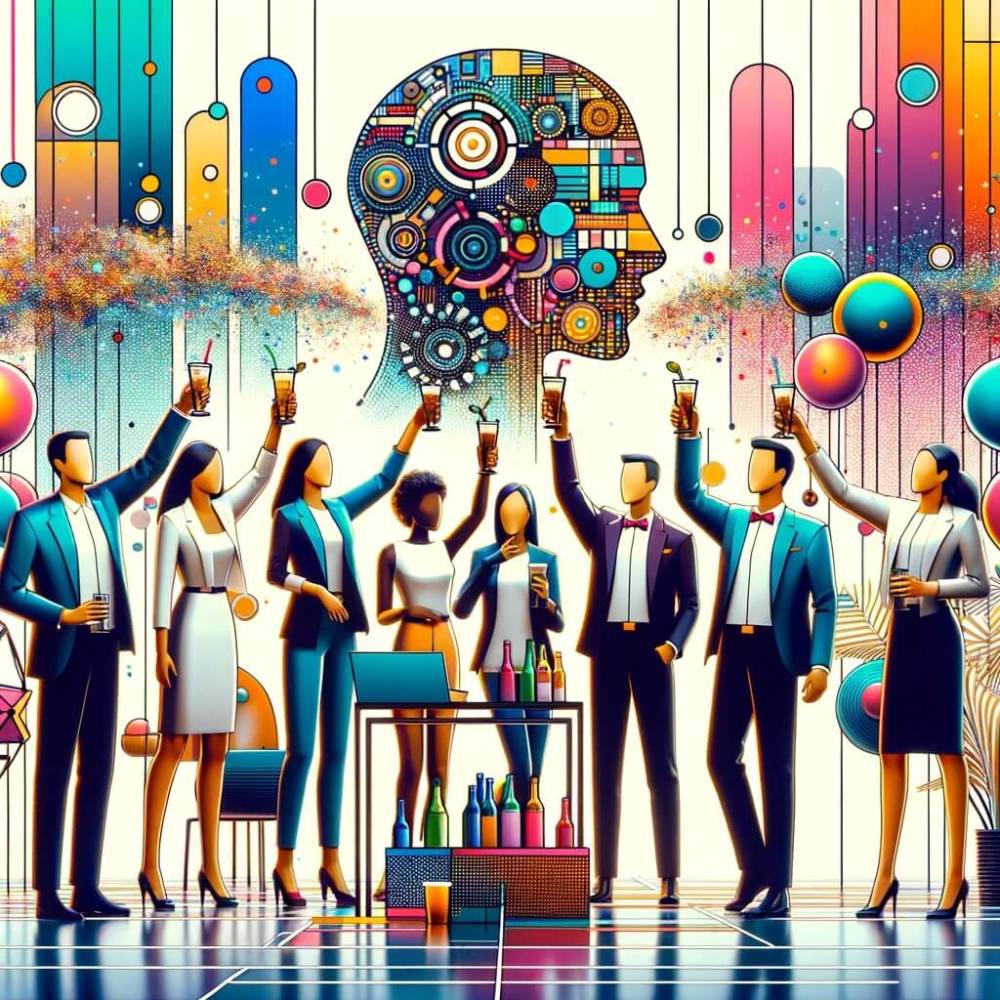
- Tổ chức News/Media Alliance hoan nghênh mối quan hệ đối tác AI toàn cầu giữa Axel Springer và OpenAI, nhằm củng cố nền báo chí độc lập.
- Tổ chức này, đại diện cho hơn 2.200 cơ quan truyền thông toàn cầu, nhấn mạnh việc thiết lập tiêu chuẩn thanh toán và cam kết hạn chế bản quyền có thủy vân.
- Axel Springer, tập đoàn truyền thông đa quốc gia Đức, nổi tiếng với các sản phẩm tin tức đa phương tiện, hợp tác với OpenAI để tận dụng sức mạnh của AI trong báo chí.
- Danielle Coffey, Chủ tịch & CEO của Alliance, khẳng định mục tiêu là tạo ra cơ sở vững chắc cho báo chí chất lượng trong kỷ nguyên AI.
- Quan hệ đối tác tập trung vào việc thúc đẩy sự đổi mới và công bằng, với ý thức về sự đa dạng cần thiết cho các nhà xuất bản trên toàn cầu.
Kết luận: Mối quan hệ đối tác AI toàn cầu giữa Axel Springer và OpenAI đã được News/Media Alliance, đại diện cho hơn 2.200 tổ chức truyền thông, ca ngợi là bước tiến quan trọng trong việc tăng cường báo chí độc lập. Sự hợp tác này không chỉ đánh dấu bước tiến trong việc định giá nội dung báo chí mà còn hứa hẹn mang lại sự cân bằng và công bằng cho ngành công nghiệp thông qua việc hạn chế bản quyền có thủy vân.
Follow Us
Tin phổ biến

